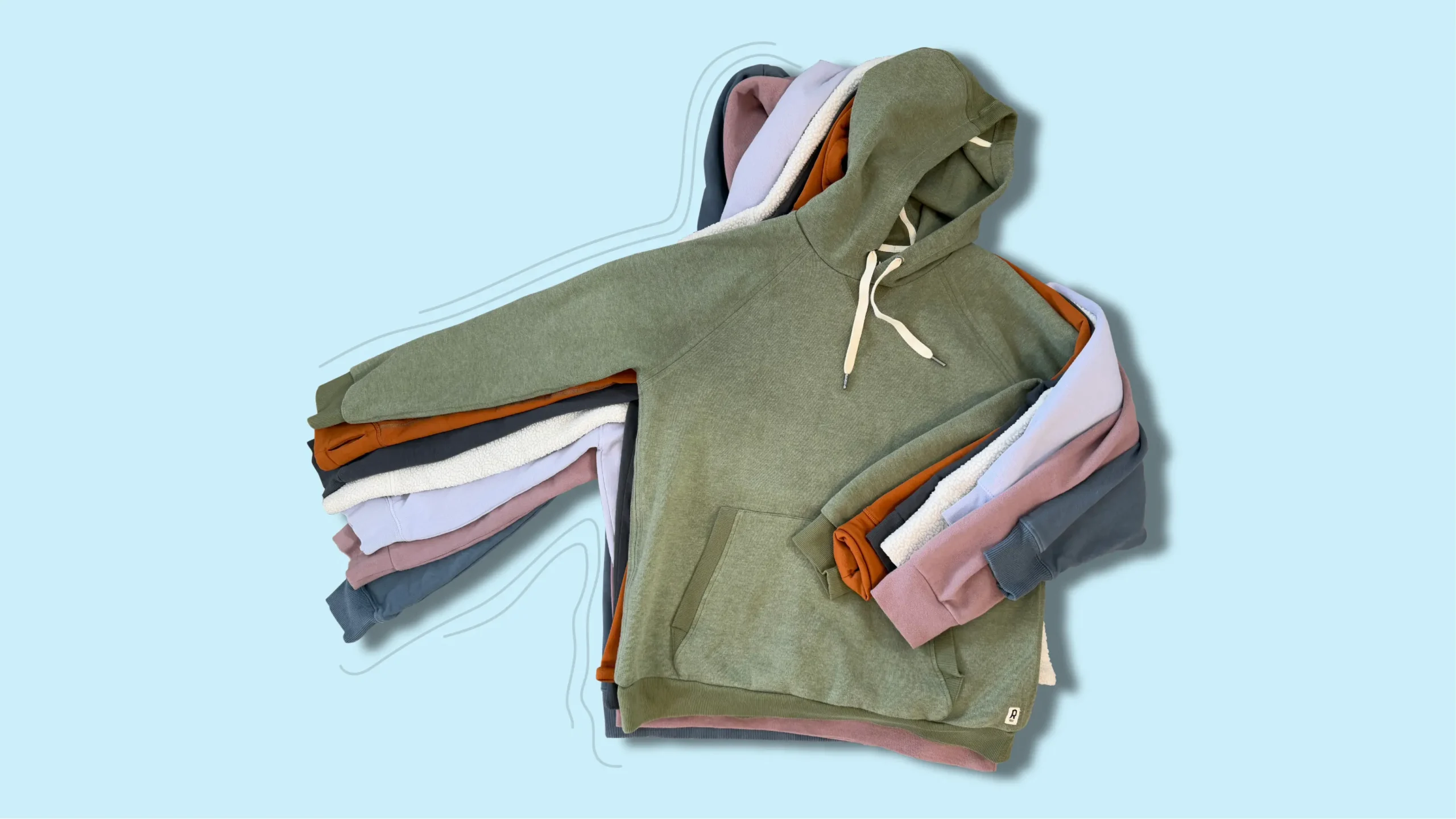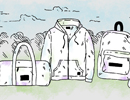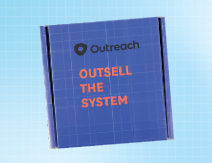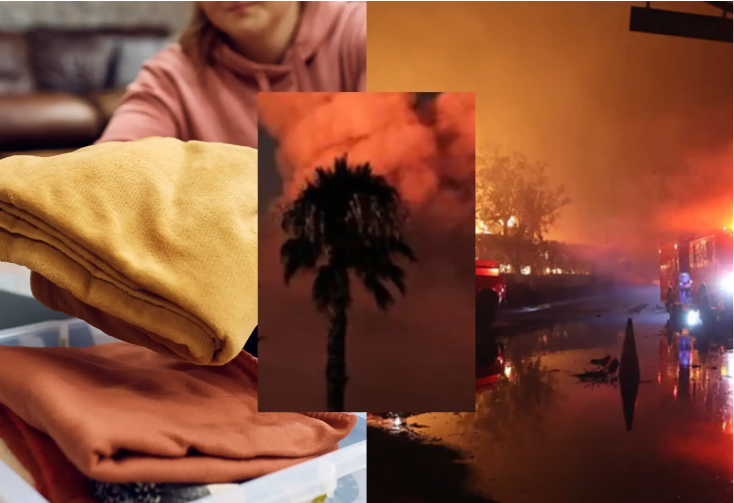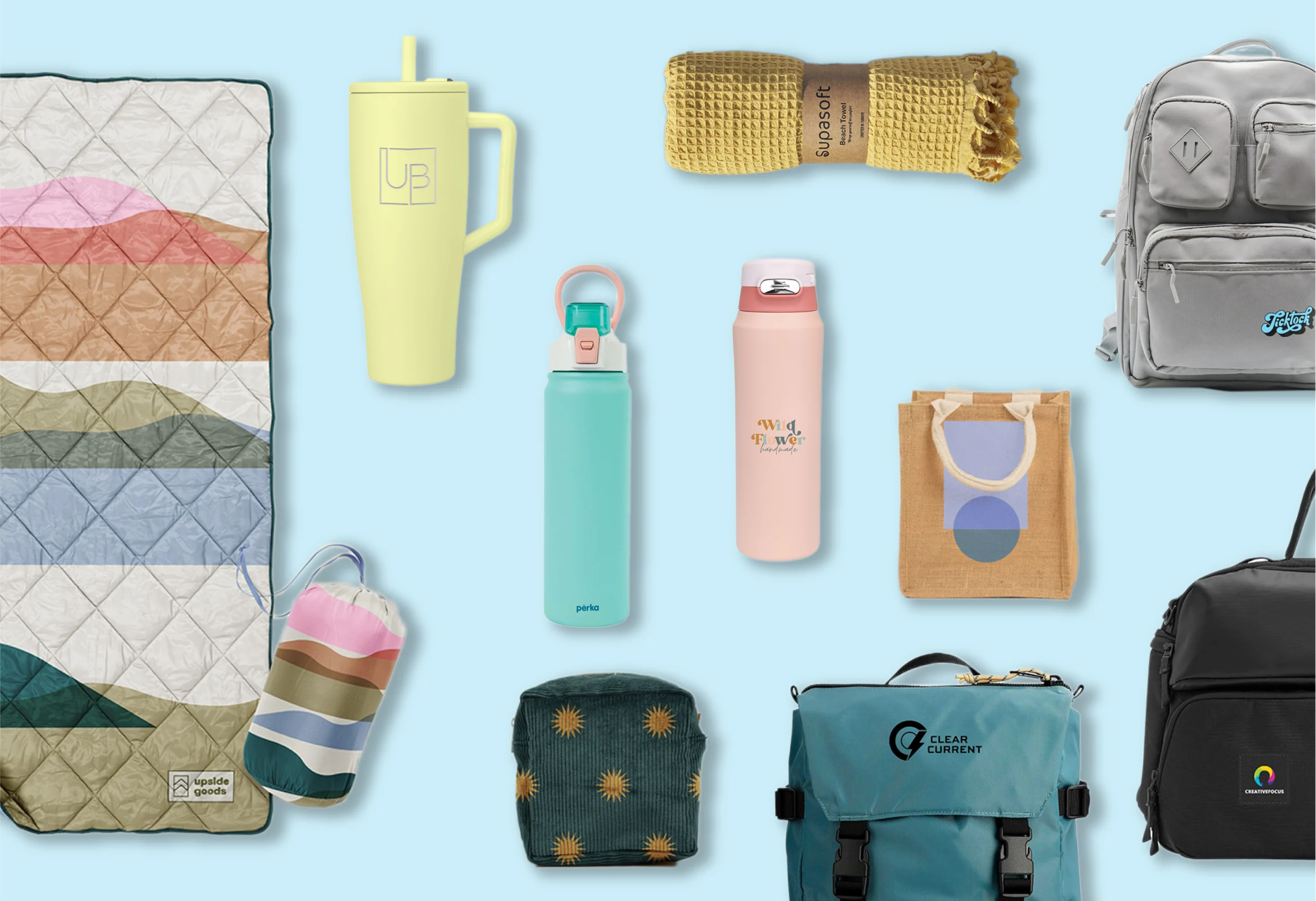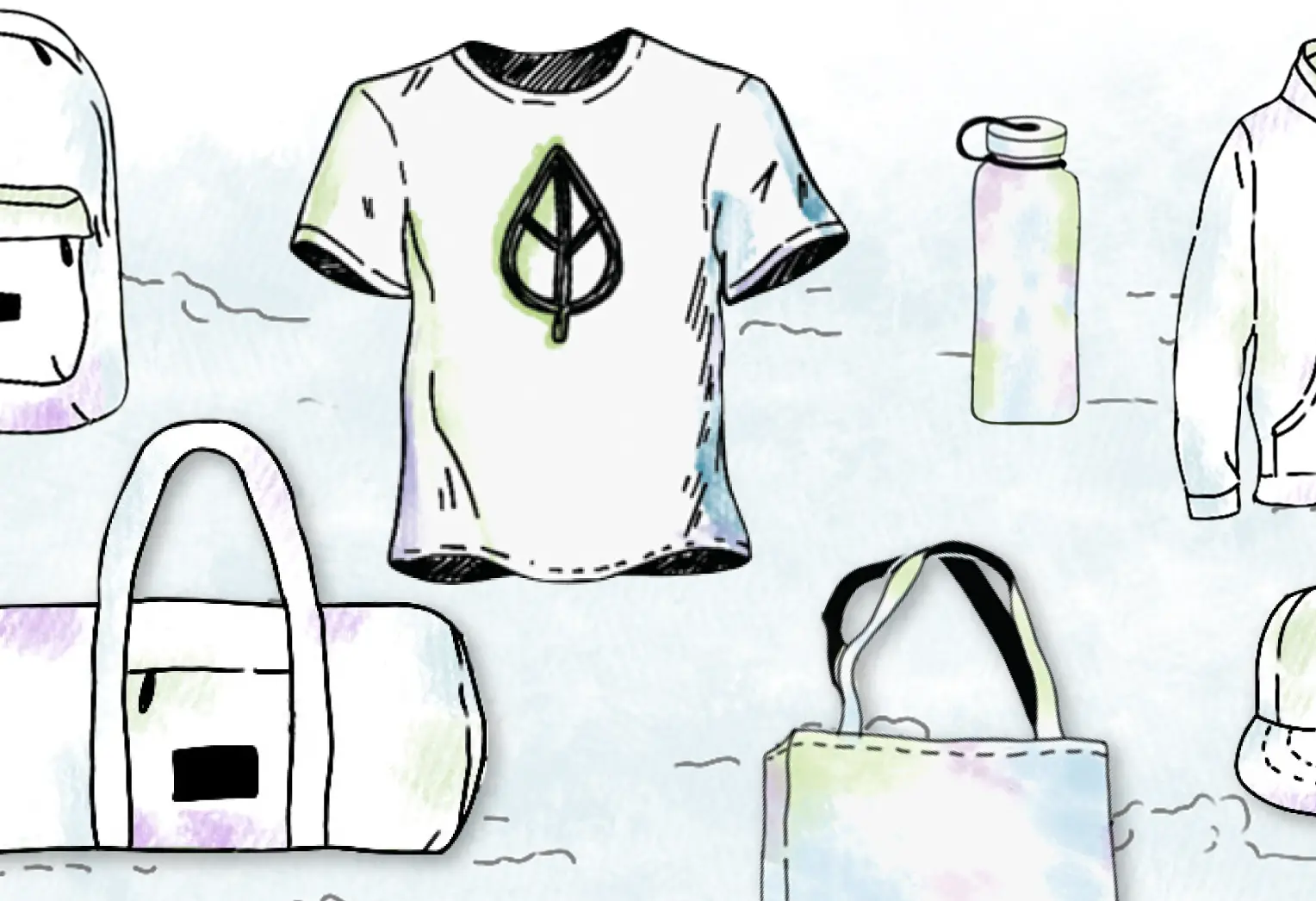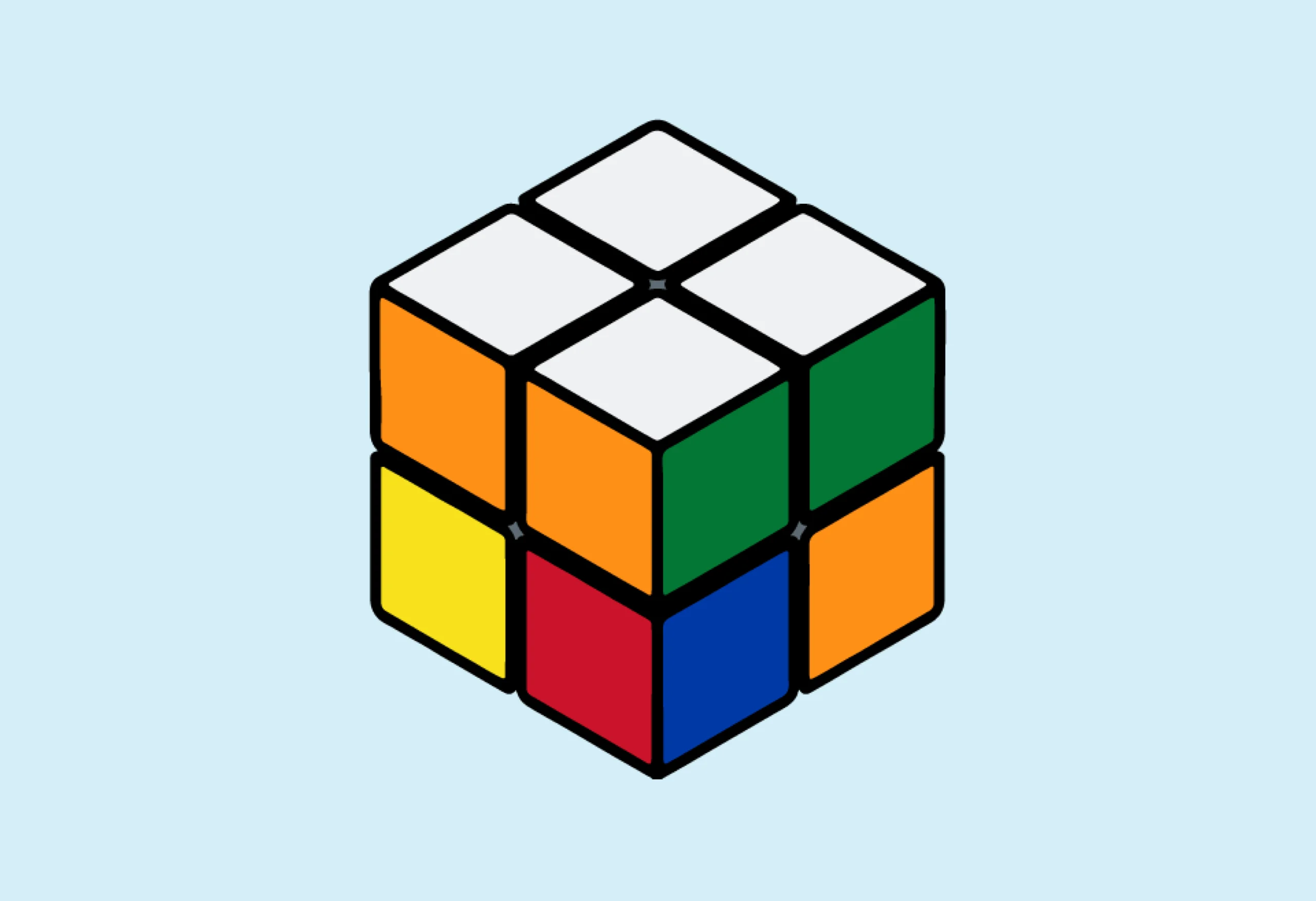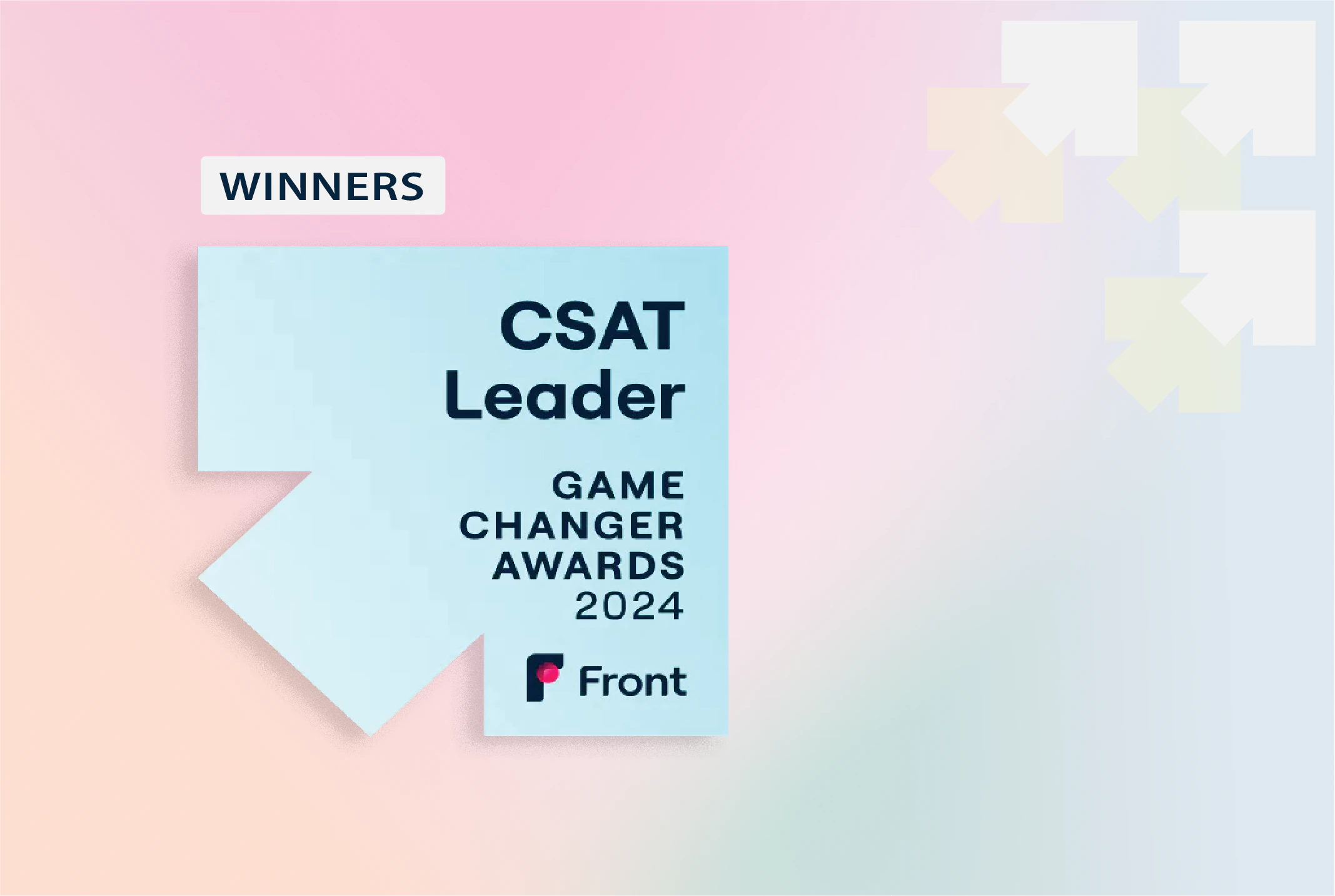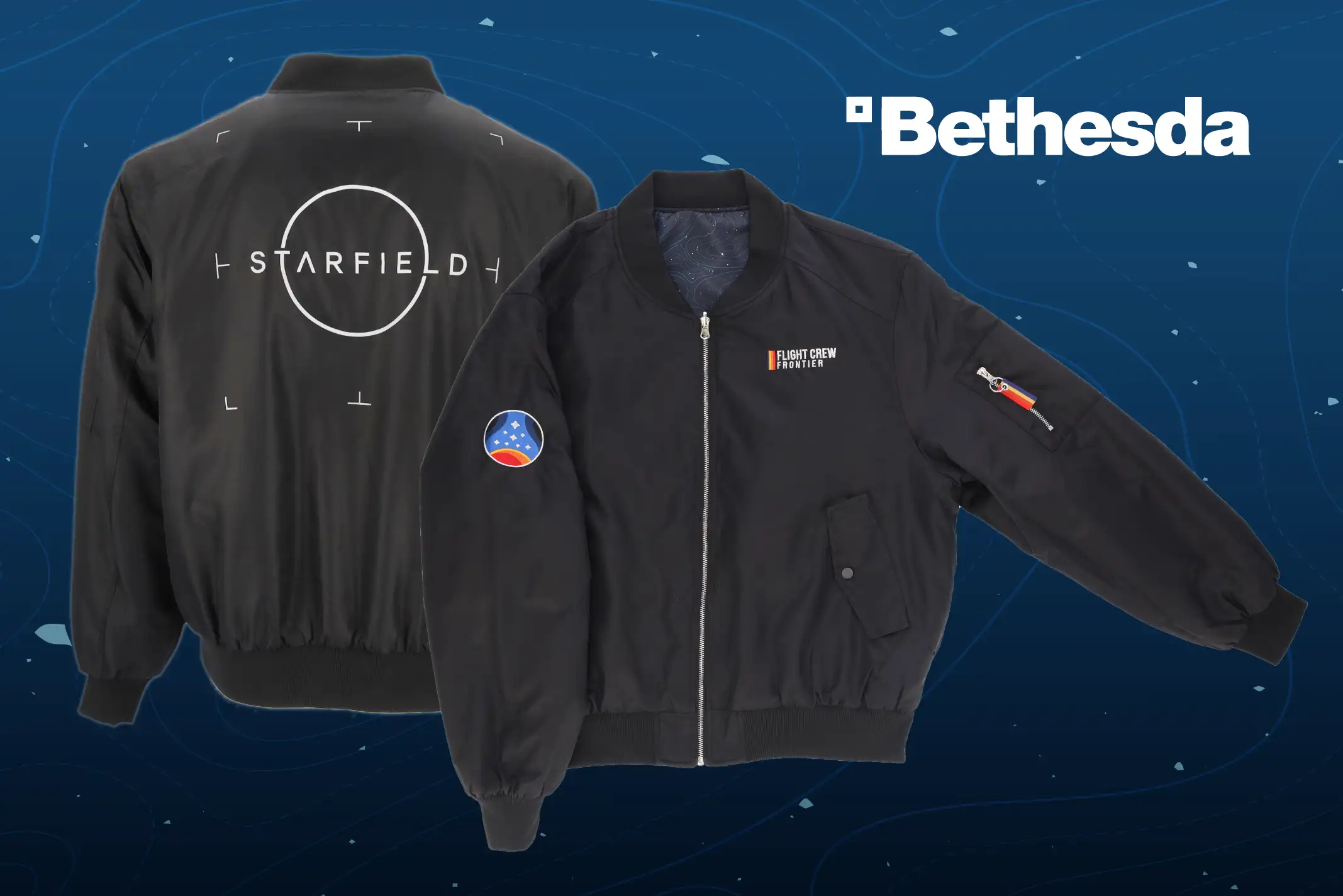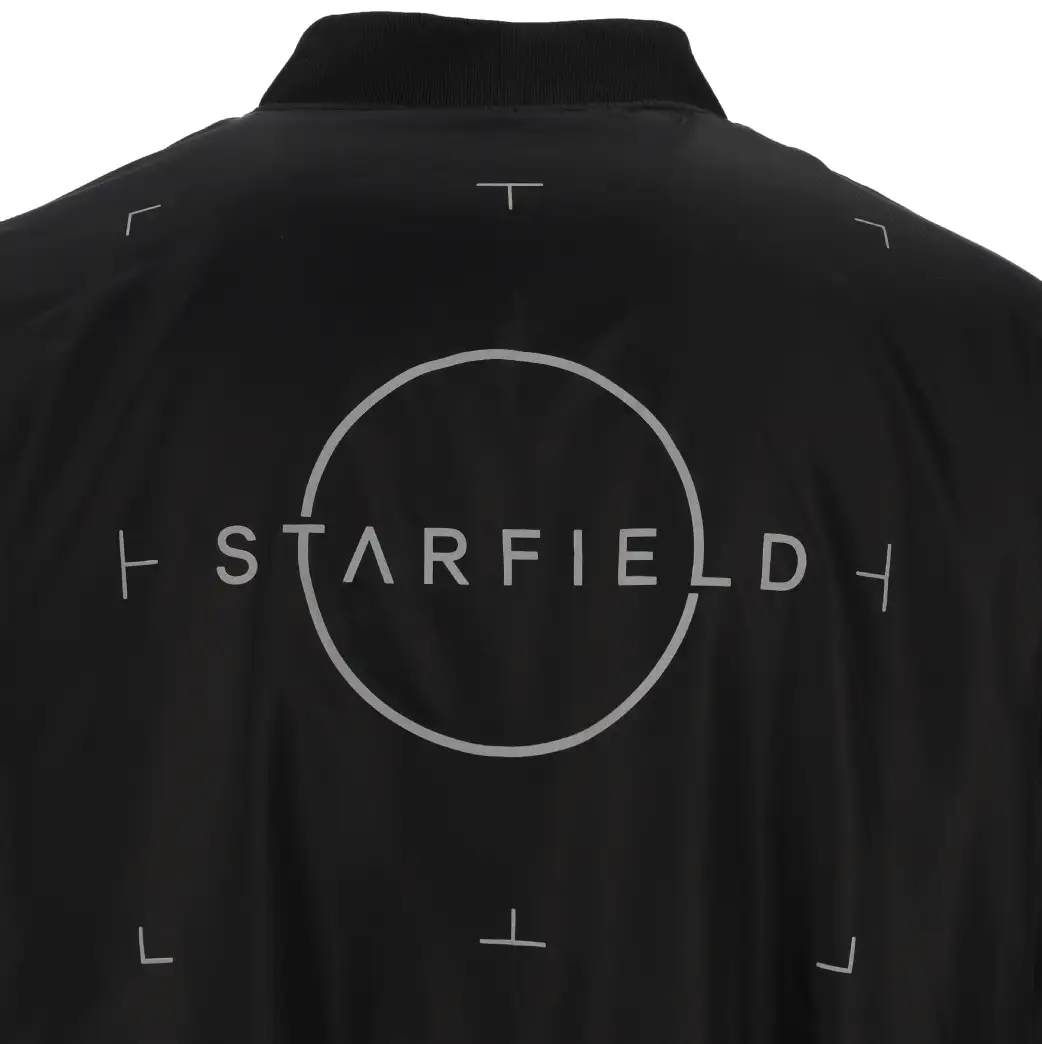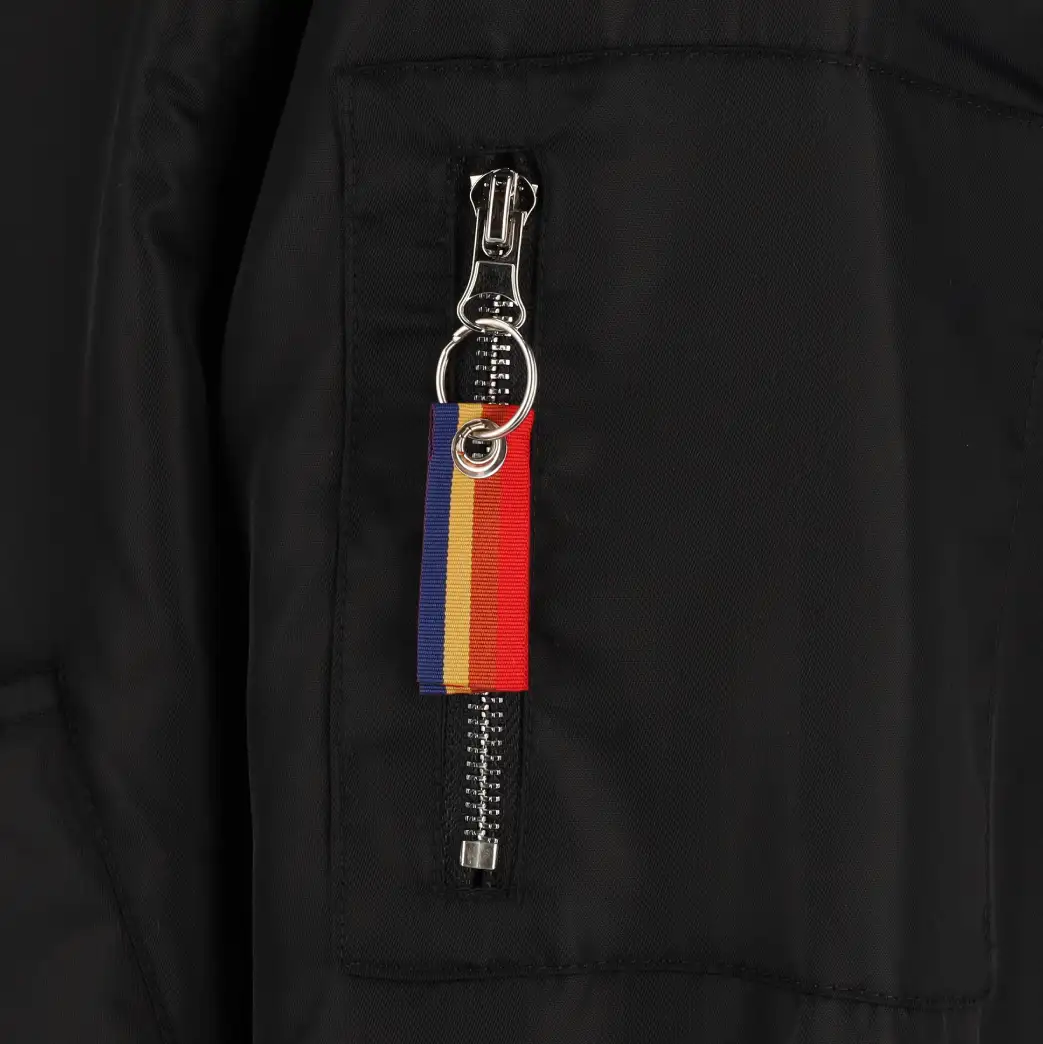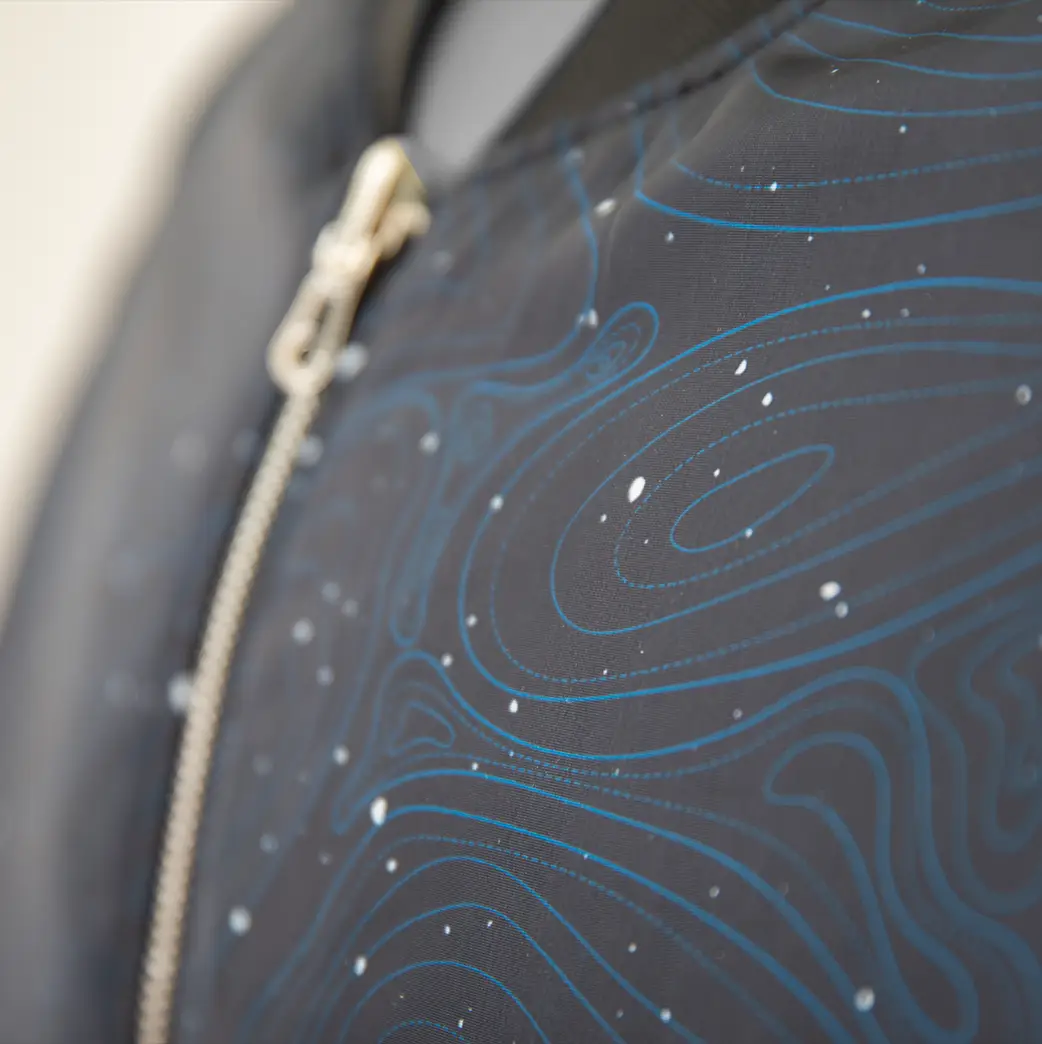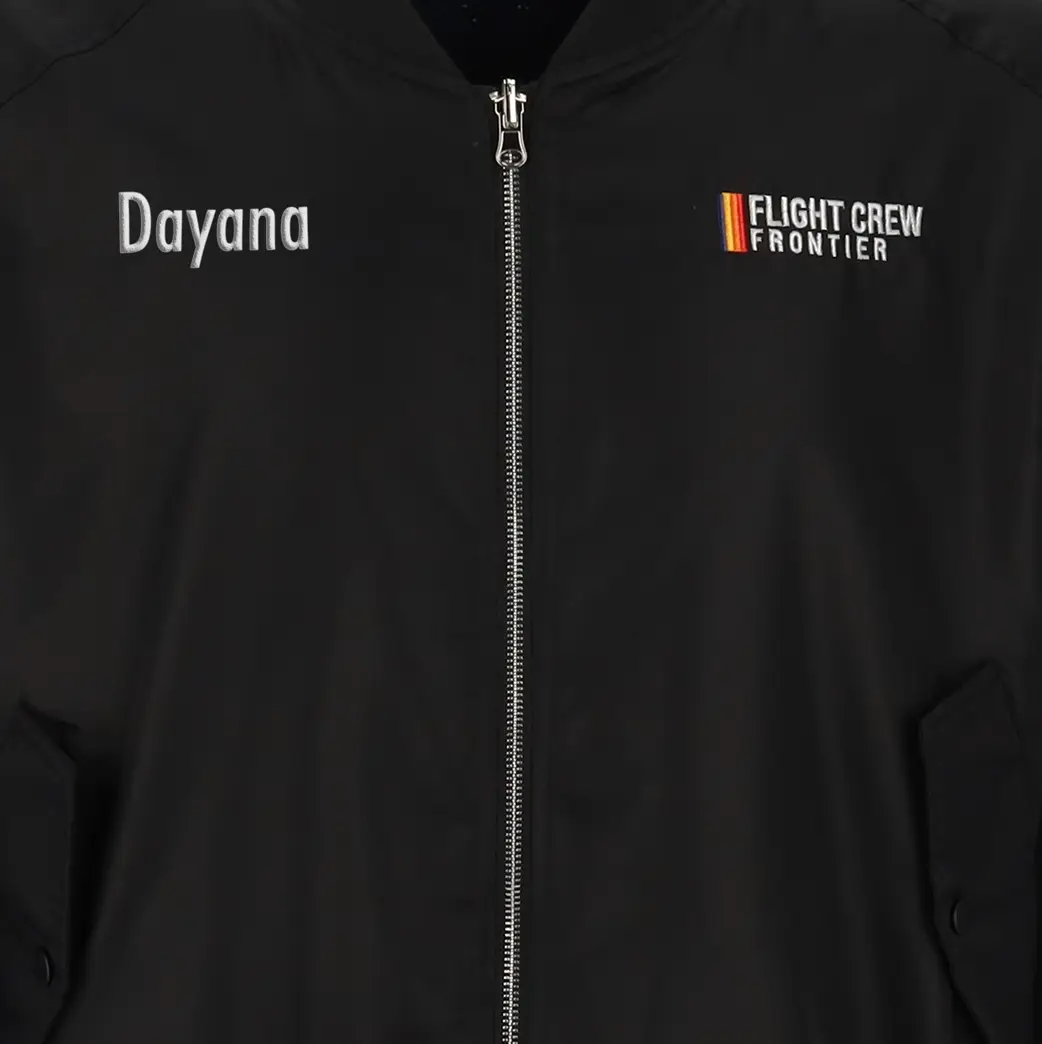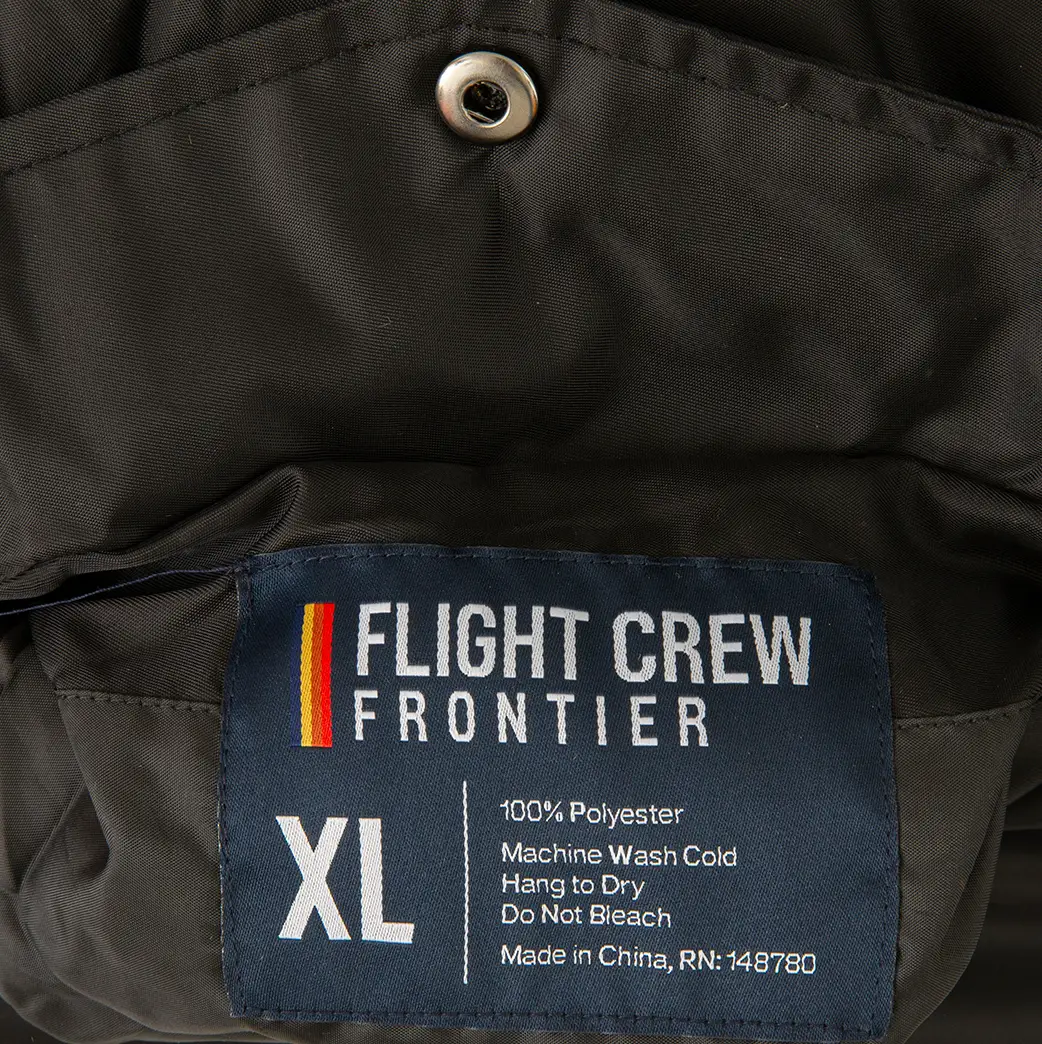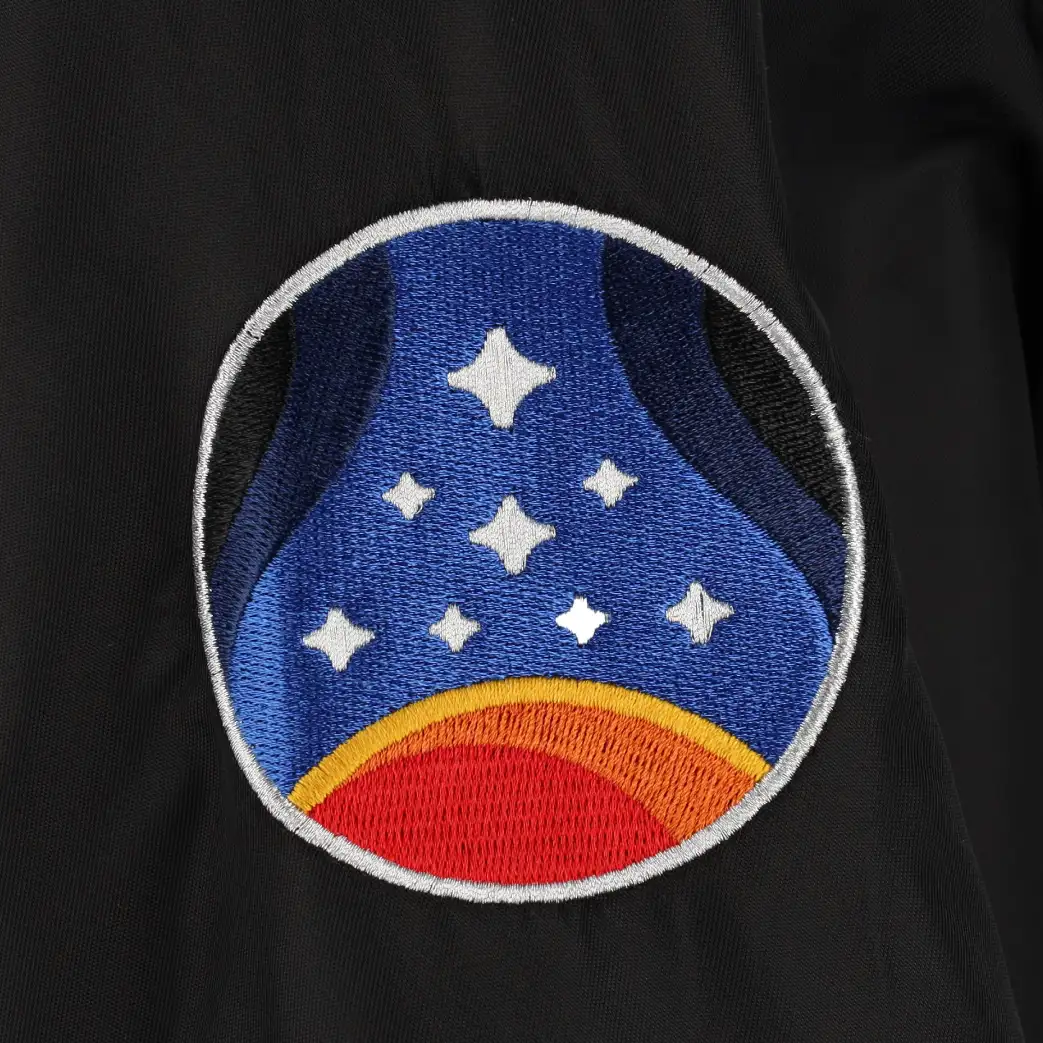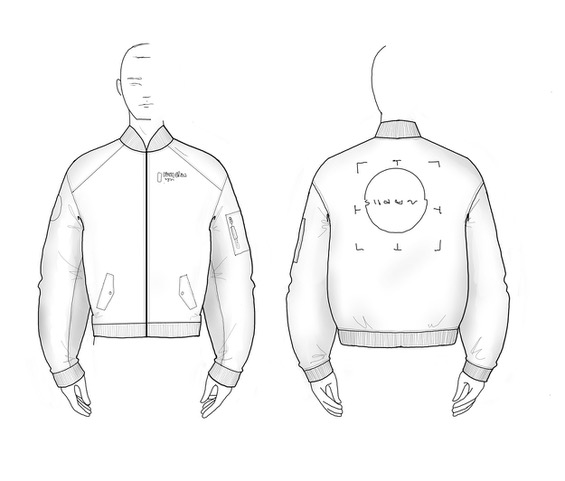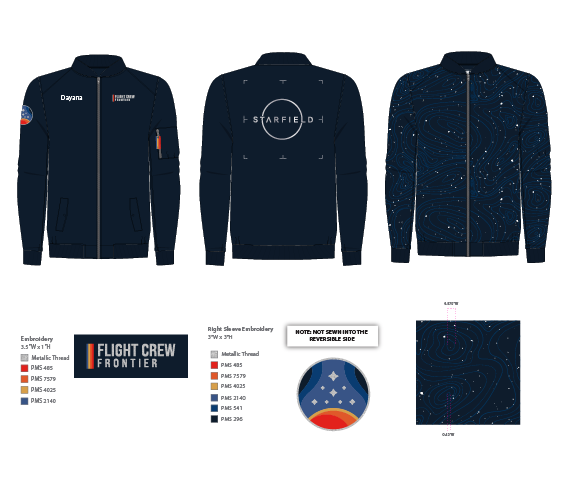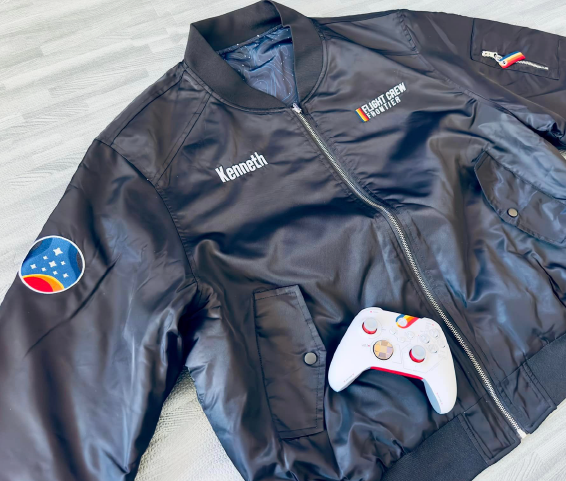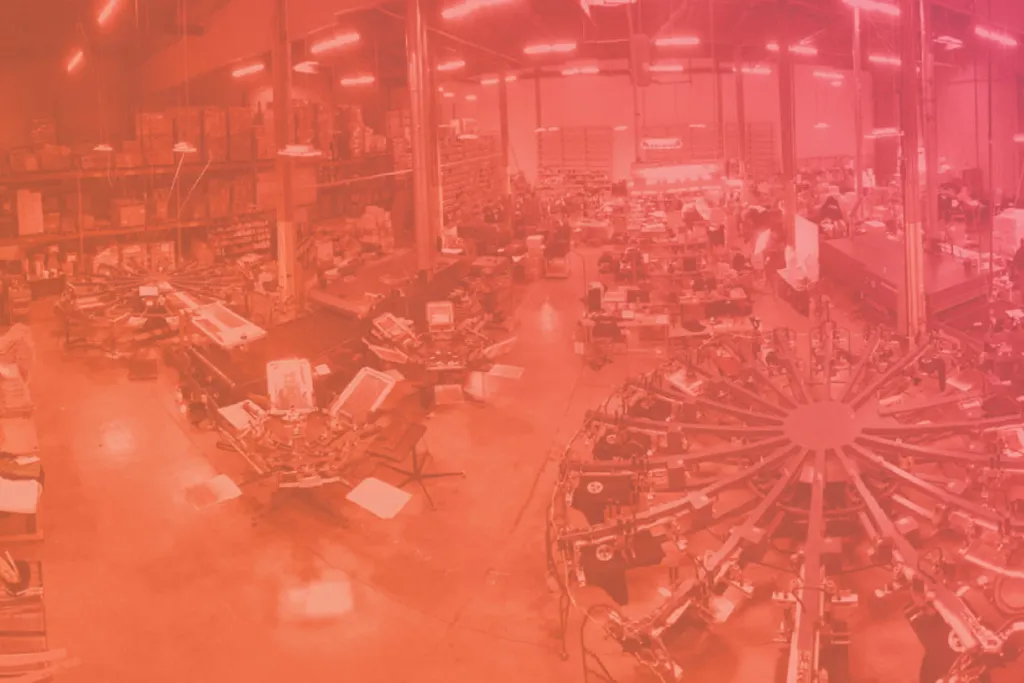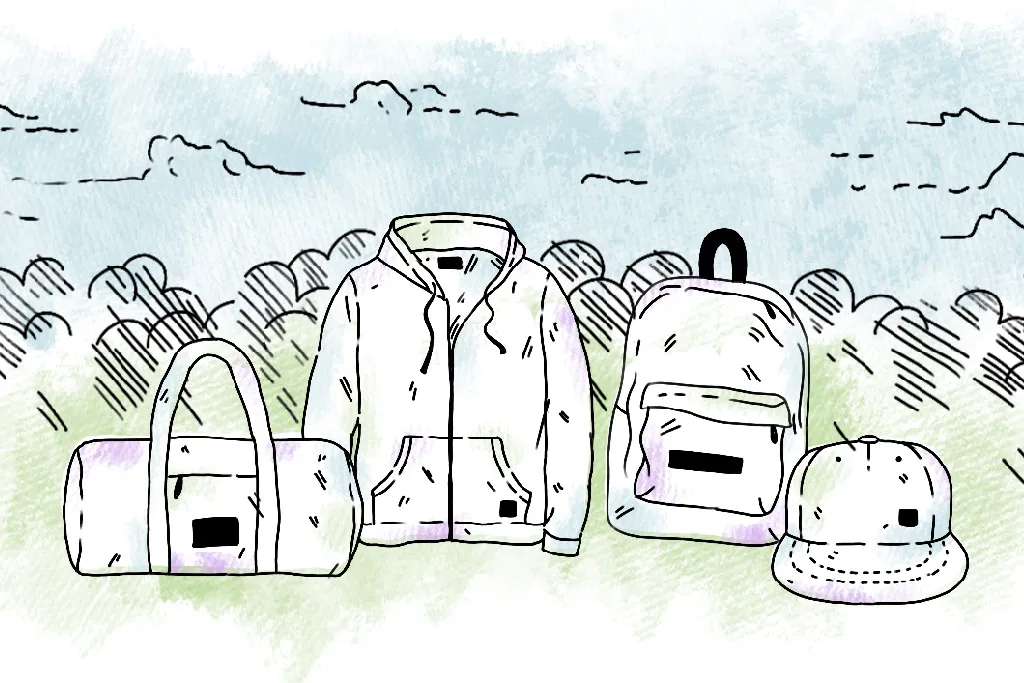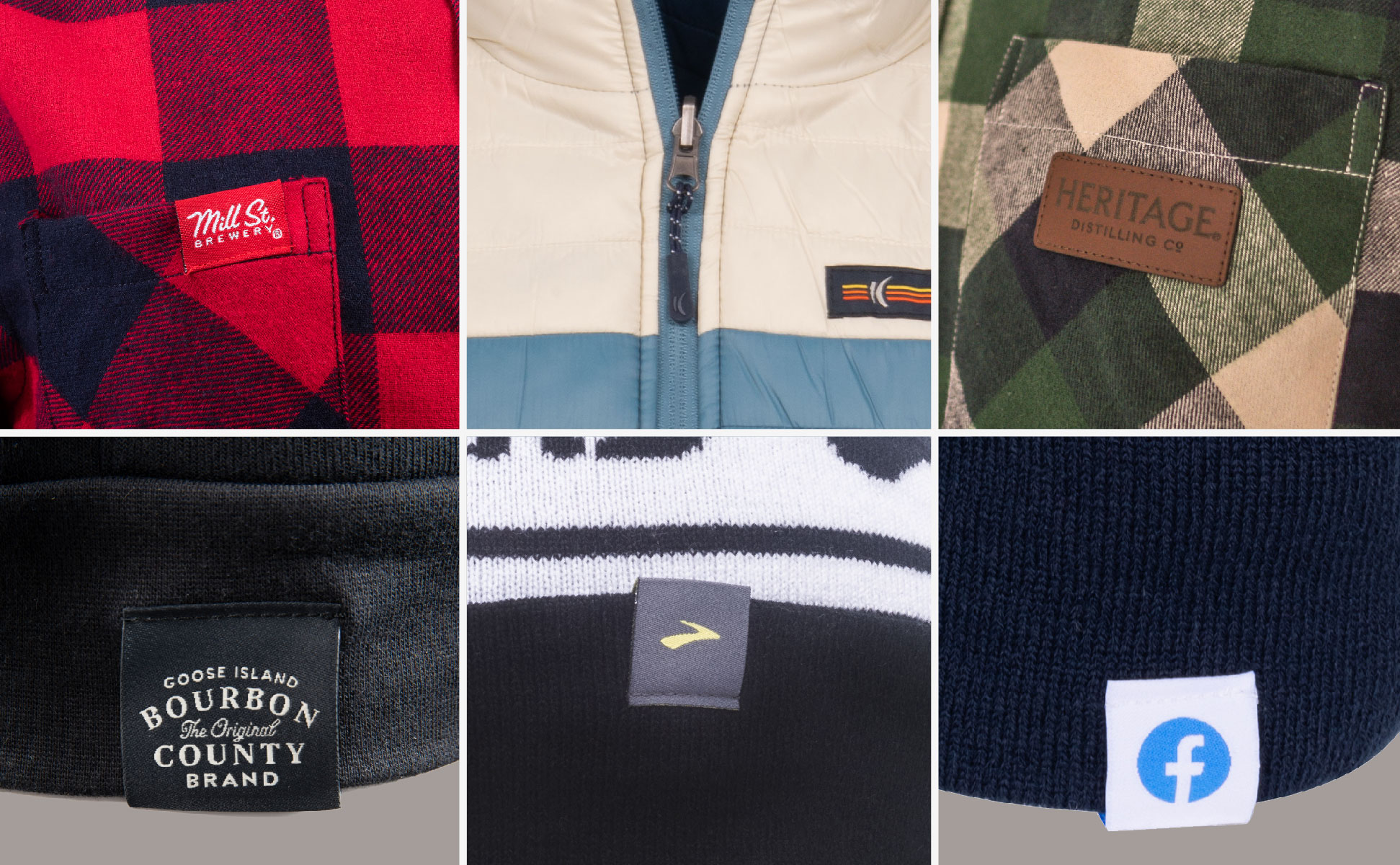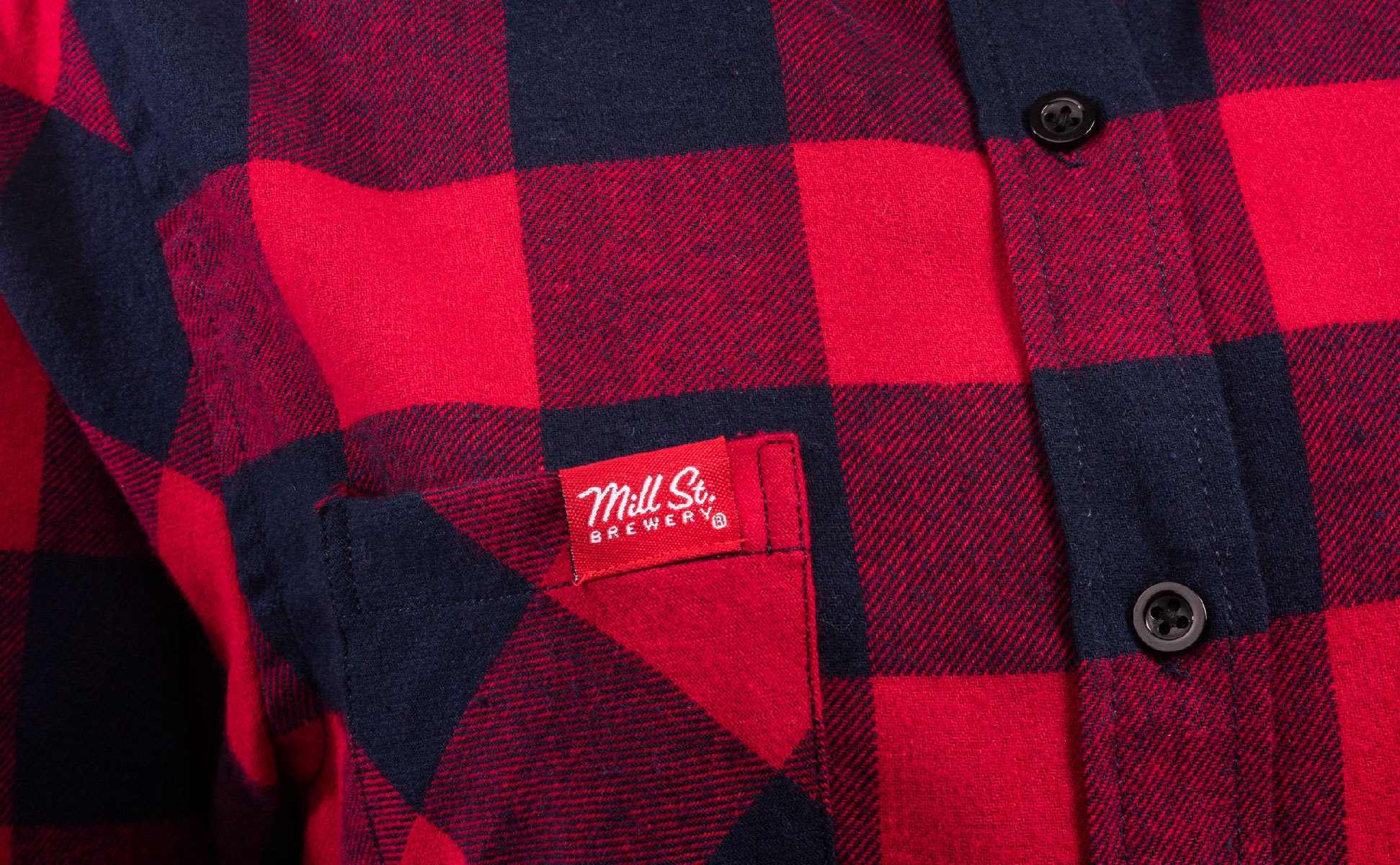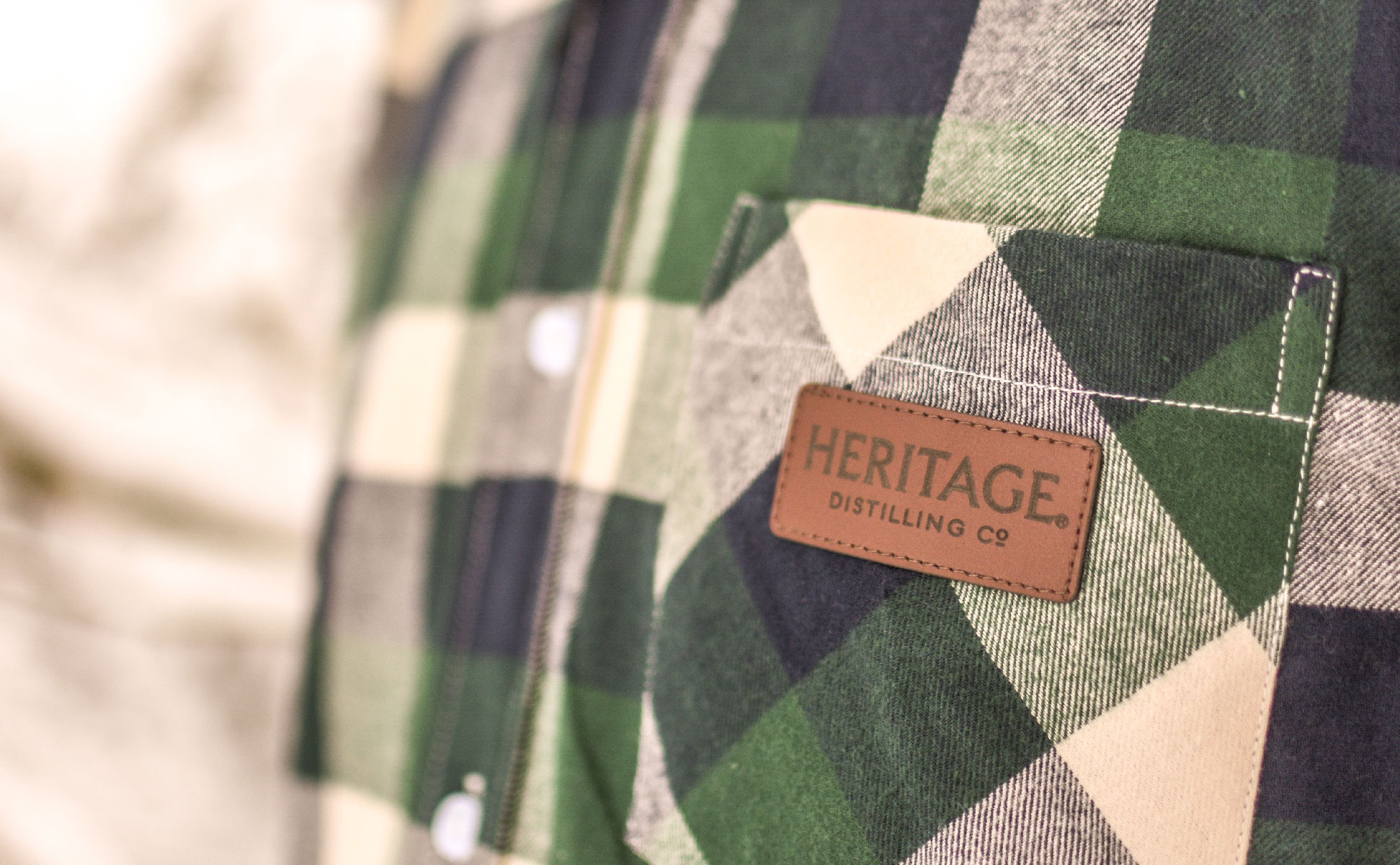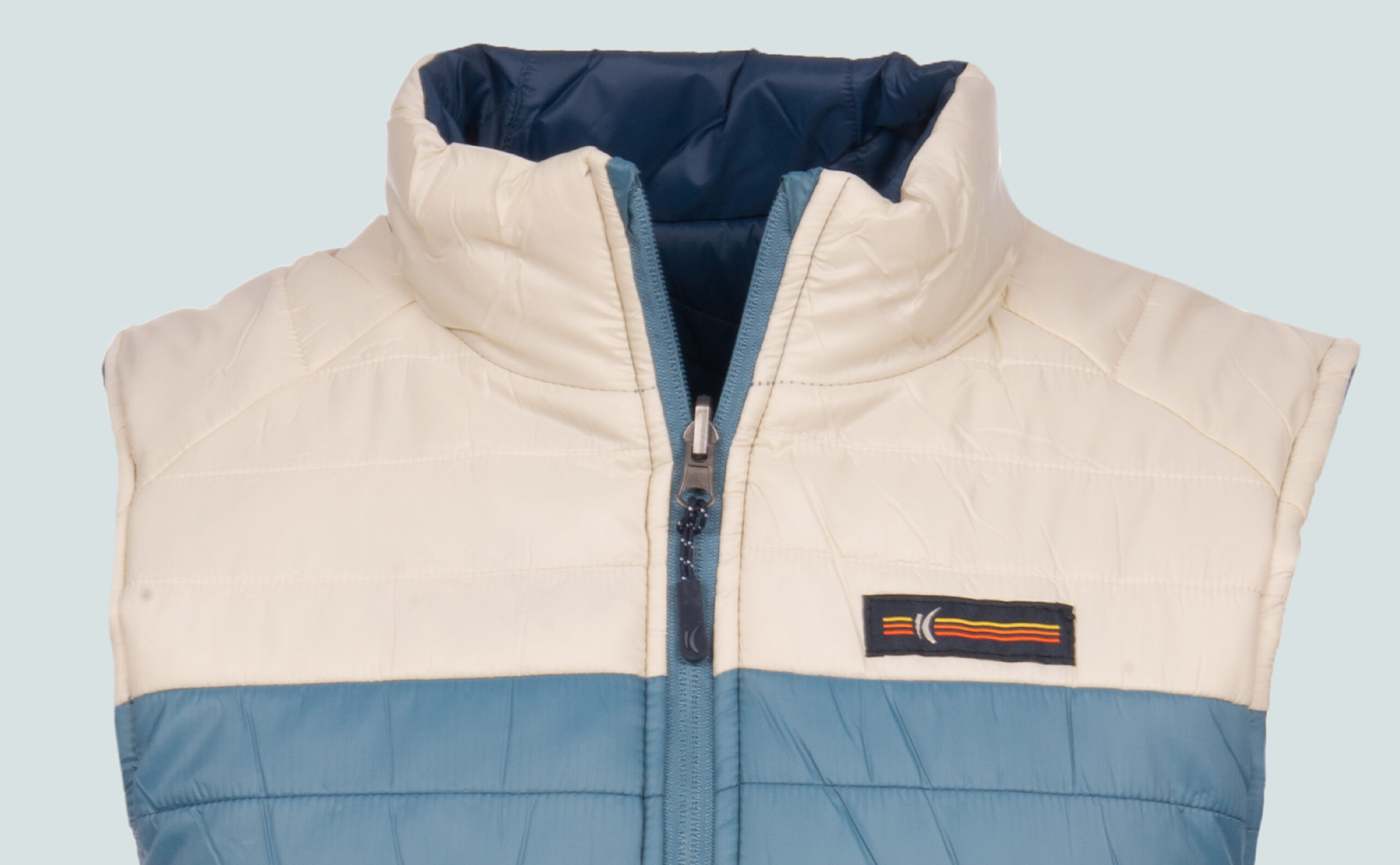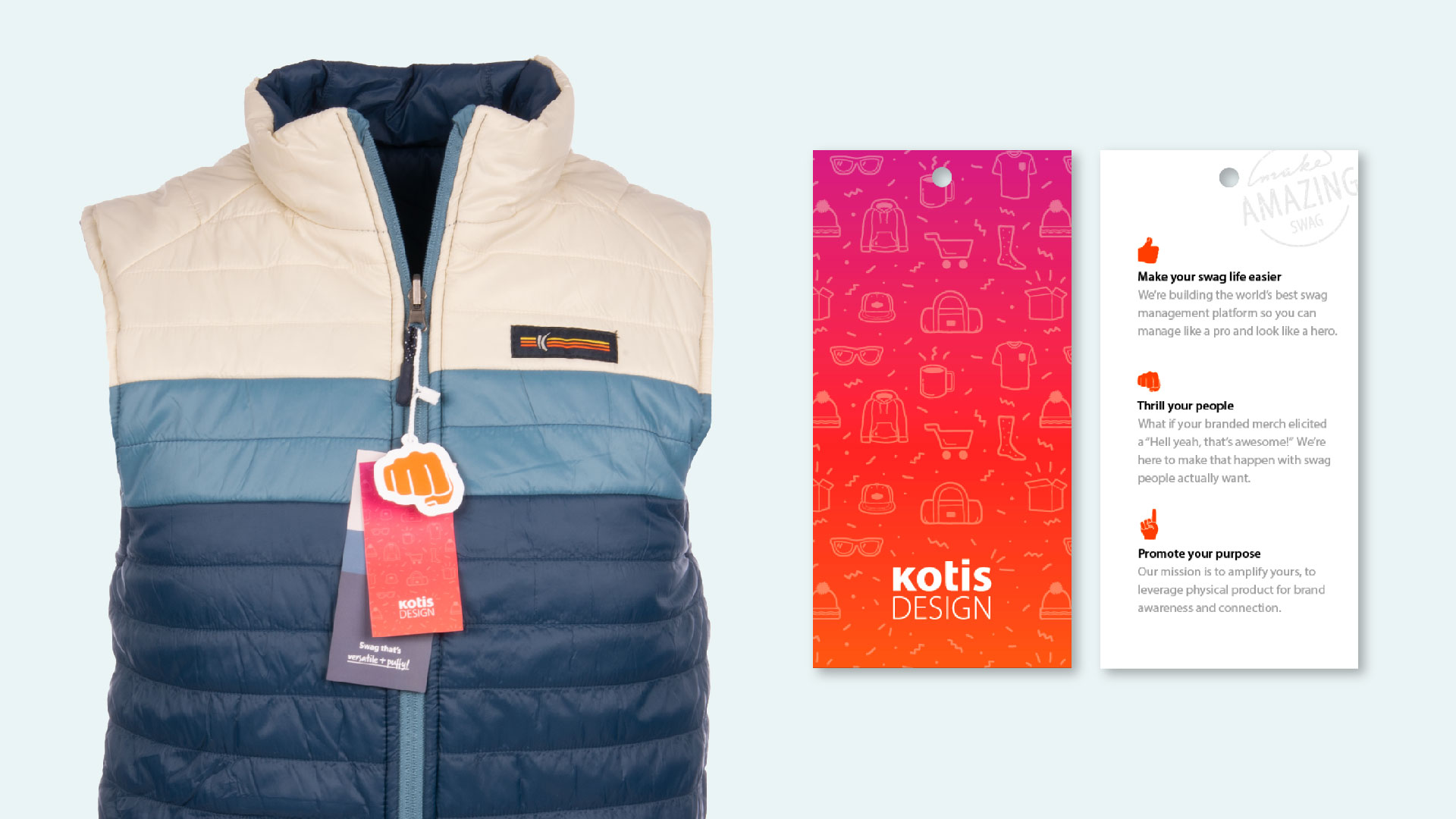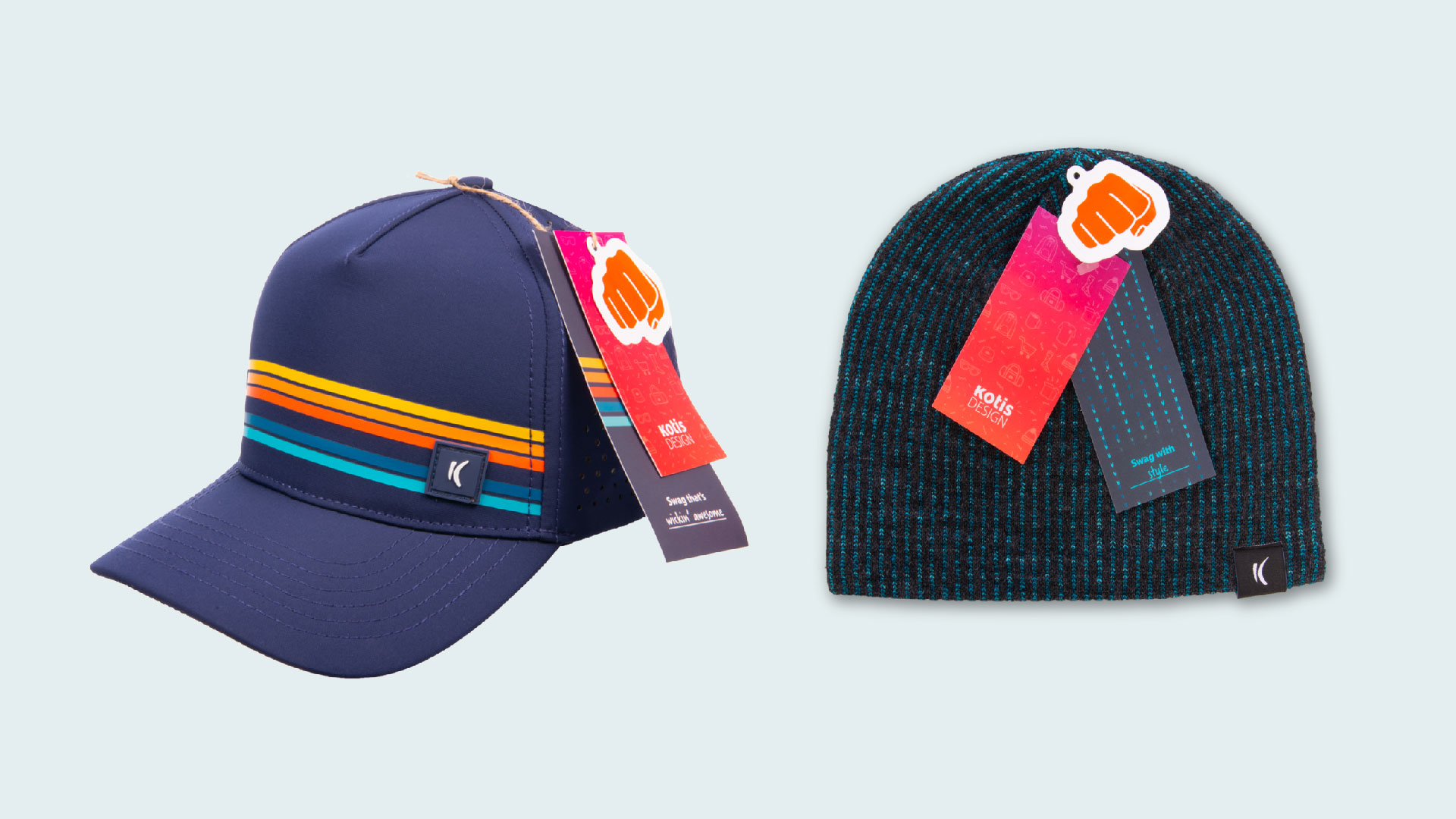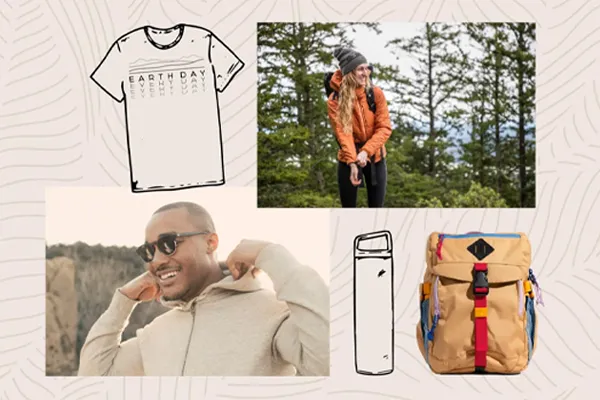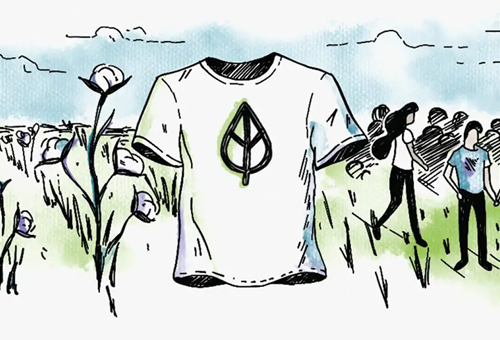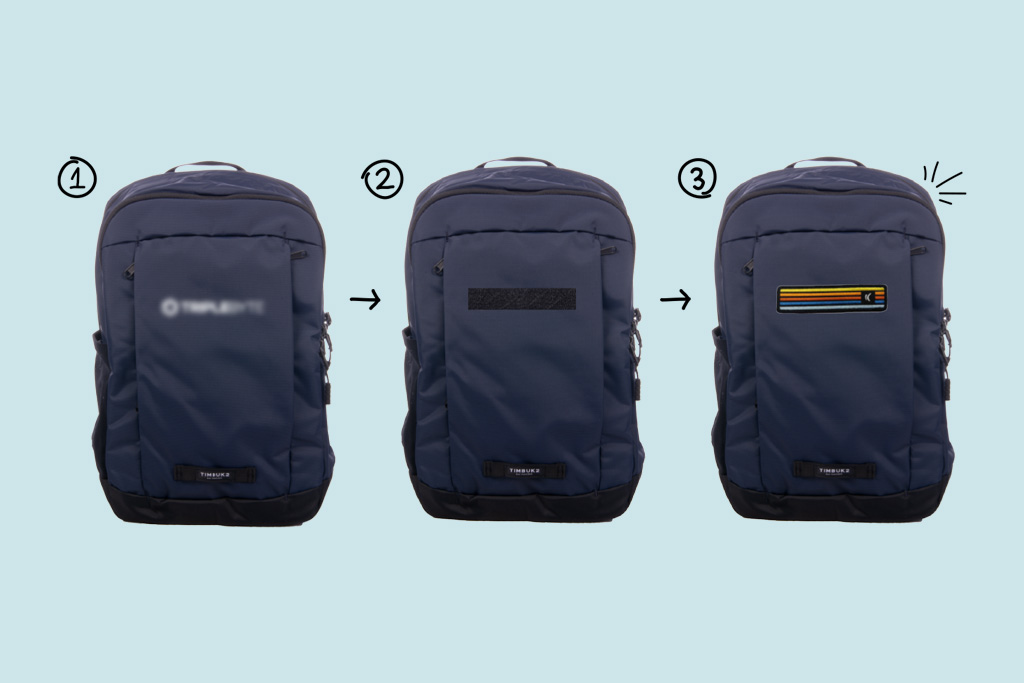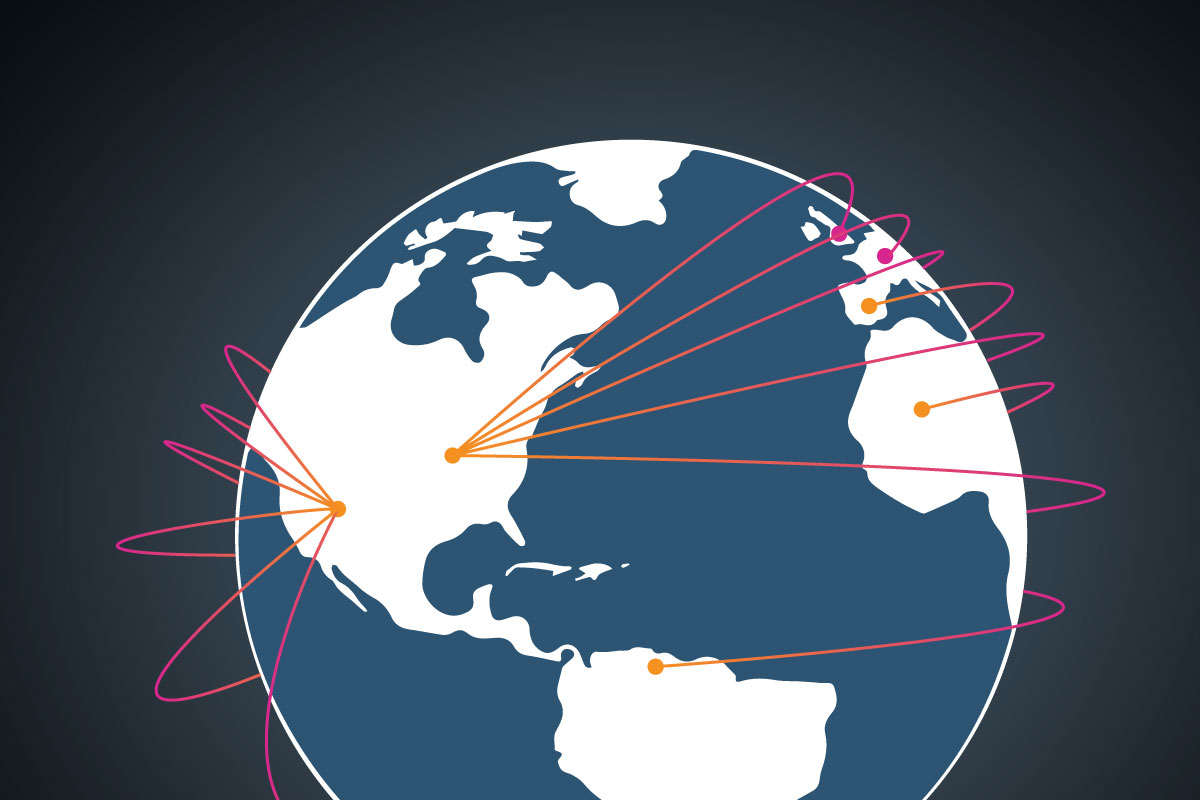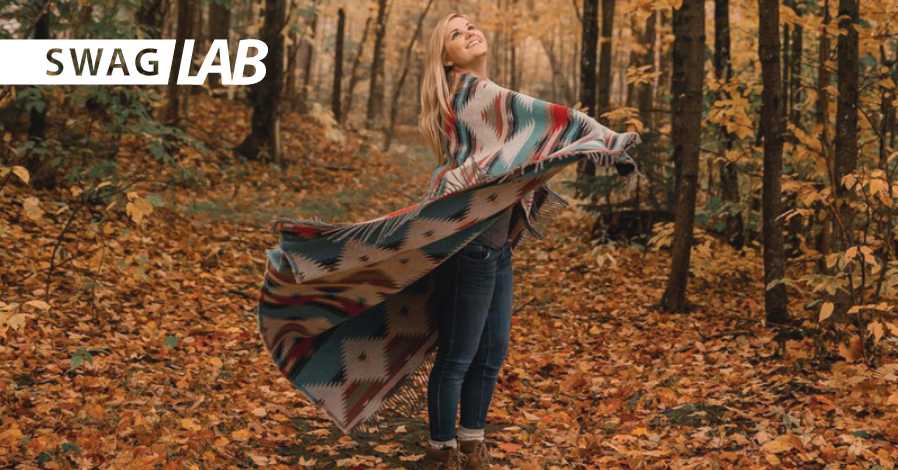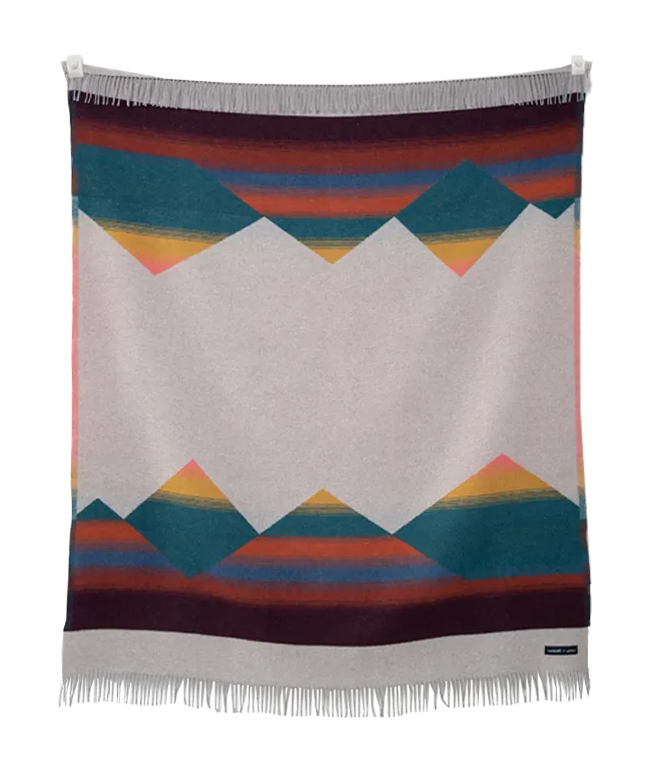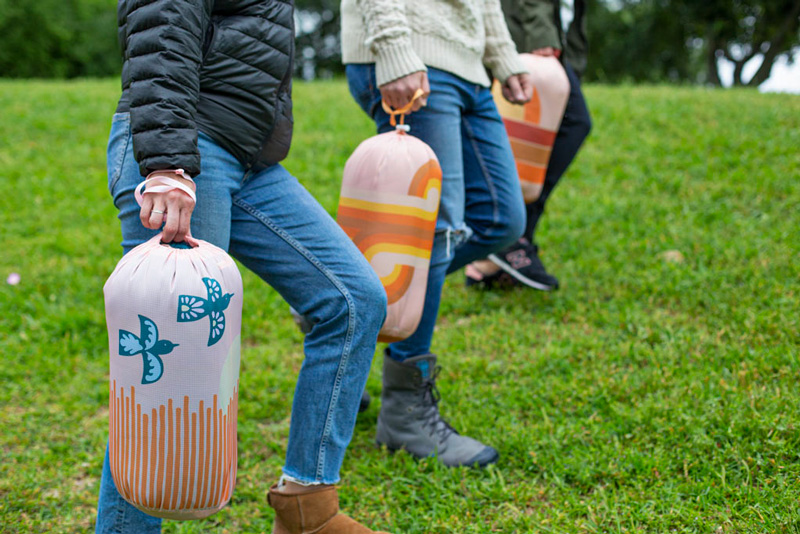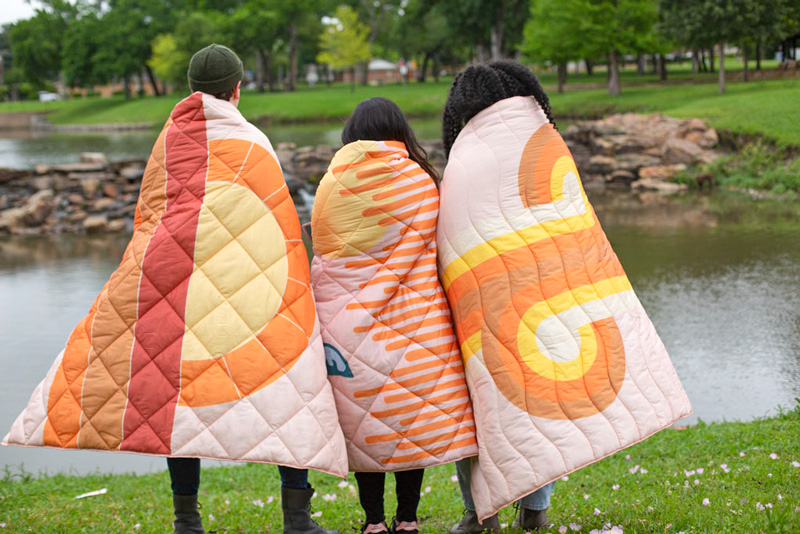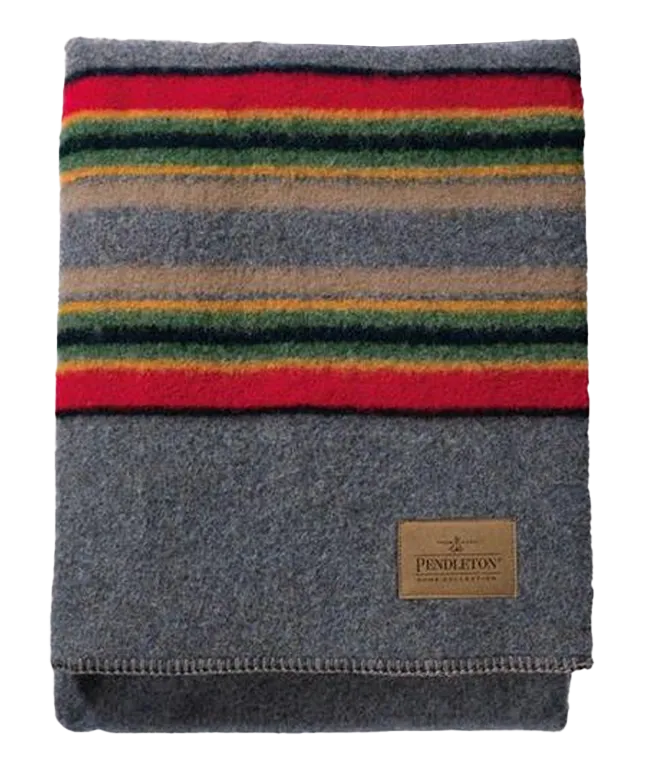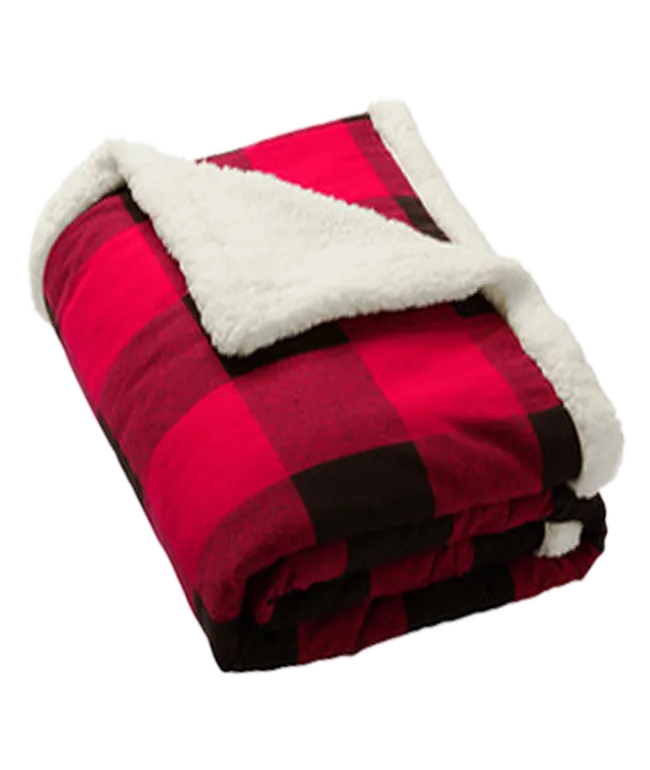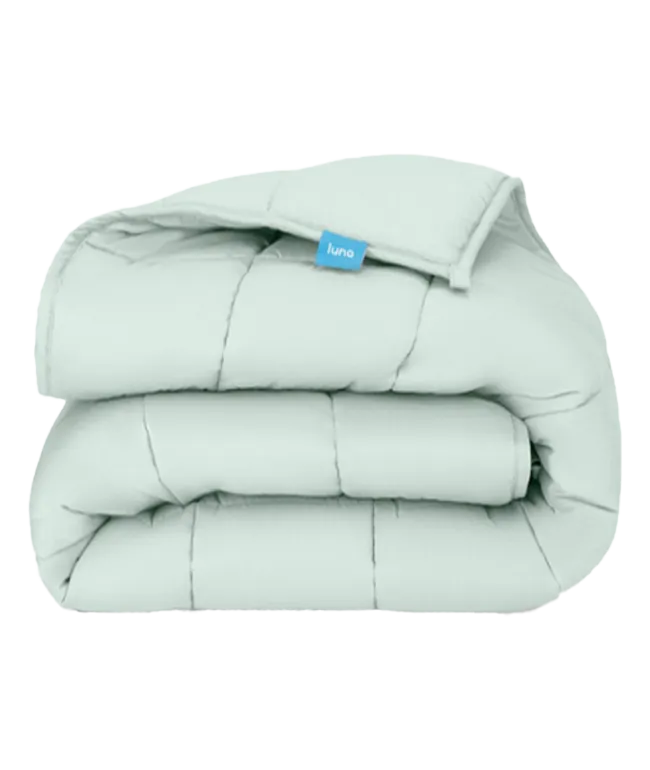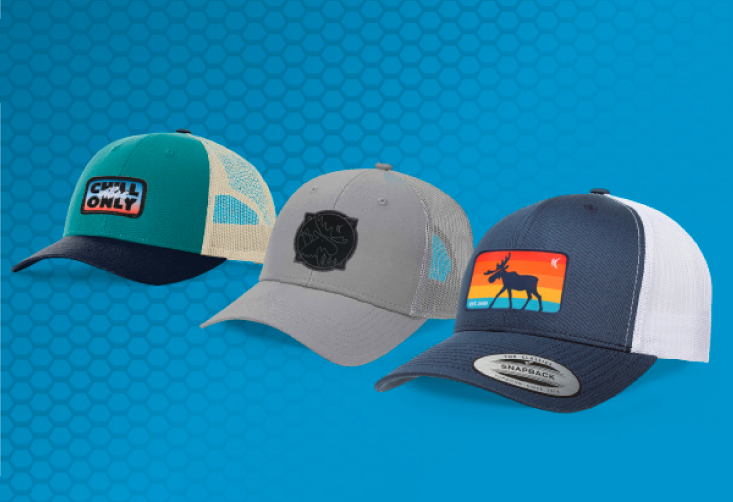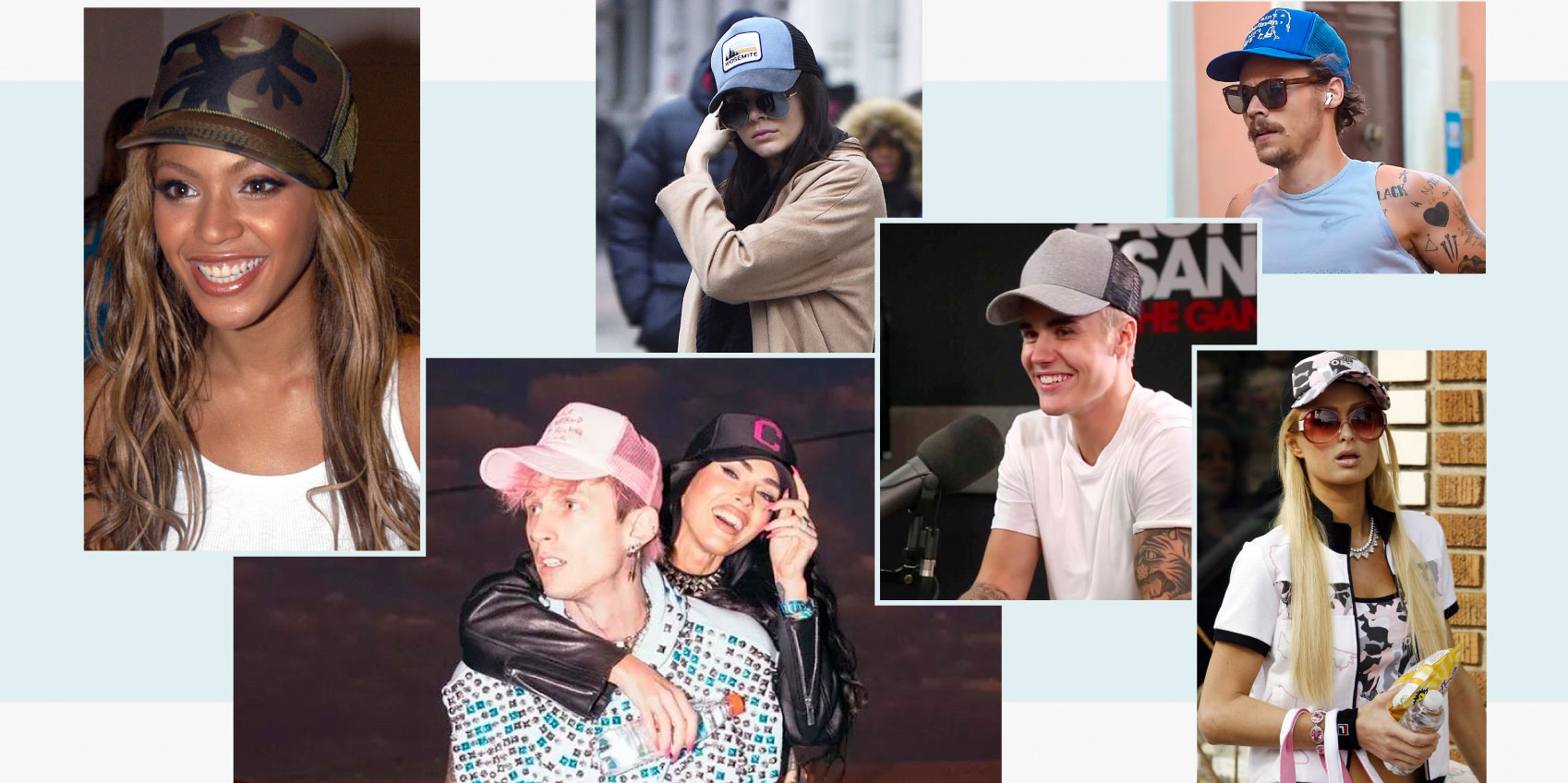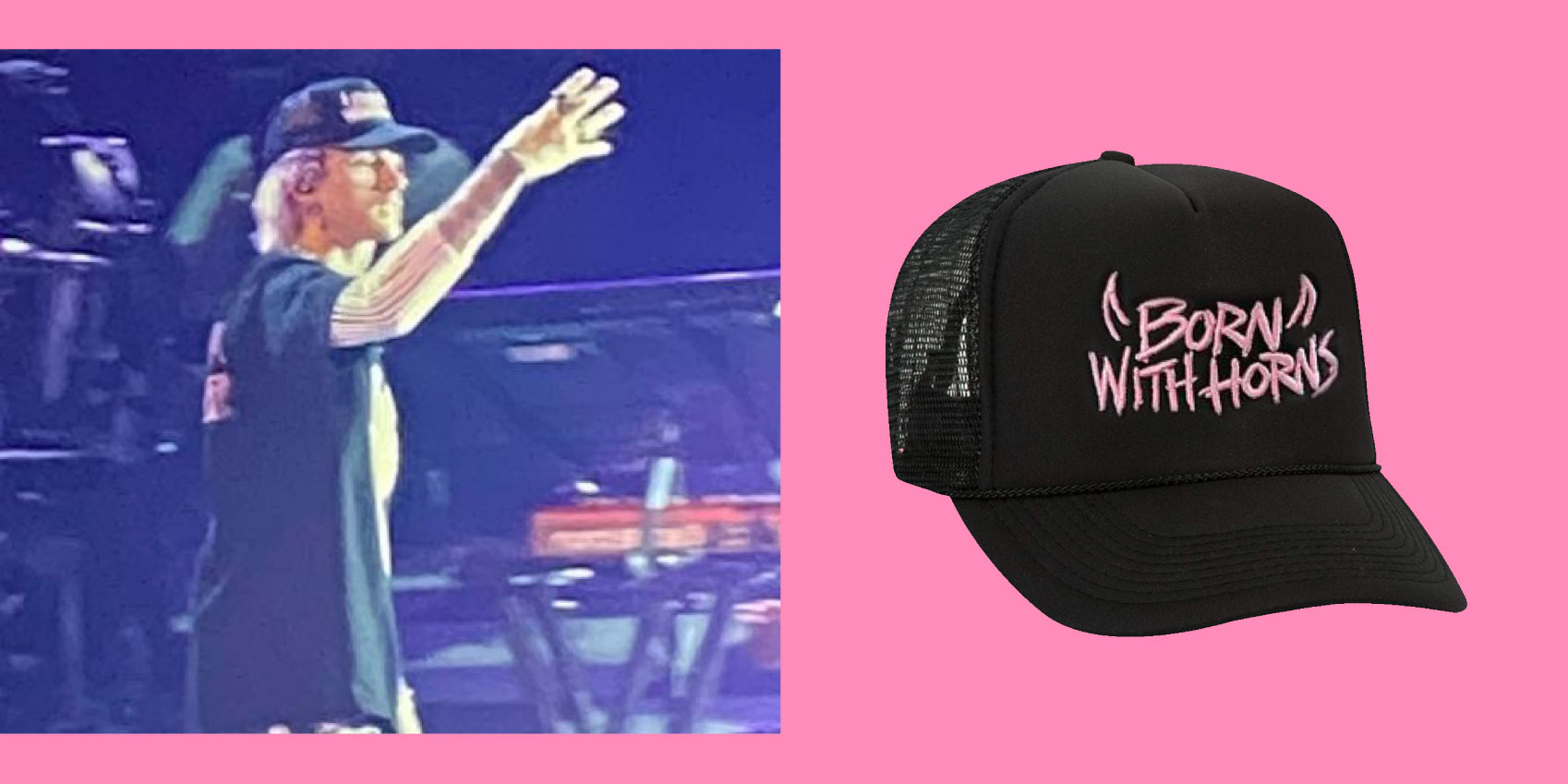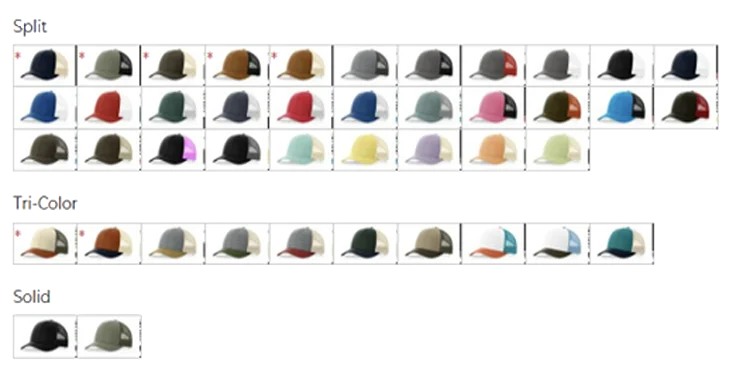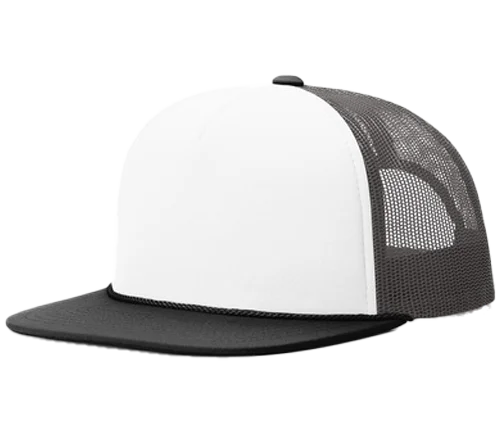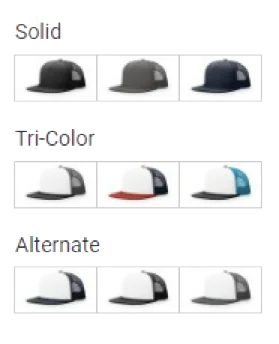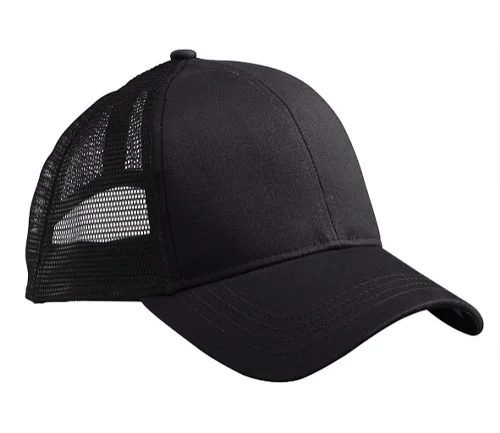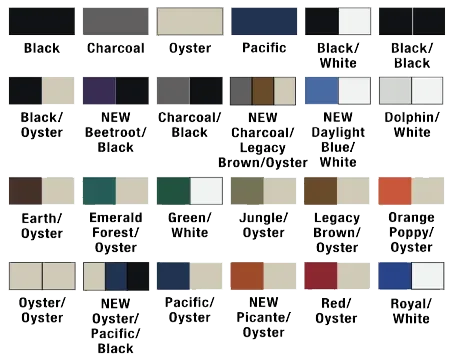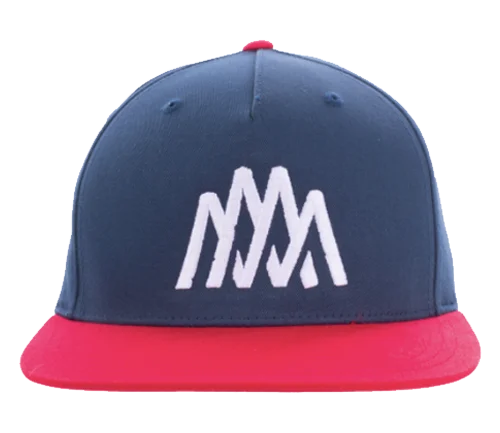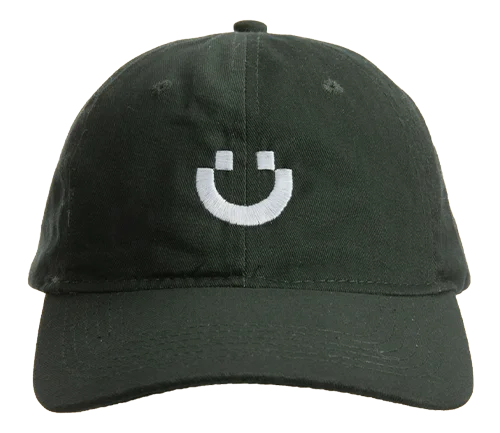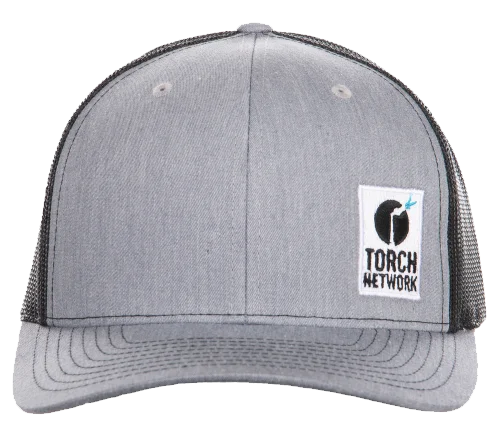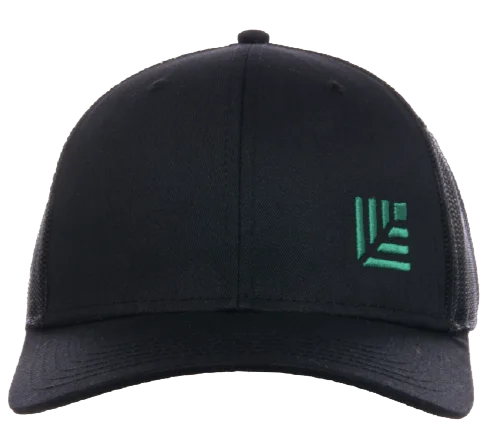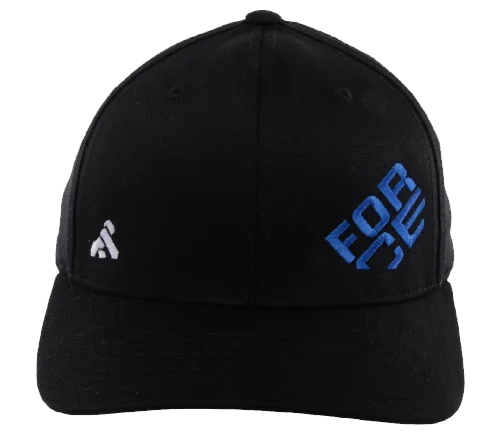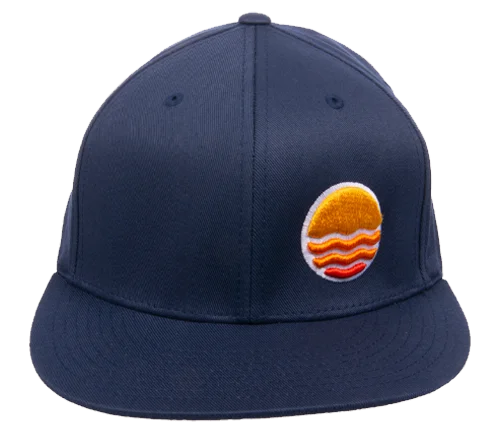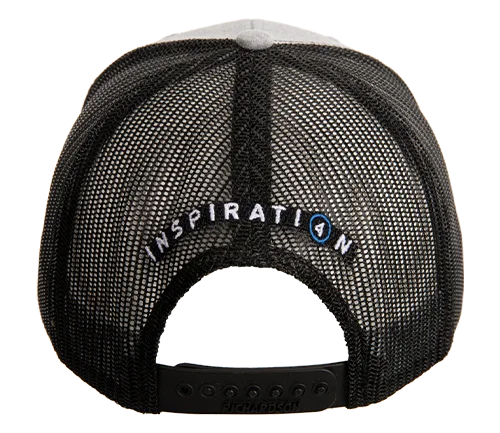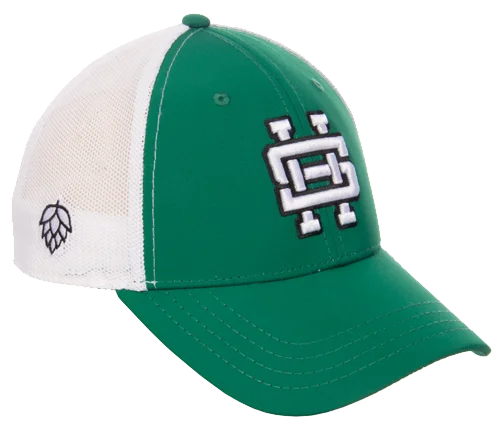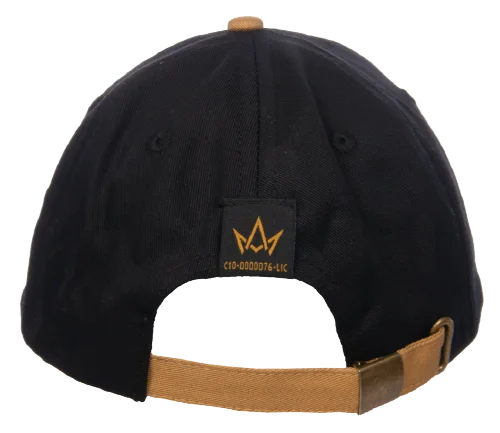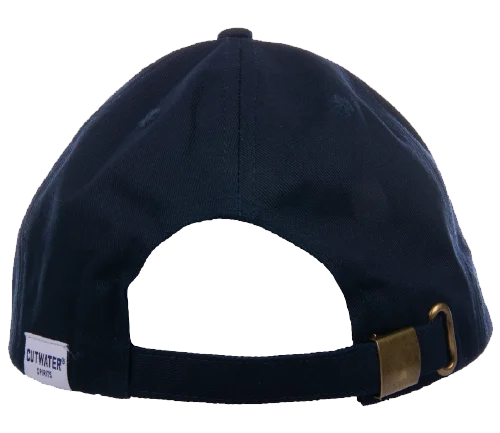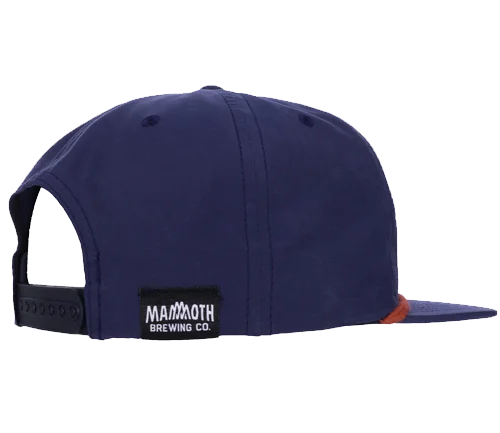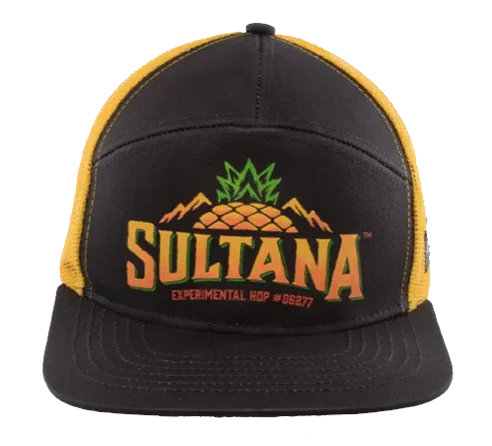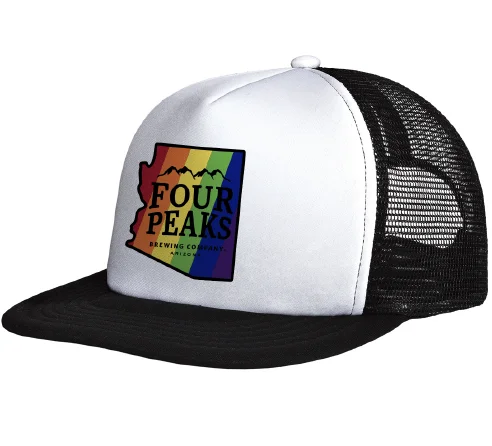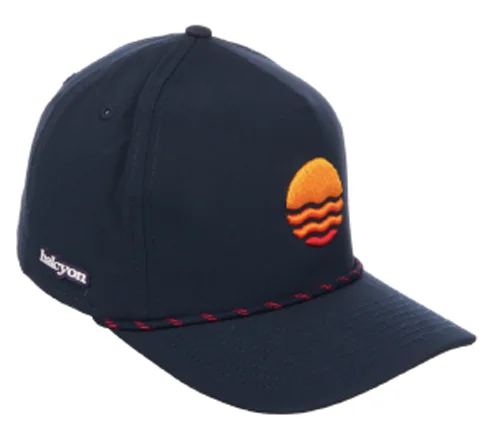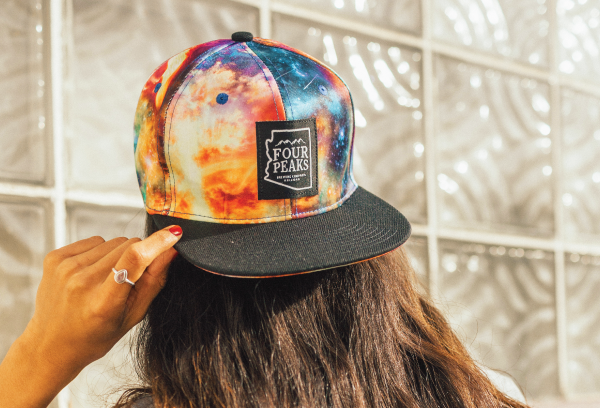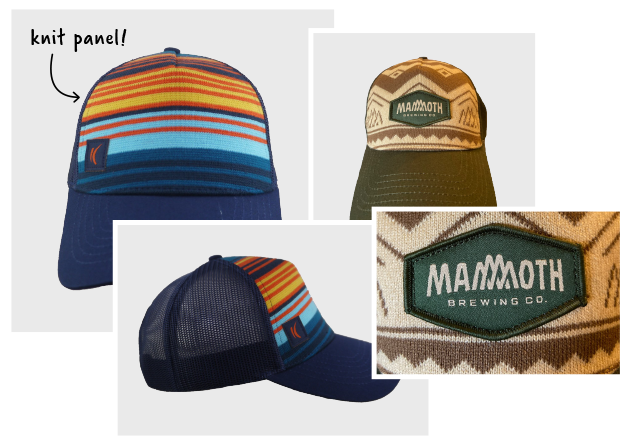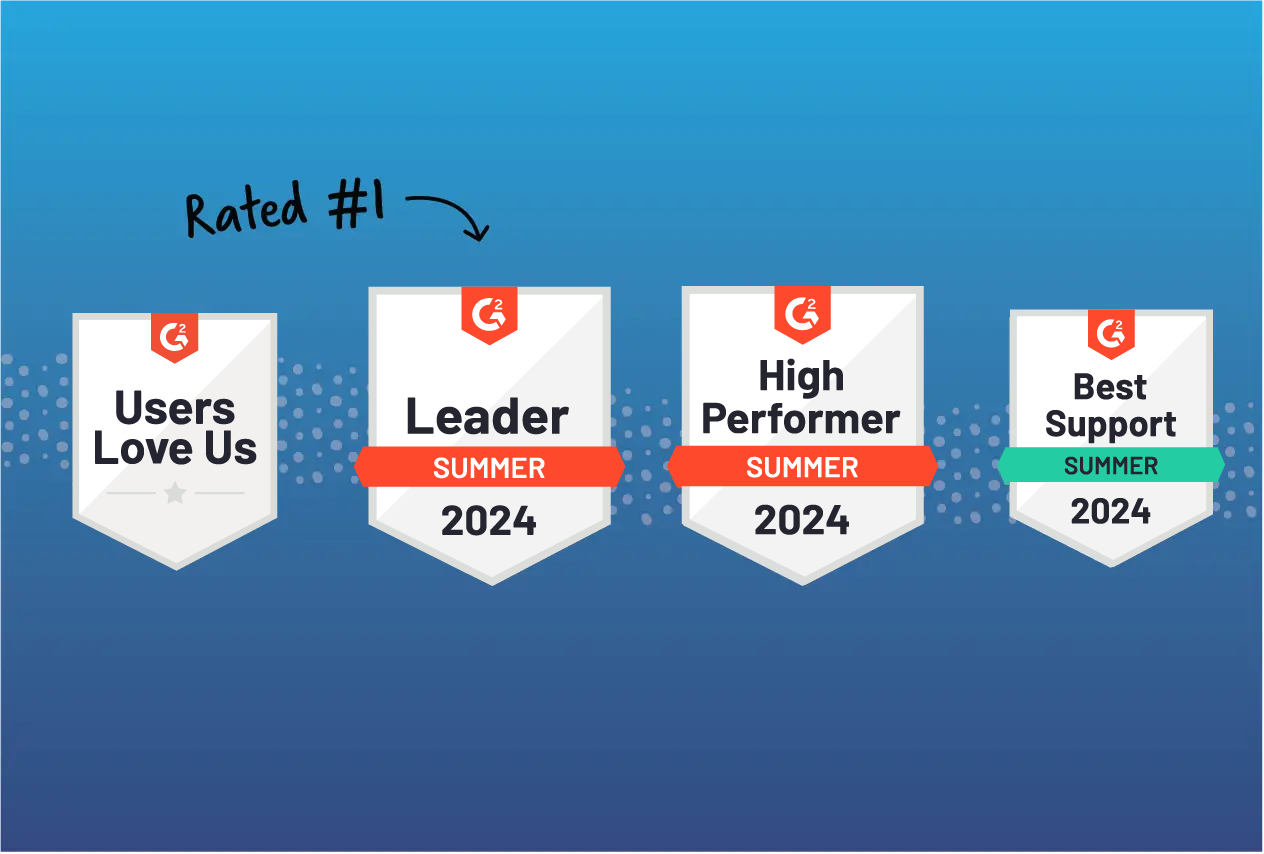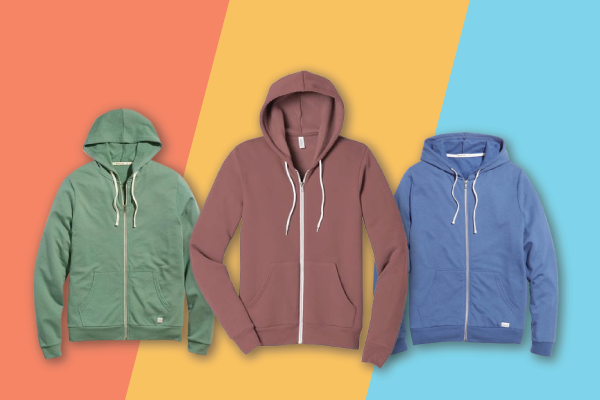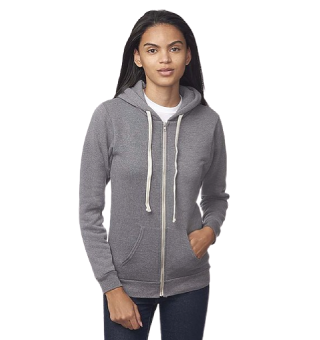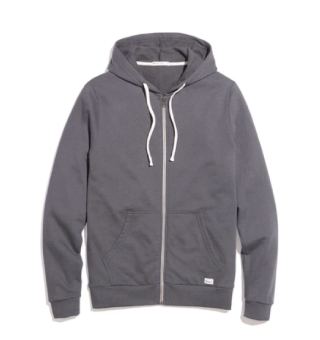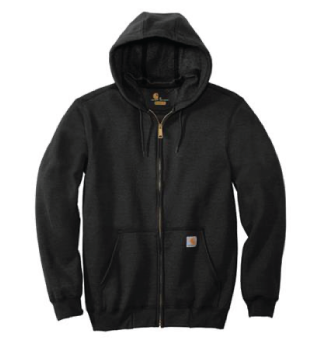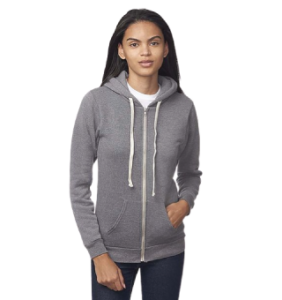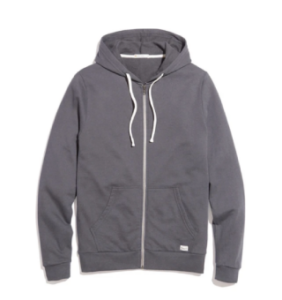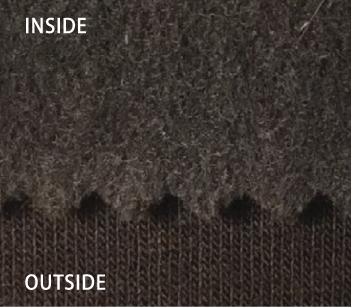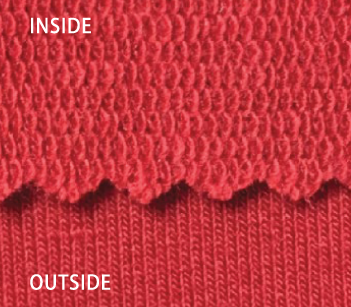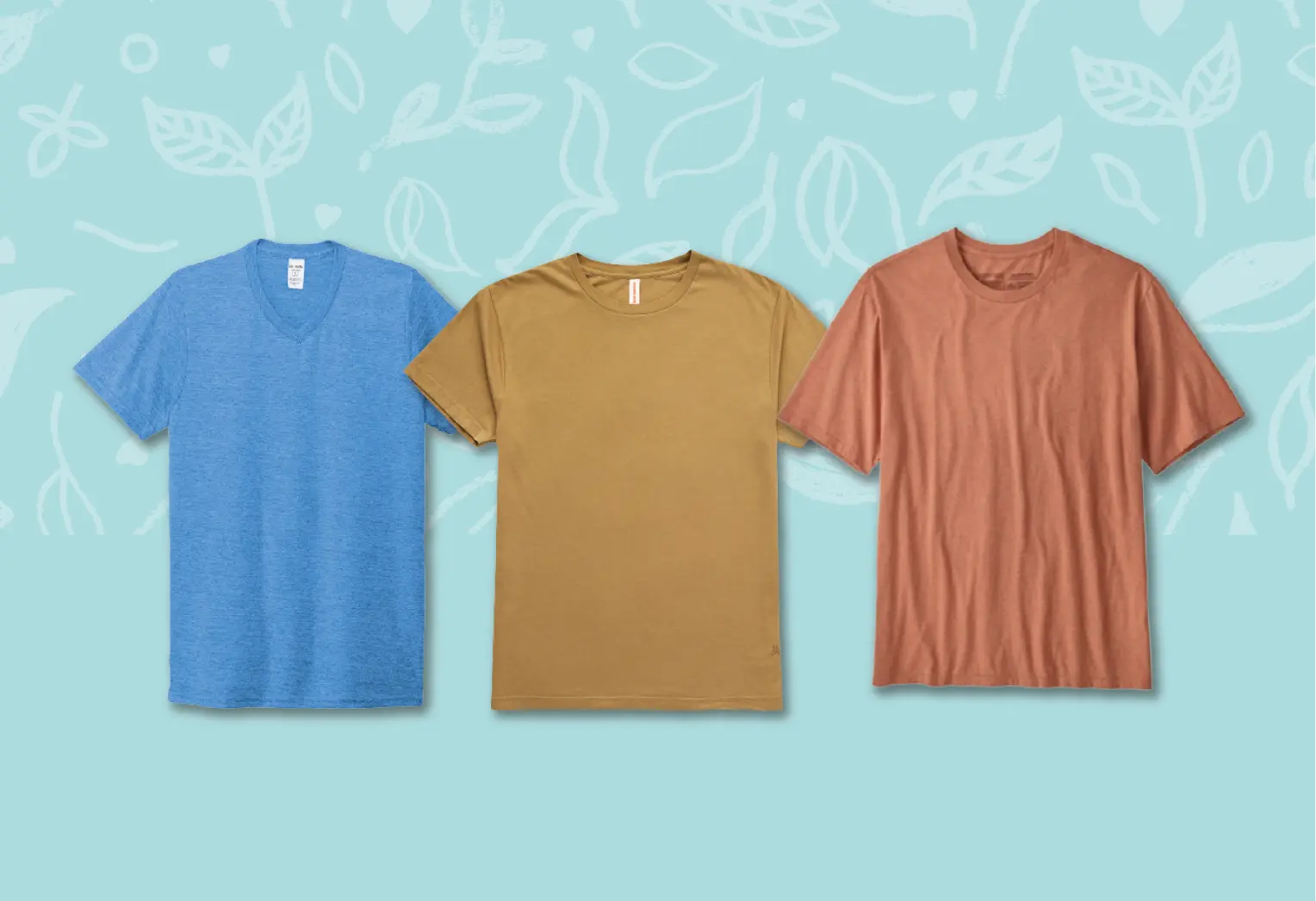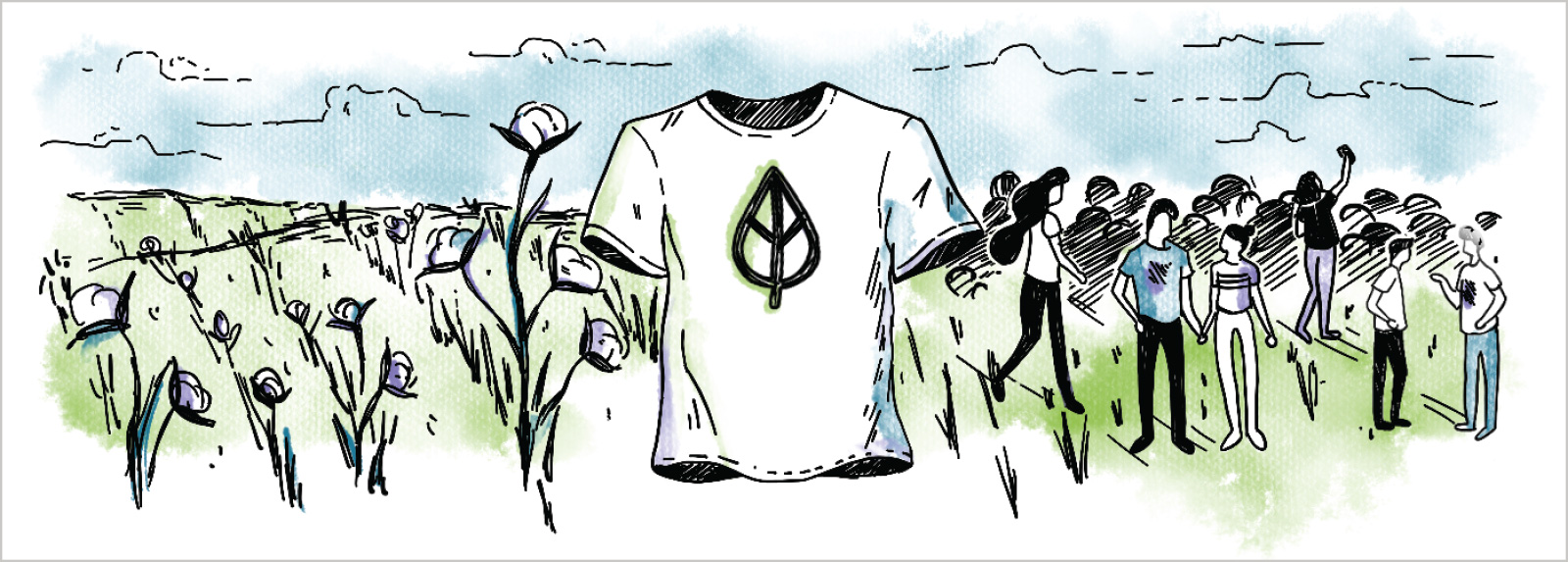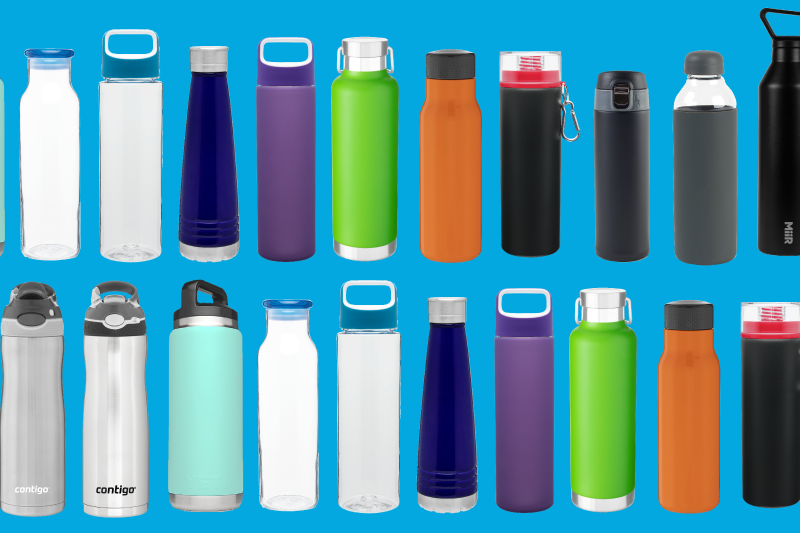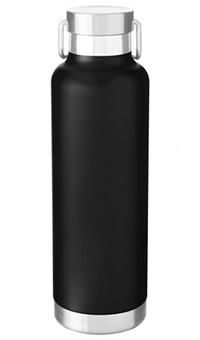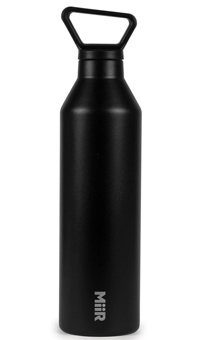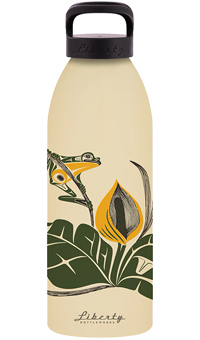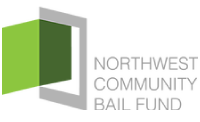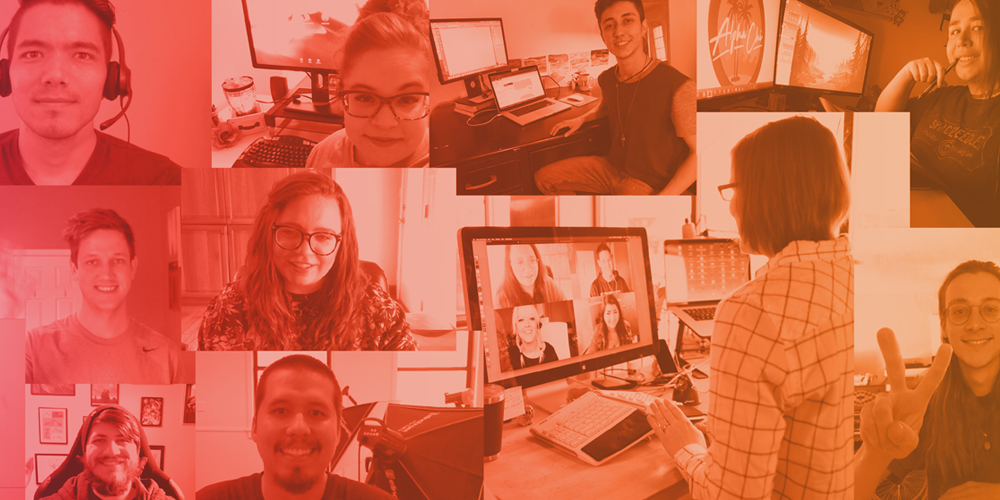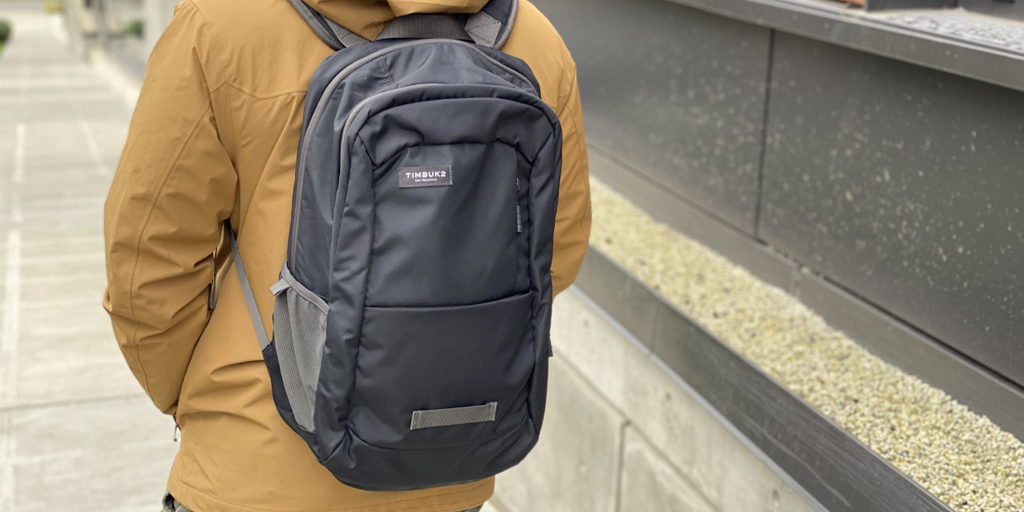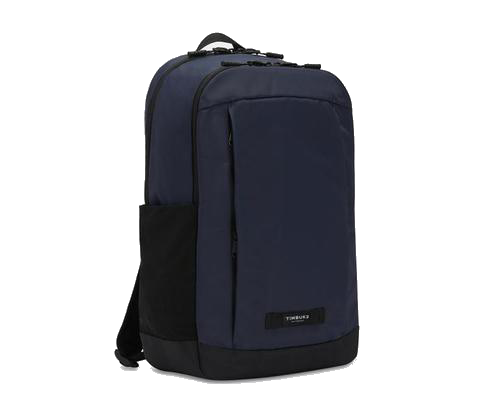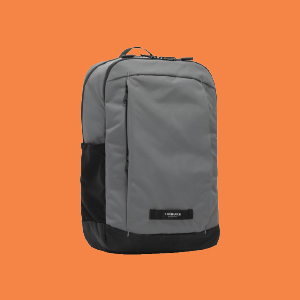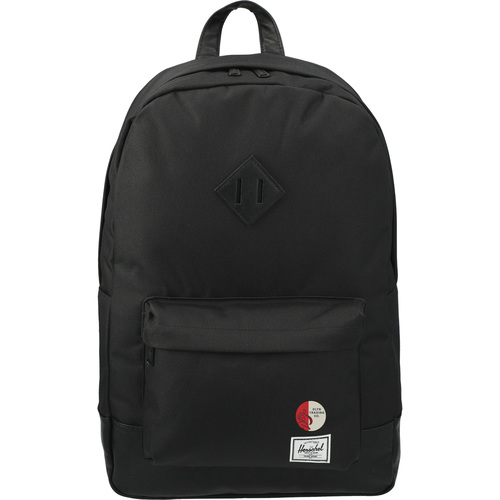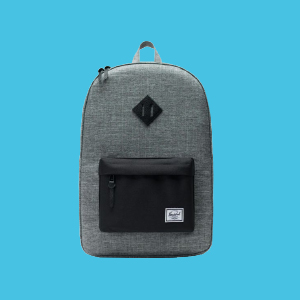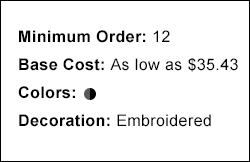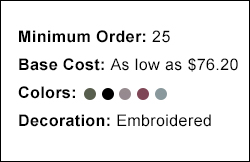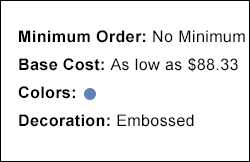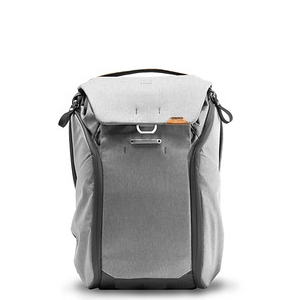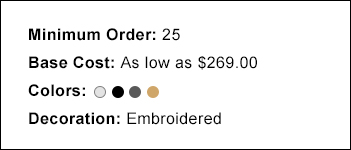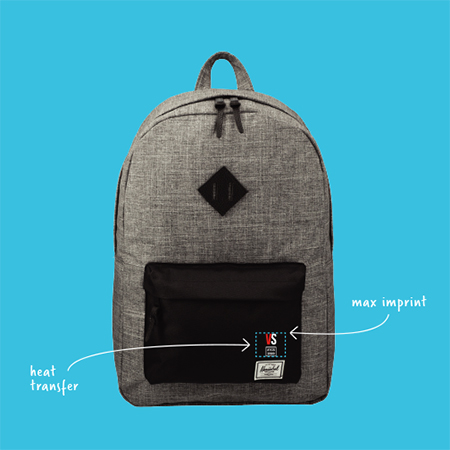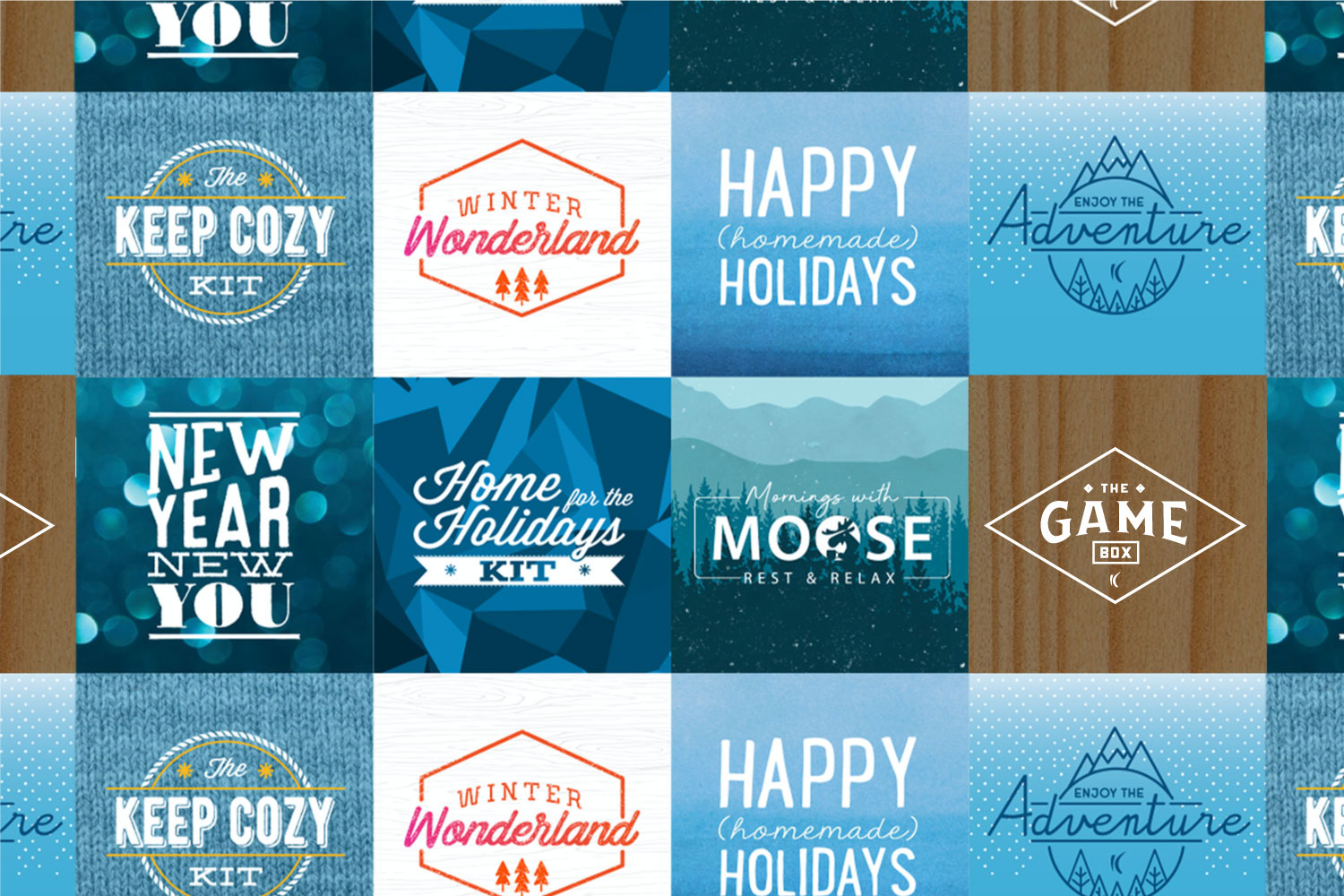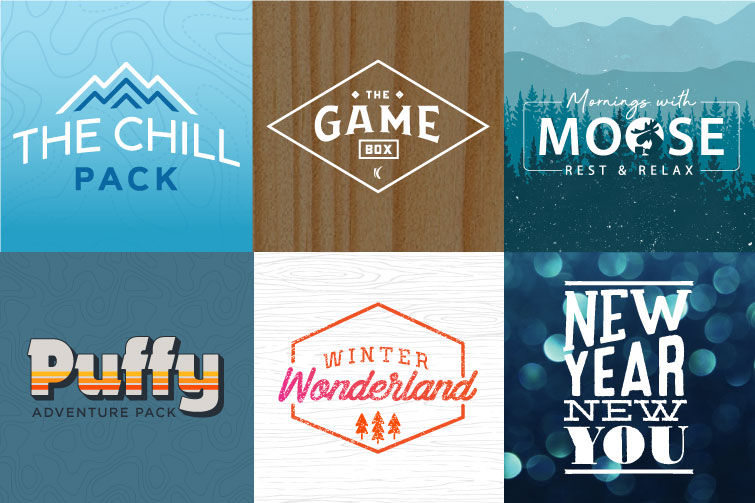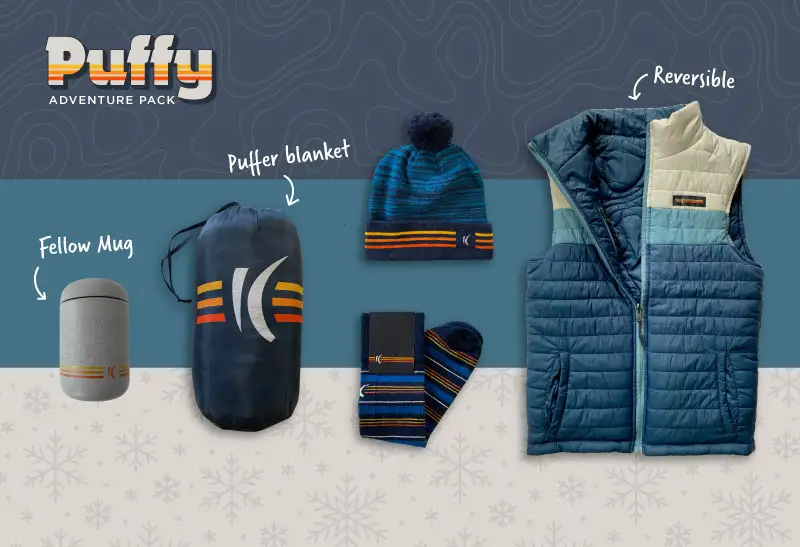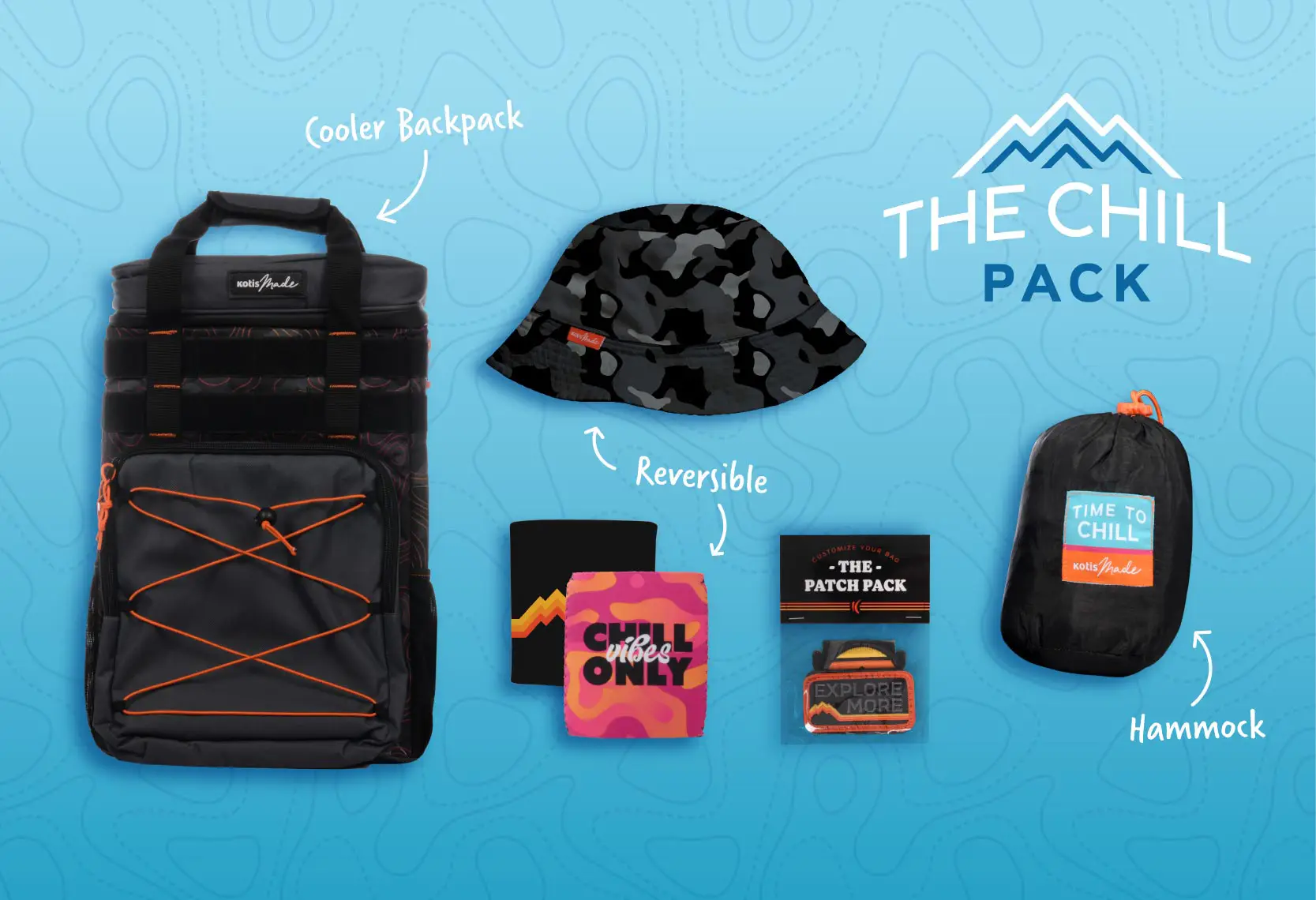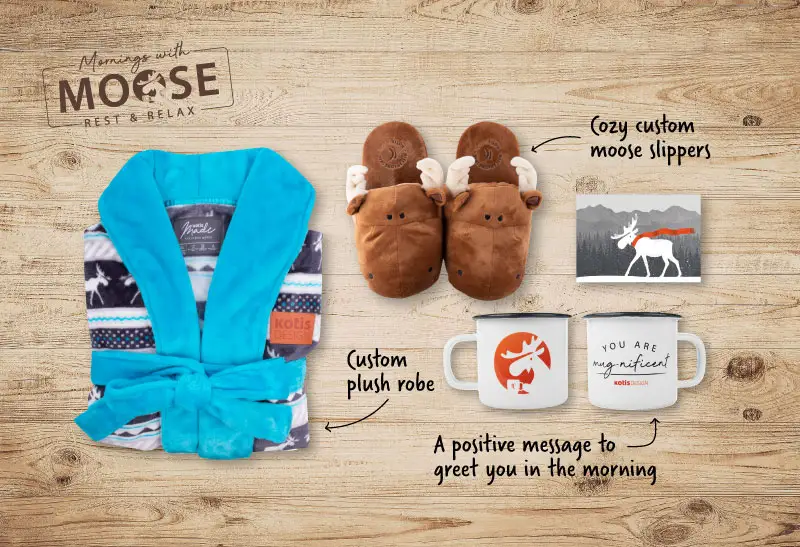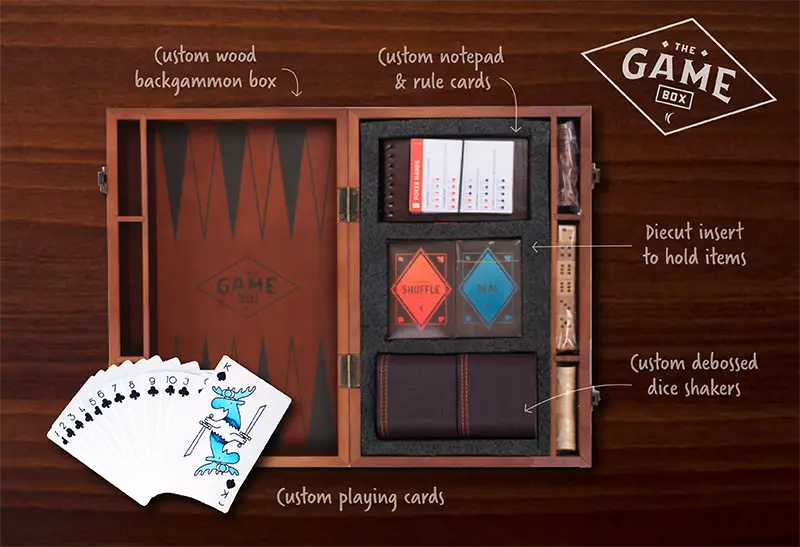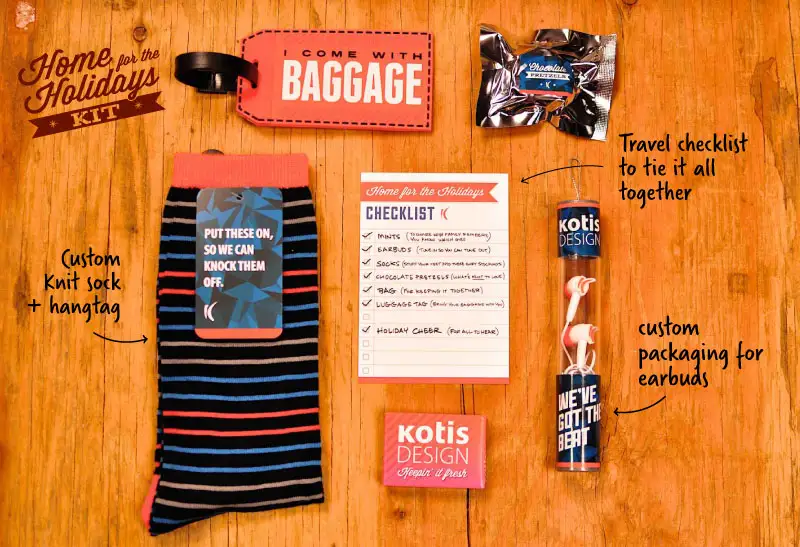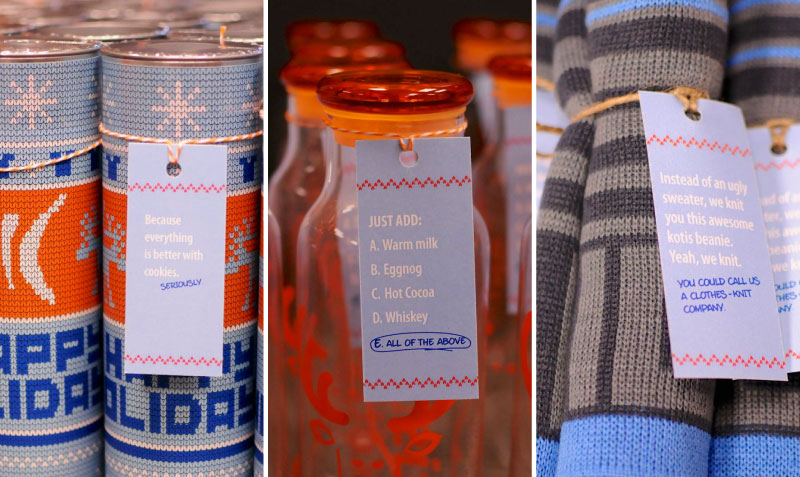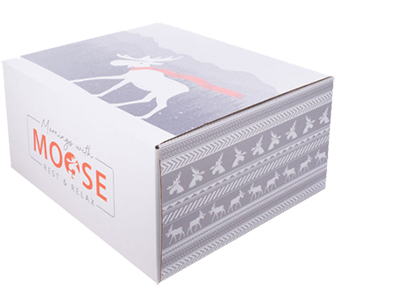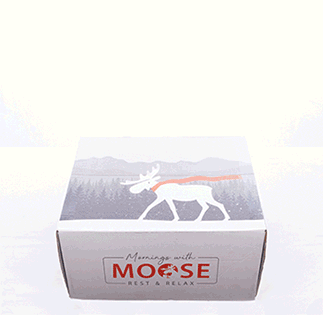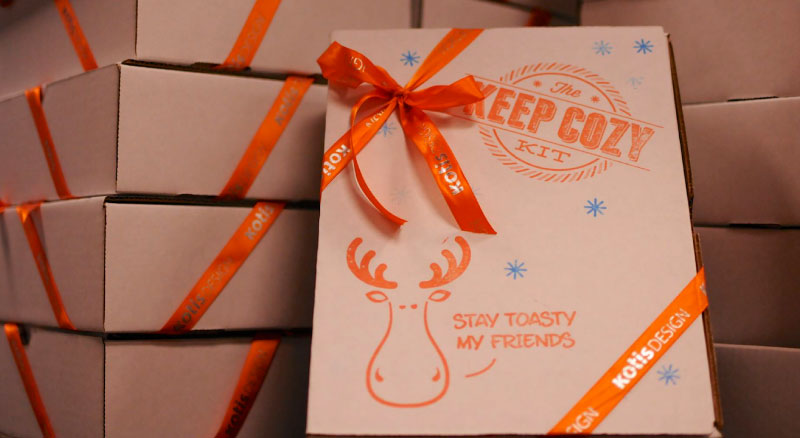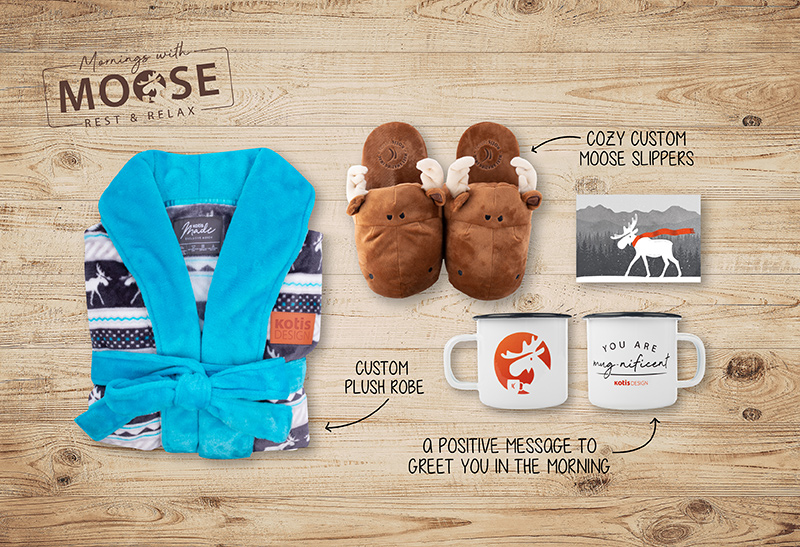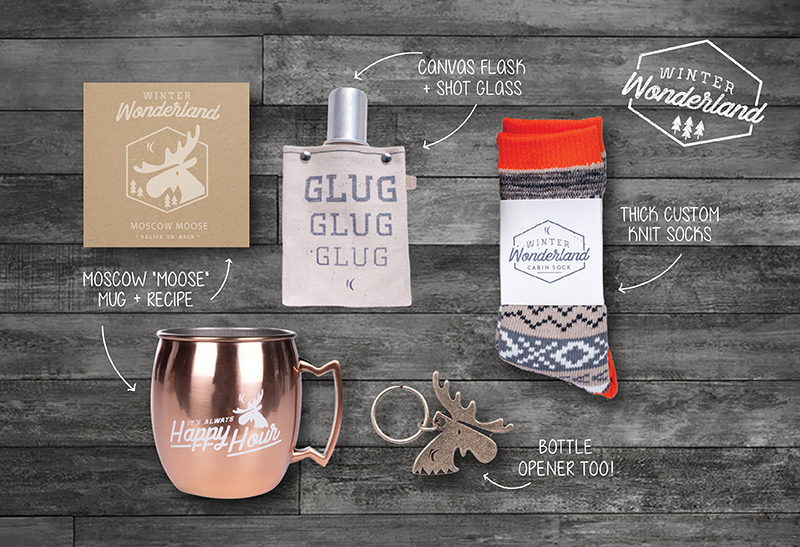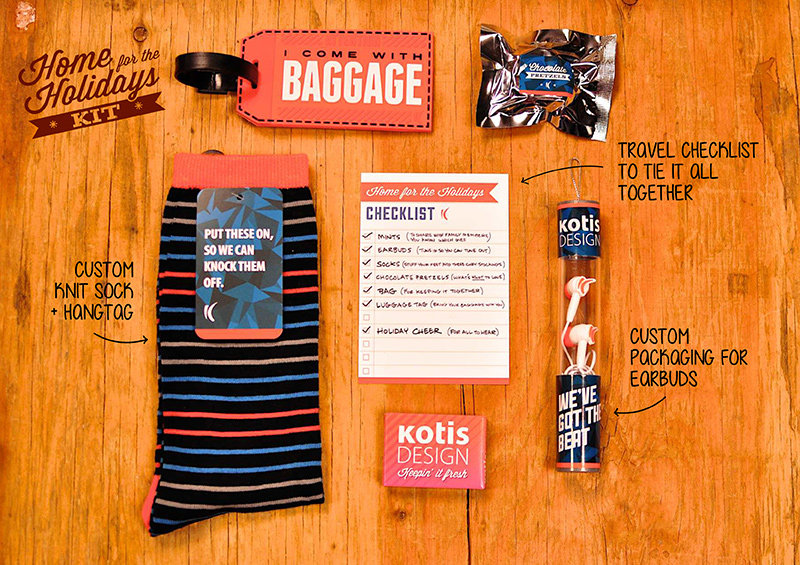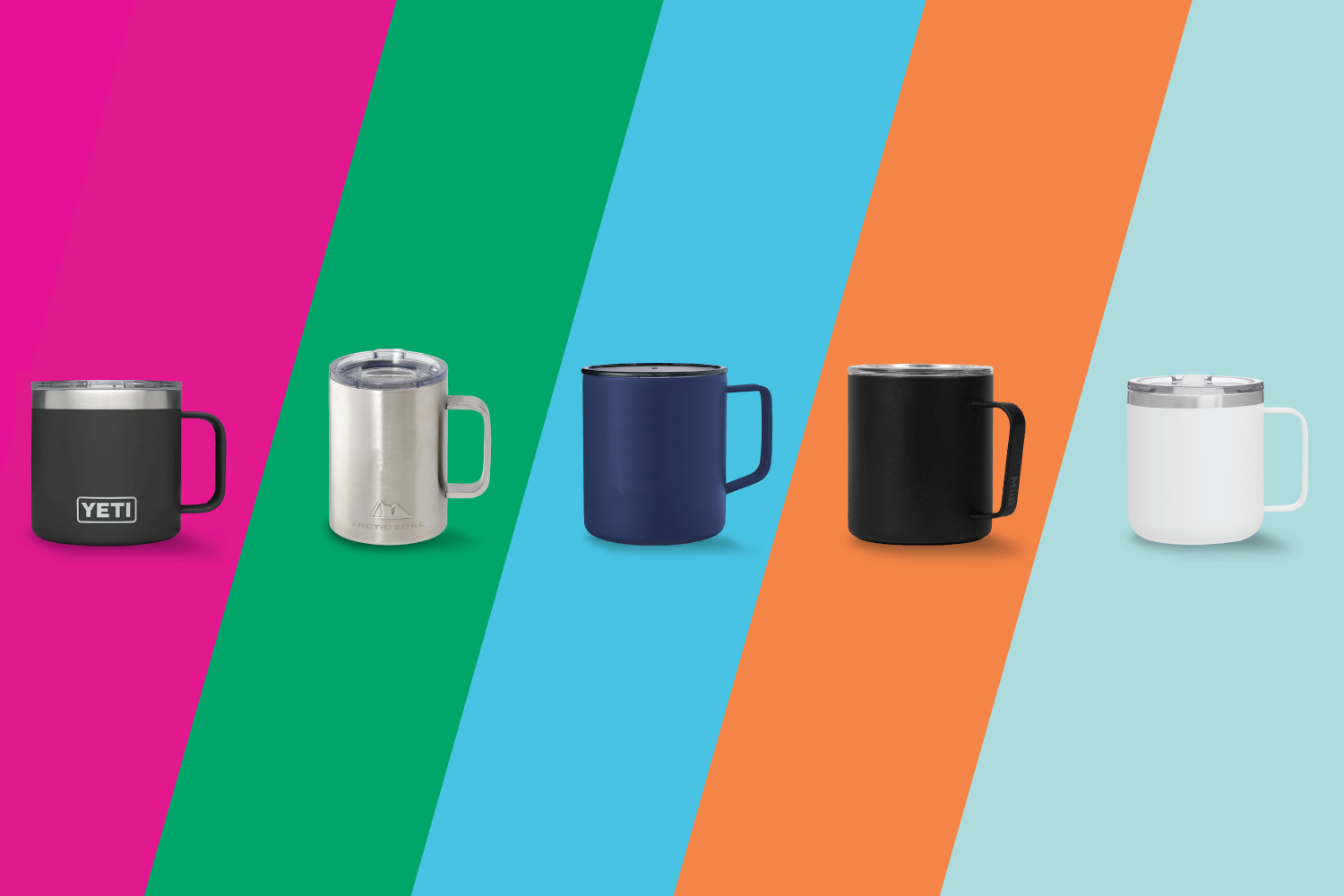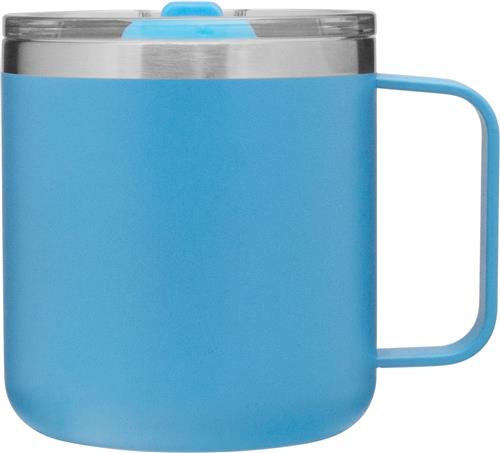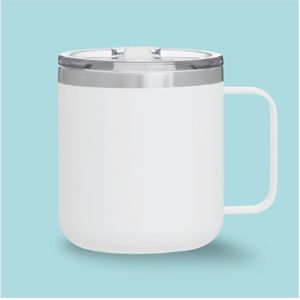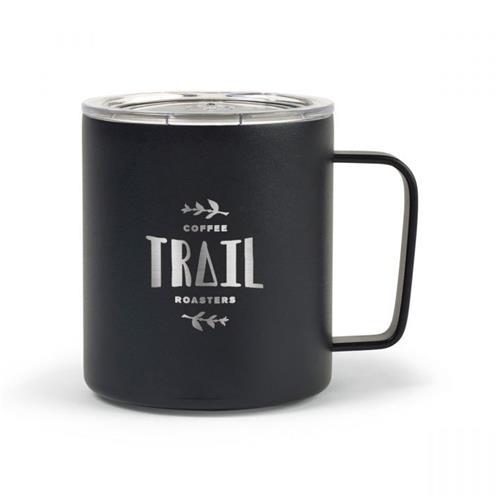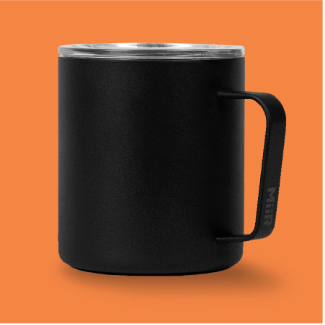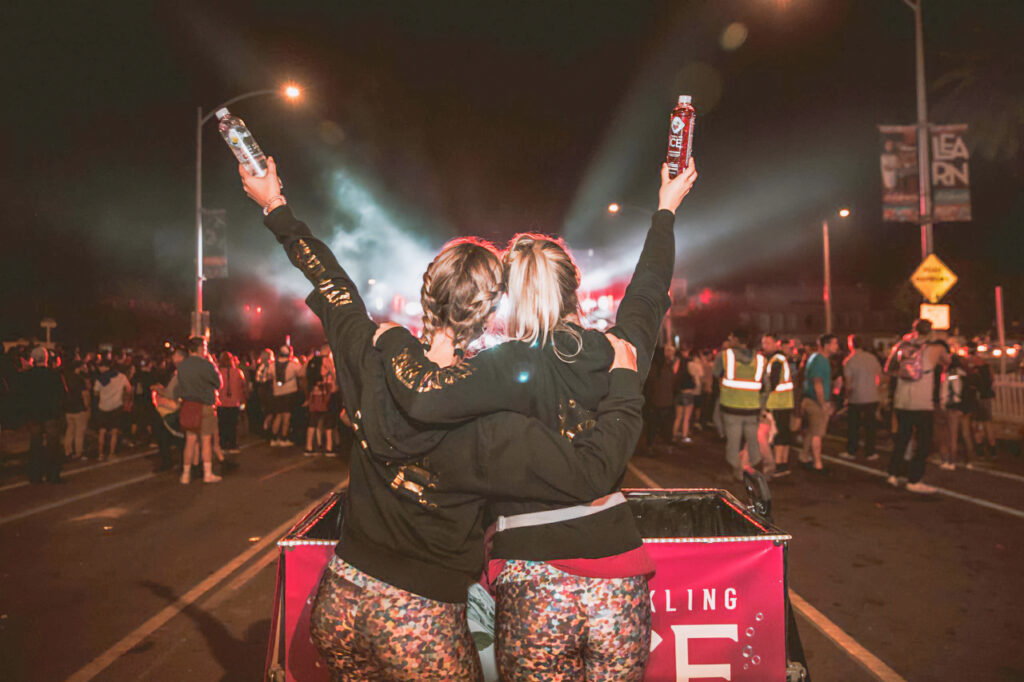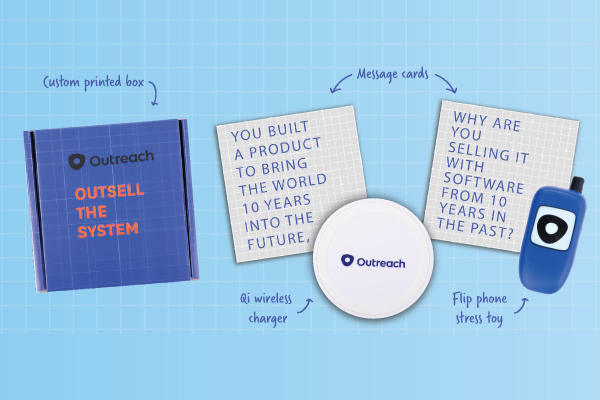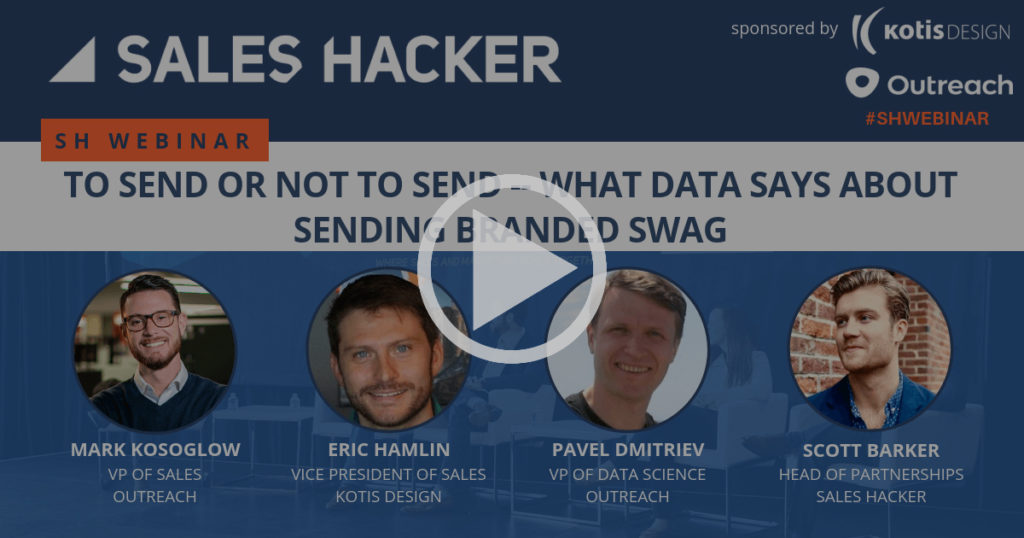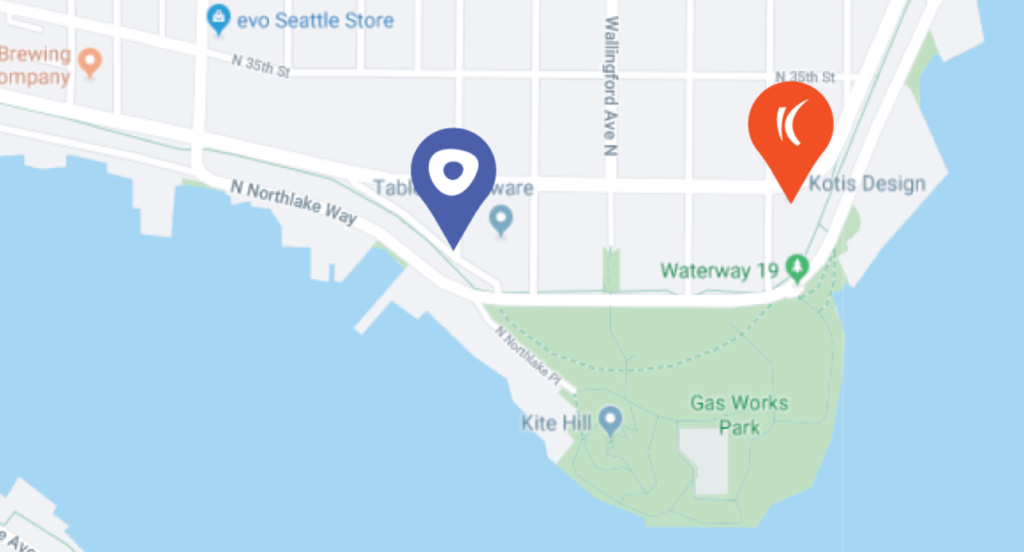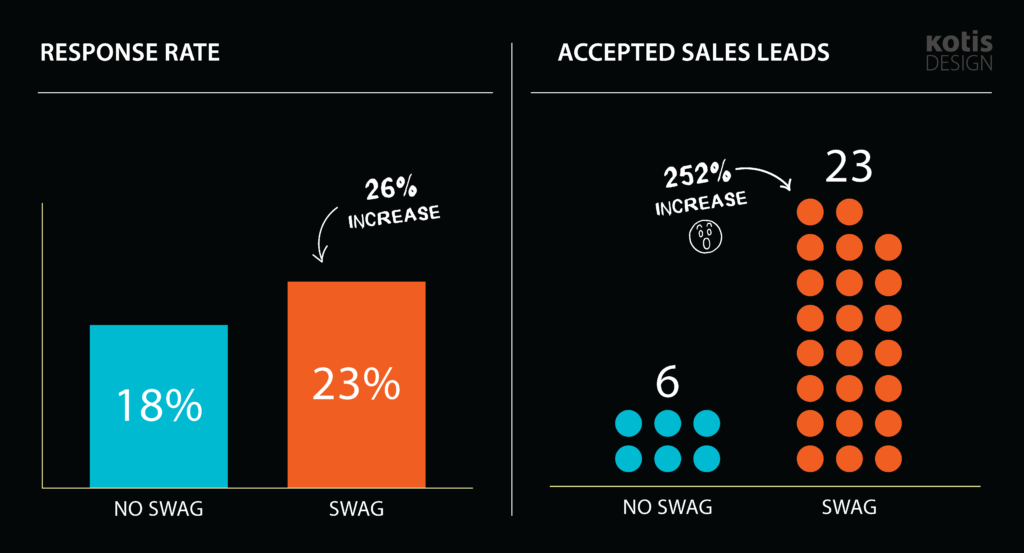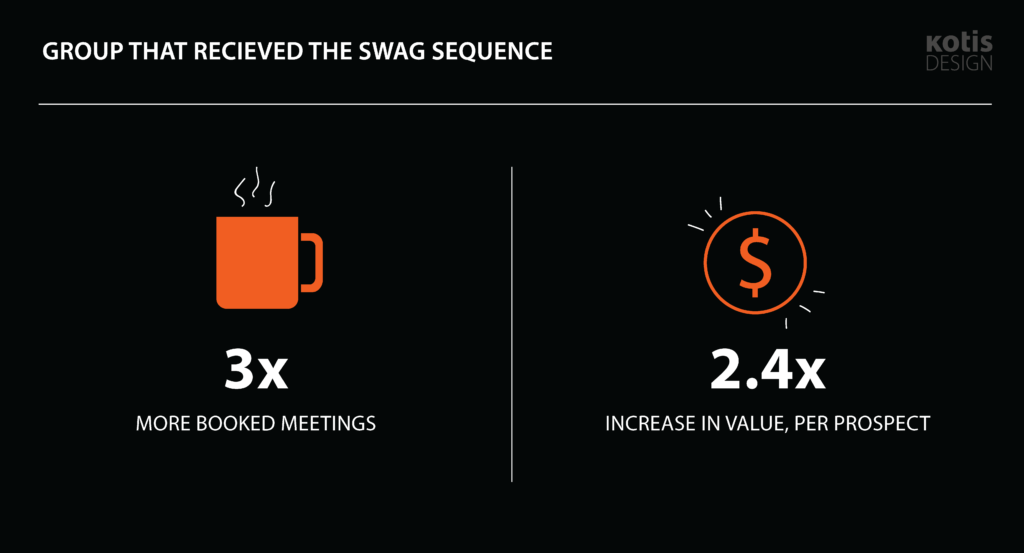Help Us Support Those Affected by the Wildfires
As someone who lives in San Diego, the threat of wildfires has been a reality that is both scary and sobering. While we’ve been fortunate compared to our neighbors in Los Angeles, the devastating impact of these fires across my state has moved us to take action. We want to ensure all our clients are aware of how they can help those in need during this critical time.
The Best Items and Brands We Saw in Vegas (PPAI Expo)
We survived the PPAI Expo—barely! Every January, nearly 1,000 suppliers get together in the largest promotional products trade show in North America. After 25k steps each day, checking out hundreds of vendors, and touching and testing countless products, we're here to give you a glimpse of what we loved.
A New Era of Sustainability in Promotional Products
For years, the term "sustainability" has buzzed around the promotional products industry. We've seen compostable pens, certifications from groups like QCA, and plenty of discussions—but it often felt like just that: talk. Clients asked us about sustainable options, and while we could point to initiatives and products, the impact seemed nebulous. However, this year marks a tangible shift—a real change in how sustainability is approached in our field.
Rubik's Cube Solution
2x2 Rubik's Cube Solution
Step 1: Solve one layer
While there are algorithms for this step, it is feasible for most people to go without them, which means fewer things to memorize. I recommend practicing just the one layer and getting comfortable with that before moving on.
I use white as the first layer, which we’ll call the “top” layer. The top layer includes both the white side AND the red, green, orange, and blue parts that are physically connected to the white pieces. It should look like this when step 1 is completed:
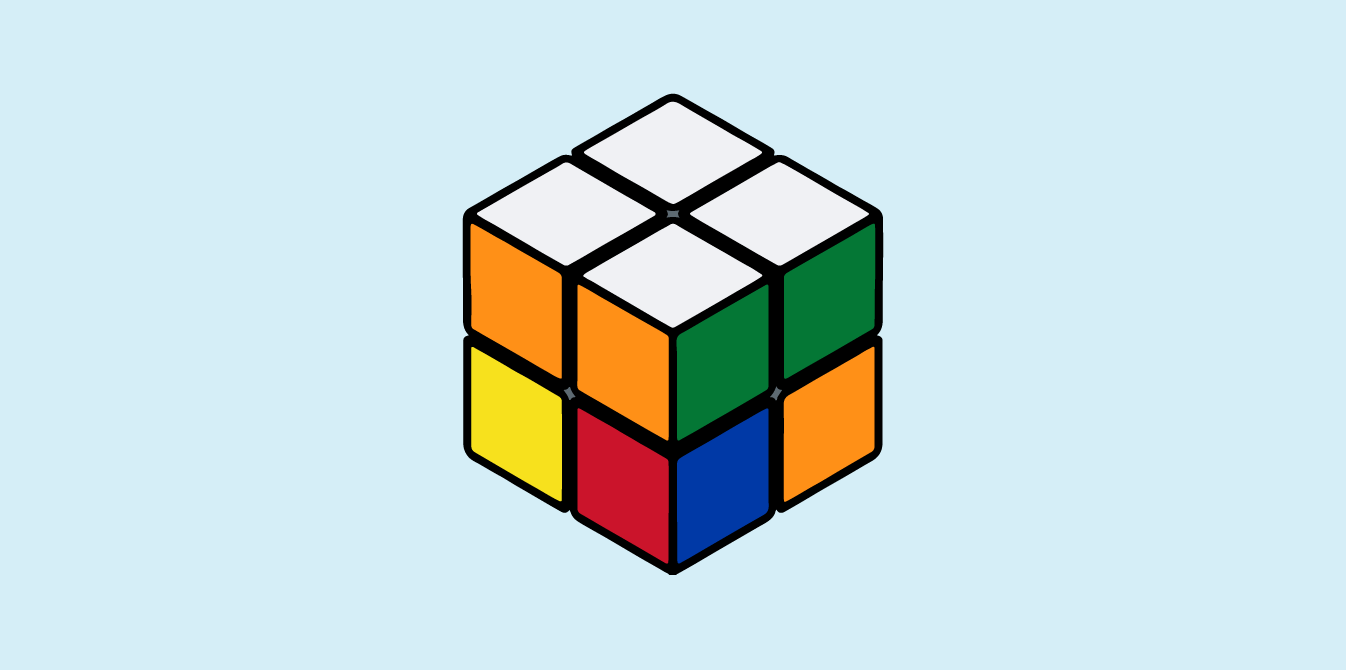
If you prefer to memorize an algorithm for this step, there is an example here.
Step 2: Position the 4 bottom corners
The goal in step 2 is to get the remaining four pieces into the correct location, even if they are not oriented correctly. The orientation of individual pieces will be fixed in the final step.
How the algorithm works
In this guide, you should always hold the cube with the white layer at the top, and yellow will eventually be on the bottom. The front will change at each step.
The algorithm will specify whether to turn the left face (L), right face (R), front (F), or bottom (B). It will either be clockwise (+), counterclockwise (-), or twice (2). For example R+ L- B2 would mean to turn the right clock wise, then the left counterclockwise, then the bottom twice.
Rotate the bottom four pieces as needed until you find at least one piece (but ideally 2) in the correct position. If all four are correct, skip to step 3.
We will use an algorithm to swap two bottom corners with each other. The other two bottom corners will remain unmoved. Hold the cube so that the two to swap are on the right, and the two to keep are on the left. Reminder: always hold the cube with the white layer at the top.
Swap two right corners:
L- B+ R+ B- L+ B+ R- B2
You may need to repeat this step a second time. Continue until all four are in the correct location. They should look like this:
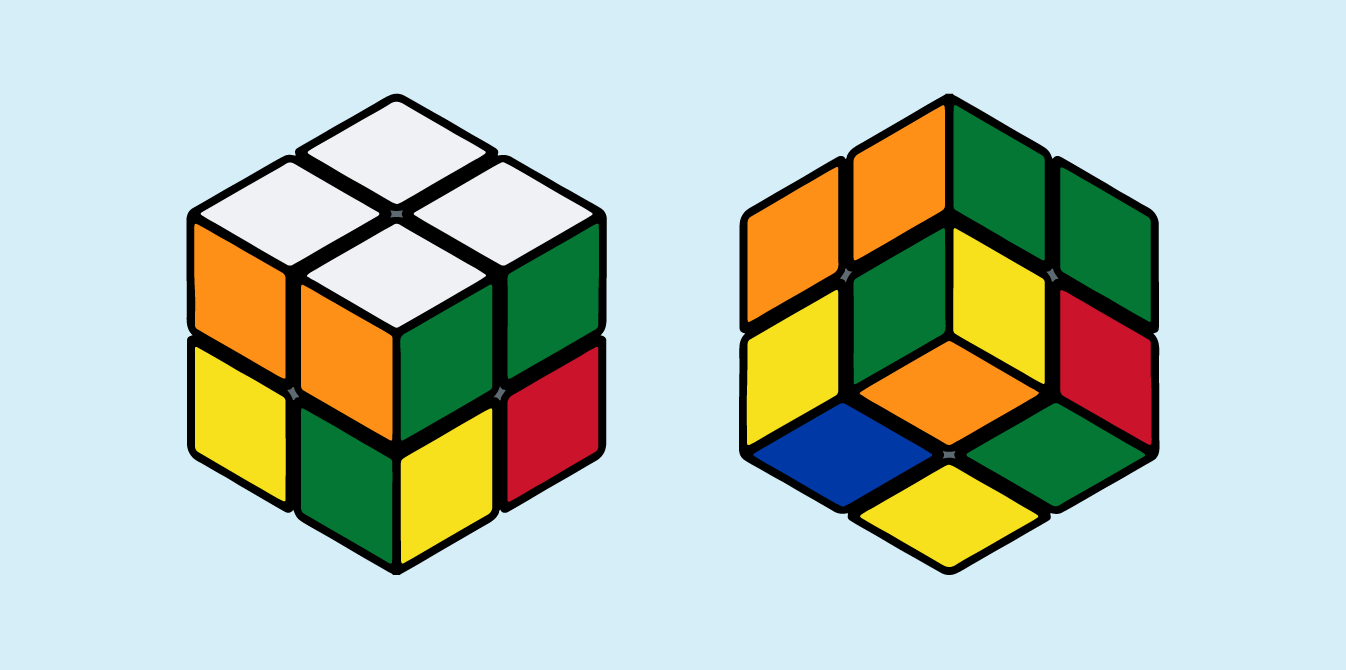
Step 2: Position the 4 bottom corners
The goal in step 2 is to get the remaining four pieces into the correct location, even if they are not oriented correctly. The orientation of individual pieces will be fixed in the final step.
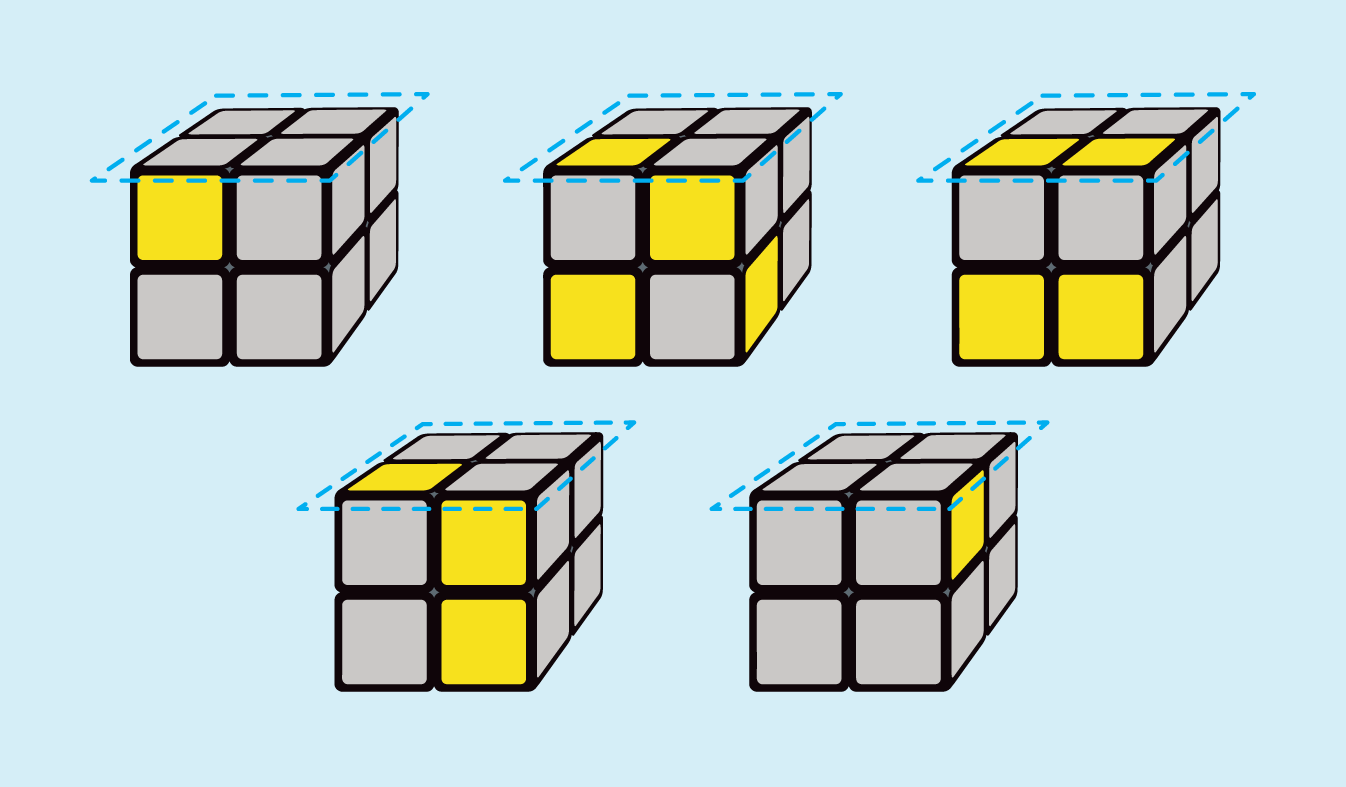
Based on which diagram it matches, the side with the dashed lines should be the front (Always hold the cube with the white layer at the top), and then do the following:
R- B- R+ B- R- B2 R+ B2
If it is not yet solved, go back and match the diagram a second time. You may need to do this step up to 3 times.
Solved!
Royal Apparel Examples
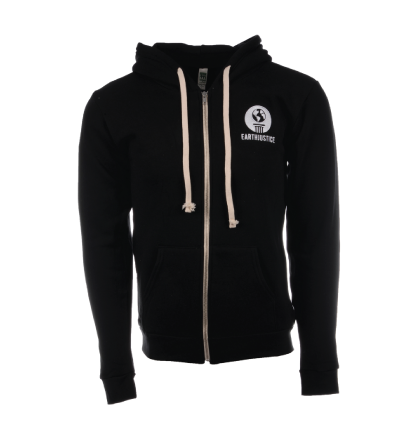
Delphix Gradient Hoodies
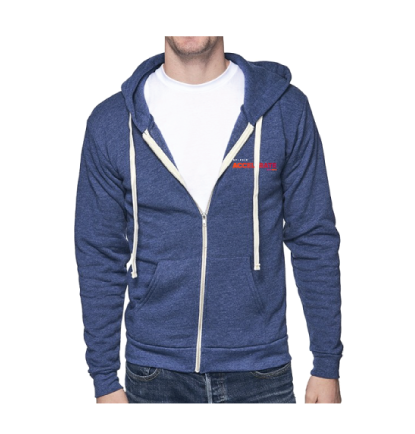
Earthjustice Staff Gifts
Marine Layer Examples
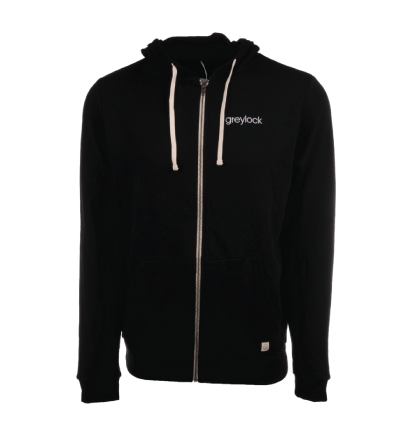
Spokane BLM Veterans Wildland Fire
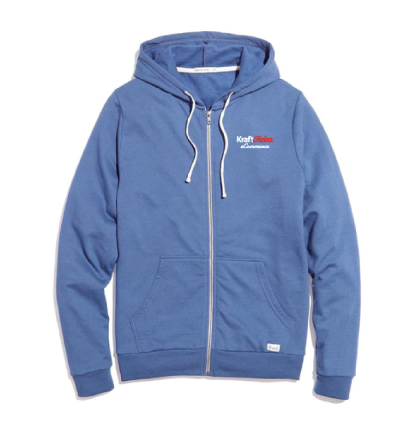
TuSimple Holiday Gift
Carhartt Examples
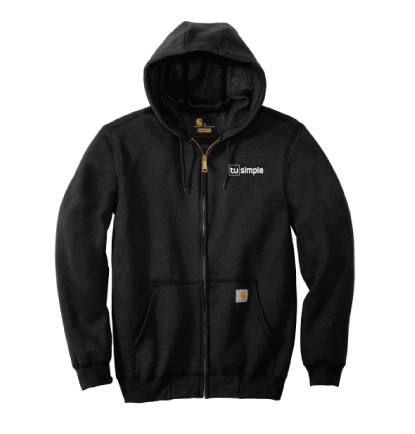
Earthjustice Staff Gifts
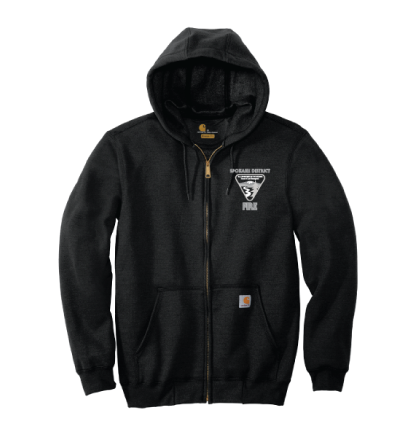
Earthjustice Staff Gifts
Kotis Recognized for 2024 Game Changer Award
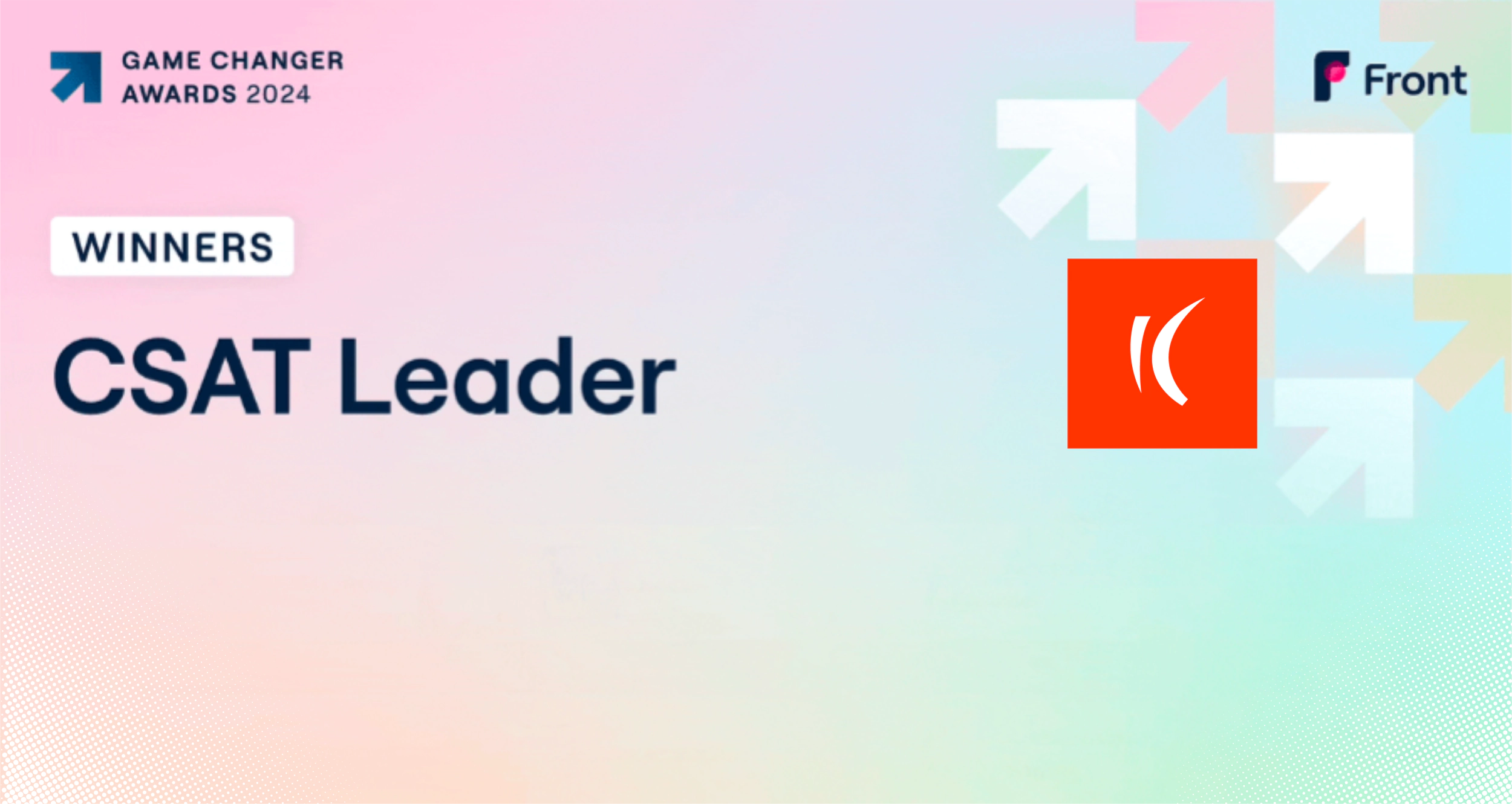
BLOG / AWARD
Kotis recognized for Front’s Game Changer Award in top customer satisfaction scores
Jake Bjorkgren | January 29, 2024
Kotis was recently recognized as a 2024 Game Changer Award winner by Front, our email/client contacting service provider. This annual award is given to a select number of Front customers who surpass the industry average for CSAT (Customer Satisfaction) scores. To give some context on how awesome this award is, 100 users are chosen out of more than 8,500 total Front customers, which puts Kotis in the top 99% when it comes to Customer Satisfaction.
To REALLY give this some perspective, in 2023:
- The Kotis Customer Service team held 54,273 conversations with customers/end-users in Front
- Average response rate across all conversations was 1.5 hours
- Kotis had a 94.7% CSAT average score, with 90% of those giving Kotis a 5-star rating
- Out of 658 survey responses, 596 (90.6%) of customers/end-users gave Kotis a 5-star rating for their customer service
Pretty awesome, huh? Even better, check out some recent comments regarding the our Customer Service:
- “Great communication, wonderful help in this current situation. I feel so so valued as a customer!”
- “Super grateful for the thoughtful and quick responses!”
- “Your customer service is awesome. I received responses in a timely manner and my situation has be fully resolved. Thank you!”
As you can tell, this is an incredible award to win for 2024 and truly shows the passion and dedication our CS team brings to our customers and end-users on a daily basis.
P.S. Here’s a great article outlining the Game Changer Award and what it truly stands for.
Bethesda Case Story
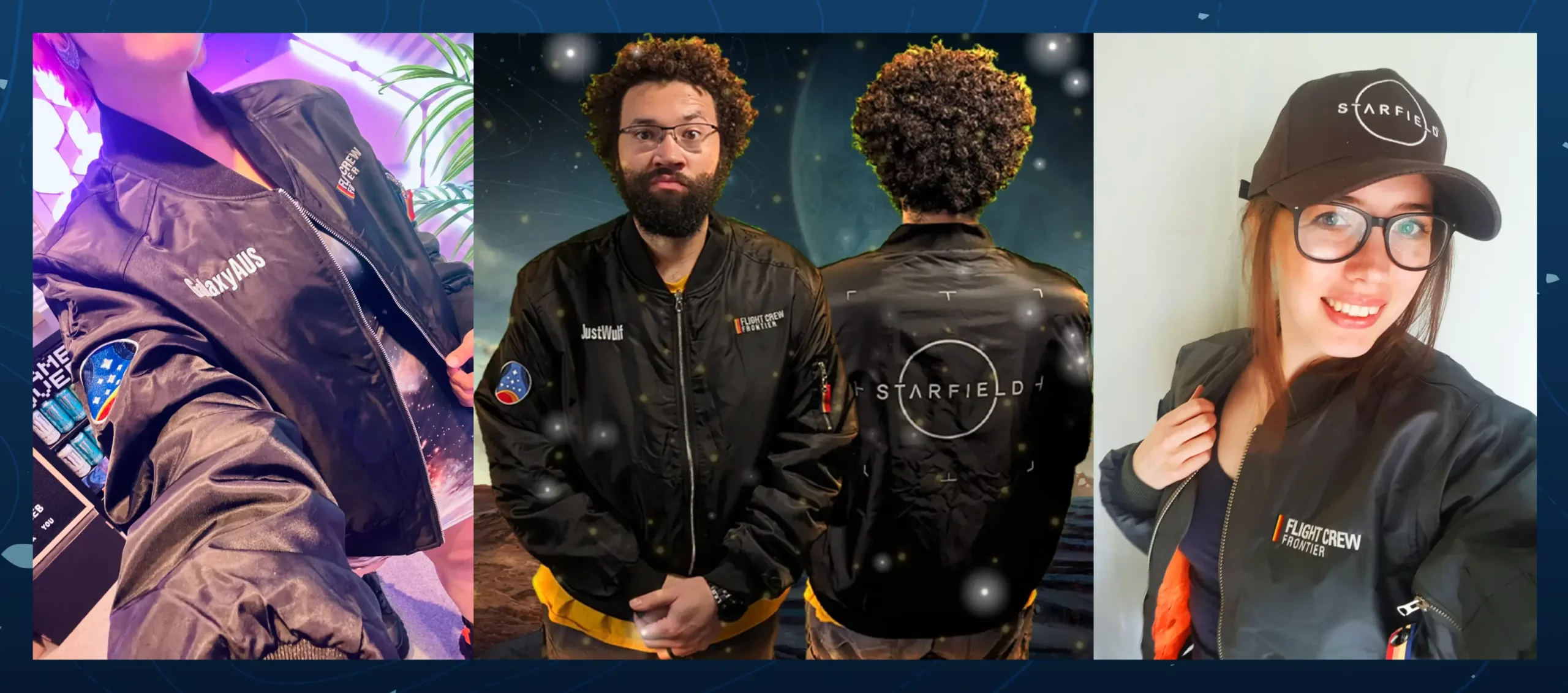
Creating a fan favorite giveaway:
The reversible Starfield flight jacket
In September, the video game Starfield became the most popular game in the US. Flashback to earlier this year, Bethesda, the studio behind the game, came to Kotis looking to create an exclusive giveaway for the highly anticipated launch.
Bethesda had a specific bomber jacket in mind, but after searching for the right style we realized this would need to be built from the ground up to get the look they wanted. With the launch date looming, our Kotis Custom sourcing team kicked into gear with developing the specific flight jacket style, customizing the fit, and adding a slew of decoration details like a reflective full back print. A special set of jackets also received individually embroidered gamer tags on the right chest for an extra level of personalization… and flight jacket status.
However, the killer feature (which was a surprise to many fans), is that the jacket can be reversed to reveal an all over star pattern. Who doesn’t love a two for one piece of outerwear?
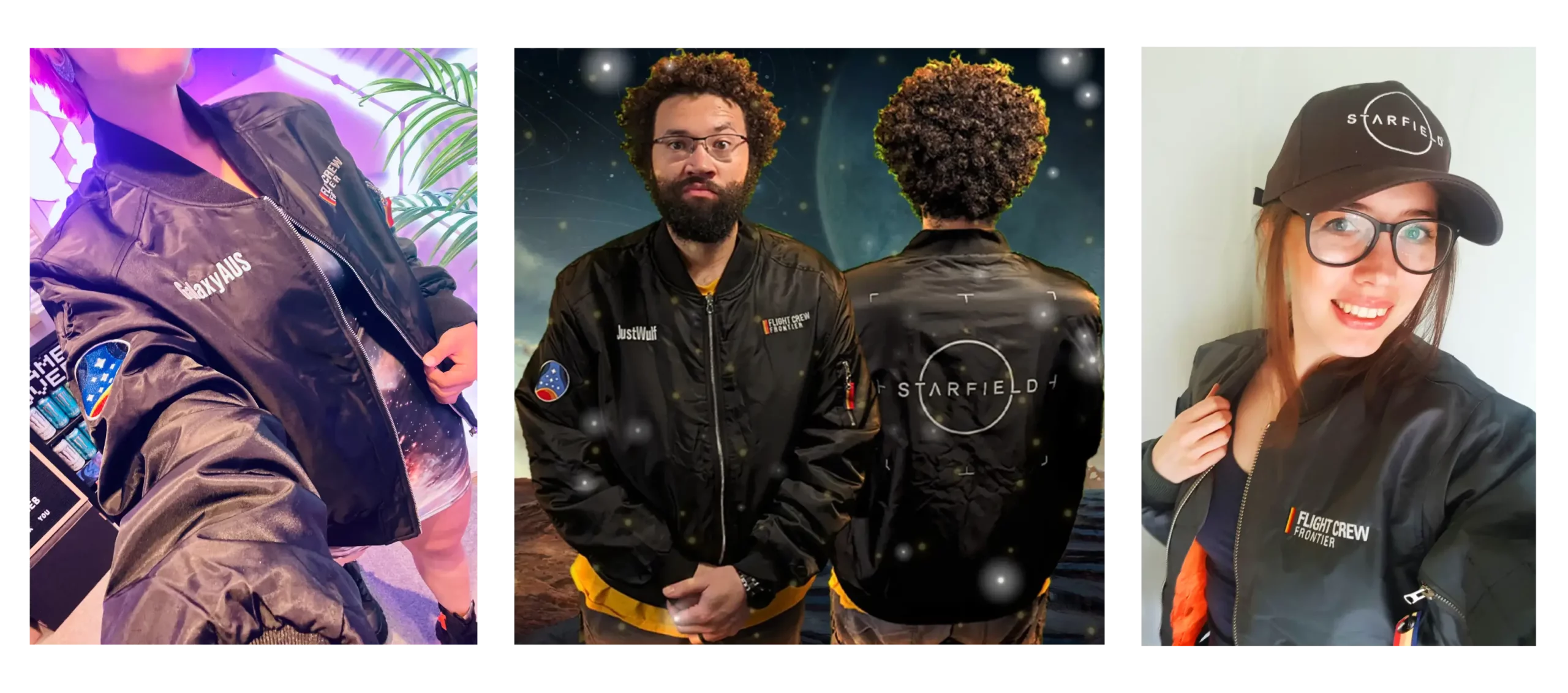
Creating a fan favorite giveaway: The reversible Starfield flight jacket
The video game Starfield became the most popular game in the US in September of 2023. Flashback to earlier that year, Bethesda, the studio behind the game, came to Kotis looking to create an exclusive giveaway for the highly anticipated launch.
Bethesda had a specific bomber jacket in mind, but after searching for the right style we realized this would need to be built from the ground up to get the look they wanted. With the launch date looming, our Kotis Custom sourcing team kicked into gear with developing the specific flight jacket style, customizing the fit, and adding a slew of decoration details like a reflective full back print. A special set of jackets also received individually embroidered gamer tags on the right chest for an extra level of personalization… and flight jacket status.
However, the killer feature (which was a surprise to many fans), is that the jacket can be reversed to reveal an all over star pattern. Who doesn’t love a two for one piece of outerwear?
Bethesda
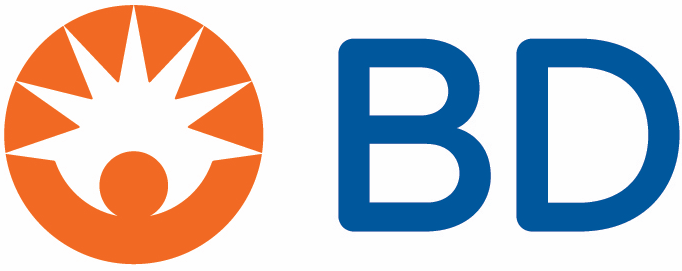
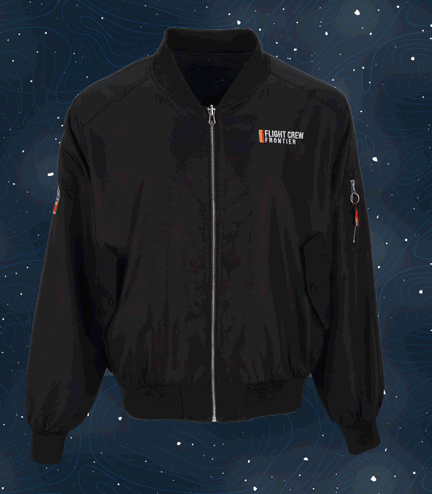
Reversible, for when you want a little more star
Collecting fan info with ease
Bethesda leveraged our Redemption page (one of our portals made for giveaways) to collect sizes, gamer tags and shipping info from fans who received a code. We then drop shipped 1000+ individual orders all over the world with firm delivery deadlines to align with the overall launch timeline.
The flight jacket has gained rave reviews on social media and was showcased on Starfield Gamer’s account.
We love seeing your merch out in the wild and connecting with users. Are you looking to thrill your fanbase and make merch people are pumped to wear? We can help.
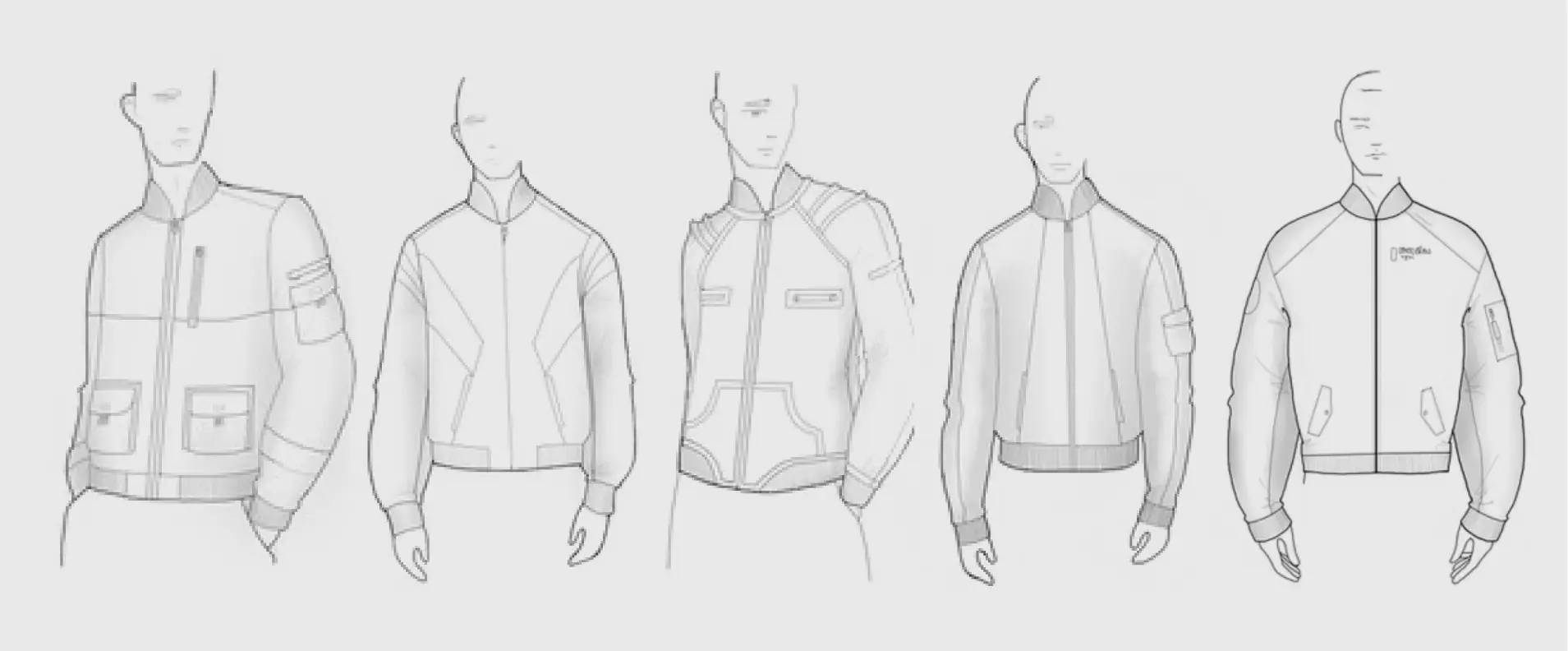
Logistics matter
Logistics isn’t always flashy but delivering thousands of custom sourced jackets (some individually embroidered), to fans around the world on specific deadlines, is the type of complete swag solution you can count on to thrill your people and make your swag life a little better.
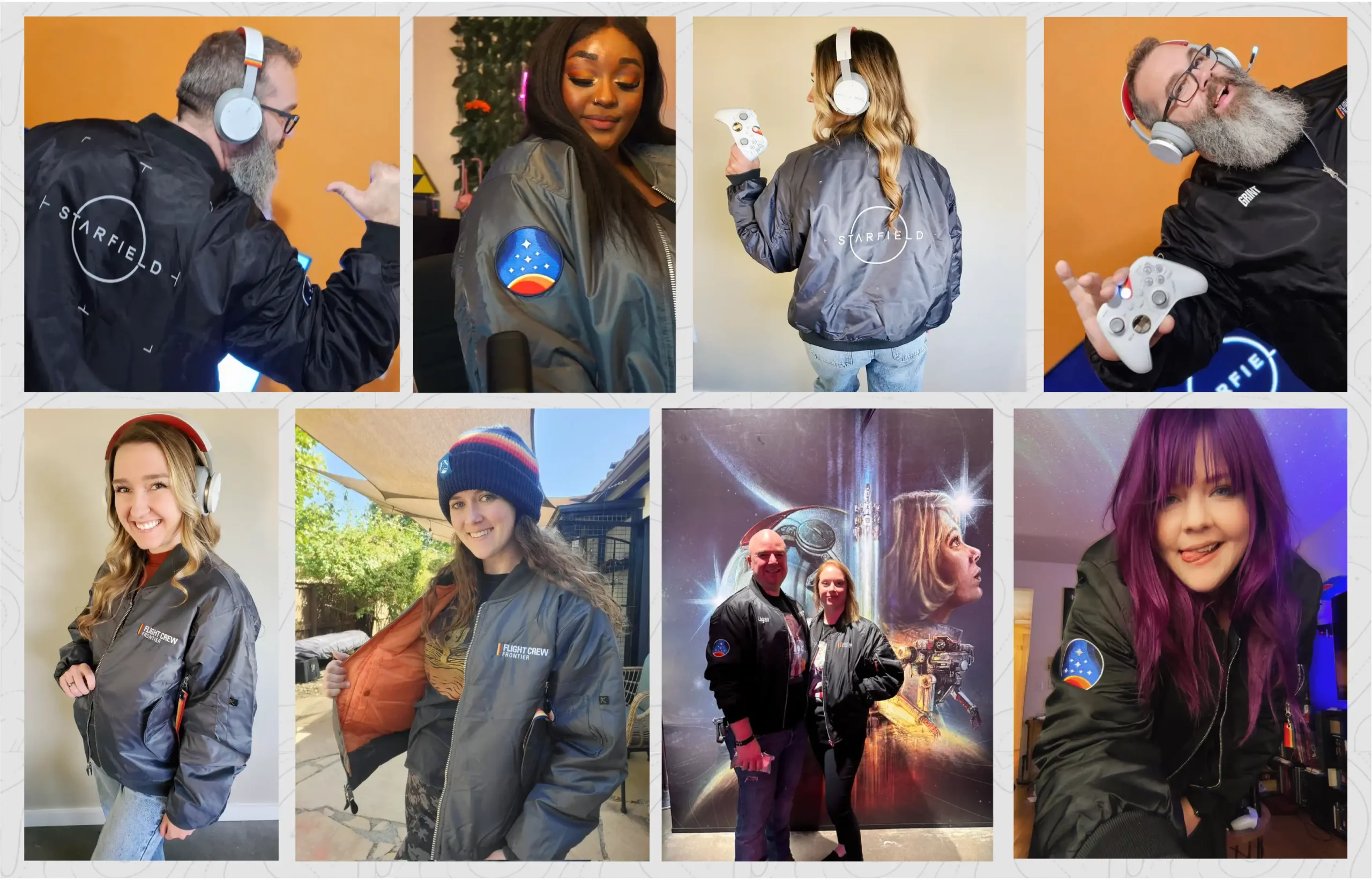
Let’s do out of this world swag together.
On-Demand vs Bulk Printing
On-Demand vs Bulk Printing
Jeff Becker | May 02, 2023
All businesses look for ways to improve efficiency and reduce costs. One way to consider doing this is by using on-demand printing rather than printing in bulk for apparel, water bottles, etc.
On-demand printing is a process that involves printing the design on the product only at the time the item is ordered. Businesses do not need to keep a large inventory of products on hand, thus saving them upfront costs for the product and storage costs.
Even though on-demand printing may seem like a cost-effective solution, it’s often a worse solution than printing in bulk for businesses looking to create high-quality products and keep inventory low.
Pricing Differences
While on-demand printing may seem like a cost-effective solution, it’s often much more expensive in the short & long run. On-demand printing costs more per piece than printing in bulk. The individual user pays more for the item and when the company adds up all the increased individual items, they will have spent more in the end as well.
When businesses print in bulk, they take advantage of economies of scale. This means the more products they print, the cheaper the cost per unit becomes. The fixed costs, such as setup and preparation, are spread out over a larger number of products. In contrast, on-demand printing does not allow businesses to take advantage of economies of scale, as they are only printing a few products at a time.
Quality Differences
On-demand is touted for reducing inventory, but another disadvantage of on-demand printing is that the quality of the products can often be worse than those printed in bulk. This is because on-demand printing requires businesses to use digital printing techniques, which do not produce the same level of quality as screen or pad printing. The colors may not be as vibrant, the design may not last as long and the details may not be as crisp. It also requires a massive reduction in product offering as this solution requires items to be in stock at the printer. In a world where we have endless variety, on-demand unfortunately does not take advantage of them.
In contrast, when businesses print in bulk, we use printing techniques resulting in a higher-quality product. It is imperative businesses create a premium product that employees and customers want to wear. In addition, bulk printing has far more options and flexibility allowing the product to be created to exact specifications.
Production & Shipping Differences
One would think on-demand means orders ship quicker, but this could not be further from the truth. Once an order is placed, the item is then put into production. The average time for an on-demand product to be made is 7-10 days and often times if the end user places an order for 2 very different items, these items are shipped from different locations as the production is completely different resulting in increased shipping costs, speeds, and confusion over where is the order.
However, buying in bulk allows the product to be stored and readily available to be shipped. Often those items are ready to be shipped same day. The sales, marketing and HR teams often need items last minute for a last-minute event, conference, tradeshow, employee etc and with on-demand the items very likely will not be an option.
Inventory Concerns
One real concern in buying in bulk is the business does not want to be sitting on a ton of product that they never use, maybe from of over buying or because the logo is no longer current.
A great middle ground, and our preferred approach, would be to print smaller, but more frequent bulk orders. Instead of buying 1,200 shirts you believe will last you six months, buy 600 shirts per quarter or even 400 shirts every two months. Businesses still will gain most of the cost savings (the difference between 400 and 1200 is far smaller than the difference between 1200 and 1) while still producing the best product possible, and the end users will have the inventory in stock at the time they place their order.
In conclusion, on-demand may seem like a great option, but in reality the product is often worse, the end result costs more, and the order will arrive to you slower. In today’s world, your brand is the most important. Make sure you’re buying a product of the highest quality, that will be kept the longest, and loved by the final user.
How to Save Your Swag From the Landfill
It’s inevitable. At some point in the future your brand will change, evolve, be acquired, or no longer exist. Which is not necessarily fun to think about, however having some foresight with how you make merch now can future proof your branded gear and potentially save it from the landfill. After all, 85% of all clothing ends up in landfill, yet 95% is recyclable (as noted in Marine Layer’s ReSpun program)
This was one of the main reasons Patagonia famously stopped allowing additional logos on their gear in 2021. Their argument was simple: items with co-branding tend to have a shorter life span, especially when someone is no longer with that company. Two years later, Patagonia reversed course and is now allowing additional logos once again, but with an emphasis on removable and discreet decorations. They also expanded their Worn Wear program to accept used Patagonia gear that has co-branding. They’ve developed new ways to remove embroidery, cover up logos or even replace panels in order to extend the garment’s lifespan.
Taking inspiration from Patagonia’s Worn Wear program and leaning on the experience of running our own print shops for over a decade, we gathered ideas and tips for how we think through co-branding, removable branding, upcycling, and eventually recycling. We hope this helps your gear last a very long time.
Branding that’s minimal and removable… brilliant!
Before we talk about covering up obsolete decorations, let’s look at ways to use your brand in a sophisticated, “non-yelling” sort of way in the first place. We’ve always been a fan of minimal, retail style branding. Many wearable pieces do well to keep your brand smaller and off center while allowing a separate message or the retail brand mark itself to be the star. Recipients will still clearly know where the item came from and will most likely use the item even more. Which really is the point, right? And if those decorations can also be more easily removed, it’s a huge win for your item’s second life.
Woven labels
We love the retail vibe woven labels provide. They’re also much easier to remove than any other decoration, especially a loop label that’s only sewn on one edge. They can also hold more detail than embroidery, so some of the small text and details of your brand can be showcased.
PRO TIP: Order extra labels and store them in our warehouse for sewing onto future merch.
Zipper Pulls
Taking another tip from outerwear brands everywhere, the zipper pull is a great place to bring in branding and even a pop of color on something that gets handled every time the user wears the garment or opens the bag. Which lends itself to leveraging the feel of the pull for a tactile interaction that most decorations do not offer. A rubberized PVC detail, a thicker webbing application or a corded pull with a certain knot structure all have a different feel and also set the tone for the style you’re invoking (i.e. the brand story you’re telling).
Pulls are not only for branding, they also enhance the usability of the piece, especially in outdoor conditions where the elements (or gloves) are in play. Coming back to the moral of the story here, they’re easy to remove or swap out… maybe the easiest. The zipper pull may be small, but it packs a nice brand punch, one that can also disappear one day if need be.
Hangtags
Think about the last shirt you bought. It had a hangtag, right? There’s a reason you see hangtags on every item you buy. It works. For a super low cost per item, you get a chance to showcase your logo and more importantly your brand story. It’s a first impression as the user unpacks the item with anticipation.
Kotis on Kotis: We attach a set of Kotis tags to all fully custom items we make overseas. The first card shows our brand on the front and our mission on the back (never miss a chance to speak to the why behind your brand). The second hangtag lists out the unique features of the item at hand. Then we throw in a diecut fist bump sticker at the end to reinforce our brand story that swag is fun and should bring joy.
The Cover Up
There will be a time when removing a logo or covering it up will be the best option to give your merch a second life. Here are ways to make that happen depending on the decoration method. Let’s dive in.
Patches
Since patches are a solid shape, they’re a great candidate for covering up previous decorations in one fell swoop. As mentioned in our Timbuk2 backpack upcycle story, bonus points for taking it a step further and using Velcro backed patches to allow for easy removal.
Embroidery removal
Embroidery is a beloved and ubiquitous deco method especially on outerwear, bags and higher end items. It’s not a removable decoration per say, however a trimmer tool called the Stitch Eraser can be used to “shave” off embroidered thread. Tiny holes from the embroidery needles are still left in the garment, but certain fabrics hide this better than others. For example, thinner fabric like pique knits show the damage more since it gets “chewed” up more from the needle punctures. Softshell jackets and thicker durable fabric with a little stretch are more forgiving. Either way the fabric will show some level of damage after removing embroidery, yet it still creates a cleaner surface to re-decorate.
PRO TIP: When using the stitch eraser, we always do so on the back of the embroidery so the backing material acts as a barrier to prevent from cutting the actual fabric. We also use seam rippers to pull any loose threads out. It’s time consuming, but safer for the garment.
Screen printing
Since ink cannot be removed from the fabric, screen print cover ups can be trickier, especially as the design size increases. Often the only option is a solid block that completely covers the obsolete decoration and allows for a new design on that block. Adding a white base or using black ink will help ensure the design underneath doesn’t show through, although it will make for a thicker print.
Our design team can help mockup creative options to see what sticks. In terms of styling, think street wear, concert tees and other trends that lend themselves to blocky graphics. Also, loading the garments on press for a reprint can add an element of difficulty since things won’t line up perfectly (although laser alignment tools do help), so make sure to have some wiggle room in the graphic.
Heat transfers: For smaller designs, transfers can be a great option since the transfer material itself can be lined up precisely by hand before the heat press is clamped down.
All that being said, donating or recycling the shirt may be a better option. More on that below.
Recycling
If the item cannot be salvaged with creative cover ups or removable branding, then finding a place to recycle the item is the next best thing.
Marine Layer’s incredible Re-spun program lets people to send in old tees (or drop them at a store) and get $5 credit. Since starting in 2018, they’ve diverted nearly 500,000 tees from landfill and saved 2.6 billion gallons of water using Re-Spun cotton. They have a goal of being tee neutral by 2025.
Patagonia’s expanded Worn Wear program allows people to trade in used Patagonia gear with co-branding. They developed new ways to remove, cover up or even replace logo’d panels in order to extend the life of the gear. “We’re still organizing Worn Wear to take back in a big way all of these logoed items in closets,” said Sean Willhite, group sales manager at Patagonia. “We’re really excited about that.”
SwagCycle helps companies upcycle, recycle or donate obsolete swag in a sustainable way.
The Future of swag
How you make merch matters. With a thoughtful approach, your branded swag can not only look great now, but have a much longer life in the future.
Let’s do sustainable swag together.
An Upcycled Story; Bringing New Life to a Logo’d Backpack via Velcro
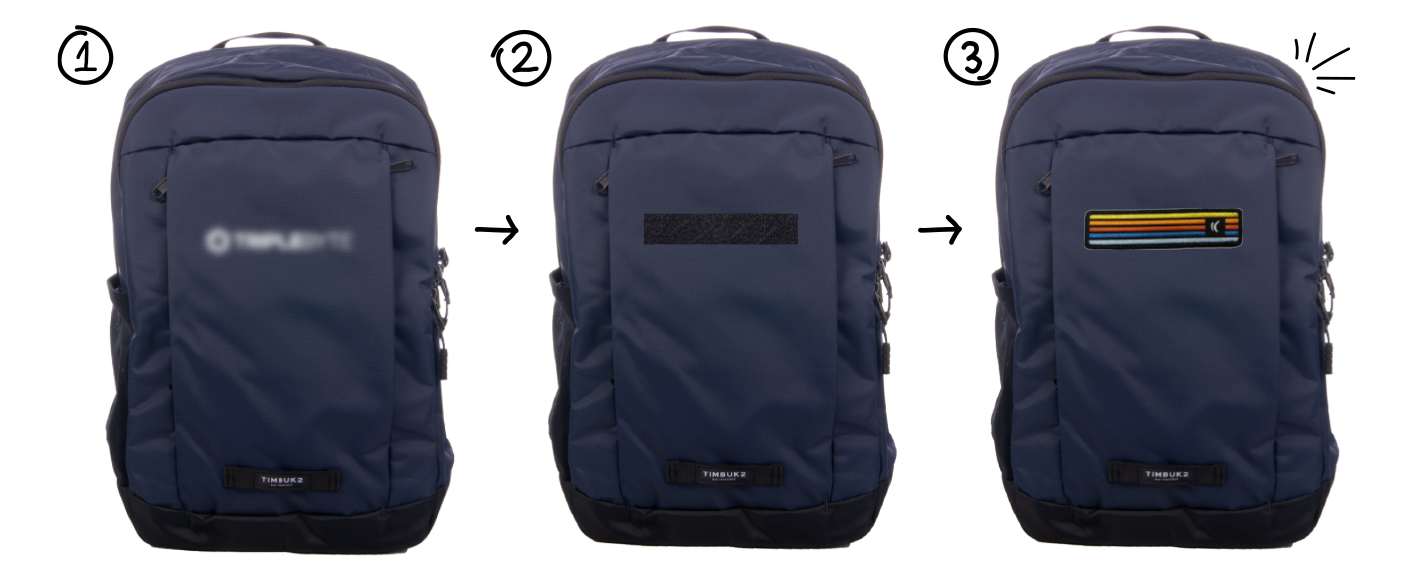
SUSTAINABLE / BLOG
An Upcycled Story; Bringing New Life to a Logo’d Backpack via Velcro
Nic Thomassen | April 20, 2023
When one of our clients was acquired, all their branded inventory stored in our warehouse suddenly became obsolete. Whenever this happens, we work through what can be recycled or donated to divert as much as possible from landfill. However, if a client wants to keep the expired brand from getting out there, the landfill can be an unfortunate side effect. That’s where upcycling and some creative brand cover ups can come into play. This can take some unique problem solving and decoration know-how, which is where our pro design team and years of running an in-house print shop come in handy, and created our upcycled backpack.
Enter the logo’d Timbuk2 backpack… and a large logo at that, about 4.5”wide. The pack was the highest ticket item in the lot. We first sewed on a black strip of velcro to cover the existing embroidery. Then we designed and produced two patches with velcro backing to adhere to the bag.
Why velcro? The new branded decoration is now removable to future proof this piece of merch from other forms of irrelevancy, whether it be acquisitions, mergers, or brand redesigns.
Why 2 patches? We wanted to give our crew options on how to style their backpack. Plus, one patch is reflective for those adventuring in the darker hours.

The second life
What was the second life of the upcycled backpack you ask? It was given as a Kotis employee appreciation gift to our entire warehouse and print shop crew. And if any of them end up finding a new gig one day, the Kotis patch can simply be peeled off to give the bag even more lifespan.
If you have any items that are in need of upcycling, recycling or donating, reach out and we’ll be happy to brainstorm options.
Let’s do sustainable swag together.
Global Fulfillment Centers, Why You Don’t Need Them
Global Fulfillment Centers, Why You Don’t Need Them
Jeff Becker | December 1, 2022
As we expand our reach, and with the rise of remote work and more distributed work force, companies increasingly have reasons to ship items all over the globe.
Unfortunately, international shipping isn’t as simple as sending something domestically.
That is because of challenges with:
Higher costs
Duties & taxes
Long delivery time
Customs challenges
We have 2 fulfillment centers, one in Utah and one in Ohio, but we’re asked about global fulfillment centers on a regular basis to solve these 4 issues. In the past we’ve partnered with international 3PLs (third party logistics), and have looked at many options in different countries.
After a deep research dive and digging through the data, having global fulfillment centers is not a great solution to these issues for most of our clients and the majority of cases.
Geographical distance
One common misconception is that geographic distance is the primary driver of costs. While it certainly has some impact, many industries have supply chains that move materials between multiple continents before sending final products back to where they started. In some cases, geography is outright irrelevant, for example it’s cheaper to ship to Israel from the United States than from Europe.
For our business, the single biggest factor is simply whether the package can avoid customs clearance – and the only way to do that is if the end user lives in the same country as the fulfillment center. The reason shipping from our facilities to US locations seems so easy, affordable, and quick is that we aren’t dealing with clearing customs into another country.
For example, if you’re shipping to India and the fulfillment center is in India, it’s probably (keep reading) easier, cheaper, and quicker than shipping from the US. But if the package being shipped to India comes from anywhere else (even nearby in SE Asia), almost all the exact same problems exist as shipping from the US, but with new issues added. You still have higher costs, duties & taxes, and longer delivery times, all because of the need to clear customs.
If a client is almost exclusively in a single country, other than the US, then Kotis may not be their best option. They should find someone who is based out of that country and can source items from that country. But most companies do not have recipients in a single country; and each client has recipients in different sets of countries. To solve the underlying issues, many warehouses in many countries would be needed.
Product Complications
Then there is the question about the product itself. If you have multiple warehouses there are two different options. Ideally, you’d produce items in the same country as the warehouse. However, this results in a client holding identical items in multiple facilities, leading to more inventory overall than if they consolidate in a single place, which leads to higher client costs, more vendors, and risk of brand inconsistency. What happens if one facility runs out of an item – does a single order end up being two shipments, one from each facility?
Finally, where is the product made in the first place? The other option is to make them all the items in a single country and ship items to each of the warehouse. For example, we could keep making all the product in the US, and ship in bulk to multiple fulfillment centers. The problem with this option is it simply shifts the complications around as we now have higher duties and taxes and longer lead times due to shipping the product in bulk vs simply shipping individual orders to each country.
No one in our industry, even the $1B/year companies, have warehouses in even the top 5 global markets. That’s because the logistics of managing warehouses in multiple countries is a nightmare and simply does not offer the cost savings most people think it might.
3PL Complications
Trying to establish our own warehouses with our own employees would bring substantial legal and financial obligations while also being entirely impractical without massive scale in each location. We’d likely have to find a 3PL. But can they provide the same services? Can they meet our timelines? Can they comply with strict customer security requirements? Can they integrate with our platform? Are there any language or culture barriers? Will kitting and packaging be consistent?
There are variables we simply cannot guarantee will meet our Kotis standards when taking operations outside the US. We have instead focused our efforts on optimizing our existing warehouses, finding features and cost-saving measures that likely exceed potential savings from managing additional warehouses.
Kotis Design Named Market Leader in G2’s Fall Promotional Product Management Tool Report
September 17, 2021
Introduction
The results are in! For the fourth consecutive quarter, Kotis Design’s Swag Platform has been ranked #1 on G2’s list of Promotional Product Management Tools By combining truly unique swag, our world-class, in-house print shops, and a leading software solution, Kotis Design has created the most compelling offering for promotional products.
Overall grid for Promotional Product Management tools
As our industry continues to grow (annual spend in branded merchandise has increased by ~5%/year to over $25B), Kotis has continued to invest in our products, processes, and people to create the best solution for our clients.
With an increased focus on technology and services, Kotis now manages the promotional products for thousands of companies, from startups to Fortune 500s.
The Promotional Product Management category has become increasingly competitive as more brands turn to swag as a leading marketing and sales tool. Kotis is the only provider in our space that is listed as a leader for small business, mid-market, and large enterprises. In fact, our technology services rank highest in the following categories among top performers:
- Overall satisfaction
- Ease of administration
- Ease of doing business with
- Quality support
- Easiest to setup
Market grid for small businesses in Promotional Product Management
A Big Thank You to Our Customers
“The work that our customers have put in this past year as they’ve pivoted from in-office and in-person events has been amazing and inspiring,” said VP of Sales, Eric Hamlin. “We’re incredibly grateful that we were able to play a small part in making that transition as smooth as possible for our customers, their customers, and their people. Making swag that surprises and delights has always been core to what we do, and seeing how much a thoughtfully designed and delivered swag package, delivered straight to their front door, can make people happy has helped all of us at Kotis get through 2020.”
“The highly professional service from the staff at Kotis Design makes this resource one of the best I’ve ever experienced. Their comprehensive catalog of promotional materials, combined with the attention to detail and hands-on service, are second to none. Their processes are easy, streamlined, and smooth, and we have had no problems whatsoever in finding the right products, customizing them, and receiving them. Working with Kotis Design is a dream. Highly recommended.”
-Gary B.
“Having one company that can manufacture, warehouse, and run our ecommerce has been a huge benefit. Previously, I was working with over 20 vendors, running the web-store, and shipping orders myself. This has taken a lot of the ground work out, so I can focus on strategy and planning. I also value their ability to talk directly with the manufacturer, which they have relationships with–this helps guarantee quality and timelines.”
– Emily C.
About Kotis Design
We’re an industry-leading swag provider and a technology partner that offers a scalable eCommerce platform to help brands create, sell, and ship swag all around the world. From HR teams to sales and marketing sequences, we help integrate and distribute swag within your workflow. We make swag that people actually want to wear and use. Leverage our award-winning product design with a robust warehousing and fulfillment solution. Our two, US-based facilities combined with a network of overseas factories can send merch around the world. Well-timed branded merchandise can double or triple your opportunity value. Our Salesforce and Shopify integrations allow you to send merch when it makes sense, utilizing our warehouse and fulfillment teams. No need for a swag closet! Let’s build great merch, together.
SwagLab – The Best Blankets
Our favorite blankets to bring max coziness to your crew
Allison Buschur & Nic Thomassen | Table of Contents
A comfy blanket can be a key part to getting cozy on your couch or staying warm on the sidelines of a soccer game. Since they protect against the elements and provide those fuzzy feelings, we love leveraging blankets for gifting (and hygge). Most blankets have a certain connotation of relaxation and luxury that goes well with corporate gifting, especially holiday gifts (which also come at the time of year when seeking coziness is at a high).
After countless hours of snuggling, I mean testing, 14 blankets during weekly movie nights, outside in the cold, on flights to fend off those airplane chills, through lots of wash cycles, and trying to constantly heat up my icy feet (I’m thyroidless which means I’m always freezing, normally that’s not a good thing, but when it comes to blanket testing it’s a win), we think the Sackcloth & Ashes blanket is the best for gifting to your people. We also picked our favorites in categories like outdoor, puffy, wool, weighted, and more. For us, the snuggle is real.
Why gift a blanket?
Whether you’re looking for a client gift or one for your crew, a blanket brings many benefits. Here‘s why you should consider a blanket for your next project.
- Longevity: How long has your go-to blanket been around? Our testers still have blankets they formed connections with as kids (too long?). The point is, a high-quality blanket will stand the test of time. Your people could be using it for years (dare we say decades?).
- Utility: According to a recent ASI Global Ad Impressions Study, utility is the 2nd highest reason recipients hold on to promotional items, proving that swag with a purpose is kept longer. A well-made blanket is indeed useful, making it a great gift.
- Cozy factor: Branded merch isn’t often cozy. I mean, what promo product comes close to a blanket for cozy factor? There’s something to be said for a piece of swag that gets used for warmth and snuggles... your gift and brand could be there in those moments.
Our pick
Sackcloth & Ashes Blanket
A super soft throw with a BOGO missionOffered in over 51 unique designs/colors, this blanket has the most options by far. They're made in Italy with an eco-friendly, cruelty-free wool blend that’s also super soft. Their mission is inspiring: For every blanket purchased, they donate one to a local homeless shelter.
$152.67
Measuring 72” x 60” and weighing 3 pounds, a Sackcloth & Ashes blanket works at home or on the go. It’s the only pick with tassels, which gives it a classic feel. They also offer the most colors/patterns of all the blankets we tested (including a new National Geographic collection), some simple and others intricate, but all well done.
We love the blend of recycled fabrics that still maintain a super soft feel. This may become the go-to blanket your spouse or kids (or pets) fight over. Speaking of kids, Sackcloth & Ashes also offers some of their top designs in a smaller kid’s size measuring 48” x 38”. For every kid’s blanket sold, they give a blanket to a child in foster care.
Mission: Sackcloth & Ashes founder Bob Dalton felt inspired to help the homeless population after his mother found herself living on the streets in 2013. As he made calls to his local shelters to ask what they needed most, the demand was highest for blankets. As a result, Sackcloth & Ashes was founded and for every blanket purchased, they donate another to a local shelter. Their goal is to have donated one million blankets to homeless shelters around the country by their 10th anniversary in 2024. Sackcloth & Ashes is a brand that hits on a lot of great notes in terms of mission, branding, quality, and sustainability.
MOQ: 1 unit
Size: 72” x 60”
Material: Recycled Wool, Recycled Polyester, Recycled Acrylic
Decoration: Embroidery, Woven Label, Patch
Colors: 51 colors and 8 styles, Youth: 20 colors and 4 styles
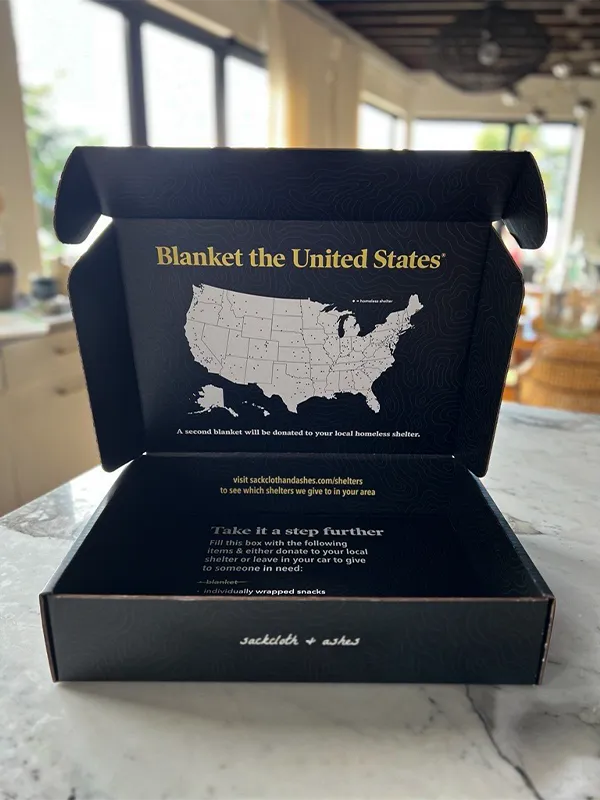
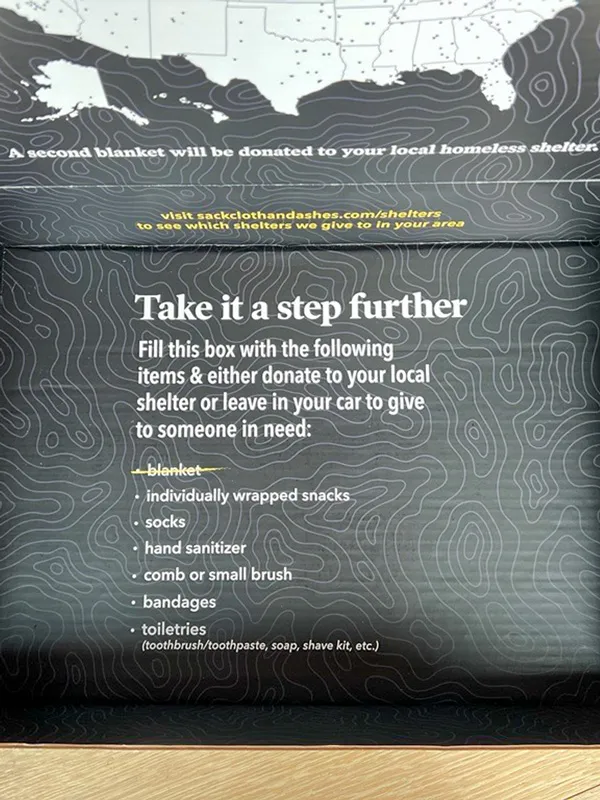
Packaging: Sackcloth & Ashes uses their shipping box and packaging in a unique way to showcase their mission. After removing the blanket, there’s text about how you can help fill the box with essentials and donate to a local homeless shelter. It’s a great unboxing experience that your people will appreciate.
Sackcloth & Ashes founder Bob Dalton felt inspired to help the homeless population after his mother found herself living on the streets in 2013. As he made calls to his local shelters to ask what they needed most, the demand was highest for blankets. As a result, Sackcloth & Ashes was founded in 2014. In fact, they’re so passionate about providing for the homeless that for every blanket purchased, they will donate another to a local shelter. Their goal is to have donated one million blankets to homeless shelters around the country by their 10th anniversary: June 1st, 2024.
Measuring 72” x 60” and weighing 3 pounds, a Sackcloth & Ashes blanket is ideal for use at home or on the go, in virtually any season. Their unique designs and signature tassels on both ends take us back to simpler times. Choose from a multitude of different colors and styles (including their new National Geographic collection), some simple and others intricate but all tasteful. Made from the perfect blend of recycled fabrics, a Sackcloth & Ashes blanket will quickly become a prized possession in every household, and likely one that your family (and pets) will fight over.
Sackcloth & Ashes offers a first-class user experience from start to finish. It’s always a thrill to receive a package on your doorstep, but this one was an extra special experience. Once you unbox your blanket, it quickly becomes evident just how important their mission is to the company. Using their packaging, Sackcloth & Ashes gives all their customers the opportunity to make a difference by filling the box with common necessities and donating it to their local homeless shelters. Sackcloth & Ashes is truly a brand you can feel good about purchasing from every angle: mission, branding, quality, and sustainability.
$110-150
MOQ: 1 unit
Size: 72” x 60”
Material: Recycled Wool/Recycled Polyester/Recycled Acrylic
Decoration: Embroidery, Woven Label, Patch (Leather, Embroidered, etc.)
Colors: Adult – 51 colors & 8 styles/ Youth – 20 colors & 4 styles
Packaging
Premium pick
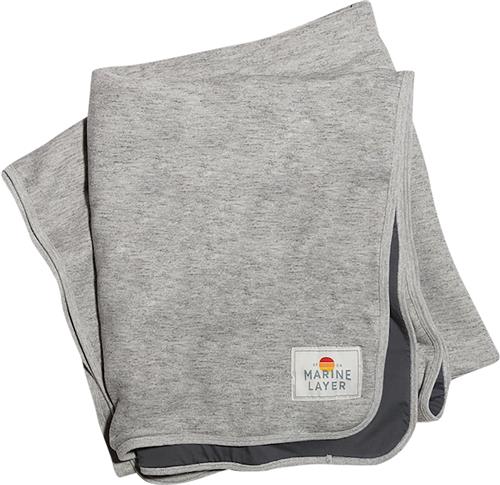
Marine Layer Lined Blanket
Lightweight and lined with softt-shirt fabric
Made with ultra-soft mock twist Sherpa fleece and lined with their signature sustainable T-shirt fabric, the Marine Layer Lined Blanket is light enough for warmer weather and warm enough to take the chill off. This is the only blanket we tested that can be dyed to your Pantone color (if you order 100), thanks to Marine Layer’s custom dye program.
$125.47 (custom dye: $150-190)
If you’ve worn anything from Marine Layer, you know how soft their clothing is. But you may not know they also make blankets (with the same commitment to softness and sustainability). The blanket is made in the USA with Marine Layer's signature cotton modal and lined with Sherpa fleece in a heathered grey/asphalt blend.
It will keep the cold at bay without weighing you down. Although you’re limited to a single stock color, the Marine Layer custom dye program allows you to match your Pantone color for something extra custom (which they do for apparel too, hint hint).
MOQ: 12 (custom dye: 100 units)
Size: 50" X 72"
Material: Outer Fabric - 50% Polyester, 38% Cotton, 12% Rayon; Inner Fabric - 50% Supima Cotton and 50% Micromodal
Decoration: Woven Label, patch, embroidery
Colors: Heather Grey/Asphalt Grey
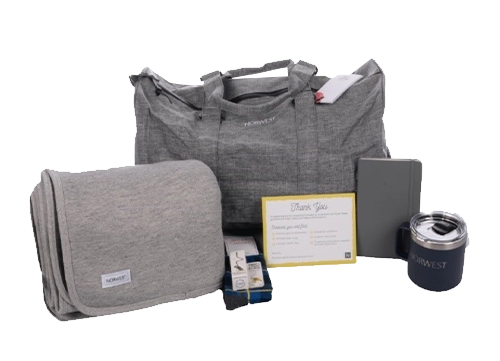
This spring/summer kit from Norwest features our premium pick, decorated with a subtle branded label.
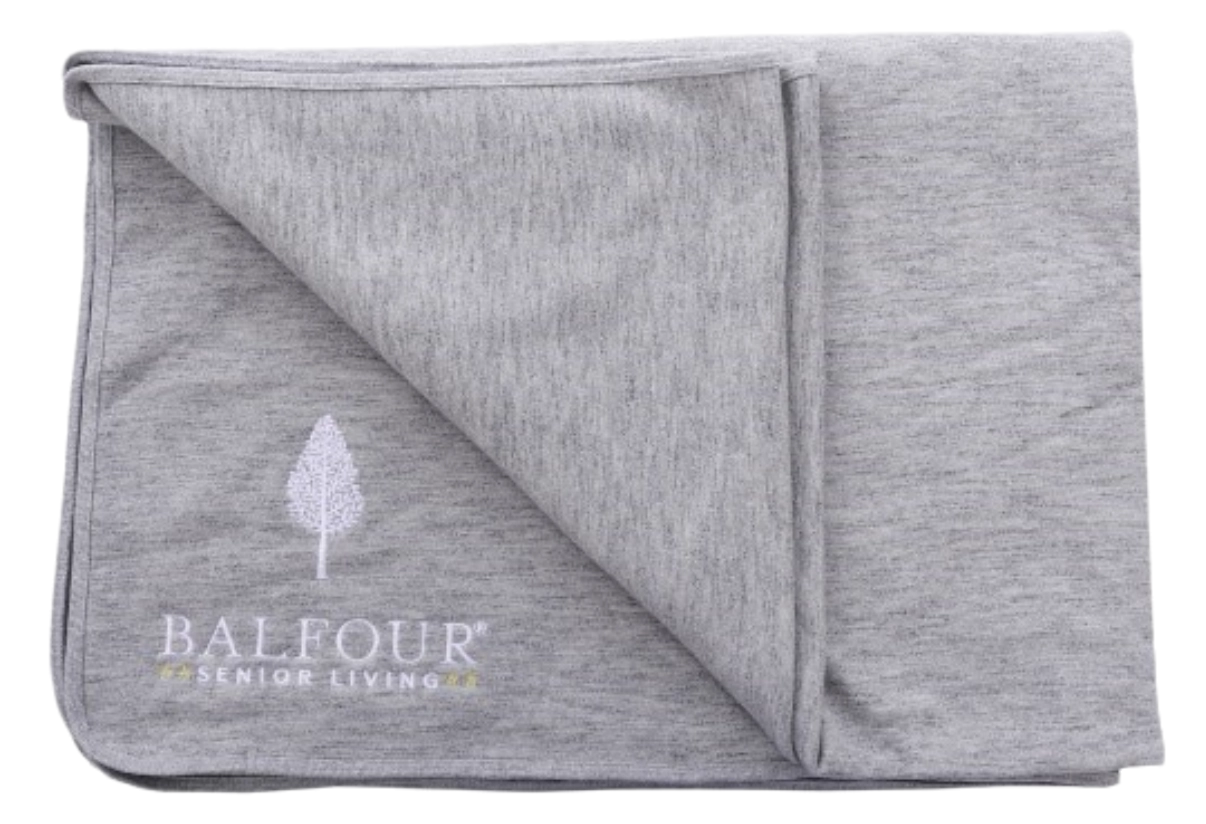
Balfour Senior Living used a more tonal embroidery on this Marine Layer blanket,
and gifted these to residents.
If you’ve worn anything from Marine Layer, you know how soft their clothing is. But you may not know they also make blankets (with the same commitment to softness and sustainability). The blanket is made in the USA with Marine Layer's signature cotton modal and lined with Sherpa fleece in a heathered grey/asphalt blend.
It will keep the cold at bay without weighing you down. Although you’re limited to a single stock color, the Marine Layer custom dye program allows you to match your Pantone color for something extra custom (which they do for apparel too, hint hint).
$110-150 (custom dye: $150-190)
MOQ: 12 (custom dye: 100 units)
Size: 50" X 72"
Material: Outer Fabric - 50% Polyester, 38% Cotton, 12% Rayon; Inner Fabric - 50% Supima Cotton and 50% Micromodal
Decoration: Woven Label, patch, embroidery
Colors: Heather Grey/Asphalt Grey, custom dyeing at 100 units

Outdoor pick
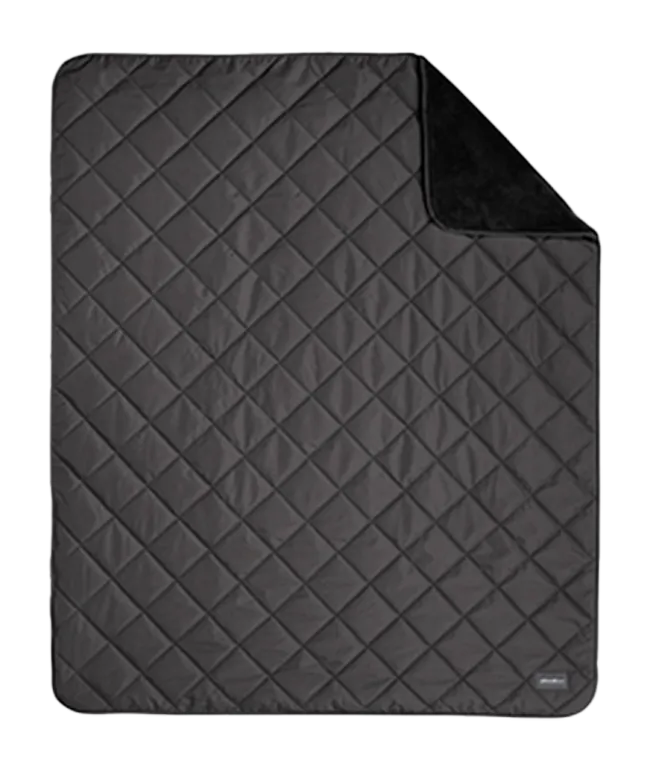
Eddie Bauer® Quilted Insulated Fleece Blanket
A warm insulated fleece for the outdoorsWe like the 2-in-1 style this blanket offers with a durable water-repellent finish on the outside and an ultra-soft high-pile fleece on the inside. It’s a great companion for outdoor activity, and it helps it's made by a crowd favorite outdoor brand, Eddie Bauer.
$60.87
If your people like to get outside, this next option might be for you. Being an Eddie Bauer product, it already has credibility in the outdoor clothing and accessories space. While one side is a traditional outdoor quilted blanket typically seen at a picnic, flip it over for a soft fleece fabric that begs to be touched.
We love multipurpose products that give you more ways to use the item. As the name implies, the blanket is also insulated, which will help keep your nature lovers warm on their adventures. It's available in 3 neutral colors that will complement most brands.
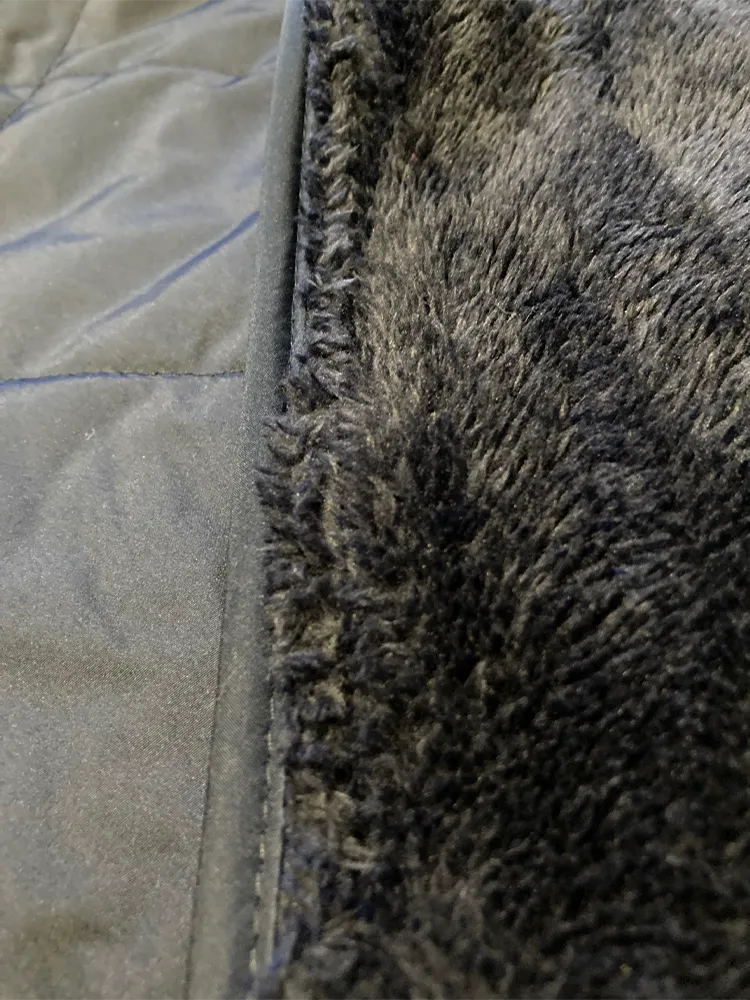
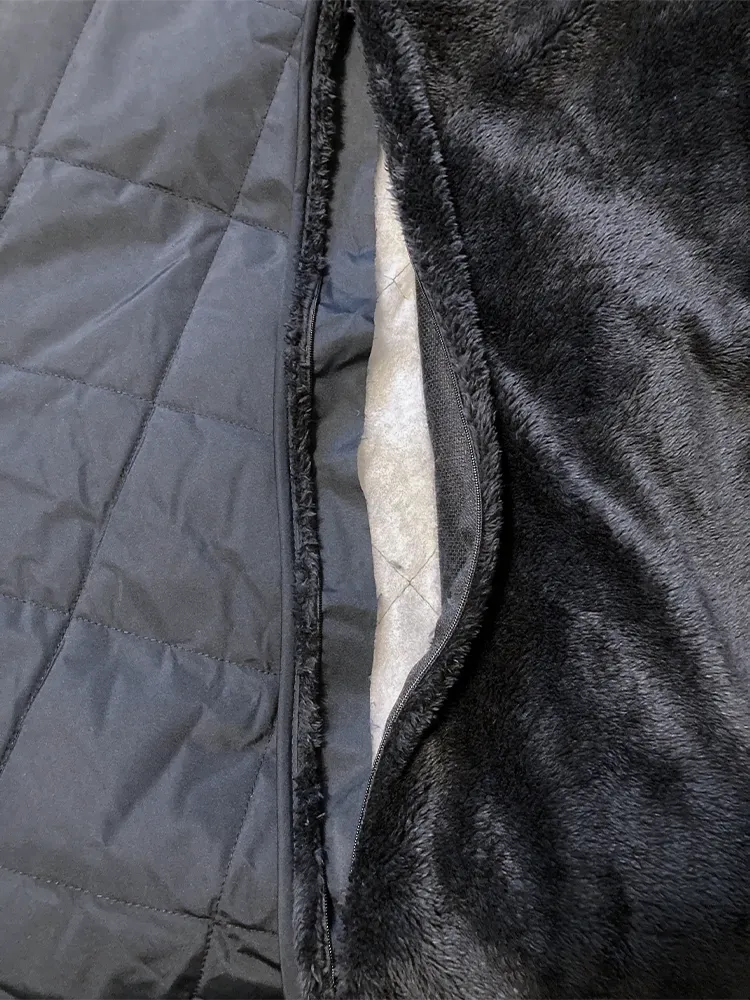
MOQ: 1 unit
Size: 50" x 60"
Material: 100% polyester woven fabric, 100% polyester high-pile fleece, 2.8-ounce polyfill
Decoration: Woven Label, patch, embroidery (with access pocket)
Colors: Black, Grey Steel/Black, River Blue Navy
Our picks for specific blanket categories
Puffy pick
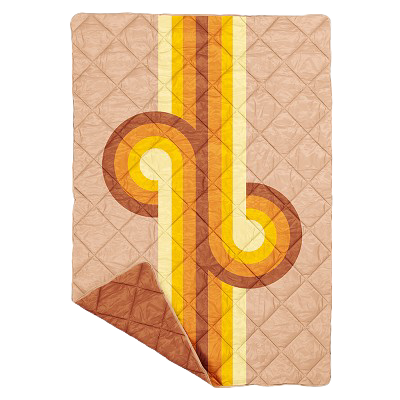
Quilted Blanket
Like your favorite puffy jacket in blanket formAlthough the name is simply the Quilted Blanket, the fabric is indeed like a sleeping bag, which allows crumbs and sand to be brushed away easily. It’s made with sustainably produced 30D nylon material which is soft and lightweight, making it great for the beach or a camping trip. Best of all, it’s super customizable with a full front (full color) imprint area and the option to pick between 3 quilting patterns. That’s some big-time branding opportunities.
$81.53
NOTE: These currently take 6–8 weeks, so they won’t arrive in time for holiday gifts.
Many of you have probably seen the original puffy blanket, Rumpl, gracing the shelves of an REI or other outdoor retailer near you. It’s been a hot item, one that basically created a new category of blankets. Like most good ideas, we ask, how was a sleeping bag-like blanket not a thing before this? But I digress. Rumpl started the puff blanket craze (which, by the way we can also get for your brand), but now others have joined in. Another one of our favorite retail brands, Nomadix is getting into the mix soon with their own version for wholesale in the spring. We already have a sample that we’re testing and will report back with our findings.
Although our puffy pick may not have all the brand panache of a Rumpl, it makes up for it by allowing you to customize the heck out of it, more than any other blanket we tested. There are three different quilted patterns to choose from (diamond, horizontal stripes or vertical stripes), and the entire front of the blanket can be used as a blank canvas for your graphic (designers everywhere are cheering). There are also a whopping 48 stock colors and 43 stock ribbon colors to choose from. With all of that, it’s almost like building a product from the ground up, the way we do with overseas sourced items, but with lower MOQ and other benefits of being domestic.
Bonus: There’s a matching drawstring carrying case that can also be printed from edge to edge for another branding moment.
MOQ: 6 units
Size: 52" x 75", Drawstring bag: 17.5" x 7.5"
Material: Super soft 30D ripstop nylon with DWR water repellent finish; 90% recycled poly fill material
Imprint Area: 45” x 62.5”, drawstring bag: 19.25” x 12.5”
Decoration: Full-Color sublimation
Colors: 48 stock 4CP colors / 43 stock ribbon colors / Pantone ink matching available
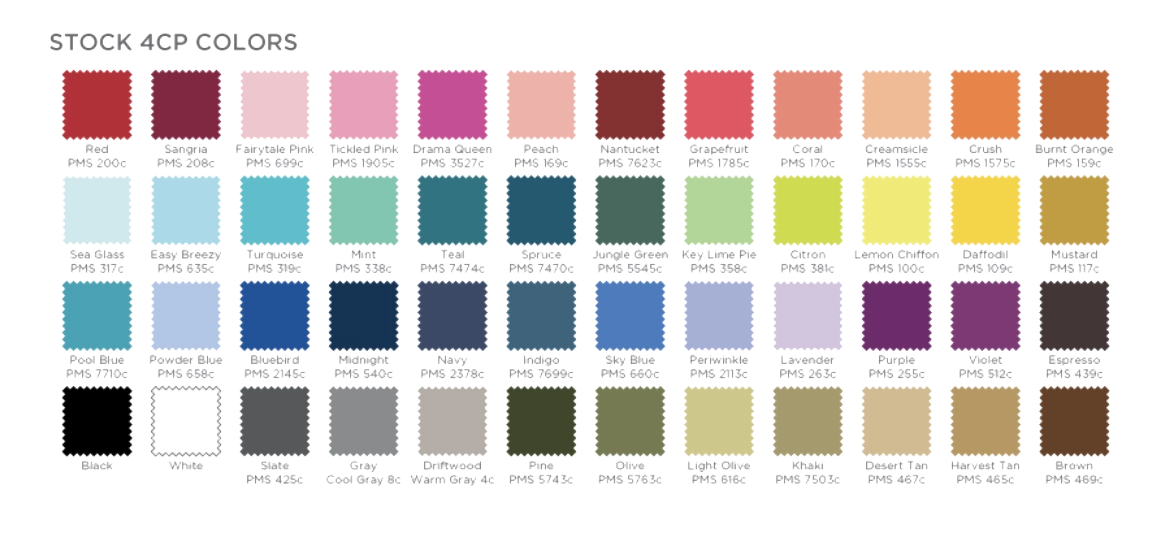
Wool pick
Pendleton Yakima Camp Blanket
Durable and rustic camp blanket
When you think of wool, the word “scratchy” might come to mind. This blanket will make you a believer in traditional wool style blankets with its durable wool and cotton blend material.
$246.68
MOQ: 10 units
Size: Twin 66" x 84", Queen 90" x 90"
Material: 86% wool, 14% cotton
Fabric Care: Dry clean
Made in the USA
Decoration: Embroidery, Woven Labels
Colors: Green Heather Mix, Lake, Mineral Umber, High Ridge, Oxford
Sherpa pick
Port Authority Flannel Sherpa Blanket
Lightweight and fluffy throw with classic plaid designs
Flannel lovers will find comfort in this vintage style throw. Think of your favorite flannel button-up, but in blanket form and way softer thanks to its Sherpa interior. While it’s thinner than other options, it still does the job of keeping you warm and fuzzy.
$50.65
MOQ: 1 unit
Size: 50” x 60”
Material: Fabric: 100% cotton flannel; 100% polyester Sherpa
Decoration: Embroidery (with Port Pocket™ for easy embroidery access)
Colors: Black Uneven Plaid, Black Watch, Buffalo Plaid, Window Pane
Weighted pick
Luna Cotton Weighted Blanket
A budget-friendly weighted blanket
Wrap yourself in a long (and heavy) Luna hug with the cotton weighted blanket that uses deep pressure touch to reduce stress and promote relaxation.
$80-120
The Luna Cotton Weighted Blanket is a quality blanket that still maintains a moderate price point. There are lots of materials, sizes, and weights to choose from. One of our testers even used the Queen-sized 15-pound weighted blanket after surgery and it provided relief for her pain and anxiety. Gifting a weighted blanket is like sending your people a warm hug, as the blanket uses deep pressure touch to reduce stress and promote relaxation.
MOQ: 1
Size: Full: 48” x 72”; Queen: 60” x 80”; King: 80” x 87”
Material: Outer Shell: 100% cotton; Filling: 100% polyester & microfiber + glass beads
Decoration: Woven Loop Label
Colors: 19 colors (not all colors are available in all sizes/weights)
Comparing our top picks
Our pick
Sackcloth & Ashes Blanket
A super soft throw with a BOGO mission.
Made in Italy with an eco-friendly, cruelty-free wool blend, tassels and a huge color/pattern selection.
As low as: $152.67
MOQ: 1 unit
Size: 72” x 60”
Material: Recycled Wool / Recycled Polyester / Recycled Acrylic
Decoration: Embroidery, Woven Label, Patch
Colors: 51 colors, 8 styles,
Youth: 20 colors, 4 styles
Premium pick
Marine Layer Lined Blanket
Lightweight and lined with soft t-shirt fabric.
Made with ultra-soft mock twist Sherpa fleece and lined with ML’s signature T-shirt fabric.
As low as: $125.47
MOQ: 12 (custom dye: 100 units)
Size: 50" X 72"
Material: Outer Fabric - 50% Polyester, 38% Cotton, 12% Rayon; Inner Fabric - 50% Supima Cotton and 50% Micromodal
Decoration: Woven Label, patch, embroidery
Colors: Heather Grey/Asphalt Grey, custom dyeing at 100 units
Outdoor pick
Eddie Bauer® Quilted Insulated Fleece Blanket
Insulated for the outdoors
This durable insulated blanket has a water repellant finish on the outside and fleece on the inside.
As low as: $60.87
MOQ: 1 unit
Size: 50" x 60"
Material: 100% polyester woven fabric, 100% polyester high-pile fleece, 2.8-ounce polyfill
Decoration: Woven Label, patch, embroidery (with access pocket)
Colors: Black, Grey Steel/Black, River Blue Navy
Our research
We tested 14 blankets for over 8 months. Each tester washed and wore them regularly to get a sense of the look, feel, functionality, coziness, and more.
- Material/Construction: We’re always seeking high-quality swag. In fact, our core value is “fight for better”, which also relates to product choice. The first question when testing these blankets was “Will this hold up for the long haul?”.
- Washing/Drying: Do the blankets maintain their shape and color after many wash cycles? Does the quality hold up? Our top 3 choices all exceeded our expectations after consecutive washes and actually felt even cozier. Note, the Pendleton Yakima Camp Blanket is made of pure virgin wool fabric, so it should be dry-cleaned.
- Aesthetics/Colors: If we were shopping, which blankets would we be most drawn to? You may not hear blankets being described as beautiful very often; however, that’s exactly what our testers said about the Sackcloth & Ashes blanket with its fringe detail and variety of colorful patterns.
- Affordability: We know affordability is subjective, so we included products in a range of prices to fit everyone’s budget. If our top picks are too much, a great budget-friendly choice is the Port Authority Flannel Sherpa Blanket.
- Sustainability: The interest in sustainability within our industry continues to rise, which is exciting to see. A part of sustainability is making quality products that people keep, and therefore won’t end up in the landfill. We love to partner with eco-friendly brands like Marine Layer, who uses low-impact materials in their products, offers a great recycling program, and gives back to the community through numerous donations. As we make positive strides of our own, we continue to highlight and use Marine Layer in our own projects.
The blanket backstory
The first known instances of blankets date back to ancient Egypt around 3000 BC, although animal skins have been used as blankets since prehistoric times. The name itself is believed to come from Thomas Blankquette, a Flemish weaver in the 14th century who became famous for making wool blankets for the royal family.
Today, the market is full of blankets in all kinds of categories. The Snuggie morphed the blanket into a wearable, while Rumpl more recently riffed on the sleeping bag to bring a new puffy blanket category. We've also seen the weighted blanket regain popularity. Even comforters and quilts can be considered part of the blanket family. Blankets have evolved, but the goal remains the same: to provide comfort and warmth.
A blanket can make a great corner piece of a kit. It also has the added bonus of being a soft layer to protect other items you’re kitting (no air pillows needed). So, add in a few items, put some custom tissue paper around it, place a card on top (did you know we have handwriting machines?) and voila, kit magic! We put together a guide for curated holiday kits and one on how to make awesome kits if this topic gets you excited, like it clearly does for us.
If you’re looking to send out your blanket, we can help there too. Our redemption page can automate the collecting of addresses. We kit everything together at one of our in-house distribution facilities and send your swag box out into the world. That’s spreading some cozy.
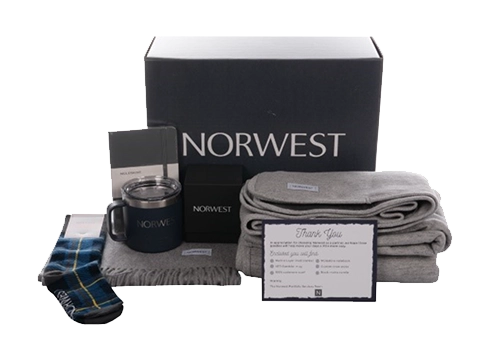
Norwest Venture Partners added blankets in their employee and partners kits. They used both our top pick and our premium pick.
Decoration Tips
Most blankets do well with a simple woven label, patch or embroidery. It keeps your branding noticeable, yet subtle so it doesn’t take away from the fabric or coziness.
Our puffy pick is the only option that has a full front imprint area (and a drawstring bag). That’s an enticing option, but one that should be taken with care to create a graphic that will last and look great on the side of a sofa. Get inspo from the Sackcloth & Ashes designs or other retail blankets and consider how elements of your brand could be used in pattern form. Remember, our in-house designers are always here to help create and mockup different options for your project.
Embroidery, the flip side: One thing to note with embroidery, is that you’ll see the thread and embroidery backing on the other side of the blanket. Labels or patches will have much less on the flip side, but will still show the thread from sewing on your label. However, some blankets made specifically for our industry have an embroidery access pocket to hide the back of the embroidery. Both the Eddie Bauer Quilted Insulated Fleece Blanket and the Flannel Sherpa Blanket have this nifty feature.
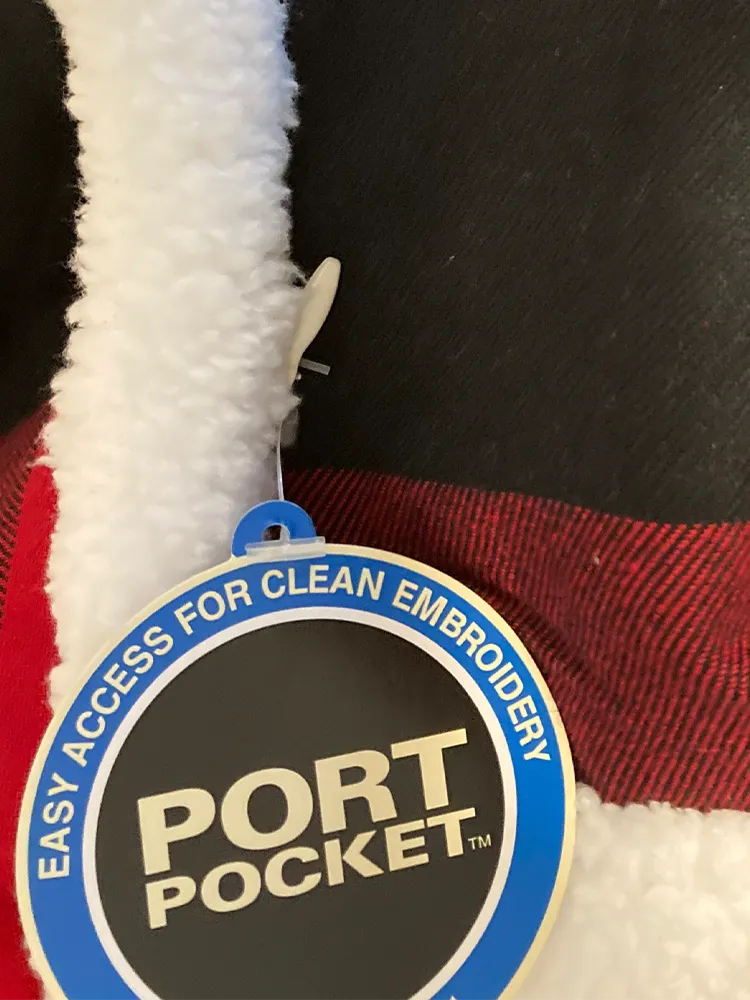

Built-in pocket for easy embroidery access.
Royal Apparel Examples

Delphix Gradient Hoodies

Earthjustice Staff Gifts
Marine Layer Examples

Spokane BLM Veterans Wildland Fire

TuSimple Holiday Gift
Carhartt Examples

Earthjustice Staff Gifts

Earthjustice Staff Gifts
Why trust Kotis
Over the years, we’ve distributed thousands of blankets. We use the feedback from our clients, combined with our testing over many months to create these recommendations. They are not endorsed by any supplier; we simply want to help make your life easier when choosing swag for your people.
Our goal has always been to create better merch for our clients, and we’re always excited to work with you in that endeavor. Let’s do swag together.
SwagLab – The Best Mesh Back Trucker Hats
The Best Mesh Back Trucker Hats
Michelle Allen & Nic Thomassen | Table of Contents
We all have hats, lots of ‘em. They can function as sun protection or rise to a coveted fashion accessory and who hasn’t used a hat as an essential part of your Zoom call wardrobe. They can also be incredible branding opportunities when done well. Baseball caps are especially popular, ranking #6 in the highest overall searches of the year, according to ASI.
A “cooler” version of the standard baseball cap is the ubiquitous trucker hat, AKA, the mesh back trucker hat. Trucker hats were created in the ‘60s as an affordable giveaway for truck drivers, farmers, and other rural workers – brands like John Deere, Budweiser, and Pepsi placed their logo on the front of trucker hats and handed them out to blue-collar workers. As time passed, other companies took notice of the popularity. Trucker hats are still popular among the blue-collar community, but they’ve also been adopted by many urban and suburban residents thanks to Hollywood’s influence in the early 2000s. Recently, Vogue fashion wrote that this is the summer of the trucker hat and is the “Must have of men’s fashion week street style.”
We spent hours wearing all of the top selling mesh back trucker hats in various conditions and scenarios, testing construction, design, comfort, fit, and breathability. After kayaking, hiking, going to shows/games, and just chillin’ at the (home) office, we’ve picked our favorites to help you with your next hat project.
Why make hats for your brand?
3,400+
impressions generated in its lifetime
69%
of consumers own at least
1 piece of promo headwear
10 months
average length a promo hat is kept
In it for the long haul
A good hat can be used for years, especially since you really can’t outgrow it (ever heard the joke about earrings that still fit from High School? Hats are similar : ) The longer someone keeps a hat, the more impressions and connection it creates.
Vintage vibes
Not every swag item looks better with wear. With truckers, we’d argue that the more worn-in and vintage it looks, the better (hence why teens still scour local thrift shops for Bass Pro truckers or other throwback looks).
Messaging machine
Since a hat is at eye level, it doesn’t get much more in your face in terms of messaging and being seen. That can be used for reflecting your brand or communicating a core value. Say what you will about MAGA hats, but it sure was a noticed piece of branded merch (to the tune of 1M hats).
A killer kit companion
Hats are light in weight and don’t take up much space (not to mention being a bit squishable), which is great for shipping costs and logistics. They’re also conveniently one size fits all, which is not the case with most apparel-based pieces. This is why we love adding them in kits, and even do so for our own sales, marketing and HR efforts. Most recently we sent a summer pack to employees (or Kotisians as we call ourselves) which included a performance hydro hat. We’re also working on a gift box for prospects after they demo our swag platform, which also has a hat.
What kit are you working on that could benefit from a hat? We’re happy to help brainstorm ideas and options.
Our pick
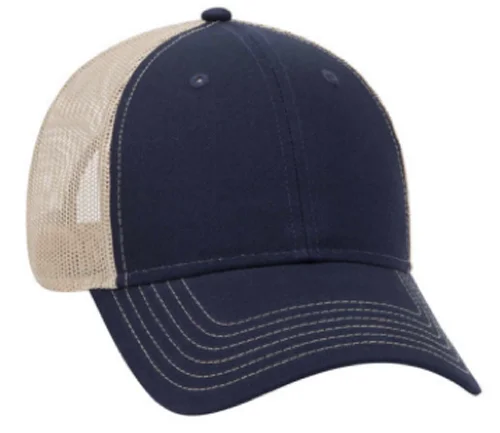
Otto Six Panel Low Profile Mesh Back Cap
A traditional trucker with a modern fit Comfortable and classic, this cotton blend hat reminds us of the trucker’s timeless style with great breathability and flexibility.
These comfortable hats are just what you need to enjoy the great outdoors. With a firm low-profile front and the classic mesh back, these hats fit the “bill” for a great trucker. This hat features a cotton blend with six panels and sits a bit higher on the head. The snapback closure is plastic and the mesh is made of 100% polyester providing great breathability and flexibility. It excelled in almost all the areas we tested, which is why it’s a top pick.
Minimum order: 48
As low as: $16.50
Material: Front: 65% polyester, 35% cotton, Back: 100% polyester
Construction: 6 panels
Decoration: Patch, label, embroidery, heat transfer
Colors available:
Richardson, the most recognized brand in the mix, makes a great low profile trucker with a tailored fit that gives it an overall retail feel. The 115 is what you’d expect in a trucker hat with a snapback closure and mesh panels. We appreciated the pre-curved bill which had a nice amount of “bend,” and the fabric is extra soft (47% cotton and 53% polyester). This hat is the only one we tested that’s available in two sizes.
Minimum order: 36
As low as: $18.54
Material: 47% cotton and 53% polyester
Construction: 6 panels
Decoration: Patch, label, embroidery, heat transfer
Colors available:
Another Richardson pick, the 113 Foamie Trucker has that good ole foam front you’re used to seeing on vintage truckers. It’s also the only hat we picked with a flat bill, which pairs well with the foam look. We also liked the structured build with five panels (which therefore has a continuous front panel for more decoration options). Its OSFA and fits comfortably on larger heads.
Minimum order: 36
As low as: $18.54
Material: 100% polyester nylon and foam
Construction: Structured
Decoration: Patch, label, embroidery, heat transfer
Colors available:
If your org is especially into sustainable swag, this is a great pick that checks both the style and sustainability boxes. The Econscious 6-panel trucker structured cap is made from 30% recycled polyester and 70% certified organic cotton. It’s available in 20 colors including a unique tri-color version that we especially liked. The structured fit of this hat did not take away from the casual look or comfort. In addition to using Earth-friendly fabrics, Econscious is a member of 1% for the Planet – donating 1% of all retail sales to environmental non-profits. If loving the Earth is wrong, we don’t wanna be right.
Minimum order: 1
As low as: $18.69
Material: 30% recycled polyester and 70% certified organic cotton
Construction: 6 panels
Decoration: Patch, label, embroidery, heat transfer
Colors available:
Our pick
Otto Six Panel Low Profile Mesh Back Cap
Trucker with a modern fit Comfortable and classic, this cotton blend hat reminds us of the trucker’s timeless style with great breathability and flexibility.
Minimum order: 48
As low as: $16.50
Material: Front: 65% Polyester, 35% Cotton, Back: 100% Polyester
Construction: 6 panels
Decoration: Patch, label, embroidery, heat transfer
Also great
Richardson 115: Low Pro Trucker Hat
Lower profile casual trucker
The Richardson trucker is the most retail hat we tested (and the most recognized brand), with a low pro structure and curved bill. It’s also available in two sizes.
Minimum order: 36
As low as: $18.54
Material: 47% cotton and 53% polyester
Construction: 6 panels
Decoration: Patch, label, embroidery, heat transfer
Foamie pick
Richardson 113 Foamie Trucker
A classic with a foamie frontA foam front and a flat bill give this hat a nice retro style. We also liked the structured build with five panels (a continuous front panel for more decoration options).
Minimum order: 36
As low as: $18.54
Material: 100% polyester nylon and foam
Construction: Structured
Decoration: Patch, label, embroidery, heat transfer
How we tested
For this SwagLab, we tested 8 mesh back trucker hats for several months. Each hat had to meet specific considerations and were reviewed based on style, adjustability, comfort, material, sweatband, color options and decoration capabilities. Hats are of course a personal preference, so we tried to find hats that would be a good fit for a variety of head shapes and sizes. Here are the main categories we considered while testing:
- Aesthetics – If we were in a store looking at these hats, which would we be drawn to try on first? Our testers gravitated toward the curved-bill hats. Many original snapback caps featured a flat bill with a squared visor for a more streetwear style. While the flat bill wasn’t our top pick, it might work well for your brand. Mesh back style snapbacks pair well with sports logos, and they give off a retail vibe. This and the inventory availability were taken into consideration.
- Construction/Fit – Durability and functionality are important elements when finding a great hat for your needs. One of the hats we tested never fully broke in and was still rigid even after hours of continuous use, and thus, not as comfortable as we would have liked initially.
- Adjustability – Finding a good fit for everyone’s head is no easy feat. Some testers have larger heads than others; therefore, adjustability was key. Since we rarely see fitted or flexfit hat orders, we only focused on hats that had some type of adjustability.
- Comfort – Just as you’d expect the construction of the hat to be high-quality, you also want the hat to be super comfortable. After all, the more comfortable the hat is, the more likely the user is to keep it and use it. Often caps are worn for hours at a time, so it’s important to see if they cause discomfort or even headaches. Ideally, your hat will fit snug on your head with a little flexibility as you move or work without pressure on the ears or tightness around the head.
- Material – Traditional trucker caps featured a foam front, which is less breathable. Many of the mesh back hats you see today have been upgraded to other types of fabric, mostly a blend of cotton and polyester (which all of our picks have). In our testing, we noticed the cotton/poly combo was more comfortable than traditional foam options we’ve worn in the past, which could more easily cause sweat from continuous wear. Newer cloth sweatbands and better breathability also help the sweat factor.
- Sweatband – Our testers wore the hats outdoors and at the gym to gauge how each sweatband functioned. Since these are a type of baseball cap, we wanted to test them in hot conditions. Our top picks outranked others when it came to utility of the sweatband.
- Color options –Since one of the main goals of ordering hats is to showcase your brand, we looked at the amount of color options available. Most of the hats we picked had a solid number of colors with the Otto cap going all the way up to 66 colors available. This is considerably more than the average swag item. The only exception here is the foamie pick, with less than 10 colors.
PRO TIP: Picking a colorway that goes with your planned decoration is a great way to make the hat look even more custom than it is.
Royal Apparel Examples

Delphix Gradient Hoodies

Earthjustice Staff Gifts
Marine Layer Examples

Spokane BLM Veterans Wildland Fire

TuSimple Holiday Gift
Carhartt Examples

Earthjustice Staff Gifts

Earthjustice Staff Gifts
Decoration tips
The decoration can make or break a hat. Think of a large logo’d promo hat you may have received… you probably wouldn’t wear it much, let alone have it in your go-to rotation. Instead consider ways to creatively enhance your hat in a retail way. Below are a list of decoration methods for mesh back trucker hats and specific ideas for each that can be used for your next project. As always, our consultants and designers are standing by to help along the way.
Embroidery
Hats and embroidery are a quintessential combo. The tighter fabric on hats lends itself to crisp embroidery. A variety of locations, shapes and styles are possible with embroidery, which is why it’s so common.
Embroidery on mesh
It’s possible to embroider straight onto the mesh backing of a trucker hat. However, adding a border using fill stitch will help visually buffer the logo from the mesh, and stabilize it on the mesh. These are the details our in-house design and production teams love to finesse so your hat is the best it can be.
3D Embroidery
If you want to take embroidery up a notch, go 3D with your stitches (otherwise known as puff embroidery). This uses a layer of foam (and an additional level of digitizing and machine operation knowledge) to create luscious, raised letters and graphics that pop off your hat. It’s heavily used in the sports space, but really can be used in any sector that would benefit from the look. One caveat is the graphics that are raised need to be a certain size to have the right effect, so super detailed designs aren’t the best option here.
Patches
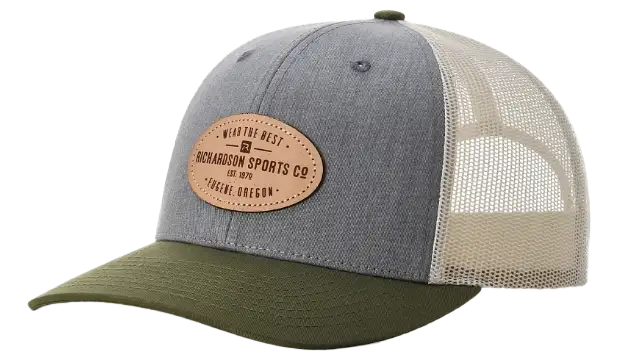
Patches are always a great addition to a hat. They come in many forms from faux leather and PVC to screen printed and sublimated. However, most patches are made with embroidery. The stitch detail can actually be a bit tighter than direct embroidery since patches are made on smooth/stable material which leads to less distortion in stitching.
Labels
Adding a label gives your hat that extra touch to make it feel even more retail. If we had our way, we’d add labels to almost all the hats we design. They work in a variety of locations and sizes, from a loop label on the back opening to a straight cut label on either side of the hat.
Woven labels hold about twice the detail as embroidered patches and can have lots of colors, so they’re especially good for branding plays (think about how your fav brand uses labels). As you know from previous posts, we recommend keeping your logo on the subtle side for better wearability and longevity; labels are a wonderful way to do so, while still getting noticed.
PRO TIP: Make extra labels, store them in our warehouse. Many of our clients create a label or patch that will work across several items. We then store it for them at one of our production facilities to have ready for future orders. It’s a great way to up the retail vibe of your merch line while also gaining some cost savings by being able to order a larger quantity.
Heat transfer
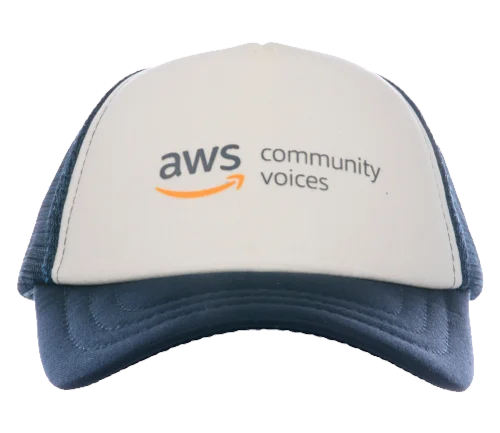
If you’re looking for a full color design, heat transfers can come in handy. They’re mainly applied to the front panel of the hat since they need to fit into a clamp that works with the heat press.
Screen printing
A printed hat can have a certain aesthetic that goes especially well with foam front truckers. Just like with heat transfers, screen printed hats are loaded onto a certain pallet/clamp, and therefore are mainly printed on the front panel.
Mixed media
Don’t forget, the above decoration options can be mix and matched for even more unique deco. Add a patch to the front with a subtle printed pattern behind it, embroider the side, and sew a label above the back opening. The hat is your oyster.
OVERSEAS SOURCING
Get even crazier with your hat
Looking to customize your cap even more? And not just mesh back trucker hats? Our overseas sourcing team can help create a hat from the ground up, which means you can really make anything you want. Is there a particular retail hat you especially love? We can riff off that to mockup similar details but with a bent towards your brand. Send us your inspo or let our designers go wild. Once you have the look you want, our fashion designer creates a tech pack and one of our partner factories will sew up a pre-pro sample just for you. This process takes a bit longer of course, but is quite worth it.
Specs / Timeline
• 144 piece minimum
• 10 day sample time
• 30 day production (+ transit time)
Why trust Kotis
We’ve been decorating and shipping many styles of hats for over a decade. Our goal has always been to create the best swag for our clients, and we’re happy to work with you in that endeavor. Our product testers researched and reviewed a selection of hats for 3 months and gathered feedback from other hat enthusiasts within Kotis.
We’ve distributed hundreds of thousands of hats and utilized the feedback from our clients, combined with our testing to create these recommendations. These are not endorsed by any supplier; we simply want to help make your life easier when choosing merch. Let’s do swag together.
Kotis Design Named Market Leader
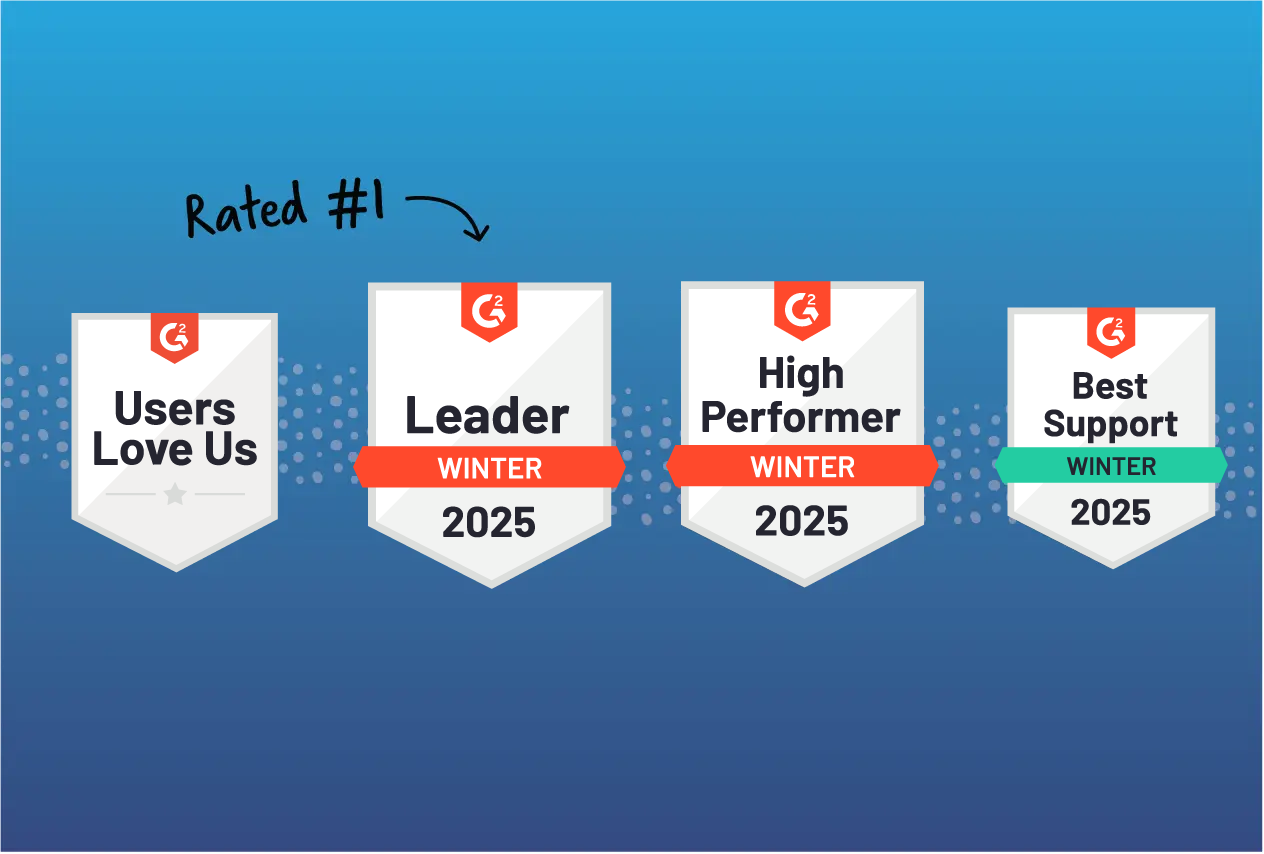
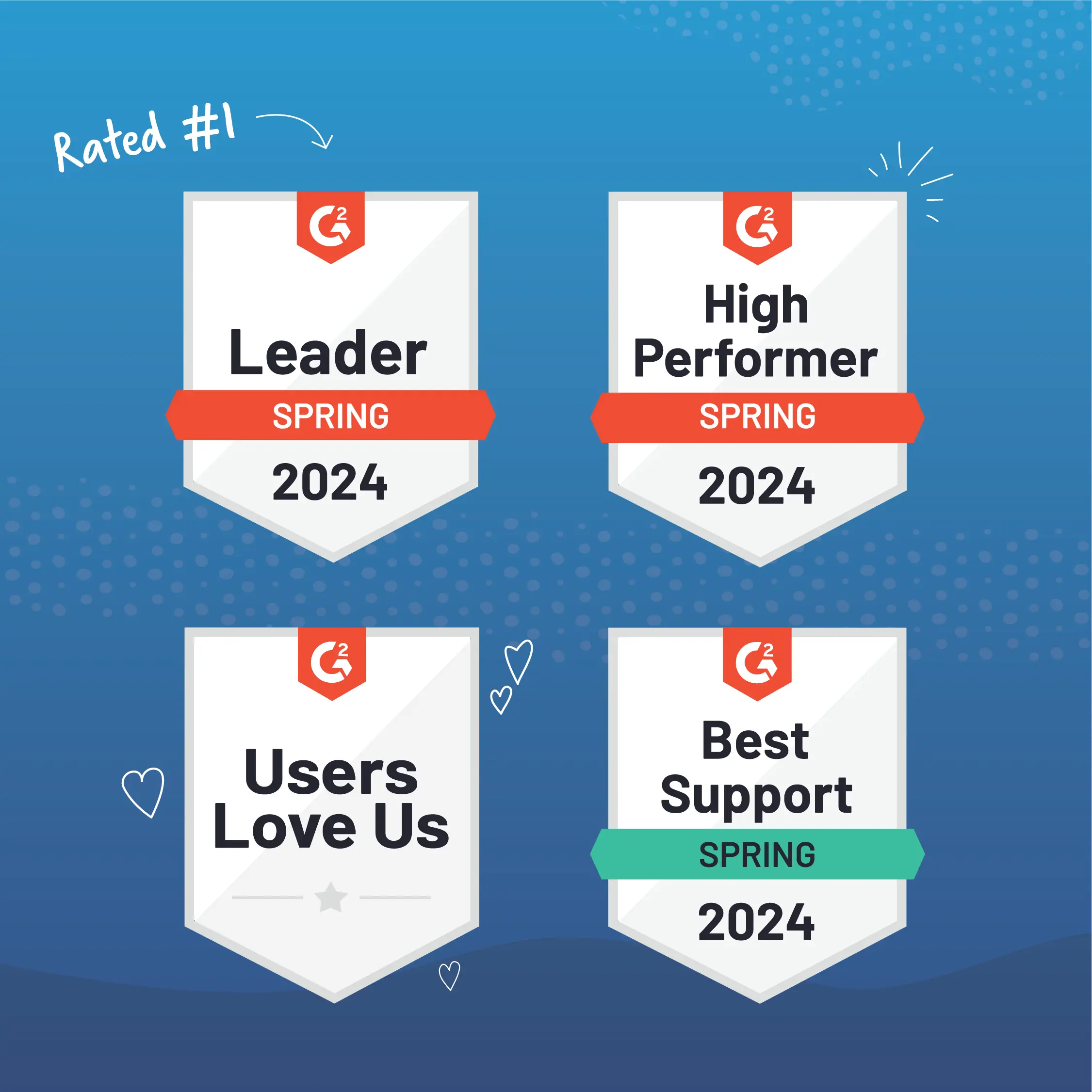
Kotis Design Named Market Leader in G2’s Winter Promotional Product Management Tool Report
July 1, 2022
The results are in! For the ninth consecutive quarter, Kotis Design’s Swag Platform has been ranked #1 on G2’s list of Promotional Product Management Tools. By combining truly unique swag, our world-class, in-house print shops, and a leading software solution, Kotis Design has created the most compelling offering for promotional products.
Kotis Design Named Market Leader in G2’s Winter Promotional Product Management Tool Report
July 1, 2022
The results are in! For the eleventh consecutive quarter, Kotis Design’s Swag Platform has been ranked #1 on G2’s list of Promotional Product Management Tools. By combining truly unique swag, our world-class, in-house print shops, and a leading software solution, Kotis Design has created the most compelling offering for promotional products.
As our industry continues to grow (annual spend in branded merchandise has increased by ~5%/year to over $25B), Kotis has continued to invest in our products, processes, and people to create the best solution for our clients.
With an increased focus on technology and services, Kotis now manages the promotional products for thousands of companies, from startups to Fortune 500s.
The Promotional Product Management category has become increasingly competitive as more brands turn to swag as a leading marketing and sales tool. Kotis is the only provider in our space that is listed as a leader for small business, mid-market, and large enterprises. In fact, our technology services rank highest in the following categories among top performers:
-
- Overall satisfaction
- Ease of administration
- Ease of doing business with
- Quality support
- Easiest to setup
A Big Thank You to Our Customers
“The work that our customers have put in this past year as they’ve pivoted from in-office and in-person events has been amazing and inspiring,” said VP of Sales, Eric Hamlin. “We’re incredibly grateful that we were able to play a small part in making that transition as smooth as possible for our customers, their customers, and their people. Making swag that surprises and delights has always been core to what we do, and seeing how much a thoughtfully designed and delivered swag package, delivered straight to their front door, can make people happy has helped all of us at Kotis get through 2020.”
“The highly professional service from the staff at Kotis Design makes this resource one of the best I’ve ever experienced. Their comprehensive catalog of promotional materials, combined with the attention to detail and hands-on service, are second to none. Their processes are easy, streamlined, and smooth, and we have had no problems whatsoever in finding the right products, customizing them, and receiving them. Working with Kotis Design is a dream. Highly recommended.”
-Gary B.
“Having one company that can manufacture, warehouse, and run our ecommerce has been a huge benefit. Previously, I was working with over 20 vendors, running the web-store, and shipping orders myself. This has taken a lot of the ground work out, so I can focus on strategy and planning. I also value their ability to talk directly with the manufacturer, which they have relationships with–this helps guarantee quality and timelines.”
– Emily C.
About Kotis Design
We’re an industry-leading swag provider and a technology partner that offers a scalable eCommerce platform to help brands create, sell, and ship swag all around the world. From HR teams to sales and marketing sequences, we help integrate and distribute swag within your workflow. We make swag that people actually want to wear and use. Leverage our award-winning product design with a robust warehousing and fulfillment solution. Our two, US-based facilities combined with a network of overseas factories can send merch around the world. Well-timed branded merchandise can double or triple your opportunity value. Our Salesforce and Shopify integrations allow you to send merch when it makes sense, utilizing our warehouse and fulfillment teams. No need for a swag closet! Let’s build great merch, together.
Kotis Design Named Market Leader in G2’s Fall Promotional Product Management Tool Report
September 17, 2021
Introduction
The results are in! For the fourth consecutive quarter, Kotis Design’s Swag Platform has been ranked #1 on G2’s list of Promotional Product Management Tools By combining truly unique swag, our world-class, in-house print shops, and a leading software solution, Kotis Design has created the most compelling offering for promotional products.
Overall grid for Promotional Product Management tools
As our industry continues to grow (annual spend in branded merchandise has increased by ~5%/year to over $25B), Kotis has continued to invest in our products, processes, and people to create the best solution for our clients.
With an increased focus on technology and services, Kotis now manages the promotional products for thousands of companies, from startups to Fortune 500s.
The Promotional Product Management category has become increasingly competitive as more brands turn to swag as a leading marketing and sales tool. Kotis is the only provider in our space that is listed as a leader for small business, mid-market, and large enterprises. In fact, our technology services rank highest in the following categories among top performers:
- Overall satisfaction
- Ease of administration
- Ease of doing business with
- Quality support
- Easiest to setup
Market grid for small businesses in Promotional Product Management
A Big Thank You to Our Customers
“The work that our customers have put in this past year as they’ve pivoted from in-office and in-person events has been amazing and inspiring,” said VP of Sales, Eric Hamlin. “We’re incredibly grateful that we were able to play a small part in making that transition as smooth as possible for our customers, their customers, and their people. Making swag that surprises and delights has always been core to what we do, and seeing how much a thoughtfully designed and delivered swag package, delivered straight to their front door, can make people happy has helped all of us at Kotis get through 2020.”
“The highly professional service from the staff at Kotis Design makes this resource one of the best I’ve ever experienced. Their comprehensive catalog of promotional materials, combined with the attention to detail and hands-on service, are second to none. Their processes are easy, streamlined, and smooth, and we have had no problems whatsoever in finding the right products, customizing them, and receiving them. Working with Kotis Design is a dream. Highly recommended.”
-Gary B.
“Having one company that can manufacture, warehouse, and run our ecommerce has been a huge benefit. Previously, I was working with over 20 vendors, running the web-store, and shipping orders myself. This has taken a lot of the ground work out, so I can focus on strategy and planning. I also value their ability to talk directly with the manufacturer, which they have relationships with–this helps guarantee quality and timelines.”
– Emily C.
About Kotis Design
We’re an industry-leading swag provider and a technology partner that offers a scalable eCommerce platform to help brands create, sell, and ship swag all around the world. From HR teams to sales and marketing sequences, we help integrate and distribute swag within your workflow. We make swag that people actually want to wear and use. Leverage our award-winning product design with a robust warehousing and fulfillment solution. Our two, US-based facilities combined with a network of overseas factories can send merch around the world. Well-timed branded merchandise can double or triple your opportunity value. Our Salesforce and Shopify integrations allow you to send merch when it makes sense, utilizing our warehouse and fulfillment teams. No need for a swag closet! Let’s build great merch, together.
SwagLab – The Best Full-Zip Hoodies
KOTIS SWAGLAB
The Best Full-Zip Hoodies
Allison Buschur | March 9, 2022 | Table of Contents
Ahh…sweatshirt weather. If you ask us, we could make a case for sweatshirts year-round – after all, they’re must-haves in any wardrobe. The beloved hoodie is ordinarily part of a layered outfit during crisp, autumn days, but the functionality doesn’t end there. Blue-collar workers are often seen sporting Carhartt’s as part of their worksite uniform. Football fans advertise their preferred team on their chests during their hometown Friday night games. Music lovers commonly flaunt their support for their favorite artists and bands at live shows.
It’s no surprise that the world is still seeking ultimate comfort. What better way than to find comfort in your favorite hoodie? We are all living busy lives these days, and hoodies are the perfect on-the-go outerwear accessory. Is it raining? Grab your hoodie as you venture out on your daily activities. Suddenly chilly outside? Quickly slip on your hoodie. Too warm? Take your hoodie off and wrap it around your waist or shoulders. No matter what the weather conditions, a full-zip hoodie is one of the most popular and versatile clothing options out there.
OUR TOP PICK
Perfect combo of sustainability, style, and comfort.
Made from a blend of organic cotton and recycled polyester, this hoodie offers velvety soft fabric and a premium feel at an affordable price. Its strong, wide drawstrings make this the perfect retail hoodie that will pair well with any thoughtful design.
Colors:
Fleece lovers will value the incredibly soft organic Royal Apparel Fleece hoodie. This was a favorite from the start – from unboxing to our 100th wear, the Royal Apparel hoodie easily stood out as a top pick due to its soft-to-the-touch interior and exterior, attractive color choices, and value. Its strong, wide drawstrings make this the perfect retail hoodie that will pair well with any thoughtful design.
Royal Apparel has been passionate about its made-in-the-USA mission since its inception in the early 90s – with its headquarters in Long Island and production facilities in New Jersey, New York, and Pennsylvania. Royal Apparel has significantly reduced its carbon footprint with their high-quality, low-impact, and long-lasting apparel. Made from 50% combed ring spun organic cotton and 50% RPET recycled polyester, you can feel confident knowing Royal Apparel has your (and Mother Earth’s) best interests at heart in all their products.
Royal Apparel has created the Organic RPET Fleece in 5 attractive colors: heather ash, heather coal, heather dusk, heather kiwi, and shadow. Pair one of these colors with a subtle screen-printed design and a woven label or patch, and you’ll have your team’s new favorite outerwear accessory.
OUR PREMIUM PICK
This super soft material sourced from Supima Cotton and Micromodal makes the ultimate premium hoodie for any project. By focusing on creating sustainable apparel using responsible materials, Marine Layer is doing their part to minimize their environmental impact. It’s been their mission from the start to make “absurdly soft” clothing so good, you’ll never want to take it off. When it’s finally time to say farewell, Marine Layer offers a garment recycling program.
Colors:
Marine Layer prospers once again with their Afternoon Hoodie. It is no secret that Marine Layer is a favorite here at Kotis, and for good reason – their line of top-notch sustainable apparel is one-of-a-kind. While the Afternoon Hoodie is not as thick as a traditional hoodie, it still promises to do its job of keeping you warm. This hoodie proved to be a great option for all seasons – perfect for those rainy spring days, summer and autumn evenings, and frigid winter temperatures.
Marine Layer offers their Afternoon Hoodie in 3 colors: Asphalt Grey, Black, and Faded Navy. However, if you order more than 144 hoodies, the company offers custom dye to match any Pantone color. Bonus: you can even mix and match styles.
Customers will be pleasantly surprised when they try on anything from the brand as they are all about offering their customers insanely soft clothing with materials you can trust, including Supima Cotton and Micromodal featured in the Afternoon Hoodie.
OUR HEAVIER PICK
A household name and blue-collar favorite, Carhartt, continues to deliver top-notch quality and comfort with this hoodie made from a cotton and polyester blend that you’ll want to keep forever. Each hoodie is branded with the distinctive Carhartt patch on the left front pocket.
Colors:
Carhartt continues to deliver in quality and comfort with their Midweight Hooded Zip Sweatshirt. Hoodie lovers will appreciate this thick, rugged hoodie for all their chilly weather activities and work duties. We noticed this one can also be used as a work jacket due to its thickness, 3-pc hood with drawcord closure, and its functional brass zipper. Choose from 5 colors for your next design: black, carbon heather, heather grey, moss, and new navy.
Carhartt started their journey in premium workwear in 1889 with dependability, honesty, and trust in mind. Headquartered in Dearborn, Michigan with manufacturing facilities in Kentucky, Tennessee, and Mexico, they employ over 5,000 team members worldwide, all of whom are passionate about supporting the hard workers who have trusted them with high-quality workwear for over 130 years. Although Carhartt was created as a workwear brand (and is still immensely popular among the blue-collar community), its appeal has also reached the likes of celebrities, cowboys, hipsters, and beyond. The brand’s impressive collection of apparel and accessories often rank in top lists for comfort and style as well as their intended benefits of ruggedness and wearability.
TOP PICK
Royal Apparel Organic RPET Fleece Hoodie
Perfect combo of sustainability, style, and comfort
Made from a blend of organic cotton and recycled polyester, this hoodie offers velvety soft fabric and a premium feel at an affordable price. Its strong, wide drawstrings make this the perfect retail hoodie that will pair well with any thoughtful design.
Material: Combed ring spun 50% organic cotton, 50% recycled polyester
Colors:
PREMIUM PICK
Unisex Marine Layer® Afternoon Hoodie
Lightweight. Durable. Definition of afternoon delight.
This super soft material sourced from Supima Cotton and Micromodal makes the ultimate premium hoodie for any project. By focusing on creating sustainable apparel using responsible materials, Marine Layer is doing their part to minimize their environmental impact. It’s been their mission from the start to make “absurdly soft” clothing so good, you’ll never want to take it off. When it’s finally time to say farewell, Marine Layer offers a garment recycling program.
Material: 47% Tencel, 38% Cotton, 15% Rayon
Colors:
OUR HEAVIER PICK
Carhartt Midweight Hooded Zip-Front Sweatshirt
Ideal combo of durability, versatility, and comfort
A household name and blue-collar favorite, Carhartt, continues to deliver top-notch quality and comfort with this hoodie made from a cotton and polyester blend that you’ll want to keep forever. Each hoodie is branded with the distinctive Carhartt patch on the left front pocket.
Material: 50/50 cotton/poly blend
Colors:
Other Products We Tested
For this SwagLab, we tested 13 unisex full-zip hoodies over the course of 5 months, ranging from cotton/poly blends to fleece blends. There’s not one-size-fits-all approach to selecting the perfect hoodie as it is all based on personal preference. A naturally warm person may gravitate toward a French terry hoodie due to its cooler material, whereas someone who is always cold may trust a heavier fleece hoodie to keep them warm. The factors we considered as we determined our top hoodies were:
Aesthetics – Overall look and style. Perhaps the most obvious question we like to ask when choosing the best products for our needs is, “If I were in a store searching for a hoodie, which of these options would I choose first?” However, as the saying goes “never judge a book by its cover.” The same can be said about apparel. What we may have initially thought would be a top contender in our discovery didn’t make the cut after we wore them for months, and vice versa. Some of our testers really enjoy mid- to heavy weight fleece options, so the Marine Layer Afternoon Hoodie wasn’t originally on their list due to its lighter weight. However, once they tried it on and wore it around in different weather conditions and occasions (including a freezing flight), it quickly became the top premium option.
Colors – We’re always considering how many style and color options we have available for our clients so they can be confident their brand will integrate with the products they love most. Our top hoodies all have several common color choices that will complement unique designs, and Marine Layer even offers Pantone matching for larger orders, so there’s a wide range of options for those who need more flexibility.
Within the group of hoodies we tested was the Bella + Canvas Sponge Fleece Full-Zip Hoodie, which offers a collection of 17 solid and heathered colors. The B+C sponge hoodie exceeded all our expectations in softness, comfort, style, color choices, and functionality; thus, would make an excellent addition to any brand’s product line.
Construction/Fit – Durability/functionality. Are these hoodies meant to just keep you warm, or can you perform manual labor without fear of ripping them up or quickly tarnishing their value? Some hoodies we tested were simply not to be trusted in any strenuous activity – instead, they were just meant to keep you warm. While there’s nothing wrong with that, you’re more likely to keep a hoodie longer if its higher quality and can withstand any activity.
We noticed the Royal Apparel and Marine Layer hoodies fit true-to-size – although they are both listed as a unisex fit, the women testers appreciated how well both options fit. The Royal Apparel’s hoodie is available in adult XS through 3XL and the Marine Layer hoodie is available in adult XS through 2XL.
While the Unisex Carhartt Midweight Hoodie checked every box for quality, construction, comfort, and style, it does run large, so keep that in mind as you order for your team or fans. Sizing is available in adult small through 4XL.
Hood – Ideally, the hood should sit above your eyes so you can use it practically when you need head protection. Several of the hoods we tested covered our eyes; thus, proved to be impractical for use in certain situations. Our top pick, the Royal Apparel hoodie, had a slightly larger hood than preferred, but it still beat all other hoodies in terms of quality, style, softness, and overall fit.
Zipper – Is the zipper sturdy and functional? Does it get stuck often? More than half of the full-zip hoodies we tested were made with YKK zippers, which are undoubtedly the gold standard of zippers. Short for Yoshida Kōgyō Kabushikigaisha, the YKK Group is responsible for making half of the world’s zippers. What makes them so good? Many companies praise YKK zippers for their self-lubrication, self-locking design, and square-tooth technology, all factors that promise reliable zipping for years to come.
Pockets – We love zip hoodies because most offer 2 smaller front pockets instead of the traditional kangaroo pouches common in pullover hoodies. We tested the functionality of each of the pockets to ensure whatever you choose to carry with you in your hoodie is going to stay put and will be large enough to fit common items: cell phone, wallet, snacks, etc.
Affordability – While the typically hoodie does have a slightly higher price point than a tee or drinkware item, most often, purchasing a hoodie is worth the extra dough. With that being said, when testing all 13 hoodies, we also kept the price in mind to ensure we were offering more affordable options. Even though our top choices feel uber-premium, you can still find them at a decent price – win-win. If you’re looking for a budget option for a gift or kit, the Unisex Port & Company® 7.8oz Full-Zip Hooded Sweatshirt is a great choice due to its heavier construction and multitude of trending colors.
Wash/Dry Quality – Do the hoodies maintain their original shape and color after their first wash or 100th wash? Does the quality hold up when you take them out of the dryer? Is lint piling up in the dryer vent? Naturally, hoodies are meant to stand the test of time, so if they aren’t holding their quality after their first journey through the washer and dryer, they won’t last long outside either. The American Apparel Flex Fleece washed and dried well, and there were no signs of piling upon removing it from the dryer each time we ran it through a new cycle, which is always a pleasant find as you’re cleaning out the dryer vent.
The Royal Apparel hoodie quite possibly came out of the washer and dryer softer than when we put it in. Whenever the weather hints at being even the slightest bit chilly, we’re reaching for this one because it promises to leave us with those warm and fuzzy feelings, both inside and out.
Our Research
Throughout our 5-month testing period, each hoodie was worn and washed regularly and judged on look, feel, fit, washability, functionality, and inclusivity (color and size options); therefore, this test was more subjective than most of our past SwagLab categories.
As we reviewed our selection of hoodies, we were focused on finding options that positively impacted the planet. Sustainability has grown increasingly important over the past several years. As the interest in loving Mother Earth rises, companies have a responsibility to do better for their consumers and the environment. Therefore, we’ve been on a mission to find high-quality products that will also benefit our planet. Beyond that, we often research each brand’s corporate responsibility actions. We feel good about supporting companies who are actively protecting the planet. Another incredible sustainable hoodie option we tested was the Unisex Alternative Apparel Rocky Eco-Fleece Zip Hoodie, made from 6.25% recycled polyester and 6.25% recycled cotton, and offered in 13 colors.
Fit
Opt for a comfortable fit that is neither too baggy nor too tight. You should be able to breathe and move freely in your hoodie. Ideally, the hoodie won’t bulge around the stomach area and should be tight enough to maintain its shape.
Length – A perfectly fit hoodie should sit just above the zipper of your pants; however, this is all based on personal preference. If you’re looking for a neatly fit hoodie, check the size chart and order accordingly. When the weather is crisp, many enjoy being engulfed in their hoodies for maximum comfort, so if you like a more relaxed fit, size up.
Sleeves – A properly fitted hoodie should have sleeves that sit right at your wrist, like how a cuff of a shirt would sit.
Hood – If your sweatshirt has a hood, it should cover your head and sit nicely at the top of your forehead, instead of covering your eyes. The drawstrings will be used to form the hoodie to your unique head shape, offering a comfortable fit for any need.
Why gift a hoodie?
There aren’t too many apparel items that are as versatile as the hoodie. Light enough to be kept around your hip when needed, but also extremely useful with exterior (and potentially interior) pockets. Although there are multiple styles of sweatshirts on the market, our biggest sellers are the full-zipped hoodies, in large part because they’re perfect for all year, more layered/flexible in outfits, and can also be worn as a jacket when needed. Hoodies are also perceived as highly valuable among fans, but they’re quite affordable when compared to jackets or other outwear items.
People use apparel as their own personal (and ever-changing) billboard – it’s the perfect way to show off important causes and events, while simultaneously uniting those with similar interests. We as humans tend to form attachments to brands that not only align with our personal beliefs, but also what makes us feel good.
Recognize your people with a thoughtful kit. Hoodies are the star of a well-crafted kit.
OUTERWEAR
2nd
largest swag
category
67%
of consumers own
promotional outwear
6,100+
impressions generated
over it’s lifespan
16mo
the average lifespan of promotional outwear
Fully Custom
If you’re seeking a more unique option for your brand, let’s build the ultimate Kotis Made hoodie together. Expand your horizons with custom colors, pockets, panels, patches, drawstrings, zippers, and much more.
We tested a brushback Kotis Made hoodie and found it was comparable to other heavier-weight hoodies in its category. With its heavy-duty construction, awesome hood-liner design, and interior and exterior feel, this will be a hoodie you can wear for years.
Fabric
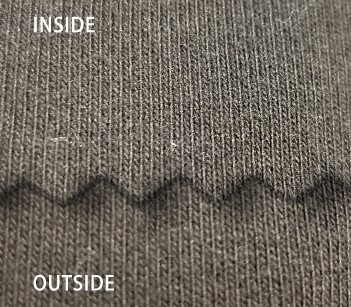
Lightweight Rib Knit
A ribbed light weight material for warmer months or climates.
Fabric Content
33% Cotton / 62% Polyester / 5% Spandex
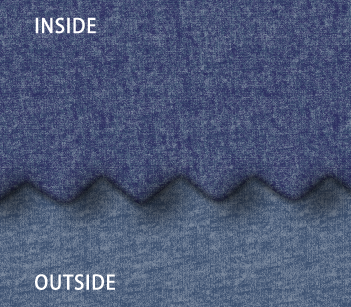
Mélange
Our mélange fabric is a soft lightweight tricot that features 2 different contrasting thread colors woven to give a dynamic heathered effect.
Fabric Content
50% Cotton / 45% Polyester / 5% Spandex
Why Trust Kotis
We’ve been decorating and shipping hoodies for over a decade. Our goal has always been to create the best swag for our clients, and we’re happy to work with you in that endeavor. Our product testers included Allison and Chantelle who researched and reviewed all hoodies for nearly a year and gathered feedback from other sweatshirt enthusiasts within Kotis.
We’ve distributed hundreds of thousands of hoodies and utilized the feedback from our clients, combined with our testing to create these recommendations. These are not endorsed by any supplier; we simply want to help make your life easier when choosing merch. Let’s do swag together.
The Best Sustainable Tees
The Best Eco-Friendly and Sustainable T-Shirts
Jacob Hoogerwerf | Table of Contents
Ah, the t-shirt: a staple of our industry and a blank canvas for your brand. Last year, more than $4.3B of custom shirts were printed and sold across the globe. This trend is unlikely to slow, with nearly 11% annual growth projected for the foreseeable future. It’s no wonder companies invest in this medium – t-shirts are one of the most popular, tied only with pens and drinkware. On average, tees are responsible for an impressive 3,400 impressions across their average lifespan of 14 months.
However, these shirts can come at a sharp cost to our environment. In our blog post exploring the sustainable ways to create swag, we looked at the impact of creating a single shirt. The standard, most affordable, cotton tees require a staggering 713 gallons of water just to grow, harvest, and dye the material. Each year, enough cotton is grown and processed to create nearly 27 t-shirts for every person on our planet. To say the least, the stakes are high when it comes to choosing your tees.
We don’t want you to stop making swag. By investing in fewer, but higher-quality products, you can leave a lasting impression on your people and the planet. Most companies are already planning to order custom t-shirts this year, so let’s take a look at products and brands to invest in that are mitigating their environmental impact through clever new materials, innovative processing methods, and ethical production guidelines.
The Best Eco-Friendly and Sustainable T-Shirts
Jacob Hoogerwerf | Table of Contents
Ah, the t-shirt: a staple of our industry and a blank canvas for your brand. Last year, more than $3B of custom shirts were printed and sold across the globe. This trend is unlikely to slow, with nearly 10% annual growth projected for the foreseeable future. It’s no wonder companies invest in this medium – t-shirts are one of the most popular, tied only with pens and drinkware. On average, tees are responsible for an impressive 3,400 impressions across their average lifespan of 14 months.
However, these shirts can come at a sharp cost to our environment. In our blog post exploring the sustainable ways to create swag, we looked at the impact of creating a single shirt. The standard, most affordable, cotton tees require a staggering 713 gallons of water just to grow, harvest, and dye the material. Each year, enough cotton is grown and processed to create nearly 27 t-shirts for every person on our planet. To say the least, the stakes are high when it comes to choosing your tees.
We don’t want you to stop making swag. By investing in fewer, but higher-quality products, you can leave a lasting impression on your people and the planet. Most companies are already planning to order custom t-shirts this year, so let’s take a look at products and brands to invest in that are mitigating their environmental impact through clever new materials, innovative processing methods, and ethical production guidelines.
OUR PREMIUM PICK
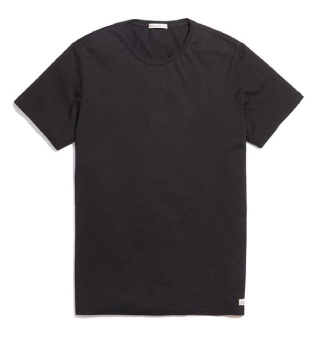
This super soft material sourced from recycled beech wood makes the ultimate premium tee for any project. By focusing on creating the “perfect” tee, Marine Layer’s shirts will stick around for years to come. When it’s finally time to say farewell, Marine Layer offers a garment recycling program.
As low as: $45
Colors:
The Signature Crew Shirt from Marine Layer isn’t just our favorite sustainable t-shirt, it’s the best shirt we’ve ever tested. Marine Layer has crafted a unique, buttery-soft material that feels just as good on wear number one as it does months later (yes we test these things for months). The signature offers a more open neck, once again contributing to its premium look and feel This is the type of shirt that gets worn daily, giving your brand maximum exposure and impressions.
Sustainability is at the heart of Marine Layer’s brand promise. Their signature tee is made partly from recycled beech wood (50%), which gives each shirt its unique softness. The remainder of the product is made from cotton (50%). Each garment is produced in the United States at one of their West Coast facilities in San Francisco or Los Angeles, which not only bodes well for ethical labor practices, but also cuts down on emissions from transporting raw materials and product.
If you want to up your eco game, Marine Layer also offers shirts from their re-spun collection, made from recycled tees that you can send in (for a $5 credit per shirt, even!). These Re-Spun tees remove the growing and harvesting component of production, which is responsible for upwards of 75% of the total eco impact, making them especially light on the environment.
If you order is above 144 shirts, Marine Layer offers custom dying to match any pantone (the only brand we tested that offers this). However, if you’re under that mark, the stock colors are limited to just four.
OUR PICK
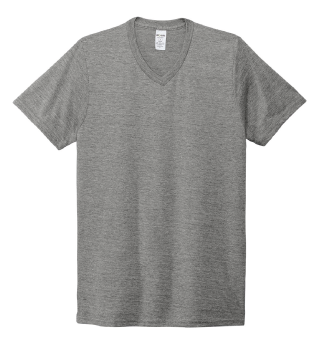
Made from recycled water bottles, beech wood (Tencel Modal), and USA-grown cotton, this tri-blend shirt offers very soft fabric and an ultra-premium feel, at a more affordable price point. Allmade’s chic V-neck design and fit is sure to delight.
As low as: $20.32
Colors:
The story behind Allmade is also the reason why the shirt is so great. Born out of a desire to make a better shirt to print on, a trip to Haiti exposed the hardships created by the apparel industry – both on the planet and the people making our products. Each Allmade shirt is made from a six-pack of recycled bottles (50%), sustainable beech wood for softness (25%), and organic USA cotton (25%).
This mix of materials not only alleviates environmental impacts, but it also produces an amazingly soft and well-made shirt. The shirt is lightweight, but not sheer. Furthermore, the Allmade shirt withstood nearly a dozen trips to the washing machine and dryer and is still as soft and comfortable as it was on day one. This shirt carries all the benefits of a brand name without the higher price point and is an optimal mix of sustainable materials with a premium experience.
As we’ve touched on, Allmade shirts are products you can invest in with confidence. An order of 100 tri-blend shirts (as opposed to standard cotton tees) would save nearly 33,000 gallons of water, result in 275 pounds less of CO2 pollution, and keep 22 pounds of plastic out of the ocean, according to their calculator. While many brands claim to be eco-conscious, these are the types of metrics worth looking at to ensure meaningful impacts are being made.
PREMIUM PICK
The Marine Layer Signature Crew Shirt
Buttery soft, our favorite t-shirt to date
This super soft material sourced from recycled beech wood makes the ultimate premium tee for any project. By focusing on creating the “perfect” tee, Marine Layer’s shirts will stick around for years to come. When it’s finally time to say farewell, Marine Layer offers a garment recycling program.
Material: 50% Supima Cotton + 50% Micro Modal, which comes from sustainably grown beechwood trees
As low as: $45
Colors:
OUR PICK
Allmade Tri-Blend V-Neck Shirt
Ideal mix of sustainability and comfort
Made from recycled water bottles, beech wood (Tencel Modal), and USA-grown cotton, this tri-blend shirt offers very soft fabric and an ultra-premium feel, at a more affordable price point. Allmade’s chic V-neck design and fit is sure to delight.
Material: TRI-BLEND 4.2-ounce, 50% Repreve® polyester from recycled plastic bottles/25% organic, US-grown cotton/25% Tencel™ Modal
As low as: $20.32
Colors:
BONUS PICK
Known Supply Crew T-Shirt
Amazing story, connecting people and products
At the intersection of sustainability and transparency is Known Supply – you can feel good about investing in their products. Constructed entirely out of organic cotton and made responsibly by adults, you’re able to put a face to the name of the “maker” of your shirt with a nametag on each garment.
Material: 100% Organic Cotton
Colors:
Other products we tested
It should not come as any surprise that there are a lot of t-shirts out there. As a distributor, our goal is to create meaningful merchandise that leave a positive impact on people and the planet – and this starts with the products we print on.
For this SwagLab, we looked at 13 unisex and women’s tees with a range of sustainability contributions. Throughout this article, we hope it becomes clear there is no set blueprint for sustainability. From 100% cotton tees to recycled polyester (which is made most often from coal or petroleum), there are a range of opportunities to lessen your footprint.
Each shirt had to meet several impact-based requirements. We want to avoid products and brands participating in greenwashing (that is, trying to appear as if a product is “green” or eco-focused when in reality, it doesn’t move the needle). These considerations included:
- Materials: the growing and harvesting of the raw materials should be more sustainable than similar products by either:
-
- a) having a lesser impact than standard materials (i.e. 100% cotton), or
-
- b) reusing materials in order to reduce waste (i.e. recycled bottles or fabric).
-
- Longevity: the durability and quality of each shirt should exceed expectations of similar products to ensure a longer lifespan.
- Ethical Production: each product must be made responsibly, both in the standards for mitigating adverse environmental impacts as well as meeting high requirements for their employees and factory conditions. Bonus points for a public and traceable supply chain.
Two of our options (made by Known Supply and Patagonia) both leaned into responsible farming and cultivation to create 100% organic cotton tees. These shirts seek to reduce their footprint by growing cotton (which usually requires an incredible amount of water and treatment) with low-impact methods, including the elimination of harmful pesticides.
The rest of the shirts use a variety of alternative materials to lessen their footprint. We have a whole section on material impact below, but some notable mentions include the Royal Apparel Recycled Jersey Tee as well as the District Re-Tee. While these shirts didn’t quite reach our top choices in terms of fit and feel, they’re both made entirely out of upcycled material, requiring no additional growing and harvesting. If your goal is to produce garments with the least possible footprint, these are great choices.
Contents
Why get eco tees?
Our research
Premium pick: The Marine Layer Signature Crew Shirt
Our pick: Allmade Tri-Blend V-Neck Shirt
Bonus pick: Known Supply Crew T-Shirt
Other products we tested
A look at material impact
• Cotton
• Polyester
• Modal
• Blends
Decoration tips
Why trust Kotis
Why get eco-tees?
Normally, this section is reserved for talking about the benefits of a product category, but chances are your team is already planning on investing in t-shirts this year. Instead, we hope this section can help inspire you to invest in sustainable alternatives for your next purchase.
While often marginally more expensive, eco-tees tend to provide a premium experience that is likely to wow your audience. As described in our sustainable swag blog post, the goal of producing branded merch shouldn’t be to maximize quantity, but rather to provide the best experience to the people who receive the item. By doing so, you can actually improve your overall brand reach, even with a smaller product count. Investing in higher quality items means more time spent with a product and a deeper relationship with your brand.
When it comes to an environmental impact, a more responsible product should come at a higher cost. Decades of tight competition in our industry has led to a race to the bottom in terms of product quality as well as harvesting and labor practices. Not only has there been an impact on our planet, but also a noticeable decline in product quality and longevity.
The products we’ve chosen to highlight in this piece are much more likely to withstand the test of time. In Patagonia’s decision to restrict their products for decoration, they cite product waste as the biggest contributor. Products that are used for just two additional years offset their environmental footprint by 82%, since you won’t be purchasing additional products.
At the end of the day, your goal with branded merchandise investment should be to create products that won’t be worn once, but rather stand as a staple in your giftees wardrobe for years to come. This requires a higher initial investment, but this responsible spend will result in years of exposure and a more eco impact.
Our research
We’re always proud of our research for SwagLabs, but this one stands out as our largest effort to date. Over the course of the last 18 months, our largest group yet tested both a unisex and women’s option. This testing period, of course, overlapped largely with a global pandemic that saw us wearing more t-shirts than ever as we worked from home with comfort becoming an even higher priority.
Throughout the testing, each product was worn and washed dozens of times, and ultimately judged on fit, washability, breathability, look, feel, and inclusivity (sizes and color options). Unlike many of our previous tests, where we could rely on hard data (i.e. temperature graphs), this test was more subjective. By relying on the diverse opinions and preferences of our tester team, we’re confident that you’ll enjoy these picks.
This specific SwagLab also weighed the merits of the physical product itself with the environmental footprint that it took to get it to our doorstep. Once again, as a reminder, approximately three-quarters of an item’s footprint comes from the cultivation, harvesting, and production of the raw materials, so that remained the focus of this aspect of our testing.
A look at material impact
Look at the label of your shirt you’re wearing right now. What’s it made of? Chances are you’ll see familiar words like “cotton” and “polyester”, but there also might be terms you’re less familiar with – Modal, Monocel, Tencel, or even hemp. What’s this stuff doing in our clothes? Over time, for both economics and environmental reasons, the stuff to make our clothes has changed.
A quick history of fabrics: historians are fairly confident that we’ve been using textiles to make clothes for nearly 100,000 years and for much of the last 7,000 years or so, there were few innovations in the ways people made these fabrics. Linen, cotton, wool, and silk have been used by people across the world for hundreds of generations. Fast forward to much more recently, and now there’s an explosion of materials available. Even common household names like nylon and spandex didn’t exist just 100 years ago.
As time has gone on, we’ve begun to understand how these materials affect both the garments as well as the people who wear them. You can split these materials in two buckets: organic and synthetic. Organic material is of course grown from the ground, while synthetic material is synthesized, often from uglier origins including coal or oil. However, just because something is grown doesn’t mean it’s inherently “greener” than a synthetic textile. Many plants, especially cotton, require tons of energy to grow.
For this SwagLab, we’ve leaned into our independent research as well as the Higg MSI index, which takes a holistic look at a specific material’s impact from conception to disposal.
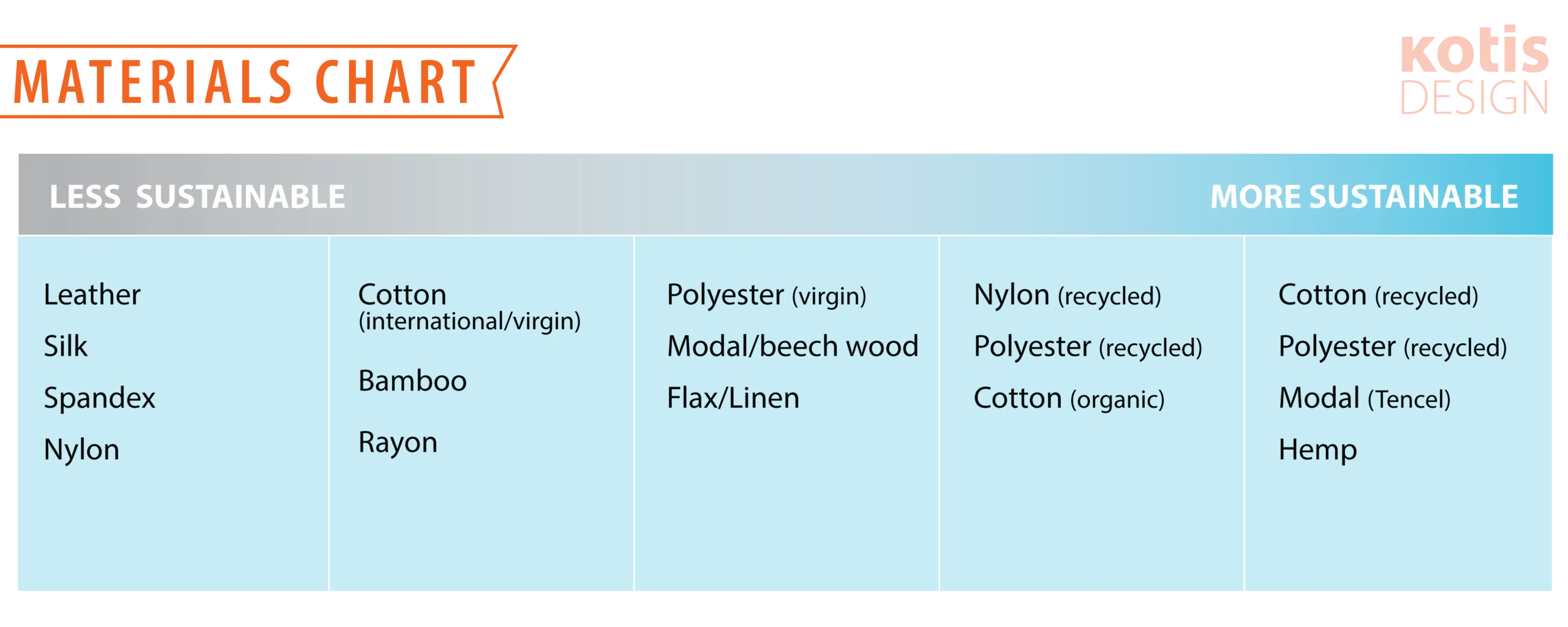
The above graphic should help illustrate several key takeaways:
- “Virgin”, or material that is brand new, is nearly always the highest impact material. It takes a ton of water and resources to grow things from scratch. However, virgin material is often the cheapest. This means that the basic heavy cotton tees that make up a large share of orders in our industry are causing more strain on the environment.
- Synthetic doesn’t equal bad; clothes made from coal actually have the potential to do a lot of good since they’re generally softer, more durable, and can withstand the test of time. Some materials that seem green (i.e. bamboo), have more impact on the environment due to high cultivation costs.
- Both organic and synthetic materials can be recycled. Investing in 100% recycled materials is the most effective way to mitigate your footprint when producing merchandise.
- Many of the newer materials (i.e. Modal, Tencel) are somewhere in the middle, more on those next.
The biggest criteria for the footprint of a shirt is the material it’s made of. Below, we go into detail on some of the most popular textiles from the shirts we looked at.
Cotton
Cotton is still the most common textile in our clothes today. Last year, the United States produced 20 million bales of cotton (each bale can produce 1,200 tees) making America the largest exporter on the plant. The vast majority of cotton is sent to India and China where it is processed into a usable textile.
Cotton is versatile and relatively cheap and is the most common material in the majority of budget tees. Unfortunately, the accessibility and low cost of cotton doesn’t make it an eco-friendly material. Cotton requires a lot of water to grow, approximately 2,700 liters (713 gallons) per shirt. That’s how much water you drink every 2.5 years, all for a single tee.
The impact of cotton isn’t just one we’ll feel in the far future, it’s already here. In Central Asia, which now produces the majority of global cotton, the Aral Sea (previously the fourth largest saline lake in the world), has completely dried up as farmers siphoned water to feed thirsty cotton plants. Asian farmers, particularly those in India, have also been fraught for decades dealing with Bt cotton. This topic is beyond the scope of this SwagLab, but farmers have alleged for decades that this specific genetically modified strain of cotton (created by Monsanto) has caused serious health issues, including a disputed-claim of increased suicides by farm workers who handle the seeds.
All of this is to say that cotton is a difficult textile to navigate. Despite its shortcomings and serious environmental concerns, it still is the foundation for so many of our products and apparel. Its usefulness and affordability often cause manufacturers to turn a blind eye to how it is produced. It’s an impossible crop to avoid, and that’s okay. All of our top picks include cotton in their material mix, so let’s take a look at how to responsibly utilize cotton products.
Today, new techniques are being used to lessen the impact of cotton production, including the new trend of organic, USA cotton. These plants are grown in the United States, where environmental protection laws are somewhat stronger than abroad and are grown without the use of harmful pesticides. So, as a rule of thumb, invest in USA-grown cotton (bonus points for organic material) and if possible, lean into recycled cotton to reap the benefits of the textile without requiring additional material to be grown.
Polyester
Polyester is a synthetic material, created by processing petroleum, air, and water. Like all materials, the environmental cost comes from both harvesting the raw goods (in this case, oil or coal) and through the industrial process. Despite being made from fossil fuels, which are clearly a negative as we move towards a greener future, polyester actually has a lower impact on the environment during production than many organic materials, including cotton.
Since polyester is a plastic, it feels a bit different on the skin than cotton. Polyester is often more breathable and lightweight than its cotton counterpart. If you’ve worn an athleisure item or jersey in the past, you’ll be familiar with the feeling of 100% synthetic material. Today, polyester is generally mixed with other organic and synthetic materials to create a blend (more on this shortly). Additionally, polyester is heavily used outside of apparel, especially for furniture and outdoor goods.
Like cotton, polyester can actually be recycled fairly easily and turned into new garments without the impact of new production. However, a major downside to polyester (and all synthetic materials) is its inability to breakdown fully. Plastic is remarkably durable: an upside during the useful life of a product, but a risk once it hits the landfill. Unlike cotton tees, which will eventually decompose like all organic materials, polyester will take far longer to fall apart (up to 200 years!). There’s also the risk of microplastics, which we do not yet fully understand. Recent studies have suggested that as many as a million fibers of small plastic may fall of each time an item is washed. Again, we don’t know exactly the long-term effects of this on our eco-system, but we should be weary of any product that introduces pollutants to our oceans and water supplies.
Modal
Enter the hybrid! Modal (as well as Lyocell, Tencel, and Monocel) is a semi-synthetic material that combines organic materials with chemical liquids used to break down the raw materials into pulps and fibers used to produce textiles. These days, all the rage is about Modal and its counterpart, Micromodal. Known for their unbelievable softness, both types of fabrics utilize beech wood, a material historically used for firewood, native to Europe, Asia, and North America.
Beech trees, like every raw material in the world, has its pros and cons. It uses 50% less water to produce than cotton and unlike the cotton plant, trees are generally carbon negative since they absorb carbon emissions created by other activities. To be clear, however, within the scope of harvesting trees for production in garments, modal is not carbon negative or even carbon neutral. It still takes more in emissions to grow and process this material than the absorption benefits from the tree. That being said, it’s estimated that Modal’s impact has 60% less of a carbon footprint to comparable materials, including cotton.
Modal is extremely soft and comfortable, even in low quantities. Our two top picks leverage modal for almost half of their raw materials, and they’re absurdly soft. As a result, modal is most commonly used in underwear and pajamas. Like cotton, modal products are biodegradable and unlike its fully synthetic counterparts, microplastics are not a concern.
Like any wood-based material, deforestation must remain a concern. The beech tree population has declined significantly due to disease and harvesting, and they take decades to grow to a useful size. Ensuring that a company is committed to replanting practices is a way to mitigate long-term risks. Tencel, a firm that produces large quantity of modal yarn, adheres to strict standards, so look for that brand name in the material list of your products.
Blends
As you consider the options, you’ll find that most shirts with an eco-focus aren’t made entirely from one material, but generally a blend of raw textiles. Both of our top picks use a combo of modal and cotton (as well as recycled polyester, for the Allmade shirt). By mixing numerous materials together, manufacturers are able to utilize the strengths of each, while mitigating the potential downsides by investing exclusively in a single material.
Blended shirts are often the softest and most durable, which is why they’re our favorite type of shirt. They tend to have a more heathered or weathered look than a solid shirt (which we enjoy for its fashion forward leaning but isn’t always what someone is in the market for). One drawback is the potential for recycling difficulties as some garment recyclers are unable to process and sort the varied materials in each blend and therefor send the shirt to the landfill.
A note on alternative materials (flax, bamboo, hemp)
Cotton and beech wood aren’t the only materials you can grow to make shirts. Flax, bamboo, and hemp all make a nice t-shirt, and all have various levels of carbon footprints during their production. In this test, we only looked at a limited number of t-shirts, including one made from a bamboo/cotton blend. In the future, we look forward to testing additional products, especially those made from hemp, which shows a ton of promise in reducing impact. We will update our guides and recommendations accordingly.
BONUS PICK
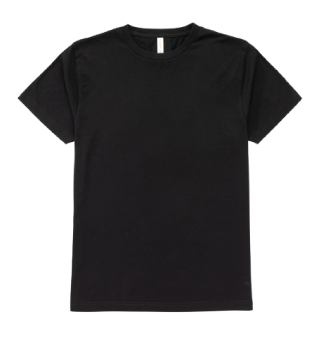
At the intersection of sustainability and transparency is Known Supply - you can feel good about investing in their products. Constructed entirely out of organic cotton and made responsibly by adults, you’re able to put a face to the name of the “maker” of your item. Each shirt has a label showing the name of the person who made your shirt and a code to read their story.
Colors:
Known Supply has a simple philosophy: you should know where your products came from. They’re part of a movement of individuals, companies and partners who care about honoring and celebrating those who make our clothing.
They use 100% organic cotton to produce their products and are stewards in our industry for fair and transparent labor practices. While cotton does require excessive water relative to alternative materials, the cotton is produced organically and locally to where the shirts are made, thus eliminating all harmful pesticides and reducing the impact felt by transportation of raw goods.
Each shirt has the name of the “maker” of your product. On Known Supply’s site, you can read the bio and background of your maker. Madhab produced our garments and you can read a little more about him. “By all accounts, Madhab, who is a ten-year veteran of the garment industry, lights up any room that he enters and is a force for positive.” By knowing who labored on your shirt, you develop a deeper relationship and gratitude to your product.
And you don’t need to take our word for their great product and labor standards. Known Supply is a B-Corp and Free Trade Certified, so you can feel confident in investing in their products.
Decoration tips
To go deeper on design and decoration tips, we’re developing a guide on how to extend the life of your logo’d merch. In the meantime, as is often the case, “less is more”. Take a look at your t-shirt drawer. On top there are probably a handful of shirts you wear a lot, and underneath are a pile of your forgotten collection. Do the ones on top have massive logos? Probably not. Let the message you’re promoting (or the brand you’re investing in) be the star of the show, and your logo be the supporting character.
When working on the graphics that will dawn your shirt, consider how it can match the tee’s eco vibe. Add a distress so the print is more faded. Choose colors that are more neutral or earthy. Go with a hand drawn style design (if you don’t have illustrators on hand for this, we do!)
We also love a good woven label. Even though it’s small and subtle, it adds a nice brand pop and raises the perceived value of the overall piece. Next time you’re wearing a fav brand, notice how well they use those small pieces of fabric.
A note on water-based inks
When it comes time to screen print on your shirt, consider something that pairs well with your eco shirt in both design and ink choice. We love to use water-based inks whenever possible. Unlike other inks (plastisol) that contain PVC and phthalates, water base ink uses 100% biodegradable pigments suspended in a water solution. Water base inks release far fewer emissions in manufacturing, require no harsh solvents in cleaning, and stay bound to the fibers of the shirt longer than any alternative ink. The best part is the print feels like it’s part of the shirt, soft to the touch.
Why trust Kotis
We have a long history with t-shirts. For over a decade, they’ve been the bread and butter of our business and we’ve helped countless businesses tell their story by decorating tees. Over the years, we’ve produced and decorated well over a million shirts. As the need for sustainability has become more apparent, our business has fought for better to push further into sustainability.
Over the last year, we’ve created several recommendations to create more eco-conscious products for our clients, including a blog post and product guide and our print shop director was recognized for sustainable printing practices. Sustainability serves as a key part of our business that we hope to keep expanding on.
How to Make Swag More Sustainable
If you’re subscribed to several mailing lists within our industry, you’ve likely received dozens of emails with eco-friendly products over the last few months. “Save on recycled totes”, “2-for-1 pens made from bamboo”, or maybe you’re part of the 400% increase in sales for re-usable straws (it was named product of the year in 2019 by Advertising Specialty Institute). More on straws later. Search volume for sustainable products has more than tripled over the last 24 months.
Needless to say, there’s a new interest in eco swag that has caused promotional product providers to ramp up their marketing efforts. While we’re thrilled to see increased interest for sustainability in our industry – we must recognize that sustainability is more than a fidget spinner-esque trend, and advocate for better, more permanent change.
In 2018, Fast Company published an article titled “The $24B promotional products industry is an environmental disaster”. That article prompted a surprisingly large response from our industry defending promotional products as a whole, with many choosing to nitpick specific pricing facts rather than addressing the elephant in the room – swag has a sustainability problem.
For decades, the promotional products industry has been a race to the bottom on pricing, causing distributors to opt for cheaper materials and in turn produce swag that gets tossed in the trash. However, there is a way to create swag responsibly. It’s essential for companies investing in promotional products to audit their practice, as we seek to reduce the impact we have on our planet.
Cheap Pens Won’t Cut Through the Noise
This may surprise you, but our VP of Sales has been making a deliberate effort to sell less stuff for years. This means less orders for pens, cheap t-shirts, and flimsy tote bags. The reason for that is simple – they were never an effective use of your budget.
In marketing and sales, we talk a lot about “cutting through the noise”. Over the course of a year, our clients (and yours) are bombarded with thousands of emails, sales calls, and yes, flimsy pens. Playing the volume game with swag has never moved the needle. As the world becomes increasingly noisy, if you want to break through to your audience, the need to create truly memorable experiences grows even more important.
Swag is still an amazing and effective tool to start new conversations, re-engage existing customers, and to send thanks. Promotional products consistently rank as a favorite for recipients, but only when done well.
We’re here to help you navigate these important decisions and provide a framework to push for better from your promotional products distributor. Focusing on sustainability isn’t just the right thing to do, it also makes the most business sense.
Product Selection
In a perfect world, you could browse a catalog of products and feel confident that whichever item you landed on would be produced in a sustainable way. Unsurprisingly, that’s not the case. Each year, billions of promotional products are created, all with a different journey from raw materials to production to distribution and for many, to the landfill.
When we look at all the ways to be more sustainable, product selection is the most important decision you will have to make. Generally, we believe that environmental impact occurs in two important phases:
- How the product is made
- How the product is used
It’s on us to demand better, and we hope you’ll consider these impacts the next time you make a purchasing decision.

1. Production: Not all products are created equally
The second you place an order for a product, you’re sending a variety of signals up the supply chain. Sure, your pens were likely sitting in a warehouse waiting to be customized, but every product you buy is a vote of confidence that cause more to be produced.
For garments, 74% of the environmental impact occurs during production and distribution. That means nearly ¾ of the impact of that item occurs before you even see it. This largely has to do with the collection and processing of raw materials. For example, with an order of 100 t-shirts, you can expect to use nearly fifty pounds of cotton, most of which is grown thousands of miles away from where the garment is produced. To grow the cotton and dye the shirt itself, you can expect to use about 713 gallons of water per shirt, meaning this order requires a tenth of an Olympic sized swimming pool to fulfill. Then, to get the shirts to you and your clients, you can add some carbon impact for that journey as well.
Editor’s Note: We’re working to prepare a SwagLab test of our eco-friendly t-shirt options. Many of these shirts utilize alternative or recycled materials to mitigate the largest factor of environmental impact: the growing and harvesting of raw materials. To be notified of when this review is ready, please subscribe to our newsletter.
All these facts aren’t to ward you off from ordering t-shirts (or any other product). Tees remain one of the most popular product categories that people want to receive and can result in thousands of impressions for your brand, but before you press order, we encourage you to also consider the impact on the planet (more on this shortly).
If you’re in the position to make product decisions for your business, or you’re working with a company that focuses on sustainability, you can choose products with far less impact. Marine Layer, a favorite of ours, produces ultra-soft tees made in part by recycled shirts and other material greatly reducing the amount of water required to produce each garment. Buying items from recycled material is an effective way to reduce the impact of your investment.
More companies are offering recycled or reduced impact items each day. Purchasing a product made from a trusted brand, rather than a cheaper, generic product can make a huge difference on the environmental impact.
Back to re-usable straws
Apparently, Americans use a crazy amount of straws – 500 million a day (that’s 1.6 straws per person per day!). Who doesn’t want to reduce that number? Yet, giving me a reusable straw would be bad for you and the planet. It’s not because I’m a fan of single use plastics, it’s because I don’t use straws at all. Even before Seattle, San Francisco, and other major cities started banning plastic straws, many Americans indicated that they prefer to not use straws at all. Think about the usefulness of your product choice to the recipient before you place your order.

2. Usability: Make products people want
So, if re-usable straws aren’t the silver bullet to creating sustainable swag, then what is? The answer: probably nothing. The true strength of our industry is the breadth of catalog and the ability to produce truly custom items that your client, employee, or brand evangelist is bound to love. For me, I’d take a reusable, insulated water bottle any day of the week, since I’ll actually use it.
Remember when I mentioned that most of a product’s environmental impact occurs during production? That’s not to say you can ignore a product’s impact once it has been produced. The environmental cost is all for nothing unless the recipient of your product uses it. This leads us to the second question you should ask yourself: what’s the longevity and usability of this product?
Before being a part of this industry, I heard swag referred to as “stuff we all get”. We’ve all been to a conference where some cheap tchotchke or two was given to us. Did you keep it? Did you use it? Swag that’s done bad, even if it’s more eco, ends up in the landfill.
Unfortunately, this new, increased focus on sustainable products has caused an influx of swag made from recycled material or reusable items that still don’t get used. We have a great list of products that have less impact on the environment, but the goal still must be to create swag that people will use.
Products that give back and have a broader mission
Consider investing in items that go beyond being sustainable, seeking to make an impact in their community. Each Miir product, for example, has a code engraved on the bottom. You can enter that code on their site to see which sustainable project you supported with your purchase. We’ve also seen items that plant a tree for each purchase, another way to do good based on what you buy.
By shifting the focus away from dollars per item to usefulness, you’ll not only be improving your return on marketing investment, but also ensuring that less of what you make ends up in the trash. Even though I’ve harped on the re-usable straw thus far, they are a great investment for the right audience. One of our restaurant clients uses them as a reward for loyal customers who dine-in often – which will reduce the environmental impact. If you’re a straw enthusiast, research suggests that a single reusable straw can take the place of 295 plastic ones – hardly a wasted investment.
So yes, we encourage you to buy less swag this year. Spend more time consulting with your product experts to make sure the items you’re ordering will get used and cherished. Regardless if you’re one of our clients or another distributor, let’s challenge each other to make better. By making products that people are thrilled to use, you’ll be making a positive impact on your people as well as the planet.
It’s on us to demand better
Sustainability is a goal that we all must push for. It takes many forms: taking the bus instead of driving, reducing energy usage at home, and demanding better from our industry. Swag is here to stay, and it’s an increasingly effective way to promote your purpose, but like most investments, it’s best when done carefully and sustainably.
Here are three things to think about when placing your next order:
- Buy less stuff: maximize your impact by investing in things people want to use
- Product selection has the most impact – consider how your item is grown, produced, and used
- It’s on us, as clients, consumers, and an industry to demand better and start asking questions
Kotis has always tried to maximize our impact on people and minimize our impact on the planet. Our bookend company values are to fight for better and do the right thing. We hope others will follow in our footsteps to advocate for a more sustainable and ethical industry. From the entire team at Kotis, we hope you’ll join us.
Let’s do sustainable swag together.
SwagLab – The Best Insulated Water Bottle
The Best Insulated Water Bottle
Jacob Hoogerwerf | Table of Contents
Calling drinkware a popular investment for brands would be an understatement. Second only to t-shirts, drinkware is one of the fastest growing product categories in the industry and an excellent option for brands to invest in. A whopping 82% of Americans have a promotional drinkware product with 52% of them using it weekly. That offers a staggering 1,400 impressions throughout its lifespan.
Now, there are a lot of options out there when it comes to drinkware. Fortunately, I consider myself a reusable bottle connoisseur, and I am here to help you navigate your drinkware dilemma. For the last decade, I can probably count on a single hand how many disposable water bottles I’ve consumed. Similarly, I can recount the handful of reusable bottles that have lasted the better part of my adult life, starting with the first version of the Camelbak Eddy all the way to the Takeya Thermoflask.
The stakes are high for reusable drinkware products. In the United States alone, we consume over 100 billion plastic beverage bottles a year, that’s 315 per person. By picking the right drinkware product, you can make huge headway reducing plastic waste, 91% of which, isn’t recycled. When it comes to reusable, insulated water bottles, we recommend the H2Go Journey Bottle for its great build quality and superior thermal capabilities. For those who prefer a branded product for gifting, the MiiR Vacuum Insulated Bottle offers excellent performance and a give back program.
OUR PICK
Sleek design, excellent thermal capabilities
Offering excellent thermal performance and a functional design, it’s hard to beat the H2Go Journey Bottle. Offered in several colors and shipped in a retail-ready gift box, the Journey bottle is a perfect solution for most people.
As low as: $17.49
Decoration: Laser, pad print
While all double-walled, insulated bottles offered great performance in keeping cold liquids cool and hot liquids warm, the H2Go Journey Thermal excelled in the most important test: everyday usage. With thoughtful, yet practical design, the Journey is easy to use and worked equally as well on a normal workday as it did on a longer, outdoor hike.
Offering a leak-proof, screw-top lid and a powdered body finish, this bottle felt more premium than many of the more expensive options that we tested. With a swing clip on top, this bottle is easily stored on the outside or inside of your bag, depending on your preference. At 25 ounces, this bottle is the sweet spot in terms of size, offering enough liquid for one outing but not too much to be prohibitive to carry on the go. It’s also worth mentioning that this bottle kept water the coldest in our test; it was the only bottle to keep chilled liquid under 50 degrees for the entire day.
Available in eight unique matte colors and a shiny stainless steel option, most companies will be able to find a style that suits their brand. Heck, even the newly designated Seattle Kraken hockey team picked this bottle to feature their brand new insignia.
FOR BRAND AFICIONADOS
Modern look, deep brand promise
MiiR is always a fan-favorite, offering premium products with superior finishing. This bottle is no exception. Combining tasteful design with a powdered finish, excellent liquid temperature control, and a giveback program, this bottle is a great premium choice for those who prefer a name brand experience.
As low as: $57.16
Decoration: Laser, pad print
For many, drinkware often serves as part or the entirety of a corporate gift to employees, clients, or associates (more on this later). A little bit of brand name recognition never hurt. The MiiR Vacuum Insulated Bottle offers stellar performance and a classic look for a modest price increase. Even better, Miir donates a portion of proceeds from each product to an important cause. The “Give Code” on my bottle indicated it helped support the Kula Project in Rwanda, promoting entrepreneurship through coffee to disadvantaged women.
Offering a narrower body and mouth than the other products we tested, this bottle stood taller than the rest, despite holding the relatively standard amount of liquid at 23 ounces. For some, the larger stature won’t matter, but it’s an important consideration for those including this item in kits and mailers. Miir does offer a wide mouth variant of the same bottle, that is more in line with standard dimensions of other products tested. If I were to purchase a Miir bottle, I’d opt for the wide mouth variant, but that comes down to personal preference.
Both variants of the Miir Insulated Bottle come in black and white. The construction of these products is stellar, with a leak proof lid and sturdy clip for carabiners or straps. Like our other top choice, the bottle comes with powdered finish, giving you a little more grip and a slightly textured look – perfect for your logo.
OUR PICK
Sleek design, excellent thermal capabilities
Offering excellent thermal performance and a functional design, it’s hard to beat the H2Go Journey Bottle. Offered in several colors and shipped in a retail-ready gift box, the Journey bottle is a perfect solution for most people.
Minimum order: 48
As low as: $17.49
Colors:
Decoration: Laser, pad print
UPGRADE PICK
Modern look, deep brand promise
MiiR is always a fan-favorite, offering premium products with superior finishing. This bottle combines tasteful design with a powdered finish, excellent liquid temperature control, and a meaningful giveback program.
Minimum order: 20
As low as: $57.16
Colors:
Decoration: Laser, pad print
ALSO GREAT
Same great bottle, better shape
MiiR’s wide-mouth variant offers the same perks as its insulated bottle with a more standard shape and design. Its fixed clip on the top makes screwing and unscrewing easier and offers a place to hook onto backpacks and bags.
Minimum order: 12
As low as: $57.16
Colors:
Decoration: Laser, pad print
Other products we tested
This test has been our most comprehensive to date. Over the course of two months, we tested a total of 16 water bottles in everyday usage, temperature trials, and durability tests. There are a dizzying number of bottles out there and in many circumstances, the right bottle comes down to personal preference. The bottles we’ve selected are well-constructed and work great for most users.
For the test, we looked at several glass and plastic options as “control” test groups. In general, we do not recommend a glass or plastic bottle unless you are specifically interested in those materials. If you are set on a glass bottle, we like the H2Go Inspire Bottle. There was not a plastic option tested that we recommend.
Similarly, we tested a handful of single wall metal options. While these are likely to be more durable and attractive than their plastic/glass counterparts, they offer no temperature insulation improvement. See our temperature test below for a visual look at how cold water faired for all our bottles and materials.
That leaves us with a plethora of double-walled insulated bottles. All options we tested will keep your water cool throughout the day. After a full workday of testing, less than 10° separated all our double-wall options. While it didn’t make the cut for our top choices, the Contigo Ashland Chill bottle offered excellent insulation along with a straw and spout option (check out the next section for a guide on navigating bottle styles).
The Yeti Insulated Bottle is also worth mentioning. Yeti is an ultra-popular brand and while we were slightly underwhelmed by Yeti’s insulated coffee mug, their water bottle performed very well, keeping liquids cold (or hot) throughout the day. Their ultra-wide design includes a huge opening, Yeti calls it their “Chug Cap”, that’s designed to allow your entire mouth and nose to fit in the opening. For you speed hydrators, this might be your best option.
A note on popular brands like Yeti, Stanley and Hydroflask: As you’ll find in our research, well-constructed, double-walled, insulated bottles all perform at a similar level. The bottles that we have chosen offer an exceptional value given their quality and construction. If you prefer co-branding opportunities with big brand names, they’ll work just as well, but your price point may be higher.
A note on bottle styles

Full Spout
Like drinking out of a cup, the entire top of bottle can be removed. Leakproof.

Lid with Mouth Piece
Screw top for easy pouring, new bottles are leakproof with proper sealing.

Lid with Straw
Flip top straw for easy drinking, generally not leakproof when tipped upside down.

Button Flip-Up
Softer straw that flips up, generally more resistant to leaking, but will leak over time.
As we touched on in our review on the best commuter backpack, some branded merchandise is inherently more personal than others. Water bottles aren’t an exception. Your recipients have preferences in terms of size, shape, color, and the top of the bottle. Not to get too technical over a bottle, but the drinking experience is the most important part and ultimately determines how often your product will get used. You can keep liquids hot or cold for hours on end, but if it spills down your shirt during showtime, your investment will be spending its life in the cupboard.
In general, for giveaways and retail products, we recommend products that will delight the highest number of people. Some will prefer the convenience of a straw or flip-up option, but for most, I recommend considering leakproof bottles only. While most reusable bottles start off leak-resistant, after seals start to wear out it’s common to find puddles in your bag for flip-up and straw bottles. We want to help you make swag that lasts, so we recommend investing in full spout or spouts with closeable mouth pieces. These bottles generally have screw-top lids that are will stand the test of time and keep liquids where they should be. Additionally, these bottles tend to last longer and are more resistant to mold and grime.
Why you should invest in drinkware
In terms of delighting the highest amount of people possible… drinkware is a great idea. According to ETS, drinkware is the second largest swag category, with 88% of American consumers owning a promotional drinkware item. On average, people keep drinkware for over 12 months and each drinkware item generates 1,400+ impressions over its lifespan. Clearly there is a marketing and brand opportunity.
Beyond numbers, however, is the chance to develop a closer relationship with the user of the product. Like I mentioned, over the last decade I’ve only used a handful of bottles. They follow me to and from work, in my personal life, on vacations. I’m not alone. Premium water bottles have become the favorite accessory for young adults and this trend has only grown over the last decade. If you can create a product that people want to use, with tasteful graphics, you’ll be able to develop a deeper relationship between your brand and your people for months and years to come.
Our research
For more than two months, we put over a dozen water bottles through a series of tests looking at performance, durability, usability, and decoration capability. We combined this data with personal insights and internal sales data to deliver our recommendations.
Temperature
On a normal summer workday, we looked at the temperature of refrigerated water in each of our bottles over the course of nine hours:
When you break down the results segmented by material, the insights become quite clear. If you care about temperature control, a double-walled insulated bottle is the way to go. Interestingly, the cheapest value plastic bottle slightly outperformed the glass and single-wall metal bottles for most of the day, but in the end all the non double-walled tests were very similar.
I’ll be the first to admit that taking the temperature of water isn’t an exact science. I didn’t follow the University of the West Indies’ accepted method for testing water temperature; however, the data is quite clear. All double, insulated bottles perform well, most of which will inch about a degree closer to room temperature per hour, with more being lost immediately after being put in the bottle.
Build, construction, and aesthetics
Most modern water bottles are built well and look nice, but if I had any general complaints for the water bottles we tested, it would be the overall durability. Even after just a week of testing, some of the bottles began to leak, have small scratches and dents, or the mechanisms (i.e. buttons) stopped working. Full spout lids have the least number of moving pieces and rubber seals, meaning they’ll last the test of time with minimal care and cleaning.
A true, double-walled insulated bottle is going to be a little bulkier than a non-insulated bottle. This is of course because they essentially have one bottle inside of another, with a vacuum sealed pocket in between. Our top choices, the H2Go Journey and Miir Insulated Bottle passed our durability tests with flying colors. Even when dropped on their side and corners, they didn’t suffer any damage outside of normal scratches. This is likely due to their strong, steel exterior. Unfortunately, this wasn’t true for all bottles. Both the H2Go Trek as well as the Birke Double Wall bottle sustained dents during normal testing on the sides due to using thinner sheets of aluminum, rather than steel.
It’s important to distinguish between performance and durability. Both the bottles I would deem as “heavy duty” or “light weight” both retained water temperature at the roughly the same efficiency, more or less. When it comes to lifespan and toughness is where the more-rugged bottles began to excel. Even after drop and durability tests, the Yeti Bottle (which was the heaviest empty bottle tested at 22 oz. in weight) emerged without even a scrape. When considering which bottle to purchase, try to find a sweet spot between durability and portability.
Decoration capability
Most bottles feature one of two decoration techniques: laser engraving and pad printing. Some bottles, including our upgrade choice (the Miir Insulated Bottle), support both laser and printing, so be sure to check with your product specialist when it comes time to decorate.
Since water bottles are a high-touch item, going in and out of bags, in the cup holder, on the desk, and washed often, we generally recommend the more permanent decoration solution, which is the laser engrave. This offers a classy, monochrome design which often looks silver on a dark bottle. Since the art is etched into the bottle itself, you can feel your logo as well. For bottles that already offer a powdered finish, including both of our top choices, this complements the already textured exterior of the bottle, and will withstand the entire lifespan of the product.
For those who are looking for a little more color and control, printing remains a great option. While it won’t have the everlasting feel of laser etching, brands are able to fully customize their design with color.
FOR MAXIMUM CREATIVITY
Full color, full wrap design capability
When design comes first and you want to leave a lasting impact from each bottle, consider Liberty. They pioneered a full color, cylindrical printing technique that allows the designs to wrap seamlessly around the entire bottle.
Decoration: Proprietary decoration technique
While on the topic of decoration techniques, we wanted to discuss Liberty Bottles – a drinkware manufacturer taking custom to the next level. Their flagship bottle is only single-walled, but they now have double-walled options as well. Manufactured in small-town USA, these bottles are dedicated to ending single use plastic, and sport some of the most unique decoration options out there.
In addition to seamless full wrap printing, they add a clear coat finish that brings a unique raised texture on top of the art. Liberty offers dozens and dozens of designs on their site for inspiration. If you want to flex your creative muscles (or let our design team do so), Liberty may be the route for you.
Decoration tips
A final thought on design: in general, with products that get used daily, less is more. How often do you use a product with a massive logo down the side? Probably not very frequently. We encourage you to opt for tasteful, less obvious designs on your products (with the caveat being a well-designed full wrap Liberty bottle). For those investing in co-branding opportunities with major drinkware companies, look at the size of their logo; it’s often small and doesn’t dominate the bottle. Follow their lead and opt for simplicity over size.
While this may hinder the walking billboard effect that some brands hope for, your product is far more likely to get used if it looks nice and complements the user’s style. A few thoughtful conversations are worth much more than glances at an oversized logo.
Environmental impacts of investing in drinkware
We touched on this in the intro, but I wanted to circle back to this topic. The swag industry gets a fair amount of criticism for its impact on the environment (much of which is rightfully deserved). Products like reusable drinkware are perfect for aiding in the reduction of waste, rather than adding to it. Plastic waste is a serious issue. Each year, over 260 million tons of plastic is produced. A staggering and frustrating 91% of it, is not recycled. And perhaps most damaging, 10% of plastic produced each year ends up in the ocean.
As an exercise, I hope you can reflect on how much plastic you use in a year. We have plastic grocery bags, water bottles, Ziploc bags, food packaging, air bubbles in your Amazon boxes, clothes made from non-recyclable materials, and more. Many of the goods and services we use generate much waste.
Now, this piece isn’t specifically about the environmental impact of swag (we’re developing other content to address that). However, with all products that we sell, we advocate for the ones that have the highest potential to do good, and reusable drinkware is a great example. Some Americans still use plastic bottles for all their water consumption. Consider the impact a reusable bottle can have on someone who consumes 4-5 disposable bottles a day.
For many, the plastic savings won’t be that dramatic and we won’t solve the plastic waste crisis with a single item, but investing in reusable products is a great way to do good for the world, while doing good for your brand.
Why bottles are perfect for kits and gifts
For all the reasons above and more, investing in reusable drinkware is an excellent idea. Reusable bottles are one of the fastest growing segments of promotional goods and they get used. They also make perfect additions to kits and corporate gifts.
Not only are they universally loved (88% of Americans own a promotional bottle), but they complement many other items, allowing you to add a reusable bottle to round out your gift.
Combine a messenger bag and a bottle and you have a new hire kit. Bring together a shirt and a bottle and you have an exercise kit. Put a bottle in a backpack and you have an adventure kit (or any kit really). Bottles are a universal and welcomed addition to any kit or gift that you’re working on.
Finally, there is the aspect of promoting wellness. As we’ve mentioned, reusable bottles are generally seen most often in gyms and outdoor life. By bundling your bottle with other wellness and fitness items, you can promote a healthy and positive lifestyle for your people. And if nothing else, 80% of working Americans say they do not drink enough water every day – you can be a force for that positive change.
Why trust Kotis
We’ve been selling drinkware since the beginning and have been delighted to be part of the movement to reduce waste and promote re-use. Over the past year, we have sold more than 300,000 units of reusable drinkware. With even the most conservative estimate that each re-usable item reduces disposable plastic waste by about 20 units, we are happy to know that we’ve helped reduced plastic waste of over 6 million units.
Our goal is always to help our clients navigate the many product choices out there. Jacob Hoogerwerf, our product tester, spent over two months putting these bottles through their paces. The above recommendations were formed through a series of tests, client feedback, and sales data. These are not endorsed by any supplier, we simply want to help make your life easier when choosing merch. Let’s do swag together.
Black Lives Matter
Black Lives Matter
June 11, 2020
The events in the past several weeks have been heartbreaking and have revealed how wide and painful racism is in our country. We watched the murder of George Floyd as he pleaded “I can’t breathe”, and listened to the horrific stories of Breonna Taylor, Ahmaud Arbery and many more. Our hearts go out to the Black Community who has carried this burden for centuries. It has forced some of us to confront uncomfortable truths. For others it has exposed injustices and trauma they’ve lived with their whole lives.
Black Lives Matter is a statement of truth, seeking to counteract a lie that’s manifested itself over the years in the most evil ways. This moment is another chance for our entire country to take a hard look at systemic racism and oppression, and to fight for change. To be better.
“Do the best you can until you know better. Then when you know better, do better.” – Maya Angelou
This takes work, not just statements. We have a responsibility to create opportunities and to empower. We have not done enough in the past, and we commit to doing more. Here are the next steps we’re working on.
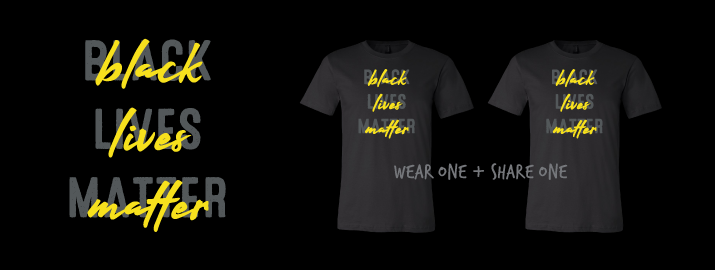
Support the movement with what we do
We’ve had a long debate about what is the most effective way we can impact change. We’re still not sure what the best steps are, but we believe in the power of swag to spread a message and engage people. So we’re using our expertise to try and do just that.
We’re designing, printing and giving away 2 Black Lives Matter shirts to every employee – one to wear and one to share, with the goal of starting conversations and spreading the movement. We also extended the giveaway to our clients for further reach. Each shirt has a sticker pack and a card that contains infographics, resources, discussion questions and suggested nonprofits doing vital work. The idea is to give it to someone who may have a different view than you. Our hope is that this helps spark conversation about racial injustice and drive resources to organizations fighting for systemic change.
The Why
Wearing: One of the easiest and most effective ways to voice a message or belief is with what you wear. Why not use that space for a cause. We’ve all experienced the natural conversations that arise from something you’ve worn. This is not a one-time thing, it can happen over and over for as long as you wear the shirt. We hope this tee will help facilitate that.
Listening and Talking: Conversations can help break down walls, listening can help us see another perspective, which can lead to change. One person at a time. Racism can be uncomfortable to talk about. But we need to ask tough questions, to face it and not look away. The act of giving a shirt will hopefully help open a door to talk.
Support black owned businesses in our industry
Our intent and goal is to elevate black owned businesses and other minority owned suppliers. So far it’s been a challenge to identify black owned businesses in our industry. We’re going to dig in and find this info, it just may take longer and be more in depth than we anticipated. When we do, we’ll create a product guide to use and share with clients.
Foster an inclusive employee community
Our Kotis Diversity & Inclusion Committee was formed in March 2019. In early conversations with leaders in the D&I field, we came to understand that creating an inclusive work atmosphere is the first step in supporting our minority employees, before we can focus on being more diverse as an organization. One of the committee’s 2020 initiatives that is now underway, is to form and provide organizational and budgetary support to Employee Resource Groups “ERGs”. The intention of ERGs is to provide a safe space for different groups to share thoughts, struggles, ideas and to find a greater sense of belonging.
Get comfortable being uncomfortable in order to improve
We have a long way to go as an organization to be a model of inclusion and diversity, but we’re taking steps forward. We’re confronting bias and learning about racial inequality through trainings, internal book clubs, and facilitated discussions. We’re reviewing processes and developing management training for our minority employees. Transparency is also crucial – in 2020 Kotis pledges to make public our diversity statistics and we will continue to set measurable goals for organizational improvement. We must keep up the momentum and do better for the long haul.
We understand this is not enough and we won’t get everything right, but it’s a beginning. We’re committed to doing the work. To fighting for better, together.
Because Black Lives Matter.
How to Wear one + Share one
Email us and we’ll send you a code to redeem the 2 shirts online (while supplies last).
1. Enter your size and shipping address (the 2nd shirt will be a standard size) The shirts will ship next week.
2. Give the 2nd shirt to someone else. Talk about racism. Be vulnerable, be open, listen. Try to see another perspective and vice versa.
3. Wear it. Spark more conversations.
The Case for Working from Home, for Good
The Case for Working from Home, for Good
Nic Thomassen | March 20, 2020
Welcome to the new work-from-home reality. We’ve been here for some time now and think you may enjoy it, despite the unprecedented circumstances. There are of course hurdles to overcome, but what awaits you is a shift that could strengthen your culture and deepen your connections, despite the fear of WFH doing just the opposite. Here are the main reasons we’ve gone remote and the tactics we’ve used to get there.

Culture Transcends Space
I love a well-designed office space, with relaxing (non-fluorescently lit) lounges, installation art, and humongous walls of white boards. I toiled over our office to create an inspiring place for our people to do great work. Yet, that’s not the core of a company’s culture. It goes much deeper.
When we started moving to remote work over a decade ago, we quickly realized those office niceties can’t be counted on anymore. When the chic decor, free snacks, ping pong and yoga are stripped away, you’re left with something even better – your values.
The key to keeping your culture at home is to focus on what you stand for as a company. That’s what attracted people to work with you in the first place, and that’s the mission that will keep inspiring them no matter where they are. Find ways to keep your values top of mind and motivating – reinforce them in meetings, in processes, in team mantras, with physical merch, and any other creative way to cast the vision.
New Ways to Connect
Another perk of the office is real life interactions – those conversations that happen by chance in the lounge or at lunch time. How do you replace those? You can’t (until VR is ready for prime time). However, I would argue the video call can be even more effective and efficient if used well. At a moment’s notice I can talk to any team members, or any other team for that matter… in any state we work in. I can add people to the convo with a click. Think of the logistics of doing that in person. I now talk to more people face to face (via video) than I ever did at our actual office space.
Video First
We use a “Video First” strategy to break down the initial barriers or resistance to video chats and make it the standard form of communication. Not just a message or a voice call, go to video first. After a bit, it becomes second nature.
However, this doesn’t solve the serendipitous chats that bubble up around the break room. So we started experimenting with virtual “water coolers” where a mix of co-workers will chat specifically about non-work stuff. People take turns leading with a set of questions for the round table discussion. Others have done virtual happy hours for the same reason. Whatever your method, have fun with it.
Post Weekend Posts
Another way to engage the team is a simple group chat question: “How was your weekend?” After a fun story or two, that’s the topic our Design Manager Trish poses most Monday mornings. The stories, photos, and interactions that come from it are a joy to see. Team bonding on three!
“Working remote from Kotis has been a literal dream come true for me! … you know your teammates are always just a call or message away whenever you need them. The warm and friendly environment means you laugh as hard as you work, especially during Water Cooler meetings when you get to meet with your team by webcam just to chat and get to know each other.”
-Ajya (Customer Service)
New Benefits
The more you work at home, the more you realize things can be different here. There are new ways to give people flexibility and autonomy (one of the 3 deepest desires at work). Some are simple – take a break and hit that workout class, the dog park, or pick up your kids at school. Let the work flex around their lives instead of the other way around.
Others benefits go deeper. We’ve had people move for a month or two so they can soak up the SoCal sun or ski in the Utah Mountains. Right now, our previously mentioned design manager moved to Palm Springs to skip the rainy Seattle spring. In our last video chat she was under a grapefruit tree.
Our HR Director Natalie took this even further with living out one of her lifelong dreams – to have her Basenji show dog finish 1st in show nationally. Read her story. This couldn’t have happened without remote work and a culture of flexibility.
I haven’t been on that type of an expedition yet, but the possibilities are bubbling up. Maybe we’ll take the kids on a National Park roadtrip for a month. Or to Norway for a whole summer. In the meantime, it’s the small moments that add up. My kids come home from school and stomp upstairs for an exuberant hug. Having lunches with my wife. Being able to stop work and walk downstairs for immediate family time vs a 45m commute.
I’m simply with my family more. Talk about a real benefit. After having worked from home more consistently, my youngest daughter asked if I was working at home the next day. After acknowledging I was, she said “yessss” with a celebratory fist pump.
Give Remote a Chance
Maybe your work from home situation is only temporary. However, we hope by experiencing it yourself, you get a glimpse into the possibilities and what the future may hold. Remote work has been a major boon for how we work and our culture itself. Give it a shot. Just maybe, you’ll become a WFH believer too.
We also put together a product guide for great WFH swag. We’ve used many of these ourselves. Your team will thank us.
This post is about the why of remote work. Need some tips on how to best WFH? Our fav site Wirecutter has a great guide.
SwagLab – The Best Commuter Laptop Backpack
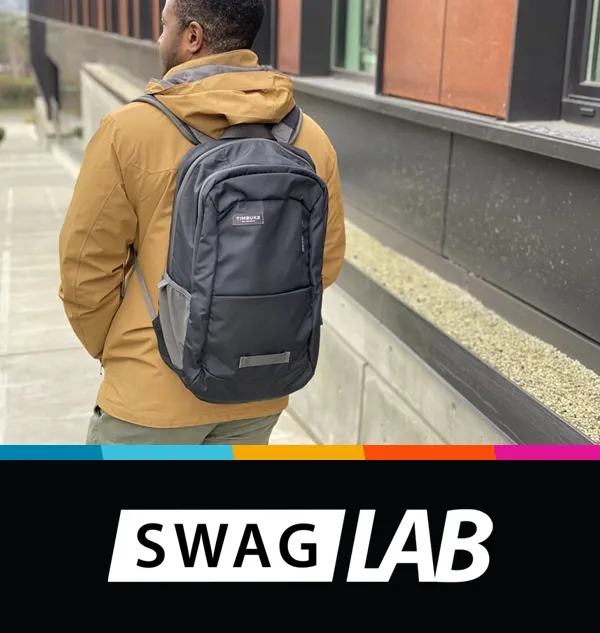
The Best Commuter Laptop Backpack
Jacob Hoogerwerf | Table of Contents
Backpacks are an essential part of a commuter’s day. Not only do we transport important objects, they’re one of the only products that bridge personal and work life. Our days start and end with the backpack, developing a closer relationship with this singular product than most others.
We spent dozens of hours (and many commutes) testing a crowd favorite – the commuter laptop bag. For employees who take their laptop on the go, this is the ideal backpack category. Known for their style and function, these backpacks are simple in nature and designed for everyday use. You won’t find a plethora of pockets and features, but all of them sport a laptop sleeve and a large pouch for your lunch or other belongings.
When done right, backpacks will get used five days a week and can be seen on the bus, train, or walking to the office. However, the bar is high. Since we develop close relationships with our backpacks, it’ll take something special to convince the recipient of the bag to give up the old for the new.
After a lengthy testing spree of bags, we recommend the Timbuk2 Parkside Laptop Backpack for its reliability, sleek design, and usability during your commute. We also recommend the Herschel Heritage Laptop Bag for its functional and popular design.
OUR PICK
Base Cost: As low as $66.90
Decoration: Embroidered
OUR PICK
The Timbuk2 Parkside Laptop Backpack
Timbuk2 delivers on its promise of providing a laptop bag suitable for everyone. Functional, organized, and perfect in size, the Parkside Laptop Backpack passed our tests with flying colors and provides ample room for your laptop, lunch, jacket, and more.
Many bags that we tested tried to do too much. Extra straps, funky pockets, you name it. This isn’t the case here. The Timbuk2 Parkside Laptop Backpack avoided those pitfalls and made a solid, functional backpack. Complete with a 15-inch laptop sleeve, large compartment, and external water bottle sleeve, it’s perfect for most commuters.
Like many backpacks today, the Parkside focuses on tech. Of course, there is a laptop sleeve, but the Parkside also provides an external pocket perfectly suited for an iPad, or even just to throw your phone and keys into as you go through TSA.
With a clean, modern aesthetic and available in three neutral colors, you’d be hard pressed to find someone who wasn’t a fan of the Parkside backpack.
ALSO GREAT
Herschel’s unmistakable style makes a statement in this bag without sacrificing utility. With its simple yet functional design, the Heritage bag is perfectly equipped for commuters who prefer the Herschel look.
Base Cost: As low as $69.98
Decoration: Heat Transfer Only
ALSO GREAT
The Herschel Heritage Backpack
Hershel’s unmistakable style makes a statement in this bag without sacrificing utility. With its simple yet functional design, the Heritage bag is perfectly equipped for commuters who prefer the Herschel look.
Only a decade old, Herschel has taken the world by storm. Popular around college campuses and tech companies, you’ll also find many commuters sporting Herschel backpacks on their way to work. At a similar price point, you can tap into the name recognition of the brand. For fans of Herschel, there is no going back to a generic bag.
The Heritage backpack offers a straightforward design, one large internal pocket with a 15-inch laptop pouch, and a smaller exterior pocket. While the internal pocket allows for plenty of items for your day, the exterior pocket is rather small, only suited for your phone and headphones. Additionally, there is no water bottle pocket, if that is important to you.
The Herschel Heritage backpack is durable, complete with a faux-leather bottom that comes in handy when you’re out adventuring. Its fabric is thicker than other options tested, which gives it a feeling the bag will last. Most importantly, the Heritage bag has the authentic Herschel look that your employees will love.
OTHER PRODUCTS WE TESTED
We tested a total of eight commuter backpacks – some branded options and some generics. These backpacks were selected as our top sellers and popular across retail channels. While all backpacks make for a great corporate gift, we think our picks are better suited for the general audience.
Heritage Supply Tanner
- Highest-rated generic backpack
- Great storage despite small footprint
- Several external pockets including a water bottle holder
Timbuk2 Rogue Laptop Backpack
- Tall design with tons of storage
- Only bag we’d recommend for extended time in rain
- Larger bag provides more design flexibility
Presidio Denim Backpack
- Casual denim look, gives outdoors vibe
- Bag fits tons of items, half a dozen pockets
- Comfy to wear with ample padding on back
- Highest-rated generic backpack
- Great storage despite small footprint
- Several external pockets including a water bottle holder
- Tall design with tons of storage
- Only bag we’d recommend for extended time in rain
- Larger bag provides more design flexibility
- Casual denim look, gives outdoors vibe
- Bag fits tons of items, half a dozen pockets
- Comfy to wear with ample padding on back
We also tested the Herschel Little America backpack as well as the Graphite Compu-Backpack. We don’t believe that the larger Herschel backpacks are well-suited for the average commuter, and there are better generic options than the Graphite backpack.
A NOTE ON BACKPACKS
Depending on who you ask, there are anywhere between 3 and 17 different categories of backpacks. Next time you’re on a bus or subway during rush hour, look around, you’ll be surprised at how many different types of bags people use for work. For ease, we’ve broken them down into several categories:
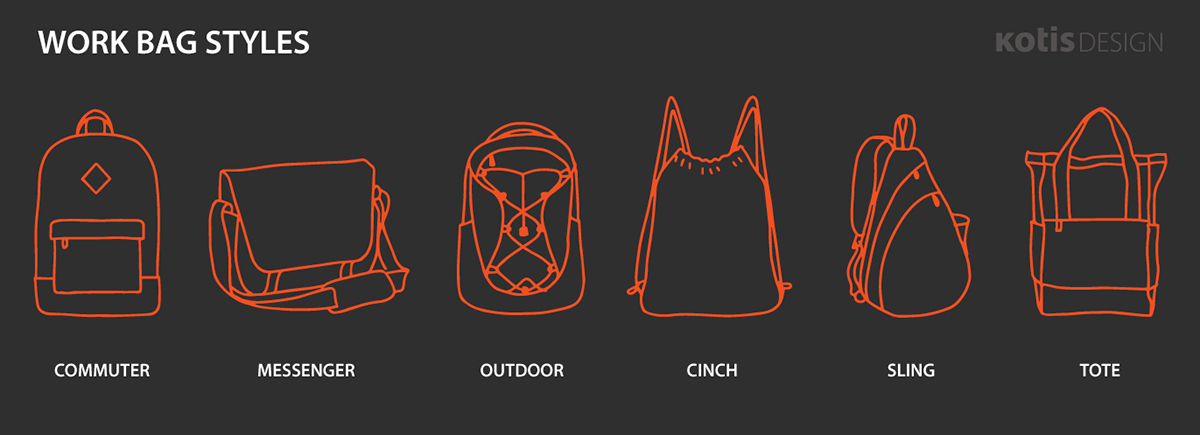
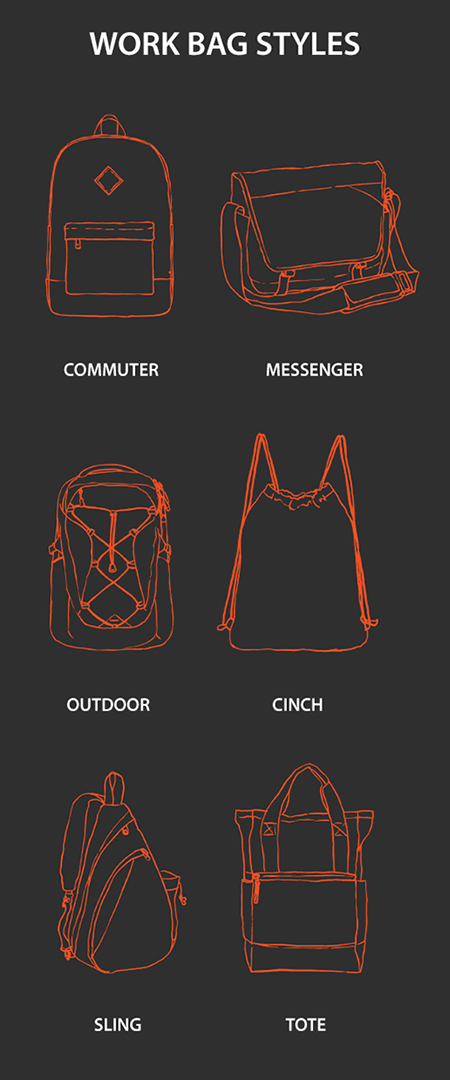
Commuter Bag – These are the focus of this post, bags designed for the daily commute. Built for laptops, lunch bags, and not too much more (Herschel, Timbuk2)
Messenger Bag – Another popular choice for commuters, excellent for laptops and slightly more portable; messenger bags are making a bit of a comeback (Timbuk2, Tumi)
Outdoor Backpack – Backpacks designed for hiking and the outdoors, but often used for daily commutes; very popular around college campuses and tech companies (The North Face, Patagonia)
Cinch Bag – Casual bags historically used for giveaways and workout gear; popular for those sans laptop and an easy commute, often accompanying another bag (Nike, Adidas)
Sling Bag – Newer option, more casual option for those with a light load; some sling bags have room for laptops (various brands)
Tote Bag – Popular option for light commutes and the farmers market, totes usually have plenty of space. Some manufacturers also make tote-backpack hybrids now (various brands)
We plan on having breakdowns for our favorite bags in each category, we wanted to start with the most popular category.
That being said…
WHY GIFT A COMMUTER BACKPACK?
We’ve said this before, but the best swag is “sticky”. This means that your recipients are going to use your item for years to come. Think of how many eyeballs will see your backpack if it gets used five times a week for over a year. ASI estimates that bags account for 3,300 impressions over their lifespan. We argue that with tasteful design and execution, commuter backpacks far exceed that estimate.
You’ll be hard pressed to find a promotional item with more utility than a bag, but what makes this type of bag so attractive? Simply put, they’re for everyone. Commuter backpacks tend to be stylish, gender neutral, and useful for all. If your company assigns laptops for the road, the bags make for a great insurance policy, keeping expensive laptops protected.
New Hire Kit – Backpacks also make for an excellent part in any new hire kits. Not only do new hires likely need the means to transport items to the office but giving new employees a physical item deepens the relationship they have with their employer. They’re now part of the club and will feel appreciated from the get-go. And of course, what better way to package a new hire kit, filled with drinkware and other items, than a great looking backpack?
OUR RESEARCH METHODS
Over the span of several months, two testers used all bags for dozens of commutes, around the house, on the bus, and even on four different flights to test their performance in several categories:
Aesthetics – The overall look and feel of the bag. Simply put, does it look like something you’d want to take to work or out and about?
While we cannot say with certainty that everyone will agree with this subjective category, we believe that our top two choices stand above the competition. When considering how a bag should look, our priority was to find bags that most people would want to take to work.
Most of these bags come in only a handful of colors (this is by design). Most colors are neutral dark tones and maybe a navy blue if you’re lucky. Manufacturers want to create bags that people won’t object to. While this does limit your creativity a bit, look around, you don’t see a whole lot of pink and yellow backpacks on the bus.
Bag Size: Another consideration within aesthetics is the size of the bag. While all bags fit similar sized laptops, (all accommodated a 15-inch screen) the height of the bag varied. We found that we could group most of the bags into two categories: normal-sized and over-sized. More on the utility of each size later, but consider the size preference of your employees before proceeding.
Construction – Does the bag feel like it’s well made? Is the material durable and functional? Do the zippers work well?
Not all bags are built the same, even if they look similar. For the most part, we found that it’s true you get what you pay for when it comes to backpacks. However, we were surprised by some of the generic options. Our top performing generic bag, the Heritage Supply Tanner, felt like it would be flimsy at first, but fared better in our tests than its more expensive, branded counterparts.
Apart from the Timbuk2 Rogue Laptop Backpack, we don’t recommend any of these bags for long walks to work when it’s raining. Most commuter backpacks utilize a fabric blend for their material, which is great to look at, but not water resistant.
Comfort: Is the bag comfortable to wear when loaded? Are the straps and padding sufficient?
Surprisingly, the comfort category is where many of our favorite bags faltered. Now, before we get into that, something to consider is how often you’ll actually wear your backpack. Most commutes go somewhat like this: pack your bag, wear it briefly to the car, place it on the passenger seat until you get to work, wear it as you walk to the office, put it under your desk for eight hours, then reverse that for the trip home. Even if you throw in a trip or two on the subway/bus, they still don’t spend that much time on your back.
This is all to say that even though they get a lot of use compared to other types of bags, you won’t be wearing them all that much. None of the bags were uncomfortable, and if your load consists mostly of a laptop, lunch and water bottle, you’ll be fine regardless of your choice.
In our tests, the Timbuk2 bags underperformed relative to their competition, with noticeably less supportive padding in the straps and back. The Herschel backpacks had more padding but provided rigid straps that we assume will be more comfortable the more its worn. Our generic options all had less padding than their branded counterparts, but most were surprisingly comfortable as they conformed to your shoulders and back.
Utility – Does the bag work well? Can it fit everything you would expect it to?
For our testing, each bag needed to hold our laptop, lunch, water bottle, headphones, snack, and other small items. All bags were able to hold those items, with the larger bags offering plenty of space for additional items including a change of clothes for an evening workout.
Both of our picks, the Timbuk2 Parkside and the Herschel Heritage bag, have very similar storage. The generic options tend to be a little smaller, but still enough for most. Our largest bags (the Presidio, Little America, and Rogue) are much larger. If you need an extra pair of shoes or are going on a weekend trip, you’ll need the extra space, but for most, lugging a huge bag to and from work every day is probably overkill.
Organization – Does the bag have enough pockets? Are you able to easily access your laptop and other items?
All bags tested included a built-in laptop pouch to keep your tech safe and protected. Most bags contain one large pouch where everything is stored, and then a secondary external pocket meant for quick access. As mentioned, the external Herschel pockets tend to be smaller, while the Timbuk2 options are built for iPads and more storage. It’s really a matter a preference.
The larger bags may offer too much storage, with deep cavities making it difficult to access items at the bottom of the bag.
Decoration: Does this bag allow for stylish branding?
See the section below on bag decorations for more tips, but here we will say that each bag offers different flexibility in terms of decoration. For most backpacks, you’re going to be best off with a nice embroidered logo on one of the larger front pockets. Some bags, notably the Presidio and Herschel bags, offer less flexibility, with a defined logo placement on the front.
Using the above metrics, each bag was graded on its performance by each tester, and the total scores were averaged accordingly. The Timbuk2 Parkside and Herschel Heritage bags had the highest combined score.
For an ultimate upgrade
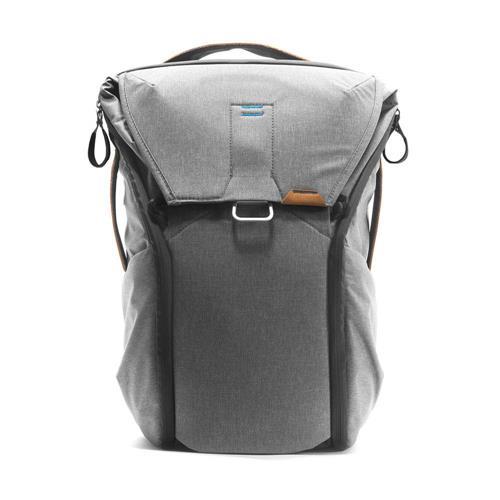
When premium isn’t nice enough, turn to Peak Design. If you’re looking for the ultimate backpack, you’ve found it. Weatherproof and over engineered in every way, you’ll be hard pressed to find a bag that does more.
Base Cost: As low as $269.00
Decoration: Embroidered
FOR AN ULTIMATE UPGRADE
Peak Design Everyday Backpack V2
When premium isn’t nice enough, you turn to Peak Design. If you’re looking for the ultimate backpack, you’ve found it. Weatherproof, overengineered in every way, you’ll be hard pressed to find a bag that does more.
For SwagLab, we try to compare apples to apples. That’s why we didn’t include the Peak Design backpack in our commuter backpack test, but still want to mention it. Priced around $250, it isn’t fair to compare them to the other bags in our test – and that’s okay.
For employee recognition, holiday gifts, or milestone anniversaries, a Peak Design product is a great option. Built especially for photography enthusiasts, this bag can fit all your equipment and more (and yes, it also has a spot for your laptop).
That being said, this bag isn’t for everyone. The Peak Design bag eclipses all others we tested in term of size. If you have a lot of gear for work or take to the mountains for photography trips on the weekend, you’ll love the Peak Design bag.
DECORATION TIPS
As we hinted at earlier, you have a few options in terms of decorating on backpacks. Most companies will opt for logo placement on the larger compartments of the bag.
Embroidery: For backpacks, the most common decoration is embroidery. Since bags are subjected to more wear and tear than a t-shirt, embroidery is a good option to ensure your design lasts and fits the look of a quality bag. Embroidery can often be decorated on several parts of the bag, but keep in mind the limitations each bag may bring. Since we run our own print shop, we know about these limitations firsthand. The main consideration is if the embroidery hoop and arm of the machine will fit within the pocket or location you want. If that sounds too technical, just know there may be some testing required to double check if a particular spot works for embroidery (or if the logo size needs adjusting).
Patches/Labels: Another great option with a very retail look is a patch or woven label. They come in all different types and materials from faux leather to PVC. Most labels and patches can also hold more detail than embroidery, so if you need to retain small text, this could the method for you. Again, the limitation here is how the sewing machine can get into and around the bag in order to sew on the label. Yes, we do this in-house too.
Limitations: Some bag brands limit what decoration type and locations are allowed. Herschel is quite specific about additional branding – only heat transfers are allowed and only within a specific imprint size and location. The Presidio stipulates the co-branding must be embossed on a specific leather patch. These rules do seem limiting, but the brand is simply trying to protect the overall look of their item.
Heat Transfers: As we just mentioned with the Herschel bag, heat transfers are another option. The benefits are a variety of transfer material options, but the fabric of the bag must be considered and even tested to see what works best. The heat press pallet will also need to fit within the bag for proper pressing.
As with most products, we encourage our clients to take a more creative approach to designing bags. Instead of massive logo placement, consider adding more subtle branding or using a sewn-on patch. Not only do these design choices look better, but it’s more likely that the recipient of the product will get more use out of the backpack.
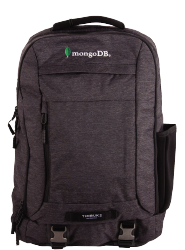
Timbuk2 Authority Backpack – MongoDB
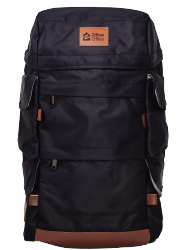
Presidio Backpack – Zillow Offers

Zoom Node Backpack – Google Cloud
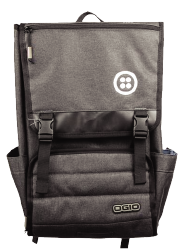
OGIO Apex Rucksack – Twilio
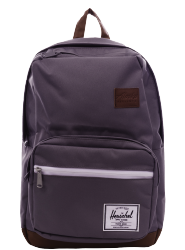
Herschel Backpack – Alaska Airlines
WHY TRUST KOTIS
We’ve been decorating and shipping backpacks for over a decade. There have been plenty of transitions in trends and styles over the years, and after careful testing, we’ve created these recommendations.
Our goal has always been to create the best swag for our clients, and we’re happy to work with you in that endeavor. Our product editors included Tricia and Jacob who tested and reviewed all bags over the course of several months.
We have distributed thousands of backpacks. We utilize the feedback from our clients, combined with our testing to create these recommendations. These are not endorsed by any supplier; we simply want to help make your life easier when choosing merch. Let’s do swag together.
*Prices are current at time of publishing, please reach out for updated cost and styles
Base Cost: As low as $66.90
Colors:
Decoration: Embroidered
Base Cost: As low as $69.98
Colors:
Decoration: Heat Transfer
Base Cost: As low as $35.43
Colors:
Decoration: Embroidered
Base Cost: As low as $76.20
Colors:
Decoration: Embroidered
Base Cost: As low as $88.33
Colors:
Decoration: Embossed
How to Bring Magic to Your Holiday Gift
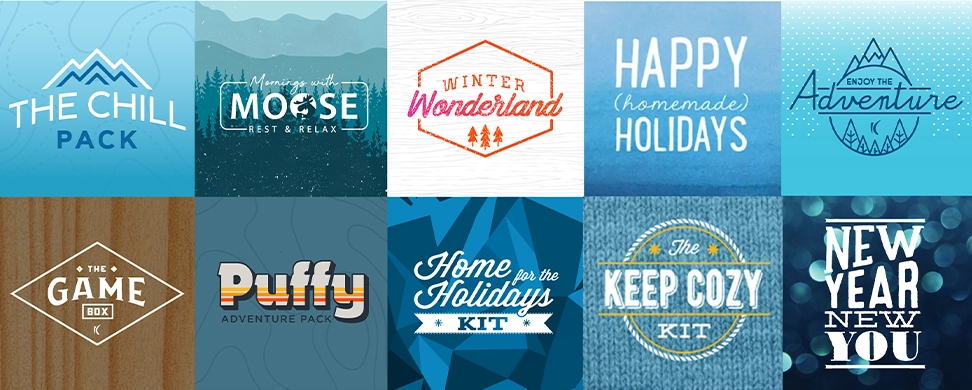
How to Bring Magic to Your Holiday Gift
Nic Thomassen | November 11, 2019
How to Bring Magic to Your Holiday Gift
Nic Thomassen | November 11, 2019
What do you want this holiday season? What gift would get you excited? Those questions lead to what we call the golden rule of gifting: Give to others what you would want to be gifted. Sounds simple, yet how many mediocre “thank you” gifts have landed in your break room come holiday time? Another gift basket of consumables that gets mixed with the other five strewn about the café… until the giver of the basket is not even known to the eater of its edibles. Sure, a salami or chocolate covered pretzel can be a savory gesture, but it’s soon gone and forgotten… like the melting snowman in your front yard.
The leading categories for holiday gifts are still food, beverages, and calendars – meh.
We can do better.
Instead, let’s dig in and harness your gift giving prowess in a more creative and thoughtful manner. Since swag is what we do, we’ve been honing our holiday gift game for some time, always trying to create something special for our clients. Here’s our playbook for how we architect our own holiday gift – just maybe you’ll find a few morsels of inspiration along the way.
1. Start with the why (and who) of the gift
We often talk about swag as a sales tool. Your holiday gift is not that. It’s a chance to truly thank the people, partners and clients that helped you get here. No strings attached. When the salesperson on your shoulder starts chirping or the marketing voice in your head wants to analyze the ROI, remember the why. In the spirit of the season, from Christmas to Hanukkah, Festivus and the rest, let’s be generous.
According to ASI, more businesses will send a gift this year than ever. 42% of businesses plan on giving a holiday gift to employees and 37% plan on sending a gift to clients.
Who is this for? Is the goal to thank a larger crowd or select individuals? It’s a choice of breadth vs depth. When employees snack on the crackers or kettle corn of a gift basket, it does actually serve a purpose in touching a wider amount of folks, albeit at a lower impact per person. We instead go for a higher impact per gift by focusing on our main contact, the one we work with day in and day out. We can therefore put more into each gift and truly honor that relationship.
Need a bit of both? Try a tiered gift: something smaller for the masses and a step up for your main contact (or even another step up for the VIPs). Your audience is unique, so only you can find the right mix here.
Who are you? This is also a chance to represent who you are as a company and what you stand for. We’re big believers in a healthy lifestyle and therefore themed a past gift around a “New Year, New You” message. We also love getting out in the wilderness, so we paired that with a little mindfulness in our “Enjoy the Adventure” kit. You can reinforce your values while still saying thanks… which, I would argue, does so in an even more unique and authentic way.
2. Wrap your gift in a compelling theme
When we write a blog post, the first thing we do is brainstorm a long list of titles for the topic at hand. It seems backwards, right? Develop the title before the content? However, by focusing on the headline first, it shapes and brings clarity to the writing. The same can be said of a holiday gift. A strong theme pulls the whole piece together, from product selection to design aesthetic. It allows you to purposely build out the story through the rest of the process, which makes for a stronger gift.
So start whiteboarding your theme ideas… from trendy to traditional, heartfelt to humorous. What will resonate with your people (and again, what speaks to you)?
3. Tell the story, with merch
Now, let’s dig into the swag. With your theme in place, the product spitballing will flow much better.
- What are you seeing in retail?
- What could be created from scratch via importing?
- What graphics could transform a basic item into something more?
- Would merch from a retail brand help elevate the gift? Could a certain brand reinforce the vibe you’re going for (think Patagonia or Timbuk2)?
- What print methods align with the desired mood (e.g. laser etch, embroidery, discharge screen printing, etc)?
The beauty of a good theme is that each individual item doesn’t have to be mind-boggling. If the item is done well and decorated with good graphics, it comes together with the rest of the kit to reinforce the overall message: the whole is greater than the sum of the parts.
If you like an item, but it’s a mismatch with the overall message, dump it. If you wouldn’t personally want the item, move on. At this point, if you’re still struggling with the product mix… go back a step and develop your theme further or even test another one. It’s usually a sign that more time is needed on the previous step (HT to Getting Things Done).
Choose your own adventure gift
This year, we’re serving up 4 different gifts for our employees to choose from. The signups are done online via our Redemption Page. I can’t divulge the gift details yet, but one item will be size specific. Companies tend to avoid size specific items all together (guessing sizes for your people is fraught with danger). However, this gives you a whole new option for gifting to employees or clients. Yes, the element of surprise is a bit lost, but the flexibility of choosing a specific item and size is a nice trade off.
An all edible gift is not our top choice; however, we do like the addition of a tasty treat within the kit. Something that pairs well with the theme and/or a specific item (e.g. As a part of a “Keep Cozy” kit, place a chocolate on a stick inside an insulated mug, with a warm message to boot; or a use pack of “Hit the trail mix” inside an “Enjoy the Adventure” pack.
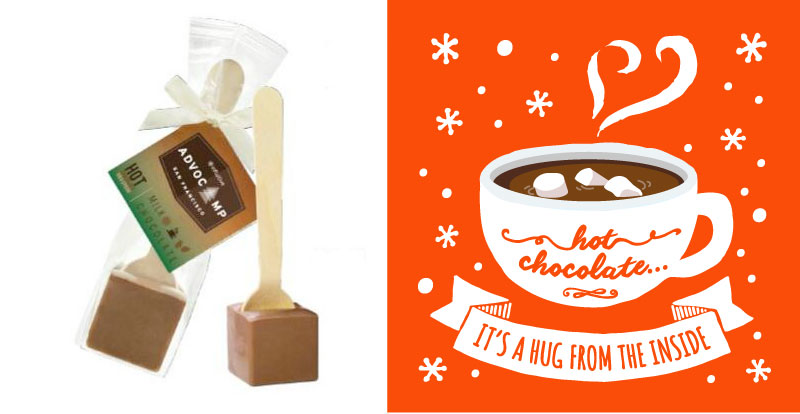
4. Amplify with design
Good design can amplify the impact of the gift (bad design can stifle it). Each item, and therefore the design on each item, is an opportunity to speak to the theme. As such, we suggest you lay low on the self-branding. Remember the overall goal is to say thanks, not to shout your name loudly. Plus, do people really want your brand emblazoned boldly on a gift? You’re not Nike.
If you don’t have an in-house design team (or they’re busy doing marketing-y things), we’re happy to help. Think of us as your band of elves merrily designing swag in a far-away land (or just as an extension of your marketing team). The holiday spirit is growing thick as I write.
If you’re starting to feel excited about owning your own gift, you’re on the right track.
Let’s keep adding on.
What’s the first thing they’ll see when opening your gift box… a card (hopefully). So, make it custom! With your designs rolling for the merch, it’s easy to parlay those efforts into a greeting card of your own making, and with your own message of thanks.
Bonus points: turn your text into a poem. Who doesn’t love a fun poem, especially around the holidays. Hmm, maybe I’ll re-write this article in iambic pentameter.
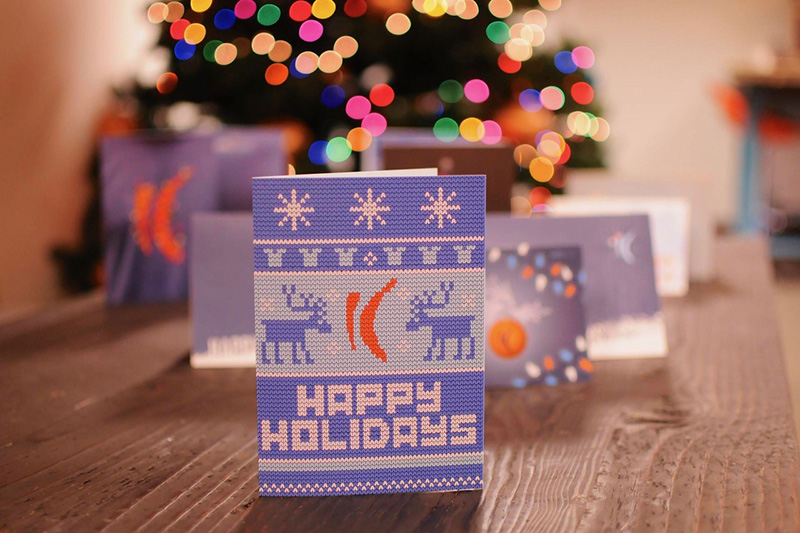
5. Tying it all together: Retail Finishing and Kitting
We slighted the gift basket earlier, but it does get something right… it wraps the items together in a nice package. Let’s look at ways we can do the same for your kit. We’re not in retail, but we look to it for style cues and inspiration. Here are the top ways to finish your gift:
-
- Hangtags – A simple (and cheap) way to add a retail touch to your item; drop in a clever message or a description of the product while you’re at it.
- Ribbons – Greet your receiver with a shimmery ribbon as they engage your gift… wait, does that ribbon have a custom logo on it? Yes, it does.
- Tissue paper – What’s more gift like than layers of tissue gently surrounding a present? Take it a step further with a custom printed pattern or color.
- Crinkle Paper – It’s fun, it’s squiggly, it comes in many colors, it’s crinkle paper… the party in a box! It’s made from 100% recycled content too. Nestle your product in some of that recycled crinkle goodness.
- Kraft tape – It’s even possible to customize your kraft tape (hey you’ve seen Amazon do it, right?)
You may be thinking, how will I attach and assemble all this goodness… don’t worry, this is where our helper elves come back in (this time known as our warehouse crew). They handle all aspects of finishing and kitting. Go ahead, get crazy with your kit.
Think outside the box, literally
Let’s wrap it up with one more piece: the box. It’s the outer shell of your gift, the first thing you encounter… and it has more design real estate than anything else within it (listen; designers are cheering). Don’t squander that lovely space, use it to create tension as to what’s inside, clues to the contents, and most of all (you guessed it) to reinforce the theme! A full color graphic treat awaits your receiver if you take advantage.
Don’t have the budget for a fully printed custom box? We don’t always either… you can still customize the outside of the box with a stamp or sticker. It gives a nice crafty, hand touched vibe.
Size Matters
How big is your box? How heavy? Choose a large product, and you’ll need a large box, which in turns costs more to ship. Not that you can’t think big with your merch, but know there are consequences down the line. Trust us, we’ve shipped hundreds of thousands of kits and have seen the dollars saved with careful planning.
Keep the size and weight in mind at the product brainstorm stage!
This is also true for how the items are kit together… which is why we create a mockup to scale of all items going into the package and then digitally play with how they best fit together. Playing digital Tetris is always better than having issues on the kitting floor. In addition, we consider the presentation value and the overall balance of looks vs efficient packaging.
This final step can often be an afterthought but spending extra time on finishing and kitting can create magic in that moment of unveiling. Maybe it’ll even end up on Instagram.
Thought that counts
In the end, it really is the thought that counts. And the driving thought behind all of this is simply a means to say thanks. So, let your gift be a well thought out piece. The person receiving it will feel those efforts and probably be thankful themselves.
Thank you for joining us down this holiday gift lane.
See you again next year. Cheers.
3. Tell the story, with merch
Now, let’s dig into the swag. With your theme in place, the product spitballing will flow much better.
-
-
- What are you seeing in retail?
- What could be created from scratch via importing?
- What graphics could transform a basic item into something more?
- Would merch from a retail brand help elevate the gift? Could a certain brand reinforce the vibe you’re going for (think Patagonia or Timbuk2)?
- What print methods align with the desired mood (e.g. laser etch, embroidery, discharge screen printing, etc)?
-
The beauty of a good theme is that each individual item doesn’t have to be mind-boggling. If the item is done well and decorated with good graphics, it comes together with the rest of the kit to reinforce the overall message: the whole is greater than the sum of the parts.
If you like an item, but it’s a mismatch with the overall message, dump it. If you wouldn’t personally want the item, move on. At this point, if you’re still struggling with the product mix… go back a step and develop your theme further or even test another one. It’s usually a sign that more time is needed on the previous step (HT to Getting Things Done).
Choose your own adventure gift
This year, we’re serving up 4 different gifts for our employees to choose from. The signups are done online via our Redemption Page. I can’t divulge the gift details yet, but one item will be size specific. Companies tend to avoid size specific items all together (guessing sizes for your people is fraught with danger). However, this gives you a whole new option for gifting to employees or clients. Yes, the element of surprise is a bit lost, but the flexibility of choosing a specific item and size is a nice trade off.
An all edible gift is not our top choice; however, we do like the addition of a tasty treat within the kit. Something that pairs well with the theme and/or a specific item (e.g. As a part of a “Keep Cozy” kit, place a chocolate on a stick inside an insulated mug, with a warm message to boot; or a use pack of “Hit the trail mix” inside an “Enjoy the Adventure” pack.

SwagLab – The Best Insulated Coffee Mug
The Best Insulated Coffee Mug
Insulated mugs are a hot item right now, and as a swag category, drinkware is second only to t-shirts. That’s huge. Drinkware is versatile, practical and can get daily use – if it’s a high-quality item. Even the best tee can’t do that! With thousands of styles and variations out there, the options can be dizzying. We’re here to bring some clarity to the double wall craze.
We spent dozens of hours testing a handful of the most popular style for gifting – the insulated, thermal coffee mug. The beauty of this item is its versatility. It works well at your desk or around the campfire: keeping coffee, tea or cocoa hot for hours. It’s great for iced drinks (coffee or cocktails!) to keep things cool and refreshing. The insulated mug is highly coveted by anyone dissatisfied with room temp beverages.
After countless cups of coffee and many tests, we recommend the Camper Mug for its versatility and the Miir Camp Cup for an upgrade gift. While all mugs we tested maintained warm coffee for hours on end, the Camper Mug provides an affordable and durable gift that beat many name brands. For people who want the extra value that comes with a name brand, we recommend the Miir Camp Cup for its sleek design and brand promise.
Our pick
The Camper Mug
This reasonably priced mug has the largest range of color and print options and was one of the top performers in our heat retention tests. It has a great look that wraps up nicely in our favorite gifting box of the bunch.
As low as: $17.49
Decoration: Print
OUR PICK
THE CAMPER MUG
This reasonably priced mug has the largest range of color and print options and was one of the top performers in our heat retention tests. It has a great look that wraps up nicely in our favorite gifting box of the bunch.
The Camper Mug excelled in all aspects we tested, from temperature tests to color options to overall look and feel. It held both hot and cold liquids with ease. The lid was easy to use and the handle provided good versatility among different hand sizes. Starting at $11.99, the Camper Mug was also the most affordable option we tested.
The Camper Mug comes in a recyclable box that was our favorite look for gifting. It has the most amount of color options (8 total, 3 more than the closest competitor). There is also an option for a single-color print on the handle, something no one else offered.
With its classic look and wide range of color options and print capabilities, this mug is sure to be a crowd pleaser.
Best Upgrade for a Gift
Miir Camp Mug
Offering premium look and feel with a great brand promise, the Miir Camp Cup is a great, premium choice for businesses who want to make an impact with their gifting.
As low as: $26.98
Decoration: Laser (recommended), Print
BEST UPGRADE FOR A GIFT
MIIR CAMP MUG
Offering premium look and feel with a great brand promise, the Miir Camp Cup is a great, premium choice for businesses who want to make an impact with their gifting.
If you’re looking to upgrade your gift, we recommend the Miir Camp Cup. Many of our clients prefer recognizable name brand products when gifting but does that perceived value match reality? With this Miir Camp Cup, we think it does. With clean design and great performance, this mug is likely to be a highly coveted piece of drinkware.
We loved that Miir partners with worthy causes all around the world to give back 3% of revenue. Additionally, Miir is a Certified B Corporation. We have found that many of our clients like to give gifts that are responsible and part of a broader mission, even if it means spending a little bit more. On the bottom of each Miir product is a code to track the cause your product is supporting. The Camp Mug we tested is supporting a sustainable, non-profit farm and incubator in Skagit Valley, WA called Viva Farms.
Miir’s premium elements and brand promise sets it apart from the competition. Even companies like Patagonia and REI trust Miir for their custom insulated mugs.
Other products we tested
We tested several name brands and generic products. These mugs are some of our best sellers and most popular on retail channels. While most mugs did a great job keeping liquids hot or cold, we think that our picks are better suited for gifting.
Premium pick

Rover Camp Mug
- Double-wall stainless w/ copper insulation
- Cold for 24 hours / hot for at least 6 hours
- Construction prevents condensation
- Durable powder coating
- 14 ounces. 18/8 grade stainless steel
As low as: $16.37
Decoration: Laser (recommended), Print
- Double-wall stainless w/ copper insulation
- Cold for 24 hours / hot for at least 6 hours
- Construction prevents condensation
- Durable powder coating
- 14 ounces. 18/8 grade stainless steel
Why gift an insulated mug
Insulated mugs are durable and likely to last a long time. These products are going to sit on desks, accompany people on camping trips, and provide comfort throughout the year. Desk mugs are great gifts for any office worker, outdoor adventurer, or coffee aficionado.
Insulated coffee mugs carry reasonable minimum order sizes, making them perfect client holiday gifts or just a nice treat for employees around the office.
Our research
When reviewing these thermal mugs, we considered several categories: how efficiently they retained heat, the overall look and feel of the product, and the capability to decorate and customize the mug.
The Heat: The entire point of an insulated mug is to keep hot drinks hot and cold drinks cold. Room temperature is the enemy here. We tested all five of our mugs by boiling water and starting out at the same temperature – 196 degrees Fahrenheit. Every hour we measured the temperature of the water in each mug over the course of an entire eight-hour workday.
Quick note for coffee fans: Actual science has been conducted by the National Institutes of Health – the optimal temperature for serving hot beverages is between 155- and 125-degrees Fahrenheit. While individual preferences may vary, all mugs maintained this ideal time to consume the beverage for several hours.
In this heat test, the Camper and Arctic Zone mugs kept the contents hotter than the other three by at least a few degrees. For all mugs, we see the largest drop-off in the first two hours. However, most people will not be serving their coffee at near boiling temperatures, so users shouldn’t notice as much of a drop.
Some may wonder why there’s a difference at all in our heat test. The answer lies in a few factors. First, not all insulation is created equally. There are several different insulation options listed below in order of effectiveness:
- Single wall – this is your standard coffee mug. It’s a basic cup with a single wall made of any material (in most cases, ceramic). They are the most cost effective but do not retain the temperature of the liquid for long.
- Air insulated – this double walled container is very common in plastic tumblers, where the space in between the two walls is, you guessed it, air. While you may avoid rings on your table, this only provides marginal improvement in your temperature.
- Foam insulated – a step up from air, foam insulated has double walls with a layer of foam in the middle to increase the longevity of your beverage temperature.
- Vacuum insulated – this option removes all the air from between the walls for optimal insulation. Vacuum sealing a mug means that the air is removed from the space between the double wall construction, and heat (or cold) can’t use the air to escape. The Yeti and Miir mugs use this method.
- Vacuum insulated + copper – the double wall construction is vacuum sealed and has a lining of copper on the inside that allows the temperature of the contents to evenly disperse over the container. This helps in maintaining the temperature of the beverage for the longest period. The Rover, Camper, and Arctic Zone mugs utilize this method of insulation.
The lid and surface area also play a role in temperature over time. All tested mugs have plastic lids, but only the Camper and Arctic Zone have a way of covering the drinking spout when not in use (this is likely why they performed slightly better in our test).
The Aesthetics: We like the classic look of the camp style mug, something grandpa would have in his camping box – next to the Coleman lantern and hatchet. The Rover and Miir mugs come closest to this rustic vibe, with classic design and angled handle that’s comfortable to hold. These mugs feel like they’re ready for adventure, waiting for a carabiner to attach them to a backpack.
Many of our clients like choice, which includes color options. The Miir aims for classic look and feel, offering just white and black in their “medical-grade” stainless steel. The Camper Mug presents more options, with a whopping eight colors to choose from. It also has a nice brushed stainless rim around the top, giving it a retail finish.
Decorating Capability: For these thermal mugs, you can take advantage of two decoration styles: print and laser. Printing allows for more flexibility and color. Laser engraving, on the other hand, provides a more permanent feel, but without the color options.
Each mug comes with different capabilities for decoration. Some are only able to be laser engraved, some recommend only print, while others do both.
The Camper Mug provides great flexibility when it comes to decoration. There’s no limit to the amount of colors you can use (pending the clarity in the art) and there’s an option for a single-color print on the handle, something no one else offered. Some of its competition limits colors to three or allows for laser engrave only.
Our upgrade pick, the Miir Camp Cup, recommends laser engraving, but print is possible as well. Consider the look and feel you are going for from a design perspective before selecting the mug to gift.
Care and maintenance tips
All tested mugs are built with longevity and durability in mind. With that being said, we have a few tips to keep your insulated coffee cup in tip top shape.
Most insulated mugs are listed as handwash only. While you can likely get away with putting them on the top rack of the dishwasher, we still recommend hand washing with a gentle dish soap and warm water to keep the powdered, brushed steel material in pristine condition. Some of the premium models, including the Miir Camp Cup, tout having stainless steel that will prevent odors from setting in.
Be mindful if consuming a carbonated drink. While you don’t need to worry about corrosion from soda or sparkling water, if you’re on the move with the mug, the carbonation can add pressure and cause drink explosions if an airtight lid is on.
Insulated mugs are made from a form of steel, so they are not microwave safe. Additionally, most manufacturers don’t recommend freezing the mugs themselves. Warm or cool your liquid in another vessel before transferring to the thermal travel mug when hitting the road or trail.
Why trust Kotis
Kotis has been decorating and shipping insulated coffee mugs for as long as they’ve been around. Our goal has always been to create the best swag for our clients, and we’re happy to work with you in that endeavor. Shaina Rogers, our product expert, spent weeks using, testing, and reviewing these products.
Over the years, we have distributed tens of thousands of mugs. We utilize the feedback from our clients, combined with our testing to create these recommendations. These are not endorsed by any supplier, we simply want to help make your life easier when choosing merch. Let’s do swag together.
*Prices are current at time of publishing, please reach out for updated cost and styles
How Sparkling Ice Revved Up Their Summer Swag
How Sparkling Ice Revved Up Their Summer Swag
Jacob Hoogerwerf | August 19, 2019
An Importing Case Study
No matter which corner of the country you look at, you’ll find devout fans of the bubbly drink Sparkling Ice. Talking Rain, the Washington-based manufacturer, has been ahead of its time, with the creation of this carbonated drink dating back nearly three decades. In the fiercely populated flavored water category, Sparkling Ice stands above the competition – both figuratively and literally. These tall, skinny bottles populate the shelves of retailers across the country in sixteen fizzy, fruity flavors.
We’ve had the pleasure of working with Talking Rain for years, creating great branded merch to complement their marketing efforts. Hannah Ham, a communications specialist with Talking Rain, loves leveraging branded items to drive more engagement with consumers. And it works. These items include anything from coolers to fanny-packs, and everything in between.
How Sparkling Ice Revved Up Their Summer Swag
Jacob Hoogerwerf | August 19, 2019
An Importing Case Study
No matter which corner of the country you look at, you’ll find devout fans of the bubbly drink Sparkling Ice. Talking Rain, the Washington-based manufacturer, has been ahead of its time, with the creation of this carbonated drink dating back nearly three decades. In the fiercely populated flavored water category, Sparkling Ice stands above the competition – both figuratively and literally. These tall, skinny bottles populate the shelves of retailers across the country in sixteen fizzy, fruity flavors.
We’ve had the pleasure of working with Talking Rain for years, creating great branded merch to complement their marketing efforts. Hannah Ham, a communications specialist with Talking Rain, loves leveraging branded items to drive more engagement with consumers. And it works. These items include anything from coolers to fanny-packs, and everything in between.
EDITOR’S NOTE: If you want to take advantage of all that importing has to offer, make sure to plan ahead. Since everything is truly from the ground up, the sourcing and sampling can take additional lead time – more on this later!
In the last few years, these promotional products have become increasingly custom. Whether it’s a Sparkling Ice specific Adirondack chair or air fresheners in their signature bottle shape and scent, there is often a need to turn abroad for crazy customization.
Sparkling Ice has a long history of utilizing custom swag for their marketing campaigns. This article explores how they leverage importing in their promotional marketing strategy (and how you can too). With our network of factories, imported products have never been more accessible for businesses of all sizes.
What the Flavor? Campaign
In its second rendition, the WTF campaign challenged fans with an elusive mystery flavor of Sparkling Ice, dotting the shelves of grocery stores for a few short months. This year, Talking Rain increased their efforts, asking fans to share guesses on the mystery flavor in return for a shot at a Caribbean cruise among other prizes. To participate, consumers can enter their Mystery Flavor guesses for a chance to win on SparklingIce.com or through Instagram and Twitter using the hashtag #WhatTheFlavorSweeps.
Editor’s Note: My guess is a peach and passion fruit mix 🙂
To get the word out, Talking Rain utilized cunning social media strategy combined with fun promotional products handed out at field events. Instead of relying on the traditional mix of t-shirts and tchotchkes, marketing manager Whitney Bliss says they “focused on products that embodied summertime fun and had functional elements so our consumers could use them beyond the campaign”. As we often preach, creating swag that “sticks” is key to any project. Pieces that won’t end up in the landfill, but will stick with consumers and brand evangelists for years to come.
Execution
We have two amazing print shop / production facilities in Utah and Ohio, where many of the Talking Rain items have been decorated. However, as mentioned earlier, some projects require a level of customization that cannot be accomplished domestically.
Creating merchandise from scratch can create lots of logistical hurdles, which is why they turned to Kotis to take advantage of our existing factory direct network and expertise.
Among the many items they wanted for the campaign, Talking Rain had their hearts set on two truly custom items – a pool floaty in the shape of their toucan and a pair of pineapple shades.
EDITOR’S NOTE: In a previous piece about Outreach.io, we talked about the importance of the physical swag matching the overall message of the campaign. Sparkling Ice did well by picking items that embodied their summertime fun strategy.
Our design team took their 2D toucan graphic and converted it into a 3D floaty that still retained all the original character. Continuing with the summertime fun concept, we mashed up a pair of sunglasses with 2 pineapple shapes… what a sweet combo (especially when worn by a dog).
With all that customization the items must cost more, right? These pineapple shades are actually cheaper than a standard stock pair. The beauty of importing is you get the benefits of building items from the ground up as well as significant cost savings. Granted the lead times are longer and the minimums are higher, but we think the extra planning is quite worth it.
Impact
Producing these products halfway across the globe was only part of the journey – Sparkling Ice also needed the items sent to a variety of field events throughout the campaign. After being produced in China, the items were shipped to our facility in Ohio. When Talking Rain needed items for an event, they used our inventory management platform and the products were sent ASAP to wherever the summertime fun was going down.
When establishing this campaign several years ago, Sparkling Ice ultimately wanted to create a promotion that people were excited about and present a way for fans to connect with the brand.
Thousands of predictions have poured in over Twitter and other social media – with countless fans sharing their flavor guesses. Susan Engdahl, a brand manager at Talking Rain, expects entries to nearly double this year. With a week left in the campaign, there are over 403,000 entries, eclipsing last year’s total of 251,000. That’s a lot of flavor.
Lessons on Importing
As with all projects, we like to describe swag as a small but important part of your marketing toolkit. If your brand is considering taking “custom” to the next level, here are some key takeaways:
- Plan ahead: lead times can be months as opposed to weeks. For example, start brainstorming your holiday gift in August as opposed to November.
- Product engineering: When building an item from the ground up, sky’s the limit. Lean on our design team to take advantage of all the possibilities
- Cost & Minimums: Costs will be lower, yet minimums will be higher. Analyze your costs and needs. Even though the overall quantity could be higher than you planned for, it might be a better investment.
We encourage our clients to try new things in order to up their swag game. This often involves looking abroad and developing products from scratch. We’re happy to help you get started. Your fans will thank you.
Thanks to Talking Rain for providing the great photos!
Enabling Dreams via the Flexibility of Remote Work
Enabling Dreams via the Flexibility of Remote Work
July 26, 2019 | By Natalie Scherwin, HR Manager at Kotis Design
Enabling Dreams via the Flexibility of Remote Work
July 26, 2019 | By Natalie Scherwin, HR Manager at Kotis Design
I’m getting ready for a dog show in two weeks. My dog, Presley, is currently the #1 Basenji in the country and finishing the year at #1 is a goal I’ve yearned to achieve my entire life. Showing dogs competitively at this level is 40+ weekends a year of travel, regular training during weeknight evenings, and ensuring Presley and I stay mentally and physically fit so we don’t run out of competitive steam mid-year. It’s demanding to say the least. I’m the Human Resources Manager at Kotis Design where I work remote out of my home in Seattle. I have the option to work from the trendily decorated, lake union view, dog friendly Seattle Headquarters office when I want to – I usually don’t. My role is challenging, demanding, often stressful. I really care about what I do and that I’m available as a resource to employees when they experience challenging situations. I manage a small HR team working out of Utah (remember, I’m in Seattle) who are ambitious and engaged. The dog shows, my family, and work keep me extremely busy and challenged. Here’s the thing – Kotis cares that I have a job that works for my life. Why? They get their best work out of me that way. I’m living my dream of showing dogs at an elite level, and I have a job that supports me with REAL benefits that allow me to live my life the way I want.
Kotis Design has really embraced remote work in the last several years. We adapted a video first approach – including massively enforcing with staff choosing to work at headquarters – video ALWAYS over voice calls or email to put remote and office employees on a level playing field. Employees need to see each other to best interpret tone and feel like a part of the team, no exceptions. We will not allow remote employees to feel like outsiders, they are equal, valuable members of the team. Required Watercooler Meetings take place across remote teams where employees bond and ask each other thought provoking, non-work-related questions like in your opinion, what fictional villain is the most likable, and why? Fully remote employees are always paired with remote managers so the manager understands the unique environment and communication needs.
Not everyone at Kotis has an unusual hobby like me, a lot of Kotisians have new and growing families. Many work remote full or part-time and gain valuable hours with their kids skipping the brutal Seattle commute. Let me tell you, the ability to work remote is a HUGE benefit. There are 10+ things I can rattle off right now that I love about it… I eat better and exercise more at home, I get 1-2 more hours of sleep nightly, I’m far more productive with reduced distractions…I can keep listing. I hear from friends working elsewhere that many companies say they are ok with occasional work from home days but then aggressively micromanage when the employee actually works at home. That’s not a benefit. What’s a benefit is when your employer sets extremely clear expectations, and trusts you’ll get the work done whether you are at home or in the office. I still talk to my manager constantly – I haven’t gone rogue – but it’s on video vs physical proximity. Kotis uses the highest quality webcams so it feels like you are actually in the room with someone when meeting virtually, rather than grainy webcams of yore.
Kotis wants you to be able to work in other states as they see the value it provides to employees who like to travel. Kotisians can’t work anywhere in the world yet, but Kotis Design allows employees to work anywhere within several states (including Hawaii!). Working some days while in CA allows me to save PTO days for a trip later this year with my family where I’ll want to be completely unplugged. Trust me – I will not take advantage of the CA workdays by slacking off. I’ll be available and plugged in 8 solid hours. Also, I’m busy, I want to continue making progress while I’m there. I have several video meetings on my calendar already, and I won’t have to play catch up working long days when I return. A co-worker earlier this year got an Airbnb in Venice Beach, CA and worked there for two months as well as visiting Big Sur. She worked full, productive weekdays while evenings and weekends were spent on the beach escaping the Seattle winter gloom. There is zero stigma at Kotis Design that remote employees are less productive – it’s just simply not true.
I’m off to CA in a few days, and I video call my manager reminding him my schedule while I’m gone. He responds with a couple work questions then “Go win, no points for second place remember?” “Yeah yeah” I laugh. He asks “Do you need me to do anything while you are gone?” I think about it… I’ve been thrilled for months I can take this extended CA trip and have an employer who doesn’t resent me for doing it. I’ve prepped projects for my team in advance, cleared my inbox of all outstanding requests, and overall prepared. Kotis trusts I’ll handle it, and I will. I won’t take advantage of that as the flexibility means the world to me. “No” I respond – “I’m great”. And I am.
Does Sending Swag to Prospects Work?
Does Sending Swag to Prospects Work?
Eric Hamlin | June 26, 2019
Today you’ll see how Outreach increased their opportunity value per prospect by nearly 150% (in a single test). The best part? No major shifts in their marketing focus, no extra members on the sales team… just an efficient investment, backed by an A:B experiment.
For this experiment, we partnered with our friends at Sales Hacker and Outreach. Check out the webinar below or keep reading.
View our webinar with team members from Kotis, Outreach, and Sales Hacker, or continue reading below
The Backstory
Five months ago, we were at the tail end of a large evaluation of our sales technology partners and had decided to switch our Account Executive team over to Outreach. During that process I had the privilege of meeting Mark Kosoglow, their VP of Sales. It turns out, we were neighbors, our offices easily within walking distance from one another.
As we developed our partnership over the next several months, Mark asked me a question – “Does swag really work?”. For some, this industry-wide challenge might seem brash, especially when considering that I’ve built my 14-year career in swag around my core belief that promotional products (when done right) are a cornerstone of an effective marketing strategy. However, I understood his skepticism. Who hasn’t been to a tradeshow and left with a bag of ill-fitting t-shirts and flimsy pens?
Mark’s reservations about swag aren’t new to me. I’ve heard similar questions throughout my time at Kotis, and I usually reference the heaps of anecdotal data we have. Facebook increasing their spend on branded merchandise year after year. Google Cloud investing in new products to help their customer onboarding process. Even Mark’s company, Outreach, utilizing swag as an important part of their marketing toolkit over the last several months.
But there is always something missing from these stories, something so critical to tech companies and sales teams alike – our data. As Mark and I discussed some of the finer points of his software and how it could best support our business, it sparked an idea. Could swag-as-a-step work in a sequence?
Our industry puts out an annual report highlighting the effectiveness of swag, the most recent report can be found here, but we are concerned with sales. Specifically, would incorporating swag at the top of the sales funnel provide measurable lift in response rate, booked meetings (and ultimately landed deals)?
My Perspective
I frequently reference the 20th century French Sociologist and author, Marcel Mauss, who studied the idea of reciprocity. This implicit need to return the favor exists in business as well, and our team firmly believed that sending swag had resulted in more conversations (and ultimately more deals) for our company. We’d set up dozens of programs for clients that gave their sales team access to branded company swag, and the feedback was overwhelmingly positive.
But we didn’t have any hard data to point to. Of course, people love free stuff! Who doesn’t love getting a package in the mail? But were our clients getting a return on their investment?
Time for the PhDs
Enter Pavel Dmitriev, stage left. Mark suggested getting his Data Scientists involved to run a randomized experiment, and who better than Pavel? He had just spent the last decade running search experiments at Bing before moving to Outreach. Like a randomized control trial to certify new drugs, each group would receive a control (plain outreach sequence) or the test (outreach sequence with swag). It was important to ensure that our experiment would be accurate and measured, so Pavel handled the experiment design with his team:
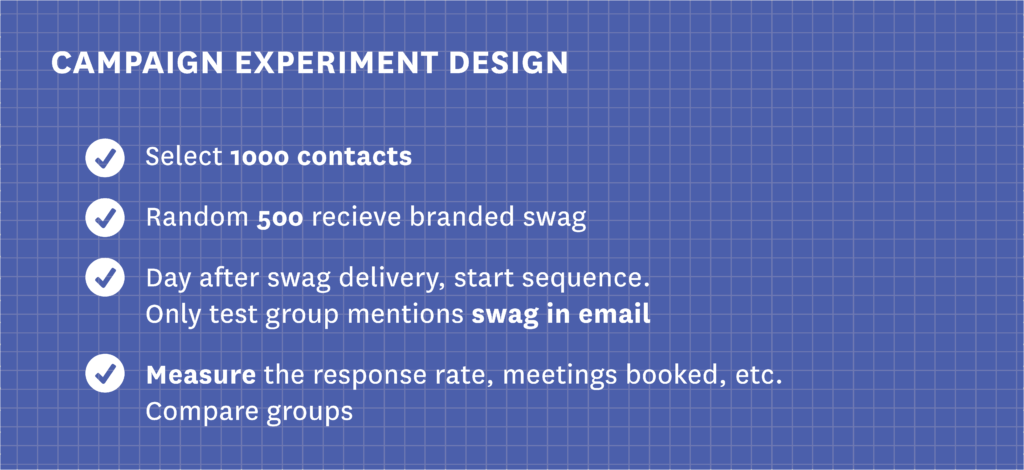
Boom. Experiment designed.
The Kit
Our team of swag experts here at Kotis designed a kit that was on brand and on message. Learn more about our kitting here.
You built a product to bring the world 10 years into the future. Why are you selling it with software from 10 years in the past?
The idea was to juxtapose new tech (the Qi wireless charger) with old tech (the flip-phone stress toy), along with two messaging cards. We then nested the items sequentially, with the complete kit telling a mini-marketing story. Outreach sent our team a list of 500 addresses, and we were off!
The Results
The Kotis warehouse team prepped and shipped the kits without breaking a sweat. The SDR team at Outreach executed the campaign flawlessly.
And I held my breath.
What if we didn’t see a lift? Did we just doom a booming part of our business?
Spoiler Alert: I probably wouldn’t be posting to our blog if that were true 🙂
The test showed that there was a 5% difference between the group that received swag and those who didn’t. This 26% increase in response would be huge for any business, but it doesn’t mean anything unless it was statistically significant and created value for the business, so we needed to dig deeper into the data…
And even the team here at Kotis was surprised by the results. The group who received the swag sequence not only responded more often, but each response was almost three times as likely to convert into a meeting and a 252% increase in sales accepted leads.
So, just to recap of the lifts that Outreach saw:
- A 26% increase in responses
- Triple the number of booked meetings
- A whopping 252% increase in sales accepted leads
Despite not being able to run complex experimentation in 1925, it turns out that Marcel Mauss was right in his theory of reciprocity. Outreach wasn’t done, they wanted to track the actual dollar value they received from the two groups. The ultimate takeaway?
Outreach saw a 2.42x increase in opportunity value, per prospect
So, I ask again. Does sending swag to prospects actually work?
The data says yes.
Looking to incorporate swag into your outbounding process? Don’t go sending wireless chargers to all of your clients on a whim. Outreach found success because they incorporated relevant swag as a cohesive part in the marketing strategy. I’ve been happy to help dozens of companies figure out what swag items make sense and how to test their effectiveness. Ready to go? We’d be happy to help!
